Asia , Taiwan , Tips & Inspo · April 25, 2022

Summer in Taiwan: 15 Awesome Things to do
Most travelers typically avoid visiting Taiwan during summer. Not that I blame them. Taiwan’s summers are intense, and the heat and humidity can be quite unpleasant – especially if you aren’t used to subtropical climates.
If you’re not used to sweltering weather, visiting Taiwan in summer is probably not for you. And to be honest, you’ll be better off coming during the cooler seasons, like autumn, winter or spring .
However, if you’re brave enough or don’t mind humid weather, there are actually loads of cool things to do during the summer season in Taiwan . And in this guide, I’ll share the best of them! I’ve also included lots of tips so that you know exactly what to expect!
Ready to find out what to do in Taiwan in summer? Read along to discover the best summer activities in Taiwan!

Disclaimer: This post probably contains affiliate links. When you make a purchase through one of these links, I might receive a tiny commission at no extra cost to you. As an Amazon Affiliate I earn from qualifying purchases.
Table of Contents
When is Summer in Taiwan
Taiwan’s summer runs through the months of June, July, and August , with July being the hottest month .
While the summer temperatures vary by month and location, you can expect hot and muggy temperatures all over Taiwan during the summer season. Southern Taiwan is usually a few degrees warmer than the north, and mountainous areas are a few degrees cooler than everywhere else!
However, adjusting to Taiwan’s summer heat is not the easiest of tasks. Average temperatures generally exceed 30 degrees Celsius, and the humidity often makes it feel much hotter. Throw in frequent downpours and torrential rain, and you might be wondering whether visiting Taiwan in summer is really for you.
While the weather can be intense, summer in Taiwan has its perks. Firstly, it’s a great time to be outdoors – think beaches, mountains, and waterfalls. Secondly, some of the country’s most famous festivals occur during the summer months. So despite the heat and rain, there’s actually lots to do!
Taiwan Weather in Summer: Quick Overview
- June is the first month of summer. The humidity really kicks in, and it begins to feel hot. In the north, especially in Taipei , you can expect average highs of 30°C and average lows in the mid-twenties. Coastal regions like the east coast and the southern corners often feel hotter and more humid, and you can expect temperatures in Kaohsiung and Tainan to reach up to 32°C during this month. It can rain a lot during this month, so plan a flexible itinerary .
- July is the hottest month of the year in Taiwan. Brace yourself for hot sticky weather, brief afternoon showers, and possibly a few typhoons! Daytime temperatures are warmer than in June, reaching up to 34°C in Taipei and falling to 24°C at night. You’ll need to stick to indoor attractions if you really hate hot weather, but otherwise, heading to high altitude areas is a great way to escape the heat.
- August is another hot and steamy month in Taiwan, with average lows of 28 °C and average highs around 32°C. Brief afternoon downpours and the occasional typhoon are not uncommon. Make sure you wear proper sunscreen (even if you’re just roaming the streets). Investing in a UV umbrella or light UV jacket is also a good idea.

Visiting Taiwan During Typhoon Season
On average, Taiwan generally receives 4 to 5 typhoons during the summer months, with most of them impacting the island’s north, east, and south coasts.
If you’re traveling in Taiwan when one is approaching, it’s best to stick to bigger cities or the western parts of the island like Hsinchu or Taichung .
Always keep an eye on the weather forecast and avoid visiting places like Keelung , Hualien , Taroko Gorge , and Taitung during or after heavy rain, as they are prone to landslides and rockfalls.
In extreme cases, a mandatory day off for some counties or areas will be scheduled (aka a typhoon day), and if this happens during your trip, make sure to buy enough food and water the day before and don’t go outside.
What to Wear in Summer
When it comes to packing for a Taiwan trip in summer, planning is key. While you can pretty much pack your usual summer clothes (t’s, shorts, dresses, skirts, etc.), it’s important to choose fabrics that won’t stick to your body. Make sure you pack light, breathable clothing made of linen, cotton, or rayon, which is ideal for hot and humid weather.
As for footwear, it’s perfectly acceptable to walk around in flip flops all day long, but pack a nice pair of sandals for the evenings.
If you plan to visit mountainous areas or tackle some of Taiwan’s famous hikes , bring along a few warmer items like a jacket and leggings. Temperatures are often much cooler in Taiwan’s high-altitude regions (even in summer), and you’ll definitely need something to keep you warm at night. Also, don’t forget your hiking boots and a sunhat!
Even if you’re just sticking to urban areas, it’s still a good idea to pack a scarf or a light sweater to carry around with you. These will come in handy when taking public transport, visiting department stores, or even just hanging out in a cafe. While it might be more than 30 degrees outside, the AC will be cranked up everywhere indoors!
Oh, and just a heads up, the Taiwanese are quite conservative in their beach attire. It’s not okay to walk around shirtless or in a bikini (unless you’re at the beach).
Other Essentials for a Taiwan Summer Trip
- Makeup: Make sure you pack waterproof makeup because chances are it won’t stay flawless the whole day. Investing in a good setting spray or powder (like this or this ) can also help. Having some oil control film or Innisfree no-sebum mineral powder handy will be a lifesaver if you have oily skin. I always keep a travel-sized bottle of Avene thermal spring water spray in my handbag to refresh my skin.
- Hair care: If you have frizzy hair, get ready for some challenges! The humidity is no joke in Taiwan, and you’ll definitely need some anti-frizz hair spray to keep your hair in check. I love this Kerastase anti-frizz spray !
- Umbrella/ Raincoat: Rain and even typhoons are not uncommon during the summer season, and you’ll definitely need a raincoat or umbrella . There’s no need to pack them, though. They’re cheap and widely sold in convenience stores.
- Other must-pack items include a swimsuit , sunglasses , reusable water bottle , bug spray , sun protection , and deodorant . While you can easily buy sunscreen or deodorant at Watsons, Poya, and even convenience stores, you should know that most brands in Taiwan (and Asia) contain whitening agents. If you don’t mind altering your skin color, go for it, but otherwise, pack your favorite brand from home. Make sure to pack reef-safe sunscreen ( like this ). That way you can do your part to protect the environment. In fact, if you plan on visiting Xiaoliuqiu (a protected coral reef) this is a MUST.
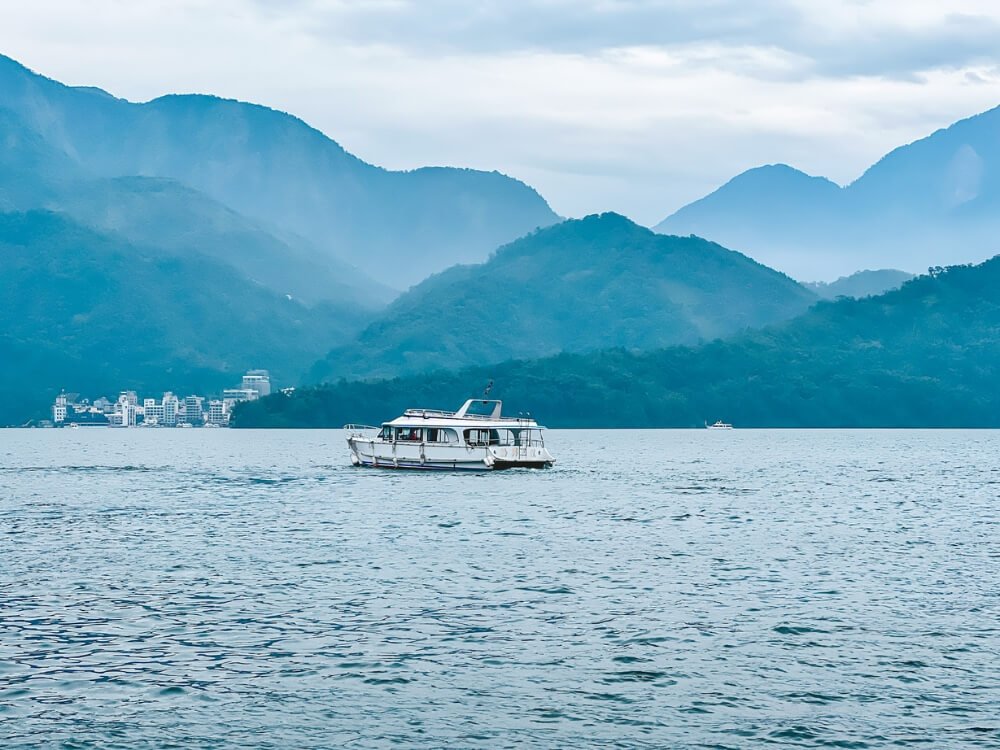
15 Fantastic Things to do in Taiwan in Summer
Swim with sea turtles at xiaoliuqiu.

Summer in Taiwan means beach time! And if you’re after a tropical escape, you should definitely visit Xiaoliuqiu .
Xiaoliuqiu is tiny coral island located just off the coast of southern Taiwan and one of the country’s best-kept secrets. Boasting beautiful beaches and colorful reefs brimming with fish and sea turtles, Xiaoliuqiu is a scuba diving, snorkeling, and free diving paradise.
Even if swimming is not for you, you can still spot sea turtles from the shore. And if you’re feeling adventurous, hop in a semi-submarine or kayak all around the island !
If you get sick of lounging on the beach or spotting sea turtles, explore the island’s interesting landmarks. Some of the unmissable places to visit include Vase Rock (a huge mushroom-like rock formation that juts out of the ocean), Beauty Cave and Black Dwarf Cave.
While you can easily visit the island on a day trip from Kaohsiung, the laidback vibes, excellent food, and great natural sites warrant an extended stay. Just keep an eye on the weather forecast and book a room with a free cancellation policy as typhoons or bad weather could impact your trip.
Go Island Hopping in Penghu

Located just 40 minutes by plane from Taichung City is another gem perfect for a summer getaway, Penghu .
Penghu is home to some of the best islands of Taiwan . The stunning archipelago consists of roughly 90 islands and islets. The most convenient area to base yourself is Magong , the main island. Here you’ll have easy access to all of the island’s best attractions and lots of shops and eateries around you. Some of the highlights include lounging on beautiful beaches, snorkeling or scuba diving in colorful reefs, trying out kitesurfing, visiting the Whale Cave , and snacking your way through the Old Street.
While there are lots to keep you busy on the main island, you’ll miss out if you don’t explore the rest of the archipelago. And the easiest way to do that is to join an island-hopping tour. There are many different tours to choose from, but I highly recommend visiting Qimei to see the famous Twin Heart Stone Weir or Jibei for its stunning 4 km sand tail.
Want to have an island all to yourself? Check out this cool camping experience !
Hit the Beaches in Kenting National Park

Home to some of the best beaches in Taiwan , Kenting National Park is the island’s premier summer vacay destination and a hotspot for beachgoers and sun lovers.
Spend your days lounging on white sandy beaches, and at night, snack your way through the bustling night market – one of the best night markets in Taiwan !
Of course, Kenting has loads of other must-do activities. Shore diving , kayaking, and eating insanely fresh seafood at the Houbihu Harbor are all musts. Head to Longpan Park and Maobitou Park for incredible views or visit Kenting’s most iconic landmark, Sailrock . The National Museum of Marine Biology & Aquarium is another great place to learn a little more about the underwater world.
If the crowds get too much for you, go surfing in Jialeshui . Alternatively, head to Baishawan Bay – a secluded bay with soft sand and turquoise water.
Since Kenting is one of the most popular places to visit in Taiwan in summer, it’s best to book accommodation at least 4-5 weeks in advance. (See my top picks for where to stay in Kenting here).
Go Hiking in the Mountains

Taiwan is blessed with abundant high-altitude peaks perfect for escaping the summer heat.
One of the most beautiful areas is Alishan , sitting at an elevation of 2663m. Famous for many things – incredible sunrises, high mountain tea, sacred trees, excellent hiking trails, and a historic railway built by the Japanese, Alishan is one of the top tourist attractions in Taiwan. To fully experience the magic of Alishan, spend at least two days exploring the park. While getting to Alishan can be a mission, it is definitely easier than accessing Sun Link Sea.
Sun Link Sea doesn’t ring a bell to most and is one of Taiwan’s best-hidden gems. The forest is filled with towering trees, a stunning waterfall, and great hiking trails. For those that want to get off the beaten track, Sun Link Sea is an excellent alternative. As mentioned, it’s not the easiest place to get to with public transport, so it’s best to book a guided tour.
Another less touristy site is Cingjing Farm – a beautiful farm featuring lush grasslands and tons of grazing sheep. Nearby you’ll find lots of easy trails. Make sure to pop by the Swiss Garden and join a stargazing and sunrise tour to Hehuanshan – one of the highest mountains in Taiwan, soaring more than 3000m.
Visit Taiwan’s Largest Lake
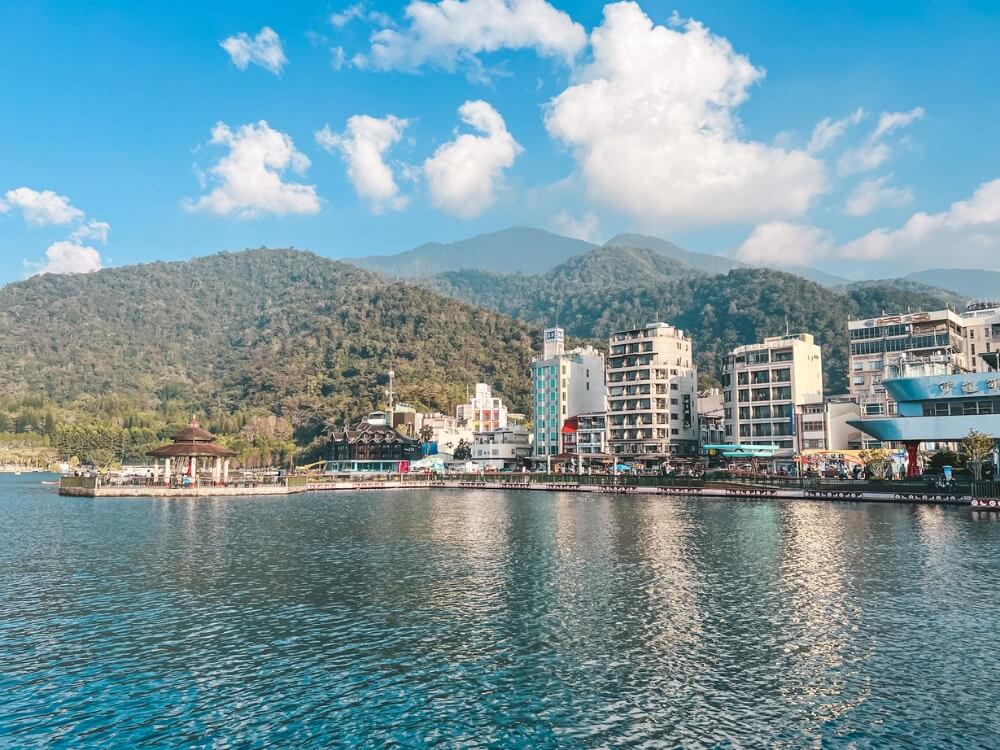
With an elevation of just over 700m, Sun Moon Lake enjoys pleasant temperatures year-round. It won’t be as cool as Alishan or Cingjing , but it will definitely be cooler than elsewhere.
As Taiwan’s largest lake, Sun Moon Lake boasts beautiful alpine scenery and tons of fun things to do. Some highlights include boating, visiting the gorgeous temples, climbing to the top of Ci’En Pagoda , cycling around the lake, and sampling aboriginal food at the Ita Thao Tourist Night Market .
Sun Moon Lake is one of the most popular places in Taiwan. Book accommodation at least a few weeks in advance and visit during the week for fewer crowds.
Cool Off in a Waterfall

Most visitors to Taiwan don’t know this, but there are dozens of dreamy waterfalls scattered around the island!
Although you probably won’t have time to check them all out, many of Taiwan’s most famous waterfalls , like Shifen , are located not too far from Taipei.
While you can’t swim at Shifen, there are a bunch of smaller falls along the historic Pingxi Railway Line, where you can take a relaxing dip sans the crowds. Don’t miss Wanggu and Lingjiao ! And if you really want to get off the tourist track, Qingshan Waterfall near Shimen is another cool swimming spot. Bring water and snacks as the hike to the waterfall is quite intense.
Watch the Dragon Boat Races

Dragon Boat Festival is one of Taiwan’s most famous traditional festivals, tracing back to the Japanese occupation.
During the festival, rowers from all over the country race along Taiwan’s rivers in huge dragon boats. Besides watching the races, it’s c ustomary to eat zongzi (sticky rice dumplings stuffed with different fillings and wrapped with bamboo leaves).
The dates for Dragon Boat Festival change every year (depending on the Chinese Lunar calendar), but it usually falls in June and is free to watch.
You can see the races all over Taiwan in major cities like Taipei, Tainan, Keelung, and Hsinchu. But the Taipei International Dragon Boat Festival is probably the most famous one. This year, the festival runs from June 3 to June 5 at Dajia Riverside Park.
Eat Mango Shaved Ice

If you’re craving a cold treat on a hot day, forget the ice cream and grab a huge bowl of shaved ice ( bào bīng) instead!
Mango shaved ice is the most popular dessert in Taiwan, and during summertime, it’s just the thing to cool you off. The dessert consists of crushed ice smothered in sweet syrup and topped with juicy chunks of fresh mango.
Mango isn’t the only flavor, and there are many variations and toppings to choose from, so you can really go wild! Some of the most popular ones included mixed fruit, chocolate and banana, milk, and passionfruit. Top it off with boba, red beans, peanuts, mung beans, grass jelly, or taro – you name it!
Other popular summer treats are douhua (tofu pudding) and ice cream milk tea. Also, read my guide on the best Taiwanese drinks !
Go River Tracing on the East Coast
Taiwan’s stunning east coast is a mecca for thrill-seekers, offering everything from paragliding and hiking in Taroko Gorge to river rafting, SUP , and gorgeous cycling routes for more adventurous travelers. However, one of the best outdoor activities here in summer is river tracing.
Both Yilan and Hualien are hot spots for river tracing. It’s easy to join a guided tour where you can scramble over rocks, cool off in dreamy pools, and fully immerse yourself in nature for the day.
Check out this fun river tracing experience at Jinyue Waterfall in Yilan or this river rafting day trip near Hualien if you prefer to stay above water!

Fly in a Hot-Air Balloon

Despite being one of the most remote places in Taiwan, Taitung is famous for its incredible coastlines, sprawling rice fields, and lush mountain scenery. With scenic spots like Mr. Brown Avenue , Sanxiantai , Jinzun , and the Green Island (Ludao) just a short ferry ride away, there are loads to keep you busy in this beautiful part of the island. And if you happen to visit during summer, Luye Highland is another spot to add to your must-see list.
Every year, the Taiwan International Hot Air Balloon Festival is held here, welcoming thousands of visitors from near and far. The festival has been up and running since 2012 and was listed as one of the world’s top hot air balloon festivals in 2018.
Even if you’re not brave enough to get in one, it’s still worth the trip because seeing all the colorful balloons filling the sky is quite a sight.
Balloons in all shapes and sizes can be seen at the event. Keep an eye out for the most Instagram-worthy ones – Hello Kitty, Sponge Bob, and OhBear!
The Taiwan International Balloon Festival runs from June 30 to August 28 in 2023.
Experience the Keelung Mid-Summer Ghost Festival

Ghost Festival, which takes place throughout the 7th month of the lunar calendar (usually in August) , is one of the world’s most unique festivals.
During Ghost Month, locals believe the spirits of the dead return, and there’s a whole list of things one can (and cannot) do to appease the ghosts. Getting married, moving into a new house, and walking around at night are taboo!
Many temples across Taiwan hold special events and performances during this period, but the most impressive festivity occurs in Keelung City . A lot goes on during the month-long festival, so best to time your visit. On the first 12 days, you can see the lanterns lit up at Zhupu Altar , while a water lantern parade takes place on the 14th day by the shore.
The official dates for this year’s festival have not been set yet.
Check out the Fulong Sand Sculpting Art Festival

Taiwan’s north coast doesn’t get as much hype as the southern shores, but there are actually several lovely beaches located not too far from Taipei, perfect for a quick day trip . One of the most famous beach spots is Fulong, located just 1.5 hours east of Taipei.
Fulong Beach boasts soft golden sand and warm water. And as a result, it’s a popular hangout spot during summer in Taiwan. Besides perfect swimming conditions and a whole host of fun water activities like kayaking and windsurfing, there is another reason to visit. And that’s to see some really impressive sand sculptures right on the beach. The Fulong International Sand Sculpting Art Festival is quite a big deal with artists coming from all over. It usually kicks off in late spring and runs through summer. This year the festival runs from May 26 to October 10 .
Go Whale & Dolphin Watching in Yilan

Another amazing thing to do in Taiwan in summer is whale and dolphin watching. And the best place to do that is at Turtle Island – a tiny island floating in the Pacific Ocean roughly 10km off the coast of Toucheng in Yilan County .
There are about ten species of whales and dolphins in these parts, thanks to the warm currents that attract migratory marine life here. The most common species are bottlenose dolphins, killer whales, and false killer whales. May to October are prime months to spot whales and dolphins frolicking out at sea, and a boat trip will allow you the best vantage point to admire these animals playing in the water. Moreover, you’ll have a front-row seat to the amazing views over the island and Taiwan’s scenic northeast coast!
If you have time, it’s definitely worth snagging a combo ticket that includes visiting the island and spotting whales and dolphins near its shores. The island has a long and interesting history. About 700 locals once inhabited it. Later it turned into a restricted military zone, and today it’s a protected ecological reserve allowing only a small number of visitors a day.
You’ll need a permit to visit the island (applied 20 days beforehand ), so make sure to book a tour in advance as it fills up quickly during the summer months. Klook has an array of day tour packages catering to all budgets and interests.
Soak in a Cold Spring
Taiwan might be famous for its steamy hot springs, but it’s also home to two of the world’s rarest cold springs – perfect for a refreshing dip on a hot summer’s day.
Su’ao Cold Spring Park in Yilan County is probably the most famous and accessible cold spring in Taiwan. Located on the east coast in Su’ao Township , it boasts clear water rich in calcium bicarbonate with pleasant temperatures of 21℃ all year round. The park features indoor and outdoor pools, and it’s the perfect spot for anyone looking for a more authentic local experience. Don’t forget your swimming cap! It gets crowded quickly during the warmer months, so consider checking into the swanky 5-star RSL Cold Spring Resort if crowds aren’t for you.
Beipu Cold Spring in Beipu Township is somewhat of a hidden gem, making it perfect for those who want to get off the main tourist track. Hidden in the hills, this small town is a popular day trip from Hsinchu for foodies, but not many people know that it’s also home to a cold spring. The water of Beipu Cold Spring is not as clear as Su’ao Cold Spring, as it contains both carbonic acid and sulfur. But with average water temperatures ranging from 10 to 15℃, it’s the perfect spot to cool off and spend time in nature. The best part? You don’t need to soak in one of the dedicated spring pools; do as the locals do and enjoy a natural spa in the huge waterfall pool!
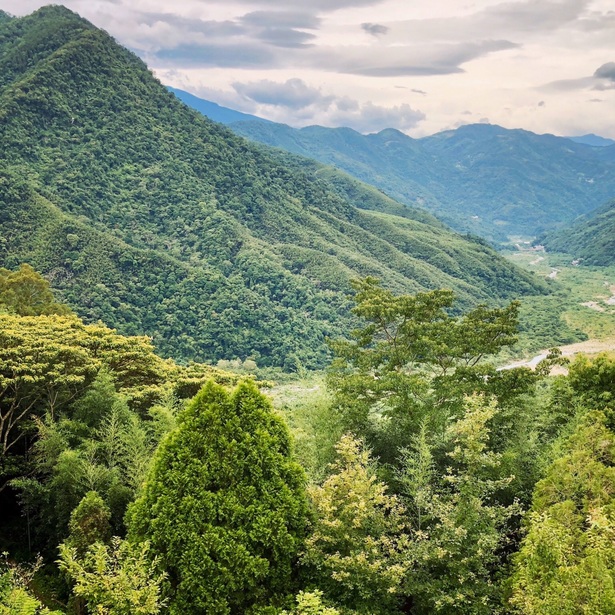
Visit the Theme Parks
If you’re visiting Taiwan with kids or simply enjoy going to theme parks, you’re in for a treat. There are loads of theme parks scattered around Taiwan, and many of them have huge pools with all kinds of fun water slides.
Leofoo Village Theme Park near Hsinchu is among the best, but other noteworthy ones include Farglory Ocean Park in Hualien and Janfusun Fancy World in Yunlin.
Should You Visit Taiwan in Summer?
If you don’t mind the high temperatures and mugginess, summer is a great season to visit Taiwan. Whether you want to relax at the beaches, swim in the waterfalls, chill in the cold springs, explore the high altitude regions, or join one of the many cultural festivals, visiting Taiwan during summer will be an adventure in itself!
Now that you know everything about Taiwan’s summer, all that’s left is to grab your swimsuit, fave shades, and sunscreen!
There you have it – the best things to do in Taiwan in summer. Did your favorite Taiwan summer activities make my list? If not, let me know in the comments below so that I can try them out this summer in Taiwan!
If you enjoyed this Taiwan summer guide, please pin it to your favorite travel board!

join the club
You’ll also love.

June 19, 2022 at
nice comprehensive guide. thanks for writing all this.
didn’t know about: Xiaoliuqiu.
Maybe I’ll check that out. Wasn’t on planning on spending a night in Kaohsiung (picking rental car to go to Kenting)…but maybe I might to visit this Lambai Island.
Shifen waterfall near Taipei looks like a possibility as well.
June 27, 2022 at
Thanks! Xiaoliuqiu is great and definitely worth a visit. It’s doable on a day trip from Kaohsiung (with an early start), but I’d suggest staying at least two days to really enjoy the island vibes.
August 6, 2022 at
Wow, Awesome images. I will visit in the summer vacation. It is a very beautiful place. Thanks for sharing useful information.
Leave a Reply Cancel reply
Your email address will not be published. Required fields are marked *
Currently you have JavaScript disabled. In order to post comments, please make sure JavaScript and Cookies are enabled, and reload the page. Click here for instructions on how to enable JavaScript in your browser.

19 Incredible Landmarks in Turkey You Must Visit
Trending now.

Follow @ Hoponworld

Travel guides
- Travel Guides
- Itineraries
- City Guides
- Beach Guides
- Outdoor Guides
- Tips & Inspo
Get exclusive access to detailed travel guides & tips!
Work with me
- Privacy Policy
Copyright © 2024 Hoponworld · Theme by 17th Avenue
updated on April 29, 2023

- Privacy Overview
- Strictly Necessary Cookies
This website uses cookies so that we can provide you with the best user experience possible. Cookie information is stored in your browser and performs functions such as recognising you when you return to our website and helping our team to understand which sections of the website you find most interesting and useful.
Strictly Necessary Cookie should be enabled at all times so that we can save your preferences for cookie settings.
If you disable this cookie, we will not be able to save your preferences. This means that every time you visit this website you will need to enable or disable cookies again.
Nomadic Matt's Travel Site
Travel Better, Cheaper, Longer
Taiwan Travel Guide
Last Updated: August 23, 2023
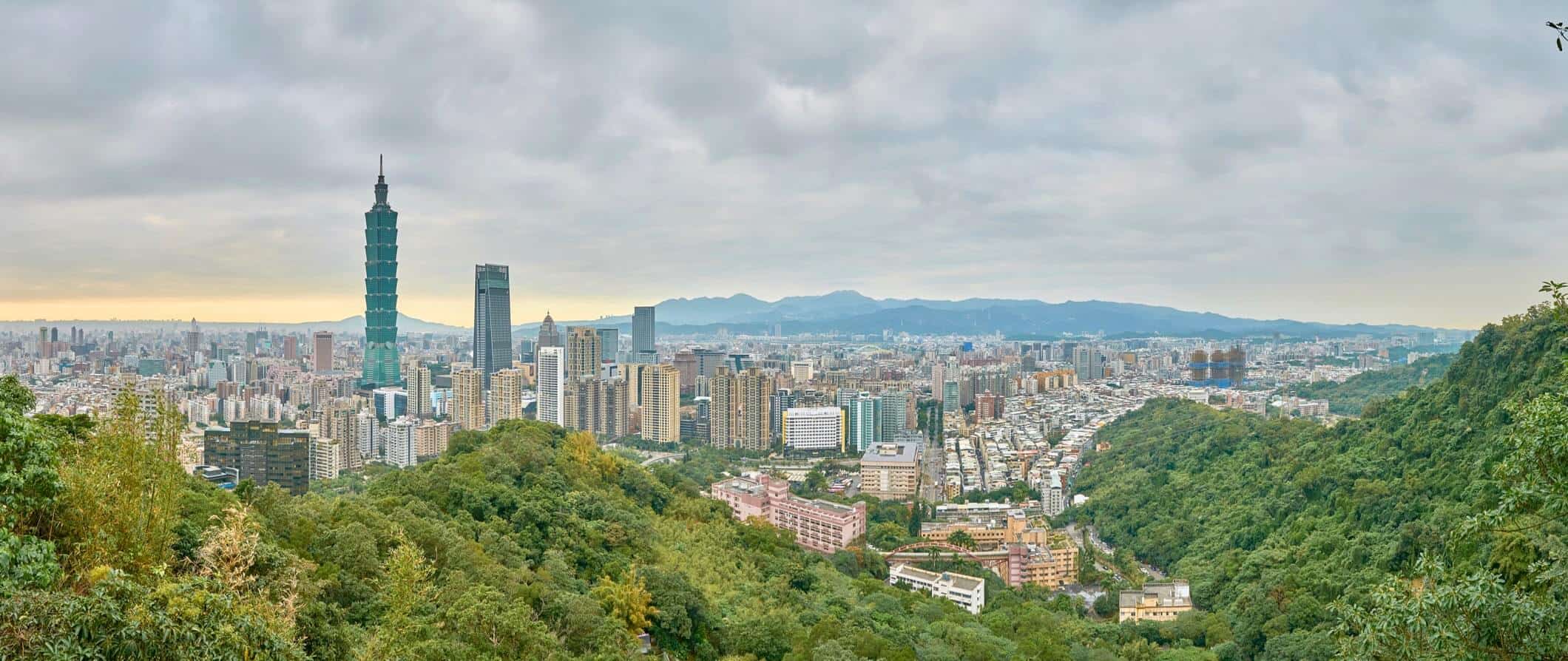
Taiwan is one of the most underrated budget destinations in Asia. It offers a beautiful — and super affordable — mix of east and west, blending the culture and cuisines of mainland China , Japan , and Hong Kong . And all with a fraction of the crowds.
I don’t think enough people visit Taiwan. I spent time here as an English teacher and have revisited the country since. There is a lot to do there: hiking the mountains, eating at night markets, drinking at tea houses, lounging on beaches, and enjoying the country’s amazing nightlife. No matter your interests, Taiwan won’t disappoint — especially if you’re a foodie. The food here is some of the best in the region!
This travel guide to Taiwan can help you plan your trip, save money, and make the most of your visit to this underrated island!
Table of Contents
- Things to See and Do
- Typical Costs
- Suggested Budget
- Money-Saving Tips
- Where to Stay
- How to Get Around
- How to Stay Safe
- Best Places to Book Your Trip
- Related Blogs on Taiwan
Top 5 Things to See and Do in Taiwan
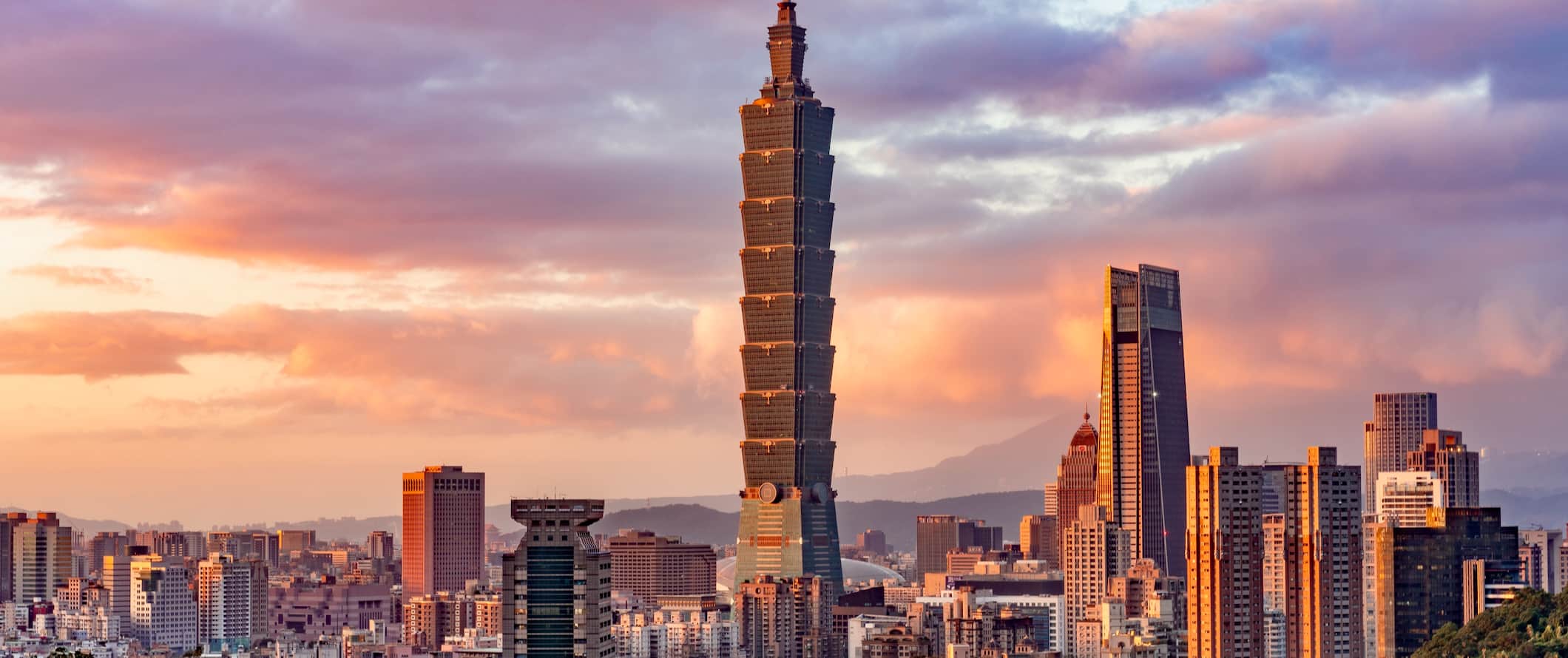
1. Visit Jiufen
Jiufen is one of Taiwan’s most popular tourist destinations. Founded during the Qing dynasty, Jiufen boomed as a gold mining town in the 1890s. Here, you can find all kinds of historic tea houses built into the hillside. The center of the city and its historic streets and buildings are all preserved and look as they did 100 years ago. Try the snacks on offer, visit one of the many tea houses, and do some hiking if you have time. It’s a pretty easy day trip from Taipei but you should aim to come early to beat the crowds. If your itinerary allows for it, consider spending a night here so you can experience it without the daytripper crowds.
2. Soak in the Hot Springs
Especially fun to visit in winter, the Beitou Hot Springs are just 30 minutes from downtown Taipei and you can get there on the MRT (you need to go to Xinbeitou station). There are lots of resorts, spas, and inns in the area which, with a vast array of wildlife and fauna, really feel like you’ve traveled much further afield. Visit the Hot Springs Museum, the Xinbeitou Historic Station, and Thermal Valley (a sulfurous lake nearby that has walking trails) while you’re here. There are also some really cool temples here, including the tiny wooden Puji Temple.
3. Explore Taroko National Park
Located southeast of Taipei, this national park offers visitors a chance to hike through beautiful mountainous terrain and gorges. It spans almost 250,000 acres and is one of only nine national parks in Taiwan. With loads of cliffs and waterfalls to explore, it’s a really stunning place to visit. Head to the Zhuilu Suspension Bridge for some amazing views and to the Eternal Spring Shrine or to the Changing Temple for a bit of culture and history. Some suggested walking trails include Shakadang, Changchun, Swallow Grotto, and Lushui-Heliu. Entrance to the park is free.
4. Visit Taipei 101
Formerly known as Taipei World Trade Center, this was the tallest building in the world from when it opened in 2004 until 2010 (when the Burj Khalifa took its place). Standing 508-meters (1,667-feet) tall, it towers over Taipei. There is an observation platform on the 89th floor (at 382-meters high). You can also go up to the 91st floor for an outdoor platform. If you’re needing some retail therapy (and can fit anything else in your bags), there’s a shopping mall at the bottom.
5. Explore the night markets
Taipei is home to dozens of night markets. Shulin Night Market, Raohe Night Market, Tonghua Night Market, Snake Alley, and Ningxia Night Market are all worth spending some time exploring but there are over 30 to choose from in Taipei alone. The food at these markets is the best (and cheapest) in the city. So much so that a few have even been given Michelin Bib Gourmands!
Other Things to See and Do in Taiwan
1. visit taipei.
Taipei is the epicenter of the country. Here there are sprawling food markets, a wild nightlife, spacious parks, and all kinds of interesting and quirky museums. Plus, the nearby mountains are full of easy and accessible hikes. Be sure to take a free walking tour, visit the National Palace Museum, see some temples (especially Confucius Temple and Bao-an Temple), and visit the Chiang Kai-shek Memorial Hall. I can’t sing the praises of this city highly enough (I lived here when I taught English). For even more on the city, here’s my full list of things to do in Taipei!
2. Go island hopping
The Pescadores Islands (known locally as Penghu) is an archipelago off the west coast between Taiwan and China. There are 90 islands in the region, perfect for exploring on a day trip. You can take a boat tour that visits several islands in the region, allowing you to snorkel, see sea turtles, and wander through traditional aboriginal villages and explore temples galore. Expect to pay around 1,500 TWD for a one-day multi-island tour.
3. See Tianhou Temple
Located in Taipei, this is one of the oldest temples in the city. Tianhou (also known as Mazu Temple, after the deity Mazu, goddess of the sea) was built in 1746 and is one of three major temples in Taiwan from the Qing period. It’s a beautiful Taoist temple filled with mythological creatures, incense, lucky goldfish, and people paying respect to the gods. Admission is free.
4. Hit the beach
The beaches of Kenting on the southern tip of the island are the best place to enjoy the summer weather. White Sand Bay is the most popular beach and a great place to swim, snorkel, and soak up the sun. Other beaches worth checking out are Fulong Beach, South Bay, Dawan Beach, Laomei Beach, and Little Bali Bay.
5. See the Lantern Festival
The famous Taiwan Lantern Festival is held every February/March and involves releasing hundreds of paper lanterns into the sky. There’s also a huge parade with floats, most of which relate to the year’s animal (from the Chinese zodiac). Thousands of people gather to watch and take part. To ensure the environment is protected, make sure you use a biodegradable eco-friendly lantern.
6. Hike Jade Mountain
Jade Mountain (also known as Yushan), the highest peak in Taiwan and East Asia with its peak at almost 4,000 meters above sea level, is a popular hike. If you don’t hike, there’s a special train that takes you to the peak before dawn (150 TWD). Most people do the hike over a couple of days, however, you can do it in a single day if you wake up super early and hike but that will mean over 10 hours of hiking. You’ll also need permits in advance so talk to your hotel or hostel staff as they can help you arrange those.
7. Tour Fo Guang Shan Monastery
This Zen monastery in Kaohsiung is a massive complex with eight towering pagodas that flank the monastery’s Big Buddha (which, at 36-meters tall, is the highest seated bronze Buddha in the world). Built in 1967 and spanning over 74 acres, the complex has a spacious outdoor walkway lined by manicured gardens as well as the huge pagodas. There are also over 14,000 statues of the Buddha here. Admission is free (donations are welcome) and there’s a delicious vegetarian restaurant inside with a huge buffet.
8. Visit the National Palace Museum
This museum, located in Taipei, has a collection of over 70,000 artifacts from Imperial China. Most of the collection was brought to Taiwan during the Chinese Civil War (1929–1947). In addition to their permanent exhibits, there are also rotating exhibits throughout the year as well as a section for children. There are free daily tours in English as well as a detailed audio guide if you’d rather explore yourself. Admission is 350 TWD.
9. See the Chiang Kai-shek Memorial Hall
Officially known as Liberty Square, this national monument was built in 1976 in honor of Chiang Kai-shek, former president of the Republic of China. He ruled mainland China from 1928 to 1949, and then in Taiwan from 1949 until his death in 1975. The memorial also houses a library and a museum that documents Chiang Kai-shek’s life and career. Tours in English are available daily but must be booked in advance. Admission is free.
10. Take a cooking class
Taiwan is a foodie’s dream and I always overindulge while I’m here. Noodle soups, incredible rice dishes, amazing buns, dumplings, and scallion pancakes are just some of the tasty local offerings. While cooking classes here are a little pricey, I think they are worth it if you really want to learn about the food. The cooking skills (and recipes) make a great souvenir to take home too. Expect to pay around 2,000 TWD for a class.
11. Go hiking
Taipei has plenty of hiking trails just outside town that are easily accessible. There are easy, moderate, and challenging trails, as well as both short and full-day hikes. Some suggested trails to check out are Xiangshan (easy, 45minutes), Bitoujiao (moderate, 2-3 hours), Jinmianshan (easy, 1.5 hours), Huang Didian (hard, 5 hours), and Pingxi Crag (moderate, 2-3 hours).
12. Visit Orchid Island
Located 64 kilometers (40 miles) off the southeastern coast, this lush, volcanic island offers hiking, swimming, diving, and amazing hot springs. There are also underground houses here, built to avoid the numerous typhoons that ravage the region. The island is home to only 5,000 people too. Visit the Lanyu Flying Fish Cultural Museum to learn about local culture. Flights from Taipei take just over an hour and cost around 4,500 TWD.
13. Hike Wuling Peak
For more hiking, head to Wuling Peak on Hehuan Mountain. Located in Central Taiwan, it stands 3,275 meters (10,744 feet) above sea level and makes for a good day trip for anyone looking to spend more time outdoors. The peak here is so high you can actually look down into a sea of clouds below. A round-trip hike takes around 2-3 hours. Be sure to bring a raincoat as well as water and sunscreen.
14. Explore the Northern Coastline
Head to the coast to see the otherworldly lunar-like landscapes at Yehliu Geopark. There are all kinds of unique rock formations here, including one that looks like Queen Elizabeth (which took over 4,000 years to form). It’s a popular tourist attraction so try to get here early to beat the crowds. Admission is 120 TWD.
15. Visit Tainan
This is Taiwan’s oldest urban area, established by the Dutch East India Company in 1624. Located in the south near Kaohsiung, Tainan was the capital of Taiwan from 1683-1887. There are all kinds of temples to visit here (don’t miss the Confucius Temple), several night markets, a historic old town, and a massive department store reminiscent of the Ginza district in Tokyo. There is also a nearby mangrove and wildlife reserve (it’s part of Taijiang National Park) just 30 minutes away by car.
16. Explore Taichung
Taichung is located in west-central Taiwan and is the second-largest city in the country. Spend some time walking the Parkway (a corridor of greenery perfect for walking and exploring), visit the Feng Chia Night Market, see the botanical garden, and explore the massive National Museum of Natural Science. If you’re a history buff, don’t miss the Taichung Folklore Park which is home to several traditional Taiwanese homes and buildings that showcase the country’s history.
Taiwan Travel Costs
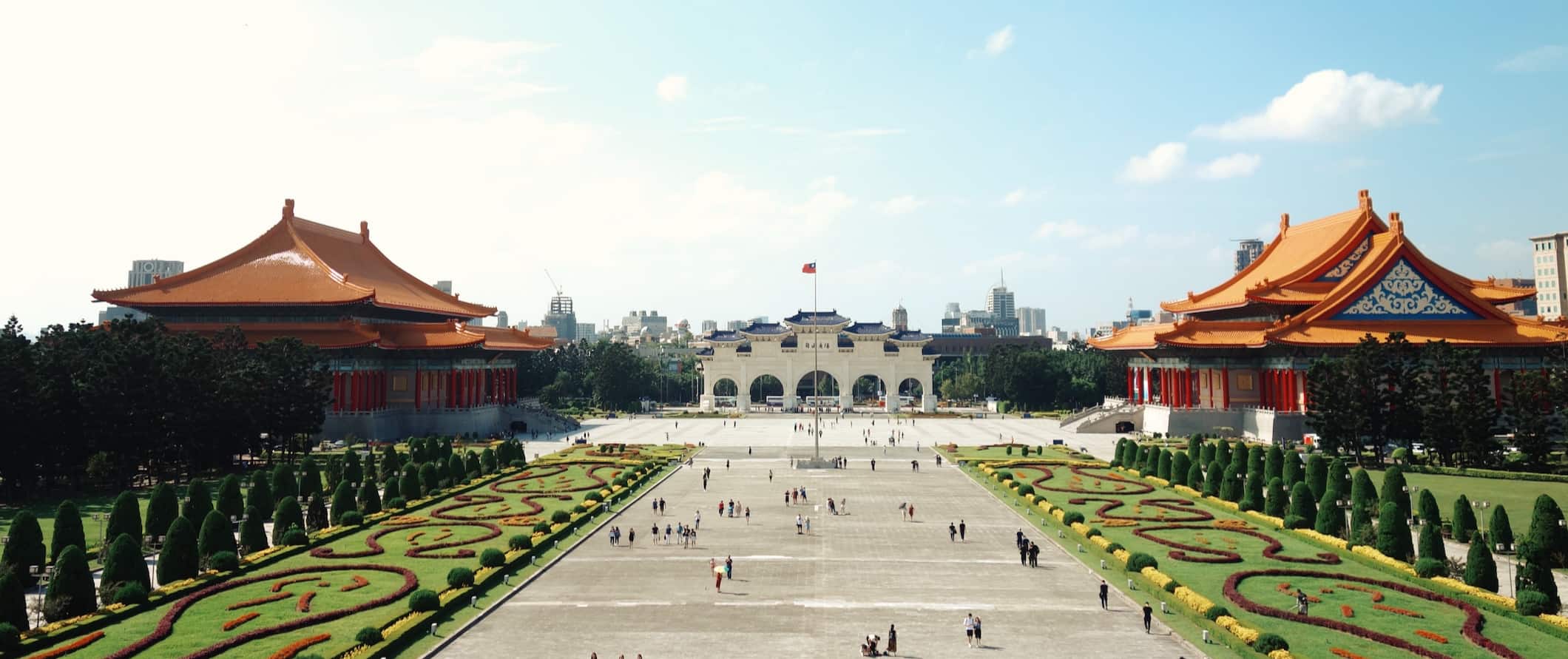
Accommodation – Hostels dorms with 6-8-bed cost between 300-700 TWD per night. A private room costs anything from 1,000-3,000 TWD. Every place has free Wi-Fi and most hostels have self-catering facilities and include free breakfast.
Budget hotels start at 950 TWD for a small room with a double bed. Most rooms have AC but free breakfast is rarely included.
Airbnb is available around the country with private rooms starting at 650 TWD per night, though they average at least triple that. For an entire home or apartment, expect to pay at least 1,000 TWD (though prices average triple that). Book early to find the best deals.
Wild camping is generally prohibited but there are lots of campgrounds around the country. Expect to pay at least 300 TWD for a basic plot without electricity.
Food – Taiwanese cuisine is a mix of influences, from Chinese, Japanese (owing to the Japanese occupation), and Western traditions. Seafood is a huge staple, with squid, crab, and shellfish being especially popular. Braised pork, oyster omelets, fish balls, and stinky tofu are just some of the many dishes you can find around the country.
Food at the outdoor markets costs around 35-100 TWD depending on what you get. An order of dumplings costs around 100 TWD. Noodle soup or a basic rice dish costs around 70 TWD.
A meal at a simple sit-down restaurant serving local cuisine costs around 120 TWD.
Western food costs between 100-400 TWD. Burgers (often made with pork rather than beef) are on the lower end while pizza is on the higher end.
Fast food is pretty popular here. MosBurger (the best fast food joint in the country) costs around 165 TWD for a combo meal. Sushi, one of the most popular food options, costs 300–450 TWD for a meal. (Plates at the conveyor belt places are around 30 TWD each.
A three-course meal at a mid-range restaurant costs 500 TWD. A beer or a latte/cappuccino costs around 80 TWD while a bottle of water costs 21 TWD.
For a week’s worth of groceries including staples like rice, seasonal produce, and seafood, expect to pay 2,000-2,500 TWD.
Backpacking Taiwan Suggested Budgets
On a backpacker budget of 1,050 TWD per day, you can stay in a hostel dorm, eat some street food, cook some meals, limit your drinking, do free walking tours, and take public transportation to get around.
On a mid-range budget of 2,700 TWD per day, you can stay in an Airbnb, enjoy some Western food, drink more, take the bus between cities, and do more paid activities like museum visits and cooking classes.
On a “luxury” budget of 5,600 TWD per day, you can stay in a hotel, rent a car or take the train between cities, take guided tours to the islands, go diving, eat out at any restaurant you want, and visit as many attractions as you want. This is just the ground floor for luxury though. The sky is the limit!
You can use the chart below to get some idea of how much you need to budget daily, depending on your travel style. Keep in mind these are daily averages — some days you’ll spend more, some days you’ll spend less (you might spend less every day). We just want to give you a general idea of how to make your budget. Prices are in TWD.
Taiwan Travel Guide: Money-Saving Tips
Taiwan is an affordable country so you don’t need to worry about breaking the bank here. As long as you stick to local cuisine and limit your drinking, it’s hard to spend a lot of money. Here are a few tips to keep your spending in check:
- Skip the high-speed trains – The high-speed trains in Taiwan are super convenient but expensive. Stick to the slower local trains, which are about 50% cheaper than the HSR.
- Eat at the food markets – The food in Taiwan is world-class and the best food is at the night markets that dot all the cities.
- Avoid Western food – Western food is twice the price of Taiwanese food. It’s also not amazing so stick to the local cuisine to save money.
- Take free walking tours – Taipei, Jiufen, Tainan, and Kaohsiung all have free walking tours from companies like Like It Formosa . They’re my favorite walking tour company in Taiwan. Their tours are fun, informative, and free. Just remember to tip your guide at the end.
- Bring a reusable water bottle – The tap water here needs to be boiled before drinking so bring a bottle with a filter to ensure you have safe drinking water. LifeStraw makes a reusable bottle with a built-in filter to you can be sure you water is safe and clean.
Where to Stay in Taiwan
Taiwan has plenty of fun and affordable hostels. Here are my suggested places to stay:
- Formosa 101 (Taipei)
- Star Hostel (Taipei)
- T-Life Hostel (Taichung)
- Fuqi Hostel-Heping (Tainan)
How to Get Around Taiwan

Public transportation – All of the major cities have public transportation that is fast, safe, and reliable. Fares start at 15 TWD and go up depending on how far you travel. Taipei and Kaohsiung both have metro systems with tickets costing between 20-65 TWD. A single-day pass in Taipei costs 150 TWD, while a day pass in Kaohsiung costs 180 TWD.
Bus – The bus is the cheapest way to get around Taiwan. Intercity coach buses are available to all major cities around Taiwan, including Taipei, Taichung, Tainan, and Kaohsiung. They are comfortable, modern, safe, and have air conditioning (too much, usually, so bring a sweater). The two main intercity bus companies are Ubus and Kuo-Kuang Bus. For fares and timetable information, visit taiwanbus.tw.
A bus from Taipei to Kaohsiung takes around five hours and costs 600-1,000 TWD while the three-hour trip from Taipei to Taichung costs as little as 90 TWD.
Train – The high-speed trains (HSR) in Taiwan are super convenient, however, they only go down the west side of the island and are very expensive. For example, a ticket from Taipei to Kaohsiung costs around 1,500 TWD.
The “local” trains are much more affordable, often 50% cheaper. The trip from Taipei to Kaohsiung on a local train costs just 845 TWD. It’s also just 515-800 TWD from Taipei to Tainan and 675-800 TWD from Taipei to Taichung via the local train.
The HSR line doesn’t pass through city centers, so you either need to take a bus or train from the HSR station, which also costs more time and money.
Flying – Domestic flights are relatively affordable, however, they are much more expensive than the bus or train. The two-hour flight from Taipei to Kaohsiung costs more than 4,000 TWD.
Flights to neighboring Hong Kong start at 3,600 TWD and take five hours (they can be as much as 6,500 TWD so it’s best if you’re flexible with your dates) while flights to Singapore take five hours and cost around 3,500 TWD.
Car Rental – Driving here is safe, however, car rentals here are expensive, usually costing at least 1,500 TWD per day. You need an International Driving Permit (IDP) to rent a vehicle here. For the best car rental prices, use Discover Cars .
When to Go to Taiwan
July and August are the hottest months in the country and the most popular time to visit. Temperatures often hit 35°C (95°F) and prices are a little higher as well. It’s a great time to visit if you want to hit the beach.
The shoulder months of May-June and September-October offer the best balance of crowds, weather, and price. It’s still warm enough to enjoy the outdoors and do some hiking without getting rained out.
Winters in Taiwan are a little rainy but still warm, with daily highs around 18–20°C (65-68°F). Prices are a bit lower and it’s the perfect time to visit the relaxing (and relatively empty) hot springs. Expect big crowds in Taipei in December-January for the Chinese New Year.
How to Stay Safe in Taiwan
Taiwan is very safe, consistently ranking well on the Global Peace Index as one of the safest destinations in the world. Crimes against tourists are super rare. Overall, you are unlikely to encounter any problems in Taiwan and I never felt unsafe in the country. There are no scams here, everyone is super nice, and crime is super rare. It’s a great place to visit. My friends who live here also never have problems.
Solo female travelers should feel safe here for all those reasons. However, the standard precautions you take anywhere apply here too (never leave your drink unattended at the bar, never walk home alone intoxicated, etc.). There are numerous solo female travel blogs that can provide more specific tips.
Earthquakes are common in the region so make sure you’re familiar with your accommodation’s emergency exits. Between July and November, typhoons can occur so make sure you stay up to date on the latest weather — especially if you’re near the coast or out hiking.
110 is the emergency number for police while 119 is the emergency number for fire and ambulance.
The most important piece of advice I can offer is to purchase good travel insurance. Travel insurance protects you against illness, injury, theft, and cancellations. It’s comprehensive protection in case anything goes wrong. I never go on a trip without it as I’ve had to use it many times in the past. You can use the widget below to find the policy right for you:
Taiwan Travel Guide: The Best Booking Resources
These are my favorite companies to use when I travel. They consistently have the best deals, offer world-class customer service and great value, and overall, are better than their competitors. They are the companies I use the most and are always the starting point in my search for travel deals.
- Skyscanner – Skyscanner is my favorite flight search engine. They search small websites and budget airlines that larger search sites tend to miss. They are hands down the number one place to start.
- Hostelworld – This is the best hostel accommodation site out there with the largest inventory, best search interface, and widest availability.
- Booking.com – The best all around booking site that constantly provides the cheapest and lowest rates. They have the widest selection of budget accommodation. In all my tests, they’ve always had the cheapest rates out of all the booking websites.
- Get Your Guide – Get Your Guide is a huge online marketplace for tours and excursions. They have tons of tour options available in cities all around the world, including everything from cooking classes, walking tours, street art lessons, and more!
- SafetyWing – Safety Wing offers convenient and affordable plans tailored to digital nomads and long-term travelers. They have cheap monthly plans, great customer service, and an easy-to-use claims process that makes it perfect for those on the road.
- LifeStraw – My go-to company for reusable water bottles with built-in filters so you can ensure your drinking water is always clean and safe.
- Unbound Merino – They make lightweight, durable, easy-to-clean travel clothing.
- Top Travel Credit Cards – Points are the best way to cut down travel expenses. Here’s my favorite point earning credit cards so you can get free travel!
Taiwan Travel Guide: Related Articles
Want more info? Check out all the articles I’ve written on China travel and continue planning your trip:
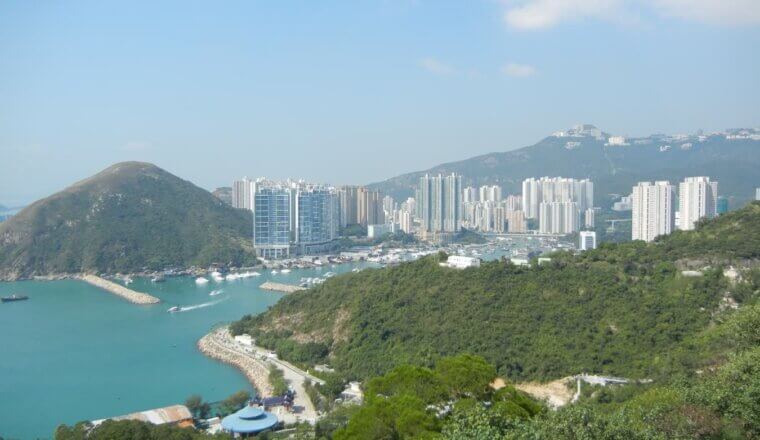
The 23 Best Things to Do in Hong Kong
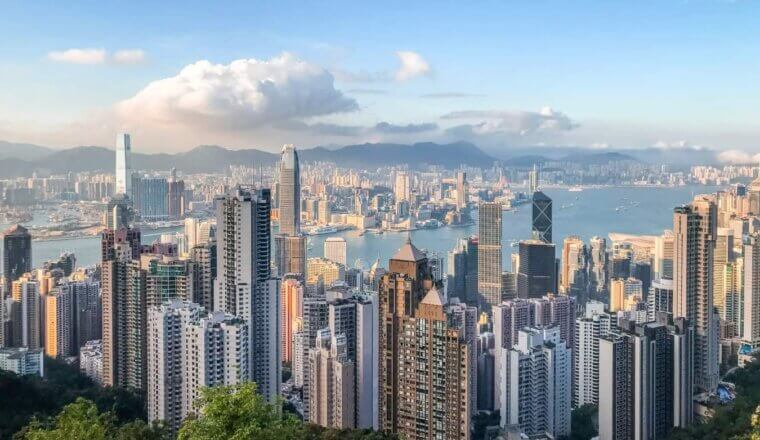
Hong Kong Itinerary: What to Do in 4 (or More) Days
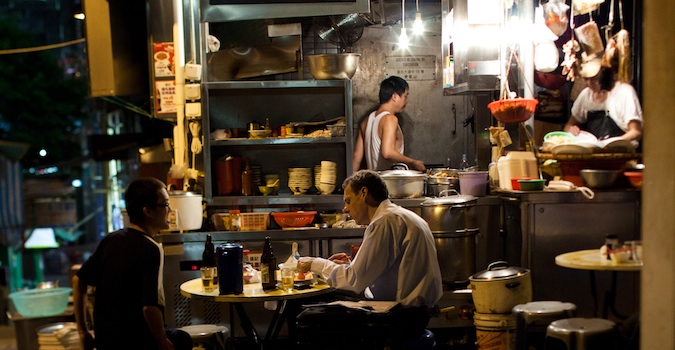
My Favorite Restaurants in Hong Kong
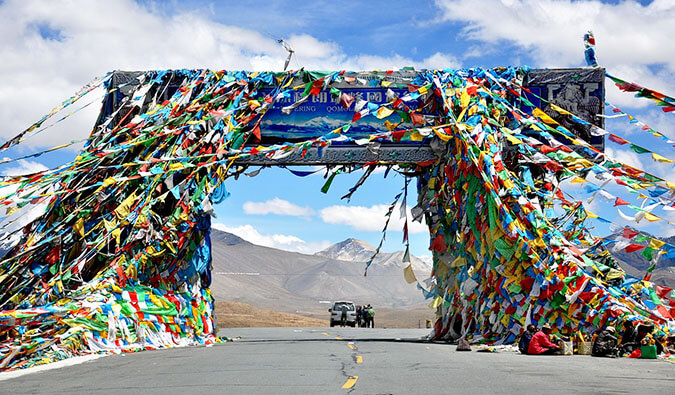
What Hitchhiking Solo as a Female in China Taught Me
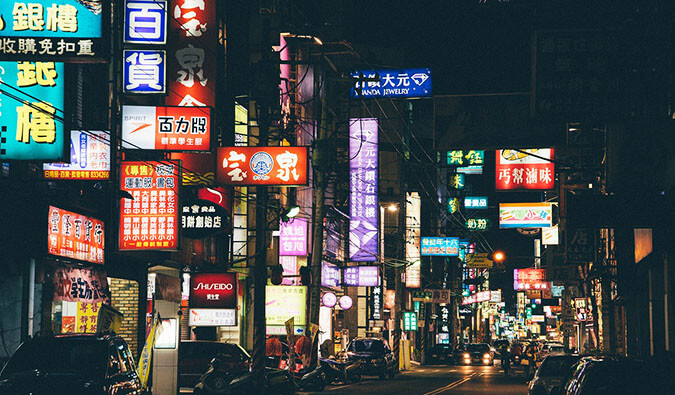
7 Lessons Learned from 3 Months in China
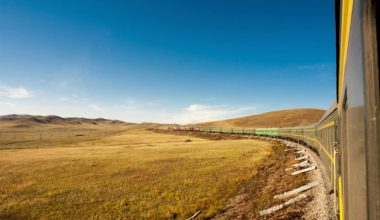
How to Travel the Trans-Siberian Railway
Get my best stuff sent straight to you, pin it on pinterest.
- Where To Stay
- Transportation
- Booking Resources
- Related Blogs
10 of the best places to visit in Taiwan

Oct 23, 2023 • 6 min read
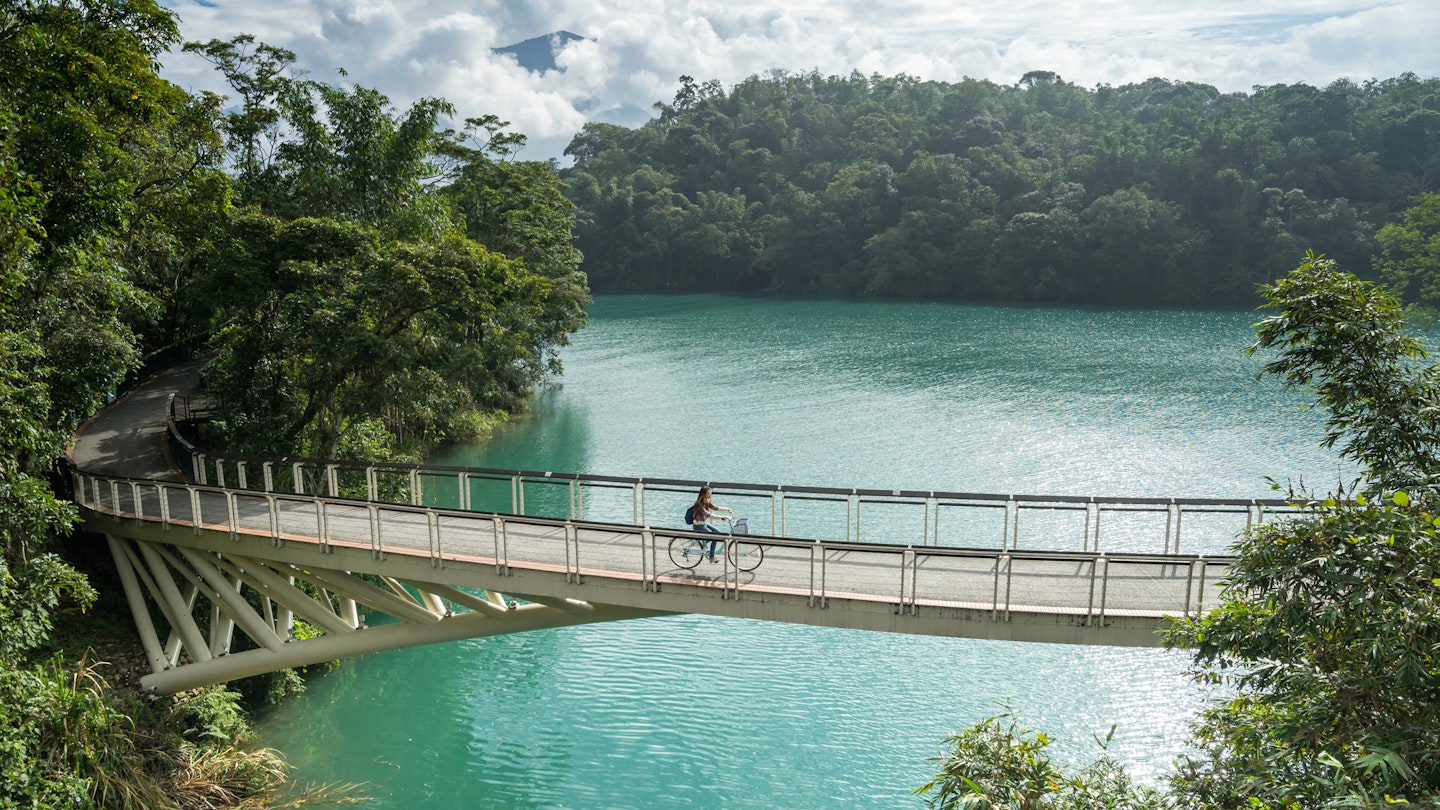
Narrow down your travel plans with this guide to the best places to visit in Taiwan © kitzcorner / Getty Images
With dynamic night markets jam-packed with delectable street food, gorgeous beaches and soaring mountains, Taiwan offers lots in a small package.
Just 395km (245 miles) from top to bottom, travelers will find futuristic cities, historic temples and killer surf breaks – all connected by affordable high-speed rail. As one of the friendliest East Asian countries for LGBTIQ+ travelers, too, it's pretty much got everything. Here are the best places to visit.
1. Sun Moon Lake
Best place to bike
Located in central Taiwan, Sun Moon Lake is renowned for hiking, boating, romantic walks and countryside temples. It’s also famous for its bikeways, frequently found on lists of the world’s most stunning biking paths in the world. There are multiple options, but we recommend the Shuishang Bikeway . This 1300ft-long route wraps so closely around the lake that whizzing around its perimeter feels like floating on water.
2. Beitou, Taipei
Best place for hot springs
Although 130 hot springs spill across this volcanic country island, Taipei locals love Beitou hot springs for their accessibility. Just a 30-minute train ride away from the center of the capital, you can luxuriate in geothermal heat-fueled hot springs. Veiled in the sulfur mist, you'll find hotels outfitted with bathtubs gushing hot water, public baths and a springs-obsessed culture.
Planning tip: Visit Thermal Valley, aka Hell Valley, for one of the world’s only two green sulfur hot springs. It reopened in July 2022 after a renovation featuring improved accessibility, additional facilities and upgraded seating areas.

3. Taroko National Park
Best place to chase waterfalls
Journey to this popular national park for its famed 19km (12 mile) canyon, Taroko Gorge , which features marble cliffs carved through centuries by the Liwu River. Located around 145km (90 miles) southeast of Taipei, the gorge contains hikes of all levels where you can view an abundance of waterfalls towering and small.
Make sure to hit the Yindai, Baiyang and Lushui waterfalls for the most stunning views. Intermediate hikers should trek the 4km round trip (2.6 miles) Baiyang Waterfall Trail, featuring eight tunnels and the Shuiliandong Water Curtain. For photo ops at Taroko National Park , check the waterfall and pavilion at the Eternal Spring Shrine, a picturesque veteran’s memorial.
Best surf spot
Jinzun is located in Taitung County, which is home to the lengthiest coastline in Taiwan, running approximately 175km (109 miles). This little fishing village is a 40-minute drive from Taitung and hosts the Taiwan Open of Surfing . Surfing conditions are decent year-round, but the best time to go is in the autumn and winter, when typhoons create optimal waves. Professional surfers consider the waves here to be world-class, and since surfing is a newer sport in Taiwan, Jinzun is ideal for surfers trying to beat the crowds. If you don’t want to catch waves, go fishing or sunbathe on the sandy beaches. You can also pop 10 minutes south to Dulan to visit the Amis tribal village and Xindong Sugar Factory.
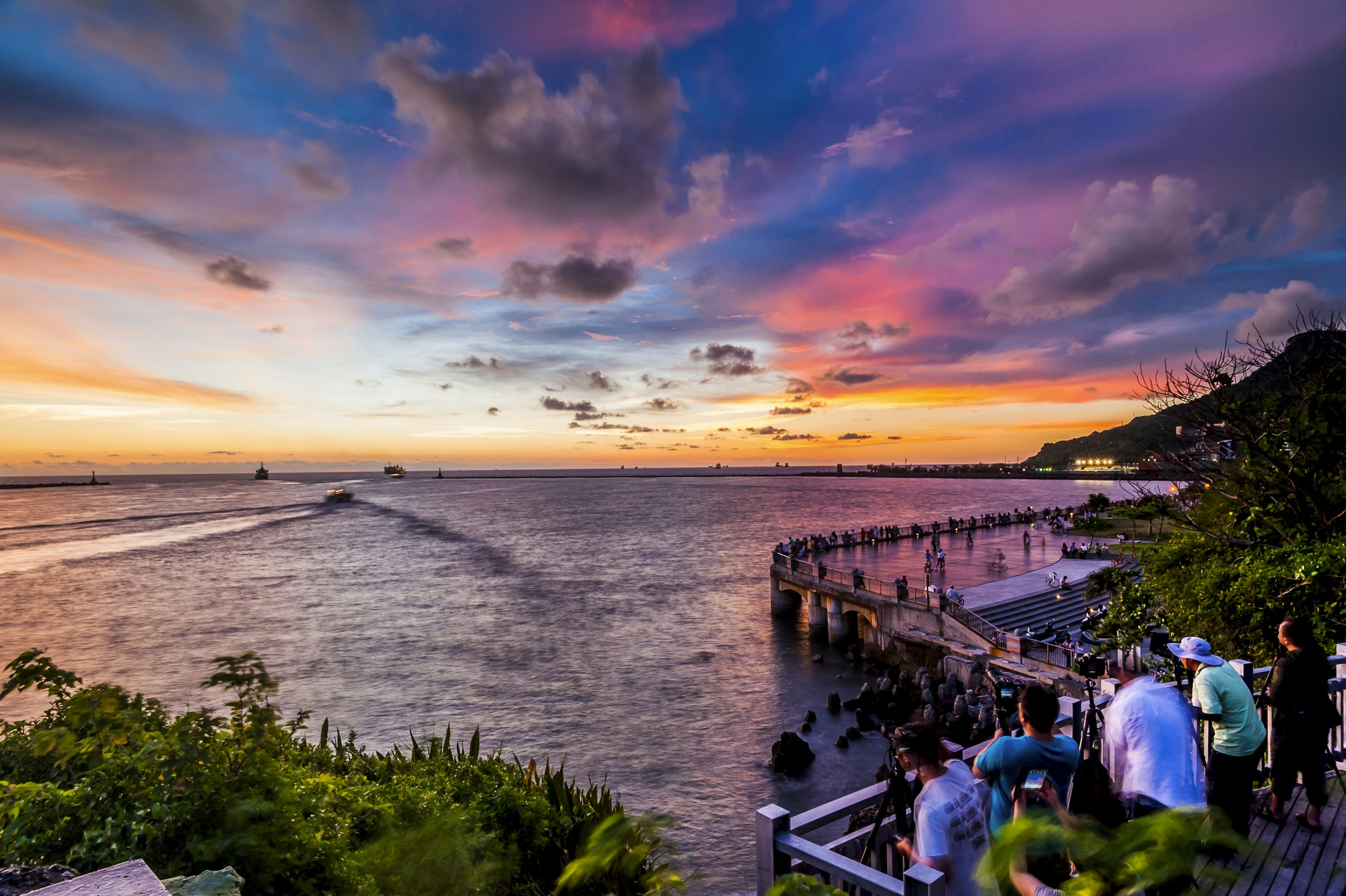
5. Kaohsiung
Best place to temple hop
Taiwan’s second-largest city crackles with energy, and many consider it one of the best places to live on the island for its convenience and safety. Despite Kaohsiung’s zippy streets, you can find pockets of tranquility in its parks, pagodas and temples. Visit Lotus Pond to see more than 20 temples – enter through the Dragon pagoda and exit the Tiger pagoda for good luck.
Located on the north side of the pond is the Kaohsiung Confucius Temple – the largest Confucius temple in Taiwan, designed in the style of a Song Dynasty-era temple. After temple-hopping, visit the romantic Love River and indulge in street eats at the Rueifong Night Market.
Best place for quiet
This beautiful haven for nature fans rests on Taiwan’s northeast coast. Here, mountains meet the sea with cold and hot springs, whale and dolphin-watching, scenic hikes and black sand beaches. Highlights include the Hsuehshan Tunnel – the second-longest highway tunnel in Asia, connecting Taipei to Yilan in just 50 minutes – and the Divine Trees Garden at MaKau Ecological Park. The garden is home to over a hundred indigenous, millennia-old Taiwan red cypress trees, hinoki and benihi trees.
Planning tip: Head to the world’s first quiet trail, Cuifeng Lake Circular Trail – accredited by Quiet Parks International (QPI). It’s a 7.4km round trip (4.6 miles) hiking path, ranging from 1890–1980m (6200–6500ft) above sea level, abutting Sun Moon Lake and winding through floors of dense moss – said to absorb sound.
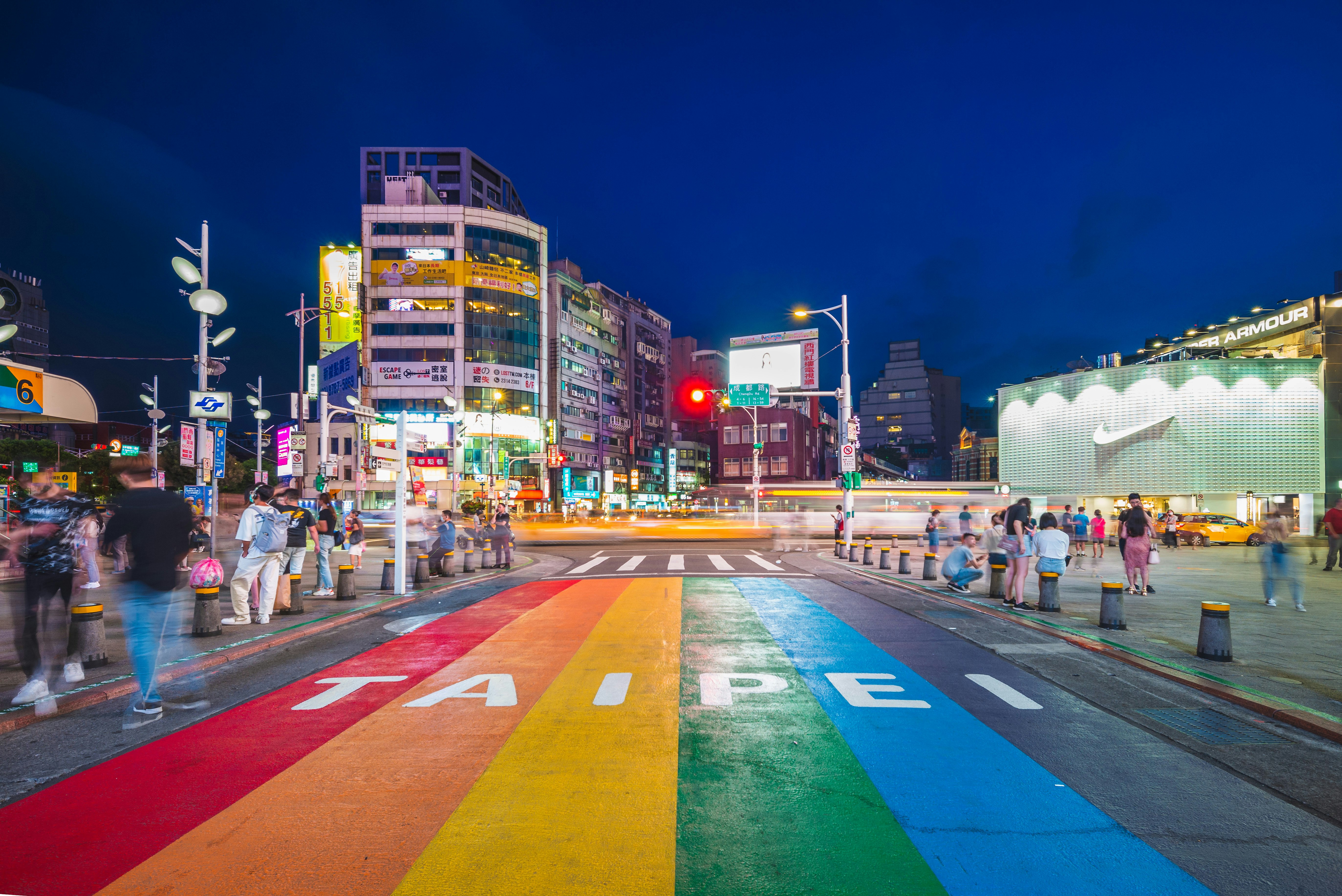
7. Ximen district, Taipei
Best place for LGBTIQ+ travelers
Taiwan has become one of the most progressive Asian countries for LGBTIQ+ rights. As the host of Asia’s biggest Pride parade, it’s also the first country in Asia to legalize same-sex marriage. The Ximen district in Taipei is renowned for its gay scene found behind the historic Red House Theatre , built in 1908. At this first openly gay place in the city, there are countless gay bars, saunas, restaurants and open-air plazas for hanging out.
Planning tip: Ximen district is a well-known shopping area, great for people-watching stylish youth and the high-end fashion of those living in what’s considered the richest city in Taiwan. It’s also likely you'll see cosplayers, impromptu street dances, performances and celebrities and pop stars hosting meet and greets.
Best place for fresh seafood
This port city overlooking the Donghai Sea is about 30km (19 miles) north of Taipei. Known for fresh seafood, Keelung Night Market is the perfect place to sample many dishes at once. Munch on butter crabs, thick crab soup, oyster omelets, tempera fish paste, ding bian cuo – a meat and seafood stew with rice batter noodles, deep-fried crab and braised eel, to name a few.
Continue your eating spree by trying the local street food delicacy, chikuwa , a charcoal-grilled fishcake treat, and leftover remnant of the Japanese occupation at the Zhengbin Fishing Port. Afterward, night owls can hit the Kanziding Fish Market, a large frenetic seafood market open from 10pm to 6am.
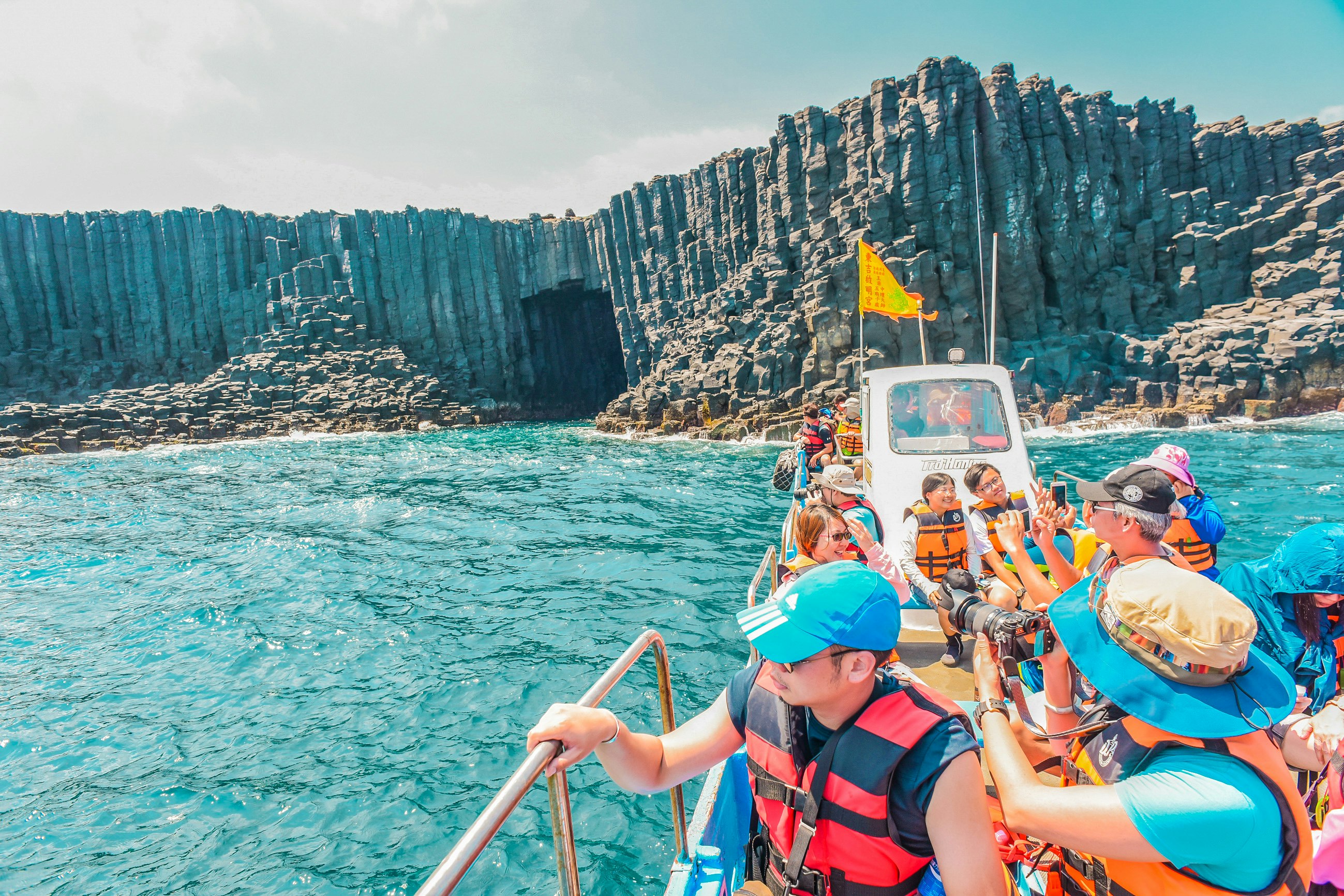
Best place to island hop
Locals love the southwest Penghu archipelago as a holiday destination for its white sand beaches, illustrious basalt columns, and pristine coral reefs. It’s speckled with islands and accessible from Taipei via an hour's flight. You’ll probably land in Magong City, where there’s plenty to explore, like the Penghu Tianhou Temple , Shanshui Beach, and the Du Hang Shih Cun military village. Don’t leave without trying local specialties, such as brown sugar cake, peanut candy, fresh oysters and cactus ice cream.
Planning tip: Sign up for an island-hopping tour with everything from half-day to multi-day itineraries available. History buffs will enjoy Wang-an island for Zhongshe Village, an ancient fishing village. For sunbathers and swimmers, Jibei is a great stop for its stunning beaches . Other famous islands include Wiyu, Baisha and Huxi.
10. Green Island
Best place to be underwater
Snorkelers, freedivers and scuba divers enjoy Green Island’s hundreds of species of brightly colored coral and fish. Located southeast of Taitung , this volcanic island is a diving destination with options for both shore and boat dives. If you prefer being above water, eyeball stunning views from the Lyudao Lighthouse , soak in the Zhaori Hot Spring or relish the island’s natural vistas.
This article was first published January 2023 and updated October 2023
Explore related stories

Tips & Advice
Mar 28, 2024 • 6 min read
From buzzing cities to pristine island getaways, here's our guide to the best places to visit in Japan.
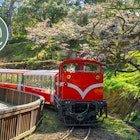
Feb 8, 2024 • 6 min read

Jan 27, 2024 • 15 min read

Oct 29, 2023 • 7 min read
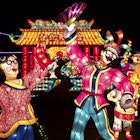
Oct 25, 2023 • 6 min read
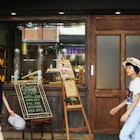
Oct 20, 2023 • 13 min read
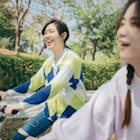
Oct 18, 2023 • 7 min read

Oct 14, 2023 • 5 min read

Oct 13, 2023 • 7 min read

Sep 25, 2023 • 7 min read
Going Awesome Places
Detailed itineraries + travel guides
12 Days in Taiwan Travel Guide – Itinerary to Explore the Entire Island
Last Updated February 22, 2023 William Tang
You are here: Home » Travel Itineraries » 12 Days in Taiwan Travel Guide – Itinerary to Explore the Entire Island
Taiwan is known by many names but perhaps the most memorable one is Formosa . Now that sounds a bit odd but it was in fact coined by Portuguese explorers in the 16th century. Ilha Formosa directly translates to “Beautiful Island” and they sure got it right.
Between the energy of the dynamic urban cities, bustling of the famed night markets, colourful culture, fascinating history, incredibly friendly people, and dramatic landscapes, you’ll be amazed at just how much awesome can be packed in this island.
This 12 day Taiwan itinerary (just short of two weeks) follows our journey around the entire island and is geared towards those that have the curiosity of a tiger and the adventurous courage of a dragon. Now I will say it is a trip that required a bit of stamina to keep up but for the limited time we were there, I’m so glad we were able to see and do all the things we did. That said, feel free to mix and match as you craft own trip as I know many of you are looking for a Taiwan 7 day itinerary. As with all of our trip guides, I like providing as much detail as possible to make your planning that much easier.
Read more about Asia
- Japan 12 Day Itinerary
- 7 Day Seoul, South Korea Itinerary
- 5 Day Bali Itinerary
- Best things to do in Ubud in Bali
- Our best Asia content
How to find the best travel deals?
- Hottest deals – Bookmark the frequently updated travel deals page .
- Car rentals – Save the most money through car rental coupon codes .
- Hotels – Use corporate codes or get Genius 2 tier with Booking.
- Flights – Have you ever heard of the “Everywhere” feature ?
- Insurance – Make sure you’re covered for all of your adventure activities with the best travel insurance .
Table of Contents
- Pre-Trip Guide
- Day 1 – Hitting The Ground Running in Taipei
- Day 2 – Spirited Away
- Day 3 – Winding Up To Alishan
- Day 4 – The Almost Sunrise
- Day 5 – Artsy Urban Kaohsiung
- Day 6 – The Surf Challenge
- Day 7 – Fly With The Wind
- Day 8 – Ridin’ in Taitung
- Day 9 – Taroko Tribe In The Mountains
- Day 10 – Shakadang Is My New Favourite Word
- Day 11 – Tai Chi, Hot Springs and Shrimps
- Day 12 – Mad Dash for Pineapple Pastry
- Where to Stay
12 Day Taiwan Itinerary Pre-Trip Guide
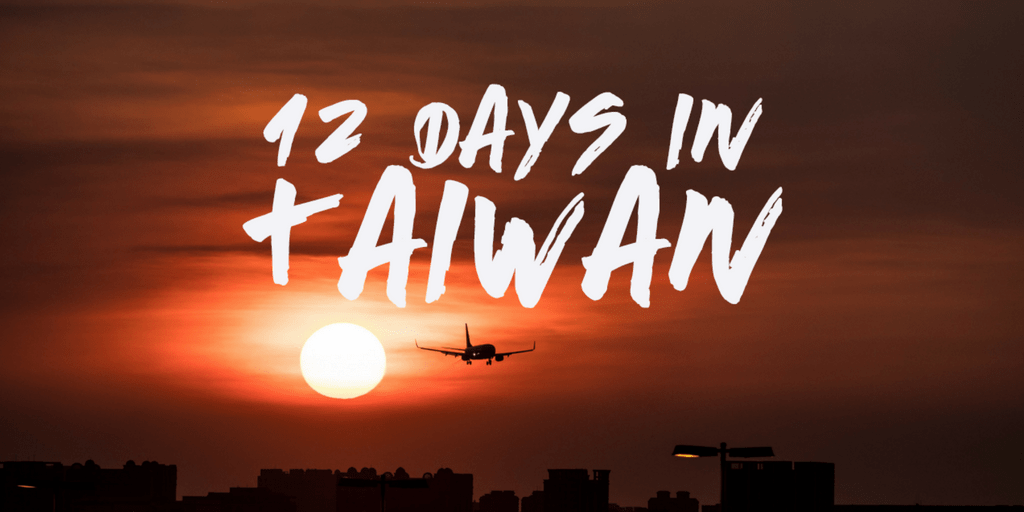
Taiwan currency is the New Taiwan Dollar ($NT). TWD is also another symbol that is used.
- Mental math for North Americans: To convert things quickly in your head, cut one zero and we divided by 3. This brings it closer to USD. For CAD, you just “add a little”.
- Quick reference print outs: Oanda’s fxCheatSheet is pretty handy.
- App: For iOS users, I recommend the free app xCurrency .
Taiwan uses the exact same electrical standard as North America: 110V/60Hz AC.
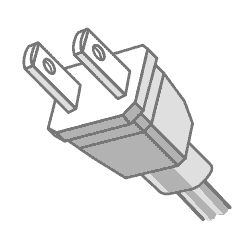
Best Time To Visit
Taiwan goes through a full four seasons however they are less pronounced and they lean towards the humid subtropical climate. It’s all personal preference but the best time to go would be either in late spring (April to May) or autumn (November) for a great blend of comfortable temperatures and smaller crowds. Also keep in mind that temperatures will vary depending on where you are in the country which means it’ll be much warmer in the south vs. Taipei vs. in the mountains.
- Spring (March – May): Very mild and pleasant where only long sleeve is required [Average 15ºC to 27ºC]
- Summer (June – September): Very hot and humid with chances of rain as well. Keep in mind that this is typhoon season as well [Average 24ºC to 31ºC]
- Autumn (October – November): Begins to cool down but is still very comfortable [Average 18ºC to 30ºC]
- Winter (December – February): Jacket season where it can get foggy due to northeasterly winds from Siberia [Average 13ºC to 19ºC]
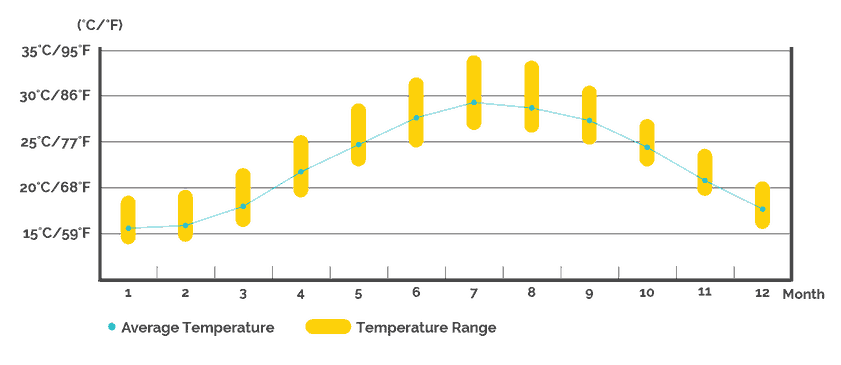
How To Fly To Taiwan
Flights to Taiwan will vary drastically depending on where you’re flying from. If you’re coming from Asia, there are a number of low cost carriers to choose from including AirAsia, Cebu Pacific, and Scoot. For the rest of the world, the two big national airlines to look out for are China Airlines (SkyTeam) and EVA Air (Star Alliance).
The primary international airport is Taipei’s Taoyuan International Airport (TPE) and for most international travellers, that is where you will want to land. What you may not realize though is that there are alternative airports that you can use to jump to different parts of the country or directly fly into. The two other international airports can be found at Kaohsiung (KHH) and Taichung (RMQ). Another popular airport that you might want to try to search if you’re coming from other parts of Asia is Taipei Songshan Airport in Taipei (TSA).
I had the opportunity to fly EVA Air both direct from Vancouver and Toronto and had a fabulous experience with them. Including a quirky interpretive dance safety video, pre-boarding complimentary tea, some of the best food I’ve had on the plane, and great service.
Where To Stay
There are so many choices for hotels in Taiwan that range from budget to mid-range and luxury. In Taipei, you’ll find the big international brands but across the country, don’t be afraid to book local branded properties. In this 12 day itinerary, you’ll see that we’ve chosen reasonably priced 4 star properties that all managed to impress.
Since you’ll be on the move quite a bit on this itinerary, homestays traditionally may not be a good option but if you can find one that only requires a minimum of 2 nights, you could swing it.
For where to stay in Taipei , make sure to read the neighbourhood guide to find out the best properties you can stay at
For the whole island, look on Booking.com for the best prices.
How to Get Around
Unless you’re travelling to one of the smaller islands of Taiwan (i.e. Penghu or Xiao Liu Qiu), your best bet is to take advantage of the excellent land transportation options that are available.
The best way to cover large distances along the west coast of the island is the Taiwan High Speed Rail (THSR/HSR) which is equivalent to Japan’s bullet train. At a top speed of 300 km/h, you can get from Taipei to Kaohsiung in just over 1.5 hours. In cities and towns that aren’t covered by THSR/HSR, there are traditional trains covered by the Taiwan Railway Administration (TRA).
In the big cities such as Taipei, Kaohsiung, and Taichung, you have an extensive and efficient subway network which is also called the Mass Rapid Transit (MRT) system.
There are always buses to fall back on. In the cities, I’d recommend using them only if you know the route and schedule. That being said, if you’re going to be doing places like Alishan, Kenting, and Taitung, you’re going to need to familiarize yourself with what’s called the Taiwan Tourist Shuttle . These are buses created in coordination with the tourism bureau to make it easier for travellers to get to popular sightseeing destinations. They’re typically more conveniently marked with English which makes things easier.
Taxis are easy to hail in the big cities and if not you can always get your hotel to call one for you. Expect this to be your most expensive mode of transportation.
Scooters are often the preferred way of getting around in places like Kenting not to mention the most fun. Roads aren’t crazy hectic like in Thailand so it’s quite safe. What you need to know though is that they require local motorcycle licenses to drive motorized scooters. Electric scooters are much easier to rent as long as you’ve done it before. If you haven’t, they might reject you or you’ll be required to do a small lesson like we did. If you continue reading the itinerary portion of this guide, you’ll learn why you really need one to get around.
Car rentals are another way to get around that often doesn’t get much attention. Make sure you book in advance and do your research in advanced as English will be at a minimum when engaging with car rental companies and driving directions. Make sure you have your international drivers license.
Lastly, I’d like to mention private drivers as this is another popular way to see the country. These are typically taxi drivers that have their own side business. I never had a chance to book one but did run across a cabbie that told us about his services and read about quite a number of them on TripAdvisor forums . The beauty of this is that you can create your own itinerary and do it in the comfort of a private vehicle, skipping complicated commutes, and saving time as well. It may be hard to find English-speaking drivers but I’m sure they’re out there. This is best used for day trips such as up to Yehliu Geopark, Danshui, Jiufen, etc.
Tips:
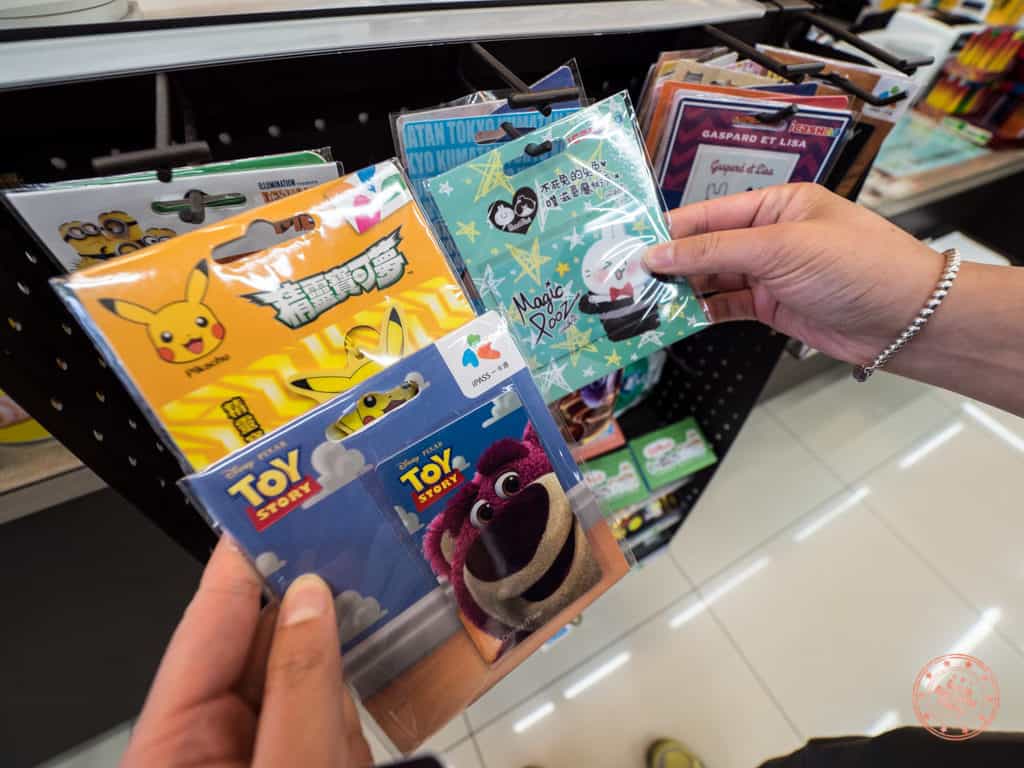
- What’s confusing in Taiwan is that there are multiple types of contactless cards (EasyCard, icash 2.0, and iPass). I’m not going to pretend to be able to explain differences between them but the one that you want to get is EasyCard as it’s the most widely accepted around the country for most local transit (MRT and buses) and stores. You can buy them at MRT stations but convenient stores like 7-11 and Family Mart sell them too. Warning: 7-11 will try to sell you on their icash cards but make sure you get EasyCard (don’t make the same mistake that I made). The beauty of the EasyCard is that all credit can be refunded at MRT stations whereas it is not easy/impossible with the other cards.
- In Taipei, there is also something called the Taipei Pass that you can consider where you can get unlimited rides for the number of days that you purchase. Personally, I wouldn’t recommend it as the EasyCard is just more hassle free and keeps things flexible.
- Uber is available but isn’t worth it if your ride is less than $NT 35 or if surge pricing is on but on longer rides they can be marginally cheaper. They’re operating in a restricted mode in Taipei only where cars can only drive for Uber if the car is rented from a specific company. You’ll also find that most regular cabs don’t take rechargeable cards nor credit cards so expect to pay cash.
- While Google is pretty good at providing schedules and directions for public transportation especially in Taipei, I’d recommend getting a local to help you when possible especially when it comes to buses.
Do I Need A Visa?
There are a number of visa regulations that depend on your nationality. For most of you, the good news here is that you will most likely be visa exempt or you’ll be able to purchase a visa on arrival, eVisa, or an Online Travel Authorization Certificate. Your best is to get most up-to-date information on visas for Taiwan .
If you’re coming from one of the 60 countries that don’t require a visa, you’re in luck. As a Canadian, all I needed was a passport that was not expiring in the next 6 months, and I was granted a 90 day stay by the customs official after landing at the airport. I didn’t have to visit the visa on arrival desk or anything – just walk right to the customs counters.
Wifi, Data, and Must Download Apps
The most important question is whether you should get a SIM card or a personal hotspot. This comes down to whether you’ll be making calls or not and the answer will most likely be that all you care about is data. If that is the case, you’re going to want to pick up a personal hotspot (pocket wifi) . Taiwan’s rates are so cheap for unlimited use and the great thing about it is that you can share wifi with everyone in your group.
I reserved my device from a Chinese site called APTG that rents out WiFun and as unlimited data usage for $NT 100 per day (~$3.36 USD). What I like about them is that you can actually get them to deliver it to your hotel ($NT 180 fee). You just might need someone local to help you out.
If that’s a little complicated, there are also device rental shops right outside of arrivals at TPE. The one I remember seeing is Unite Traveler (find them here ).
Before you leave home, here are a few apps that you should download to make your life on the road easier.
- TP Metro – Lightweight app by rGuide that has a map of the Taipei MTR for quick reference.
- Skype – This will be even more critical if you’re going with the personal hotspot option. The few times we had to make calls, having credit with Skype definitely came in handy.
- Google Maps – The offline feature of Google Maps is helpful as a backup if the wifi dies (dead zone or out of battery).
Luggage Storage Solution
One of the things I love about Asia and Taiwan in particular is how good they are with their luggage storage options. This is super handy when you’ve got that awkward in between time from the point you check out into your hotel in the morning and you have to catch a train or bus to somewhere else but still want to explore without lugging it around. That’s when those lockers really come in handy.
The traditional solution – The standard way to do this is to go to find a locker in a train station where there are usually large clusters of multi-sized lockers. They’re not expensive and for instance Zuoying in Kaohsiung only cost $NT 50 for 3 hours. You just have to remember to have cash on hand. The challenge though is that if you’re not near the obvious places for lockers, it’s a bit of challenge to figure out where you can go. The other thing to consider is size. There’s no way of knowing whether the large lockers are available and what if you need somewhere to store something in a fridge?
The Airbnb of lockers – That’s where Lalalocker comes in. Instead of hunting an elusive locker, all you have to do is check their platform to see what lockers are available in your area. All you have to do is book your locker, show up, drop off your stuff, and pick it up when you need it. It’s all part of the share economy where you’ll find locker locations anywhere from restaurants, stores, and hotels. It’s completely safe, and the price is a flat rate of $NT 150 for large luggage and $NT 70 for small luggage for the whole day.
Store your stuff with Lalalocker
Going Awesome Places has an exclusive offer with Lalalocker. Use code GOINGAWESOMEPLACES to save $NT 30 per booking.
Book your storage locker
What To Prepare
This really depends on what time of year you’re planning your Taiwan itinerary and I won’t list out everything we brought but I would recommend you read my previous packing lists for trips to Ireland , South Africa , Ethiopia , and Peru .
For Taiwan specifically, here are a few must-haves that you’ll want to pack and things to consider to make your life easier on the road:
- Power bank – A high capacity power bank such as Anker’s 20,100 mAh , is a must-have in my mind considering the fact that your phone will be your lifeline for on-the-fly translations, maps, transit, and last-minute searches. The personal hotspot devices drain battery like crazy so you’ll need to charge them halfway through the day.
- Waterproof jacket – You never know when it’s going to rain and I sure was glad to have something like the Columbia’s OutDry gear with me.
- Booking your train tickets ahead of time – It was truly a blessing for us to have MyTaiwanTour help with reserving of all the main trains that could be booked based on our itinerary.
The 12 day Taiwan itinerary
This is how our 12 days looked like during our trip to Taiwan. With this day by day breakdown, you’ll get a clear picture of everything that we did and all the spots that we hit up. Where I can, I also provide personal travel tips (signified by ) so look out for those.
Interactive Map
>> Day 1 – Hit The Ground Running In Taipei <<
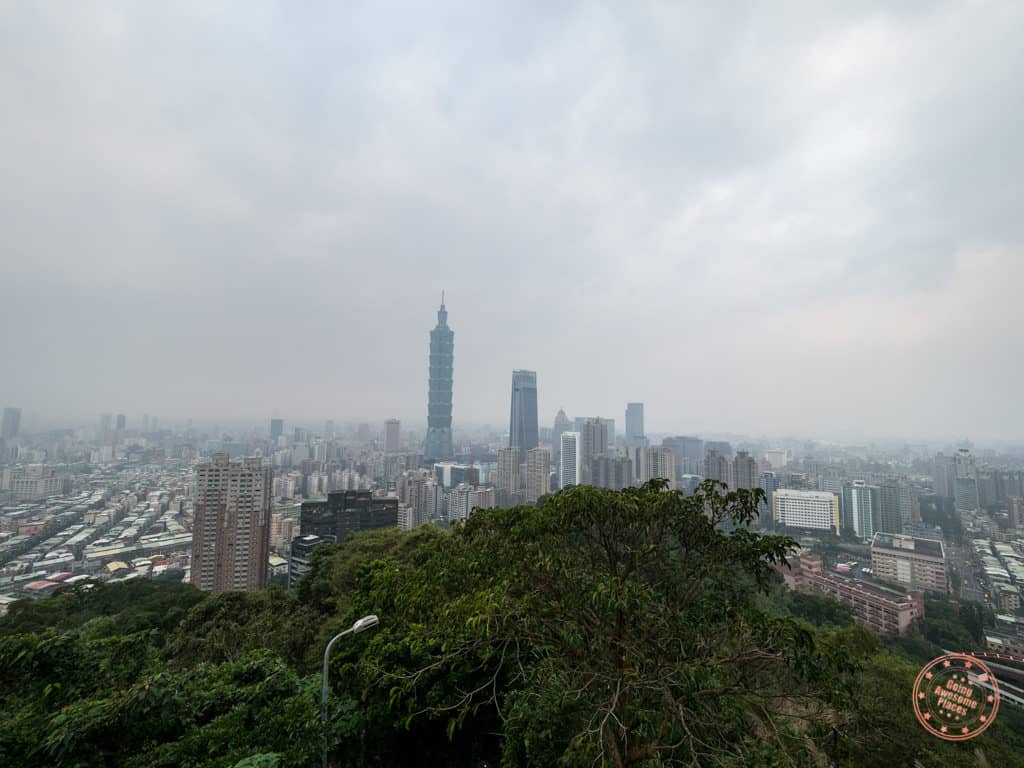
The perfect way to start your trip and get over your jetlag is to arrive in the heart of Taiwan and start wandering. Go and take in Taipei’s iconic landmarks, feed your hunger at the bustling night markets, and jump right into the colourful culture.
With limited number of days in Taipei, you’ll want to make it count and pick the places that interest you to help decide what you’d like to focus on. You won’t be able to do everything but remember that you’ll have the rest of your trip to make up for it.
For me, since I had been to Taipei before, my focus was on places I hadn’t been to which meant cutting out a lot of the highlights that other guides will take you to (i.e. Chiang Kai Shek Memorial Hall, National Palace Museum, Taipei 101, and Longshan Temple). What you’ll see below are all the places we managed to hit up in the first day before there was nothing left in the tank. The focus for the day was primarily food and also getting set up with things like the pocket wifi and EasyCard.
★ Elephant Mountain

The views from Elephant Mountain or Xiangshan are arguable the best in the city and very easy to get to as long as you have it mapped out ahead of time. The path to it will seem a little obscure but once you come out of the subway, you’ll no doubt see other tourists making their way there.
The hike itself isn’t particularly long but I would recommend preparing yourself for some serious stair-master. The ascent is a sheer 20 minute climb but thankfully there are lots of places to stop, benches to rest, and great views from the forest.
Elephant Mountain is but one of the peaks in a collection of trails that make up the Four Beasts Mountains. That said, if you’re like me and primarily interested in that epic shot of downtown Taipei, just focus on hiking straight up until you reach the Six Giant Rocks to get those iconic photos of you on the rock. There’s also big platform below the final steps up that is great for views.

TIPS: Sunset is the best time to go as you get the insane explosion of colours if the weather cooperates and past sunset you get the night skyline as well.
WHERE TO EAT
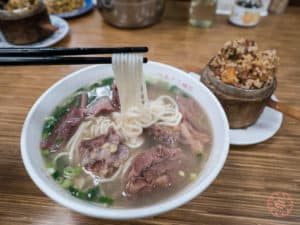
★ LUNCH: Yongkang Beef Noodle It would be a mistake not to try Taiwan’s famous beef noodle soup. When I arrived, there was a modest line outside the restaurant but turnover is relatively quick here and I was seated within 10 minutes. I ordered the non-spicy version of the beef noodles and spare ribs, both of which were PHENOMENAL. The beef was perfectly cooked in juiciness and fat. The noodles had also just the right amount of bounce. #believethehype
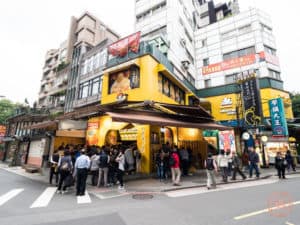
★ SNACK: Smoothie House You can’t miss this when you walk along the famed Yongkang street. This big yellow building at the corner is home to the mango shaved ice that CNN made famous (or at least that’s what the signs tell me). I ordered the mango shaved ice and it was oh-so heavenly. The shavings from the block of mango ice fluff onto a mountain which translates to a wonderfully light and melt-in-your-mouth taste that you can only equate to eating fresh snow off the ground. If that wasn’t enough mango, you get real mangoes drizzled with mango sauce and then panna cotta to top it off.
TIPS: There’s not a whole lot of seating on the ground floor but what isn’t obvious is that there’s inside seating upstairs.

★ DINNER: Jing Mei Market In search of something a little bit more local and off-the-beaten-path, I was recommended to this night market in the southern part of Taipei. I wanted a night market that wasn’t packed with tourists and I wanted to see where real locals ate. I found it in this night market. The streets weren’t overcrowded here, the food especially the octopus, fried sweet potato balls, sponge cake, and oyster omelette were all very good and noticeably cheaper than what you’d find in Shilin night market. It’s not a large market but I quite enjoyed that it wasn’t overwhelming.
WHERE TO STAY
★ The Sonnien Hotel (2 nights)
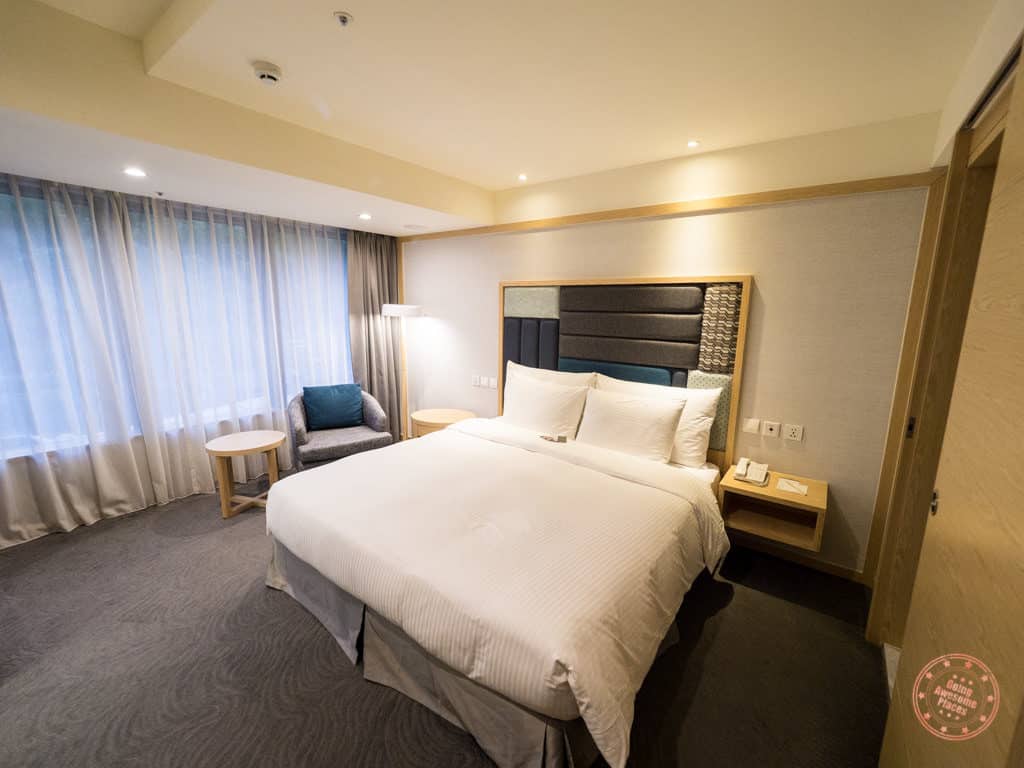
We couldn’t have asked for a better hotel to start the trip. Modern, clean, and the most fluffy of beds, it was just the right size and conveniently located.
Walking distance to Yongkang Street and equidistant from Daan Park station on the Red line and Zhongxiao Xinsheng on the Blue/Yellow line, we had no trouble getting to everywhere we wanted to go our first two nights in Taipei.
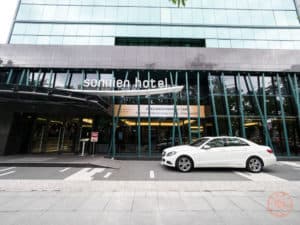
The buffet breakfast included with our stay was also fabulous with everything from hot dishes like noodles, stir-friend vegetables, dim sum, salad, congee, and miso soup. It was so good that I often regretted eating so much because there was so much other food to eat throughout the day!
TIPS: If you arrive super early in the morning like we did, I actually booked an extra night’s hotel so we wouldn’t be forced to hit the road right away. Instead, the room was ready for us and I was able to take a nap.
CHECK RATES
Save money on your trip to Taiwan
I travelled through Taiwan primarily through the help of a local company on the ground called MyTaiwanTour . They were the ones that booked my train tickets and hotels which made my life so much easier . They are an operator based out of Taipei and specialize in custom-tailored solutions and English-based packaged tours around Taiwan. I highly recommend them!
Save 5% on tours with MyTaiwanTour by using code WILL19.
>> Day 2 – Spirited Away <<
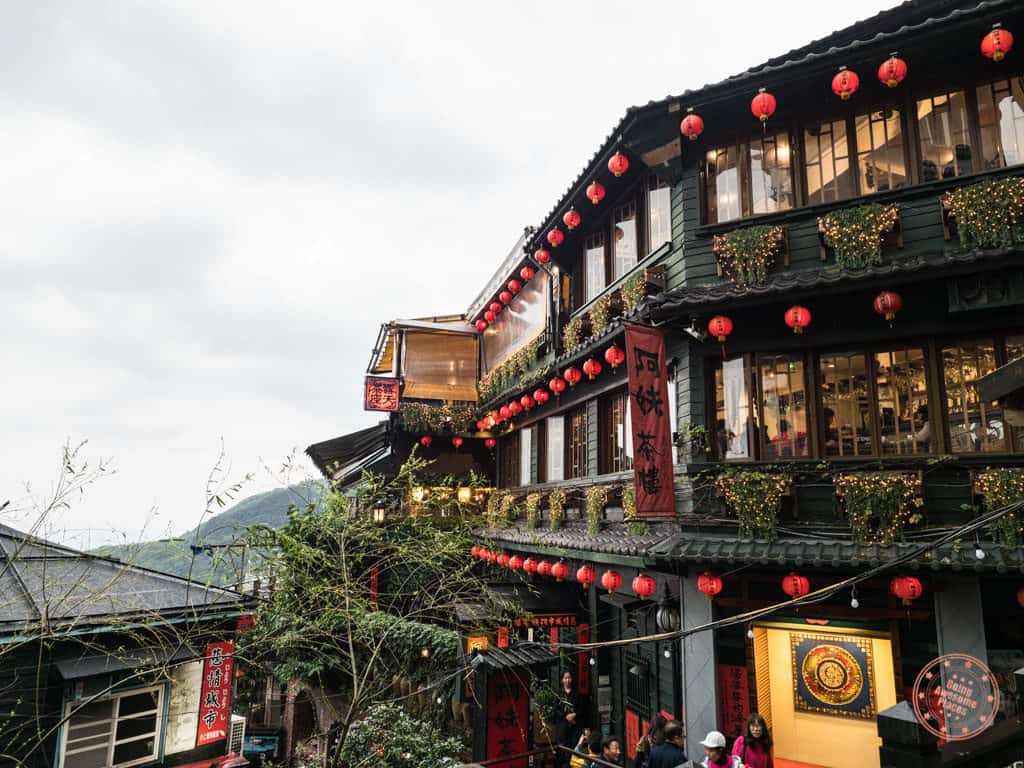
After a day getting your fill of a few of Taipei’s highlights, it’s time to shake things up and head north. What’s there you ask? If you’ve ever wanted to launch your own sky lantern, explore the remains of a Japanese gold mine, and walk through streets that inspired Miyazaki’s classic “Spirited Away”, you’re in for a treat. And yes, you get to do ALL of that in a day.
A post shared by Will ✈🌐 GoingAwesomePlaces (@goingawesomeplaces) on Dec 5, 2017 at 2:58pm PST
★ Jiufen and Pingxi Day Tour with MyTaiwanTour
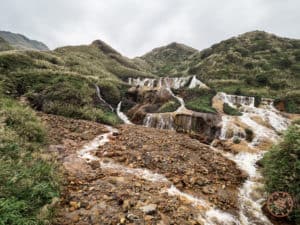
One of the things I love about Taiwan is that it isn’t very hard to get away from the hustle and bustle of the big city and get a big dose of charm, history, and culture in the northern towns. Choosing MyTaiwanTour was a no-brainer as they made it really easy to book online and is the English speaking tour that we were looking for.
In our spacious van, our group of 7 spent the day exploring these spots:
- Jinguashi Mines : Coming into Taiwan, I had little knowledge of its Japanese occupation past and this was my introduction to what is fascinating history. Front and centre in the Shuinandong area are the remains of a very serious mining operation as you get to see from afar and close up the abandoned buildings, funicular, tunnels, and land-based smoke stacks.
- Golden Waterfalls : Located just a bit further up from the mines, watch the water tumble down what really does look like a gold-laden waterfall.
- Jiufen : Once a prosperous gold mining town, Jiufen is now a popular tourist destination known for being the inspiration of Myazaki’s “Spirited Away”. Spend just a few minutes here and you can see why it has that enchanted quality to it. Adorned with strings of red lanterns, old tea houses, and streets lined with delicious local treats, we were let loose here for lunch. My only regret is that it we easily could’ve spent more time getting lost in its maze of alleyways.
- Shifen Old Street in Pingxi : If you’ve ever wanted to get the FULL experience of building a giant sky lantern from scratch, write your own wishes, and launch them to the heavens, consider your dreams fulfilled. What makes this even more picture perfect is that you get to do this in a small town while standing in between live running train track.
We came out of the tour with a better appreciation for Taiwan’s history, our tummies filled, and our wishes delivered. I would highly recommend this day trip as it’s one that would be very difficult to do on your own and I very much enjoyed the service of our guide and driver, Summer and Tom.
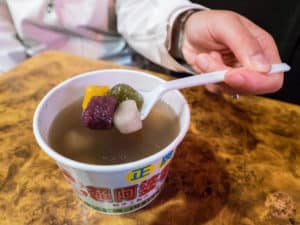
★ LUNCH: Jiufen Sure, Jiufen does get insanely packed with tourists, but we we didn’t let it bother us too much because we were hungry hippos on a mission. Our guide, Summer, gave us a few tips on what to look out for and then we were unleashed!
Here is what we picked up along the way ( for our favs):
- Stinky tofu
- Sweet glutinous balls
- Mochi on a stick
- A-Zhu peanut ice cream roll (九份阿珠雪在燒)
- Taiwanese meatball
Total damage? $325 TWD which is equivalent to a $11 USD lunch for two. DEAL!
★ DINNER: Shilin Night Market
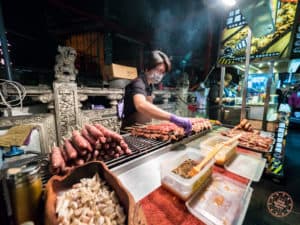
This is perhaps Taiwan’s most famous and largest night market and with its grid of streets lined with a variety of traditional, western, and local cuisines and merchandise. It’s very much a choose-your-adventure kind of experience where you’ll start off in one corner of the market and slowly make your way to the other side. Just make sure to come with an empty stomach.
MyTaiwanTour was kind enough to give us the option for drop-off after our day trip and mentioned Shilin Night Market as an option. We jumped on the opportunity because it is a bit of a distance from the Taiwan core and you really can’t say no.
TIPS: Make sure to try fried pork buns, bubble tea, wild boar sausage, and octopus. Beyond food, I highly recommend dropping a few coins on any one of the claw game booths, try your hand at one of the carnival games and the underground floor that is part of the covered section of Shilin.
>> Day 3 – Winding Up In Alishan <<
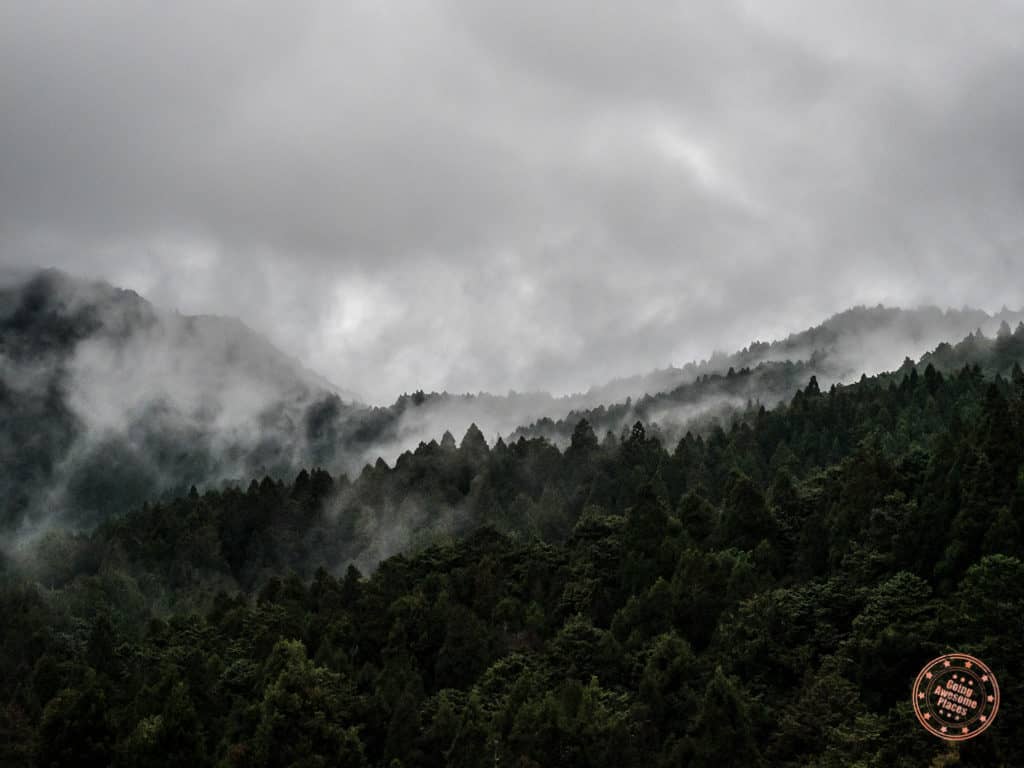
Alishan is one of Taiwan’s most visited national park and for good reason. Located way up above the clouds, it’s here that you’ll find the most magnificent terrain of giant red cypress trees that are more than 2,000 years old, Rivendell-like hiking trails, and trains from a different era. This region is also well-known for its tea because it is grown at such high altitude.
The tricky thing about Alishan though is that it’s quite the journey to get there and one that isn’t necessarily the most clear when it comes to English instructions. When constructing your itinerary, you’ll also quickly realize that you easily need to account for 2 days to make it work. As a result, this day is dedicated to getting to Alishan which is quite the adventure on its own.
HOW TO GET THERE
There’s so much information about this that it really deserves its own dedicated article so make sure you read the full guide on everything you need to know about Alishan .
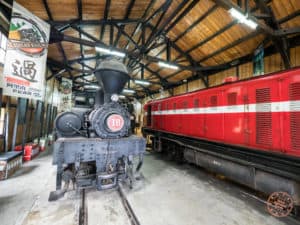
Since we elected to take the bus up to Alishan, we could have easily bypassed the small town of Fenqihu but I’m sure glad we didn’t.
Fenqihu is an old town that used to be a legitimate refuelling stop for the trains heading their way up to Alishan for what used to be a lumbering operation. Today, it is mainly a rest stop for travellers that want to see the fascinating railway museum, the old street which features food specialities, similar to that of Jiufen, and most importantly their famous ‘Fenqihu bento box’.
TIPS: There are lockers at the train station for $NT 30 for 3 hours which is perfect for your refuelling stop.
★ Sunset from Alishan House
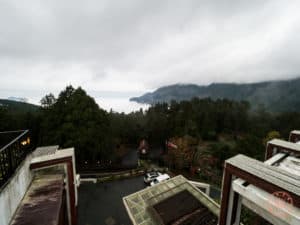
Psst…I’ll let you in on a secret. The sunsets from Alishan House are just incredible. Now I probably shouldn’t be telling you this but whether you stay there or not, I would recommend sneaking inside and going up to the 8th floor observation deck . If you’re lucky, you’ll see the sea of cloud that Alishan is known for.
I ended up showing up here towards the end of the sunrise because I wasn’t sure if the rain would dissipate but when I got there it did. I had a mind-blowing 20 minutes filming a timelapse of the waves of clouds climbing the mountainside.
★ LUNCH: Fenqihu Bento Box Place
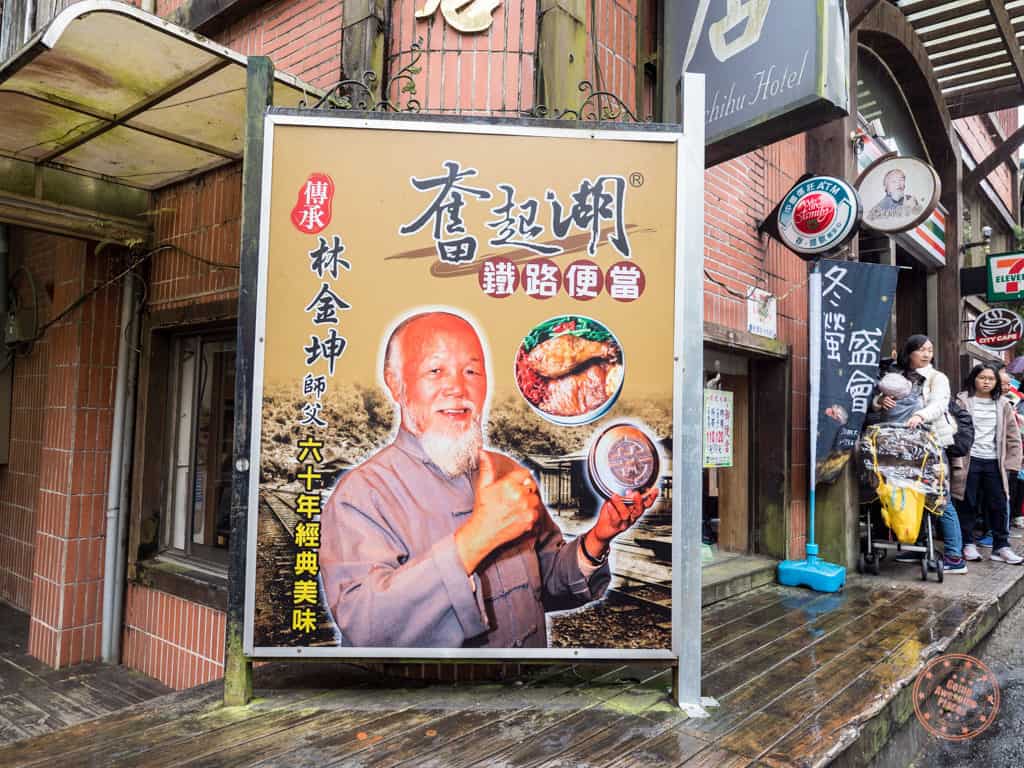
There’s probably a more proper name for this place but when you get to Fengqihu, everyone will know what you’re talking about and if not, just follow the posters of the bento box to a 7/11 along the main street. You can either take a bento box to go for $NT 100 or eat in for $NT 120 for the authentic metal container experience.
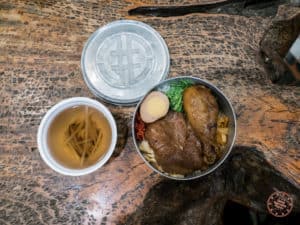
The epitome of Taiwanese comfort food, it comes with a bed of rice with a pork chop, drumstick, tea egg, and a mix of fresh and preserved vegetables. It was the perfect lunch, so much so that we started with one and ended up with two for the both of us. If you decide to eat in, you can also have their mushroom and bamboo shoot soup.
TIPS: If you’re looking for a unique souvenir, you can buy a metal bento containers for $NT 300 (includes the meal). We were thinking about picking one up but they couldn’t confirm whether it was oven safe or not.
★ DINNER: Room Service at Alishan House
The truth is we were exhausted by the time we got to our hotel and it just seemed like too much work to take a shuttle back down to the train station where there were a number of local restaurants. The restaurant at the hotel was also a little expensive for our tastes since it was a buffet ($NT 900 if I remember correctly).
If you’re curious, we ended up ordering fried rice and noodles from Alishan House’s room service but if we had a little bit more energy, I’m sure we could’ve had a better meal at the entrance to the park and near the visitor centre.
★ Alishan House
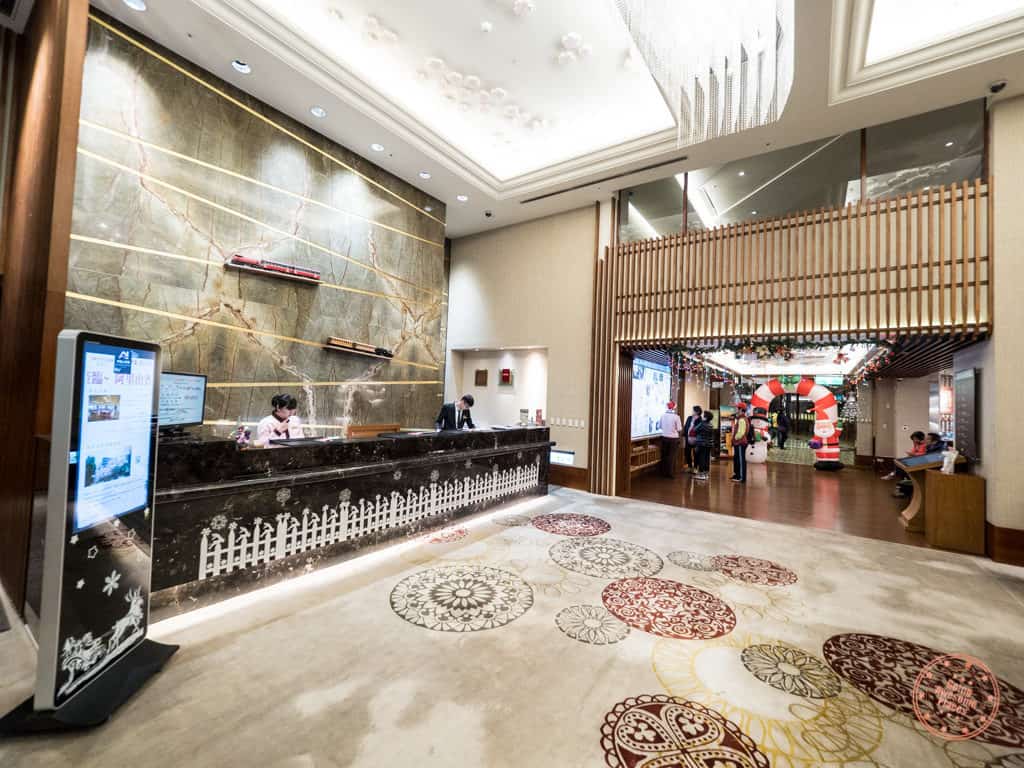
I’m not sure if I’d recommend staying anywhere else if you come to Alishan. It’s one of the few properties that is inside the Alishan Forest Recreation Area and is most definitely the nicest. For quite a reasonable nightly rate, you get a number of bonuses and conveniences that more than make up for the cost.
- Massive room that you can tell was recently renovated, has a huge bathroom, and complete with fireplace and balcony
- Hiking trails in the park start right from the hotel which means you don’t need to purchase additional train tickets from the Alishan station to Zhaoping station
- Complimentary shuttle service to and from the train station
- Convenience of purchasing sunrise train ticket from the front desk
- Willing to hold bags for you as you explore the next day
- The most decadent of breakfast buffets
- The observation deck is just awesome
A nice bonus is that each room comes with a single-serving of the region’s famous Alishan tea.
>> Day 4 – The Almost Sunrise <<
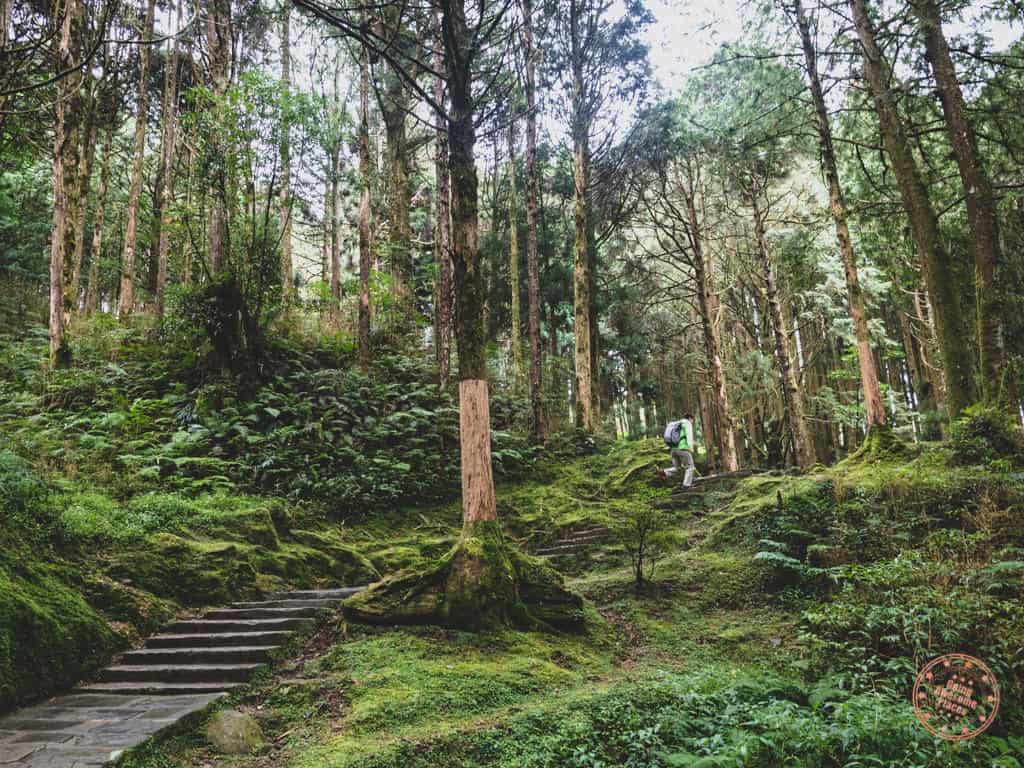
They say there are 5 wonder of Alishan but the most well-known of them all and the one that everyone goes crazy for is the sunrise. There’s good reason for it as it’s apparently ranked #16 in sunrises around the world. Now where that list comes from, I have no idea, but I heard it from the crazy local guy shouting to the crowd of sunrisers so it’s gotta be real right?
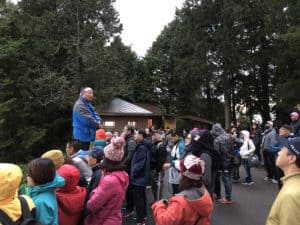
Now I can’t promise that you’ll see a sunrise there but what I can promise you is that the forest trails in the rest of recreational area are quite the magical experience especially when you get that moment by yourself and you feel that you can hear every pin drop. Whether you’re watching the train run through what seems like an ancient track, you’re feeling puny standing beside giant trees that are actually ancient, or you feel like you’re in a scene lifted from the ancient forest of Mirkwood of the Woodland Realm 🤓.
Now what are the rest of the wonders of Alishan? There’s the sunset, forest train, forest trains and cloud sea. What I love about Alishan is that it’s not overwhelmingly large and with one day, you can easily see all the wonders and not feel like you missed out on anything else.
HOW TO GET TO THERE
For a detailed account of how the sunrise works, how to get back down to Chiayi, make sure you read the full Alishan Guide .
★ Alishan Sunrise
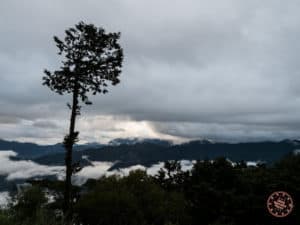
I have no doubt that when you can actually see a sunrise, the view is quite glorious. We weren’t quite lucky enough due to the time of the year but that’s kind of how it goes! That said, I do consider ourselves lucky that it wasn’t a total wash when it came to the views as the sky opened a few times and we also saw the forming and flowing of clouds in the valley beneath us.
The sunrise itself isn’t on any peak called Alishan but in fact an adjacent mountain called Chusan. That is why you have to take a separate train from Alishan to Chusan station so you can rise up to an elevation of 2407 meters to look at the surrounding mountain range.
If you get hungry up there, there are a line of stalls that open specifically for the sunrise. The food may not be very good but it’ll help tide things over until breakfast.
TIPS: The sunrise position changes throughout the year. In the winter time, the sun comes up towards to the right side and in the summer, it’s more towards the left side so pick a spot accordingly.
TIPS: Tripods are allowed but just note that you’ll be jockeying with other people for space so be careful. Also, you’ll notice that there’s a single tree near the middle and beyond the fence that will make it challenging how you want to frame your shot (to have the tree in your shot or not). I started with a wide angle lens but eventually went for a longer lens to capture the detail in the clouds. Just be prepared to adapt to the changing weather conditions.
★ Alishan Forest Trails

Beyond the sunrise, there’s a magical network of trails in the National Forest Recreation Area to be discovered where ancient trees stand tall and a narrow-gauge train runs through. You’ll catch yourself wanting to take photos from every angle here as it’s photogenic everywhere you walk through.
For the full details of how we broke down our day between sunrise and hiking the Alishan forest trails, make sure to read Everything You Need To Know About Alishan .
In retrospect, coming to Taiwan in December and during low season worked out quite well for us in that it never felt like there were an immense number of people which was one of my biggest worries in reading about everyone else’s experiences. The train ride up to Chusan wasn’t ridiculously packed, the trails were never lined with tourists, and the buses to and from the park were never full. Now if you came during high season, I’m sure the experience would be a little different.
What we missed: Giant Tree of Mt. Shuishan and extended hiking trails like the one up to Tashan
Besides the breakfast at Alishan House, we didn’t actually end up having a proper meal the rest of the day. We just had a bunch of snacks that we had accumulated from the trip so far and things we picked up at 7-11 or Sushi Express takeout we grabbed at the Chiayi THSR station.
By the time we got to our hotel in Kaohsiung, we were both too lazy and tired to head back out.
★ Hoya Resort Hotel
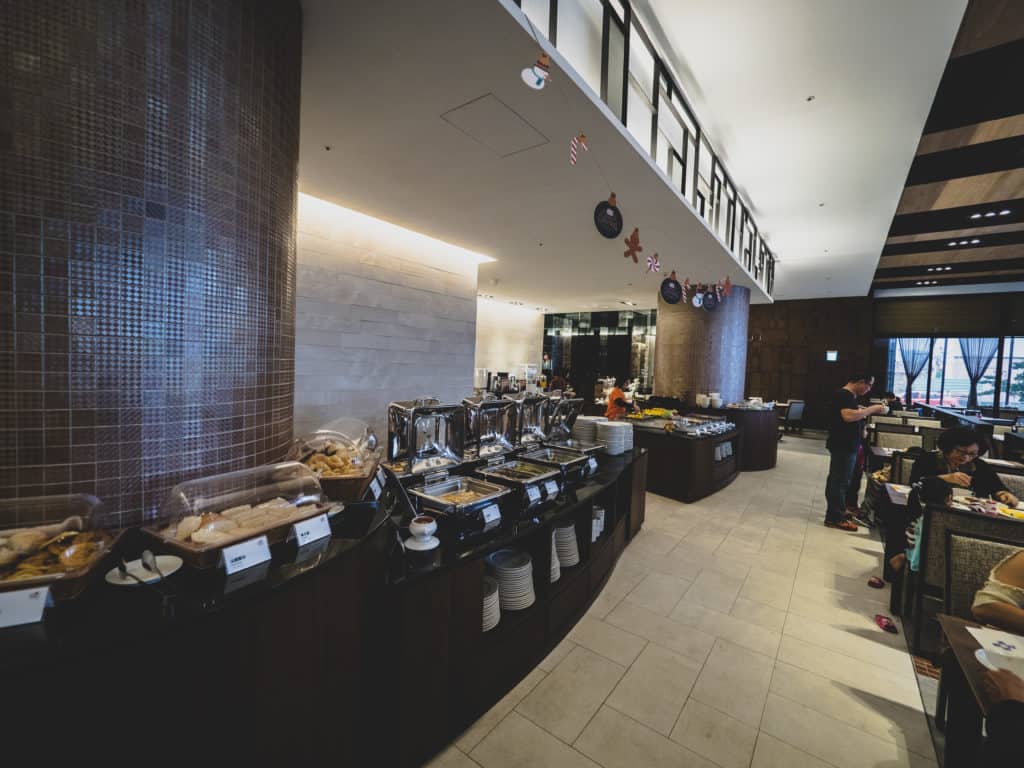
This is a practically brand new hotel in Kaohsiung which was a nice surprise because the room was modernly decorated, very spacious, clean, and comfortable. It’s also neighbour to the Kaisyuan and Jin-Zuan Night Market which is key because the truth is that it’s a little bit far from the centre of the city. Just note that Kaisyuan is closed on Tuesdays and Thursdays, and Jin-Zuan is only open on the weekend.
I usually don’t complain too much about location but once you’re off the subway, there’s quite a long walk without a true sidewalk to get to the hotel or you have to hail a cab which isn’t very convenient. As a result, we didn’t end up going back out the night we arrived. My recommendation would be to find a hotel closer to the Zuoying THSR station or Formosa Boulevard Station (where you’ll find Dome of Light) to avoid the long commute especially if you’er only staying the one night.
>> Day 5 – Artsy Urban Kaohsiung <<
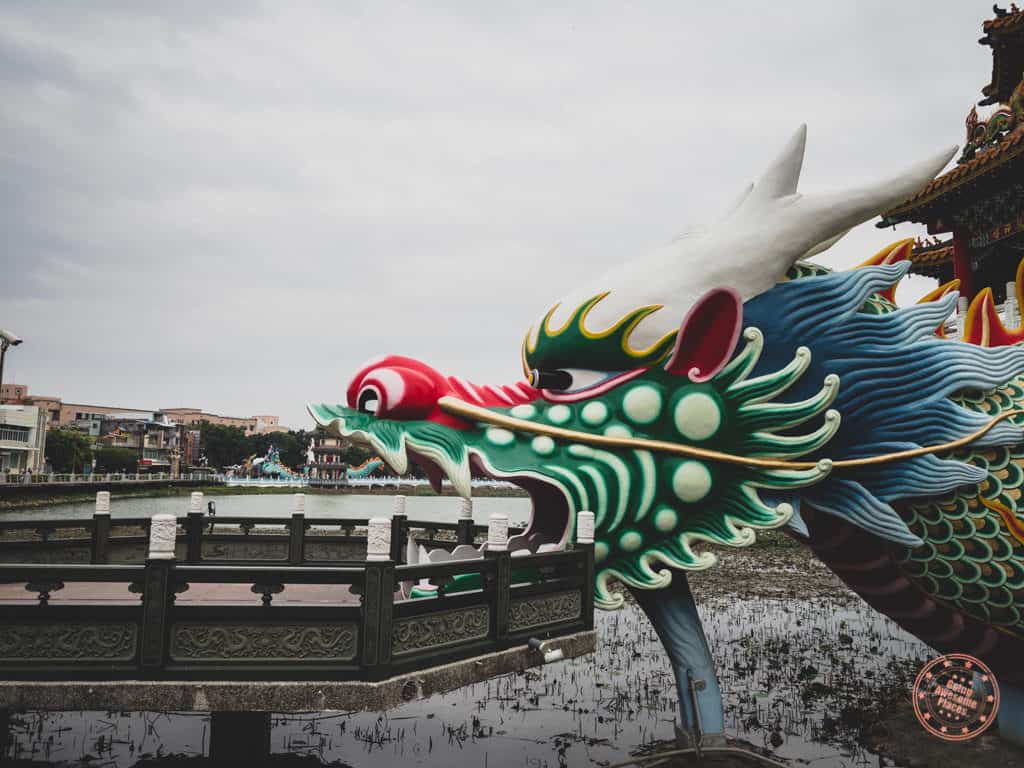
The southern city of Kaohsiung is Taiwan’s second-largest city is nothing like its bigger brother and that’s what makes it such a worthy destination. Where Taipei feels packed in, aging, and sprawling, you immediate feel that there’s so much more breathing room here with its wider streets and modern urban landscapes of skyscrapers, airy cafes, gentrified spaces, bicycle lanes, and ferris wheels on the tops of malls. There are less people rushing around, less cars on the road, and fewer people to be seen.
The biggest surprise of all was perhaps the vision the city had in converting a once-thriving industrial port into a hub of art, design, and entertainment. With its graffiti, art installations, galleries, trendy cafes, and boutiques, it’s the perfect place to wander. We kept making more and more discoveries here that what was supposed to be an hour-long stop turned out to be our whole afternoon.
This is your only day to explore the city before catching a shuttle bus down to Kenting so make the most of it!
★ Tiger and Dragon Pagodas
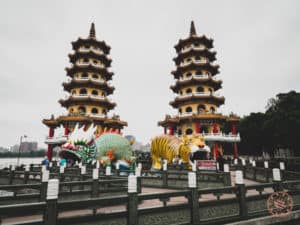
Feel down on your luck and looking for a way to turn things around? Look no further than this beautiful twin pagoda.
Run into the dragon’s mouth and out of the tiger’s mouth, said no one…ever! This little superstition has had locals and tourists alike running through to reverse one’s fortune for centuries. Now whether you believe in luck or not, you’ll still be impressed with the extraordinary detail of the largest paper mache dragon and tiger you’ll ever see.
Climb up one of the pagodas to get a great view of Lotus Lake and the number of other pavilions that line the shore.
TIPS: This is surprisingly difficult to get to mainly because it’s not on the subway line. To save time, I would suggest taking the cab there. We ended up commuting it and learned through a bit of trial and error that from Zuoying THSR station that you have to take the TRA train one stop south to Zuoying Station (I know, not confusing at all). This is where the kindness of locals came in .
★ Pier 2 Art District
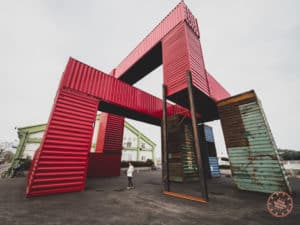
No one would’ve guessed that abandoned warehouses in Kaohsiung’s harbour would be the perfect spot for a quirky arts hub. What they’ve done is truly remarkable by bringing in local artists to completely revitalize an area to become a fresh urban space to spark commerce, tourism, and creativity.
Get your camera ready and strike a pose because you’re going to have a ball roaming through the vibrant spirit of my favourite spot in the city.
TIPS: If you keep going further down on Pier 2, eventually you’ll find SunnyHills which is a famous pineapple pastry shop in Taiwan. Go inside and you’ll be offered tea and a sample of their cake. It’s all free!
★ Dome of Light
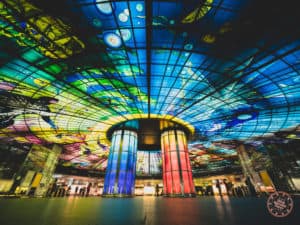
Located in the Formosa Boulevard Station, the main interchange stop on the MRT, this glorious display of coloured glass is something that will make anyone stop and stare for those passing through. What’s impressive about it is the scale of the public installation and how it feels like it belongs more in a Las Vegas casino than a subway station. When you come here, make sure to see if you can spot the four themes of Water, Earth, Light, and Fire.
What we missed: Cijin Island, Love River, and Ruifong Night Market
WHERE TO EAT ★ LUNCH: Gang Yuan Beef Noodles
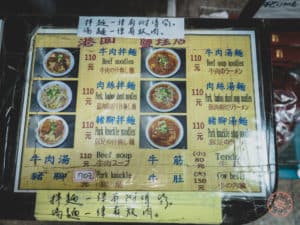
You can’t have enough beef noodles. That is a fact. Being in a new city, we wanted to try another favourite and were not disappointed. As far as beef noodles go, the noodles are perfectly cooked with the right amount of bounce, and the beef, a remarkable balance of fat, juicy, and tenderness. Now if I were a judge, I’d say Yongkang Beef Noodle has the slight edge for the soup base and impossibly tender pieces of beef.
The menu is pretty easy to understand here as there aren’t many choices and as a bonus, since they do get many international visitors, they also have an English menu right up at the counter.
★ SNACK: buonopops
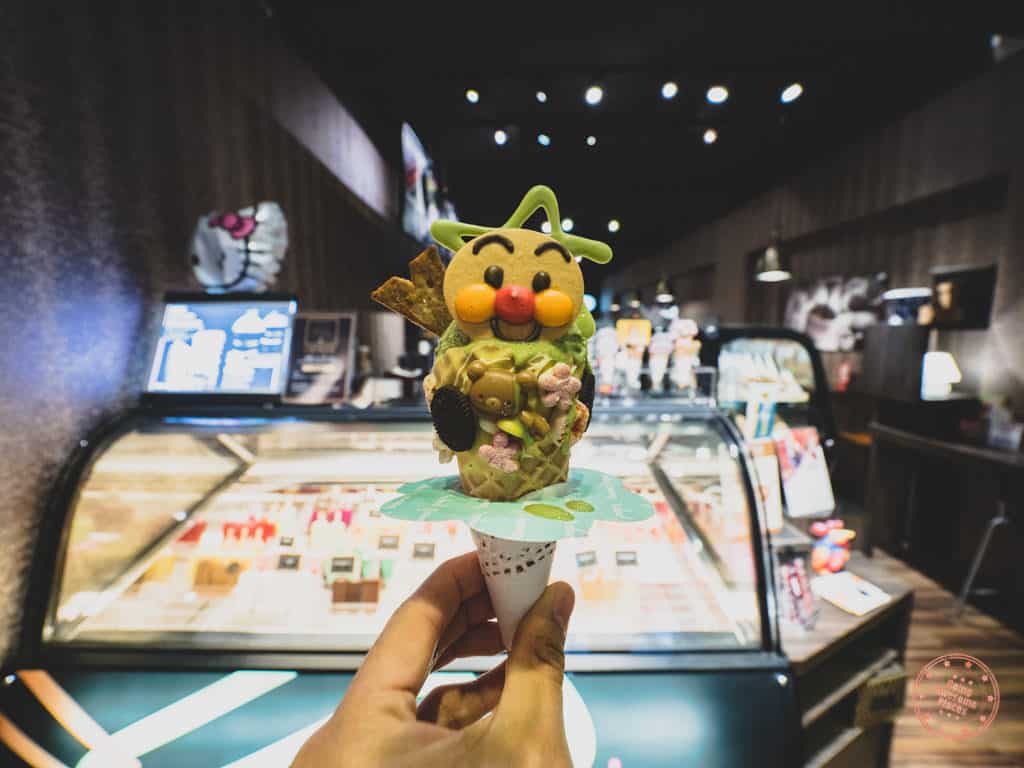
If you’re looking for Instagrammable ice cream, this is the place but when it comes to how it actually tasted, I don’t know if I’d be able to recommend it.
★ DINNER: A-Fei Restaurant
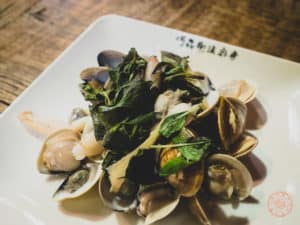
By the time we reached Kenting, it was quite late and so it was perfect that our hotel for the night also had its own restaurant downstairs. This was in fact the first time on our trip we had a sit-down dinner.
We ordered fresh seafood paired with stir-fried vegetables, rice, and beer with live music in the background which made for the perfect end to our day. A-Fei even came by to say hello and chat which was a nice welcoming touch.
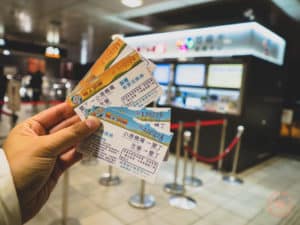
Luckily, getting to Kenting is pretty straightforward. When you’re at the Zuoying THSR station, look for a special booth that sells shuttle bus tickets to Kenting on your way down to metro station. The good thing about this shuttle is that it is quite frequent (practically every 30 minutes from 8:30AM to 7:10PM).
There are two ways you can pay.
- Discounted roundtrip tickets – $NT 600 which has an open ended return date
- Pay with EasyCard – This is already discounted but you’d have to pay the amount of fare required for each leg you make.
If you’re desperate or missed the last bus, there is always the sketchy local people standing at the bus stop offering people direct rides to Kenting.
TIPS: The roundtrip ticket is a pretty solid deal and definitely cheaper than paying through EasyCard. The only downside is that you can’t use your EasyCard credit to pay.
TIPS: If you have a luggage situation for your day trip exploring Kaohsiung, you can either leave your luggage at your hotel if it’s central enough or you can use the super convenient luggage lockers at the Zuoying THSR station. It only costs $NT 50 for 3 hours (little more than $1.50 USD).
★ A-Fei Surf Inn (2 nights)
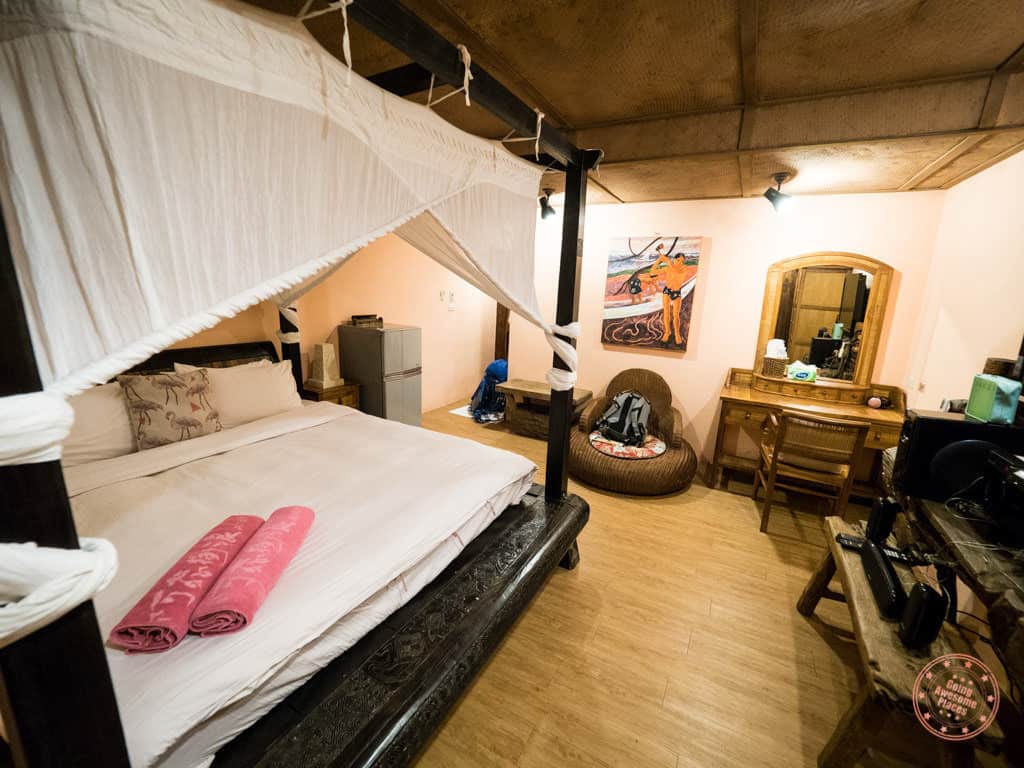
This was probably our big surprise hotel stay of the entire trip and I say that in a good way. Locals and travellers make their way to Kenting because they want to do one of three things: surf, beach, and party. A-Fei ticks off all of those boxes.
We were kind of dropped into this world of A-Fei that pretty much offers everything you would want or need. Want to go surfing? He’s got the gear, the transportation, and instructors. Want to go to the beach? Nanwan Beach is right across the street. Want to eat? Breakfast is covered, and they’ve got fresh seafood cooked to order for lunch and dinner. Want to party? They have live music every night and a super friendly owner in A-Fei himself that loves hanging out with his customers.
I haven’t even mentioned our room yet which is uniquely decorated with an eclectic yet appropriate mix of memorabilia from west coast surfing USA, wood carvings from Bali, and decor reminiscent of Hawaii. It’s a distinct hotel room that gives homage to the great surfing capitals of the world and has a chill vibe that made us feel at home.
>> Day 6 – The Surf Challenge <<
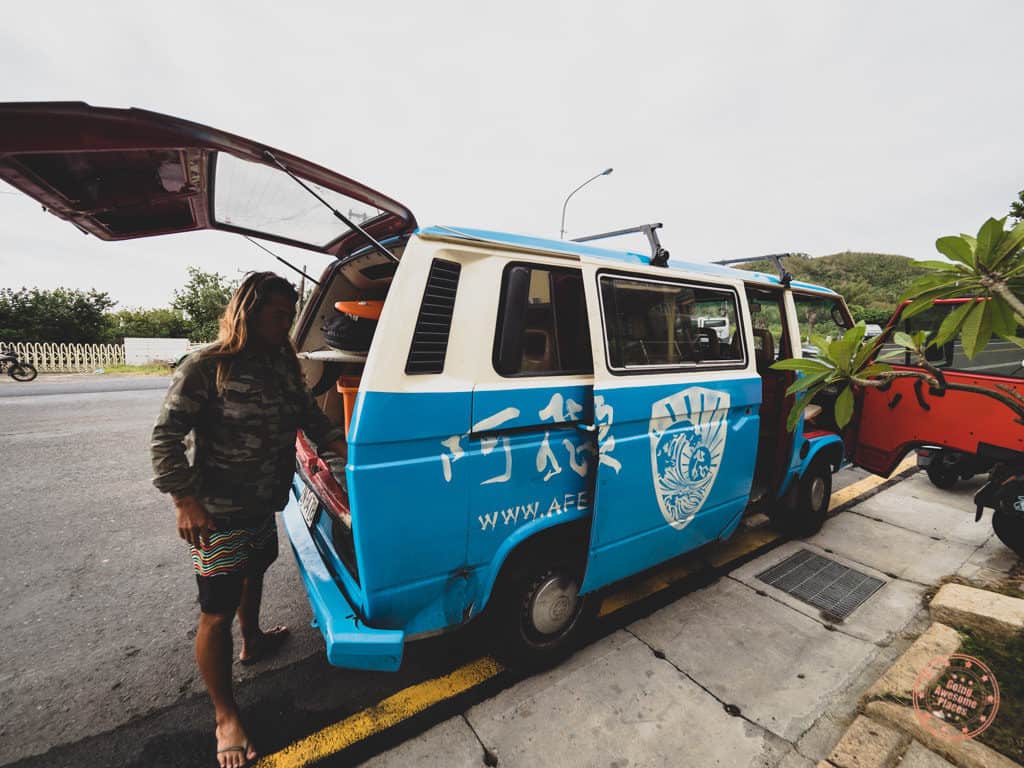
Kenting occupies the most southern part of Taiwan and is the country’s very own beach vacation destination with long stretches of sand, big waves, turquoise waters, rugged high cliffs, and low hilly terraces. Locals and travellers alike come to Kenting to escape and experience the outdoors in a carefree way. With the humidity and temperatures up a notch, there’s plenty of activities to do.
For us, it was the first time we were able to shed our rain jackets and long sleeves and were able to trade them in for shorts and flip flops – a much welcome change to our fast-paced schedule. In Kenting, we made the best of it with our mix of water and land-based fun.
★ Surfing with A-Fei Surfing
Staying at A-Fei’s was intentional in that we knew we wanted to go surfing in Taiwan at some point in time. Kenting is the perfect place to do it we learned in the winter as the wind was coming in from a northeasterly direction which meant that Taitung would be too strong, leaving Kenting more favourable for beginners.
We let A-Fei and his team know that we wanted to surf the night before and we were pretty much all set to go after breakfast the next morning. Practically everyone staying at A-Fei’s was surfing so we all got together at 9AM, grabbed our gear (rashgaurd, boots, wetsuit and board), and proceeded to load up a classic Volkswagen T40 hippie van.

Since the waves weren’t looking great across the street at Nanwan Beach, A-Fei decided that we would attempt the beach at Jialeshui which is also where he has his other surf shop and guesthouse (Nanu). We got dressed at the Nanu shop and went down to the beach.
We had grand visions of riding surf like pros in Kenting but as we got down to the beach and received instructions for where we needed to paddle to, it quickly became apparent that we were in way over our heads. With a no-fear mentality, we still jumped into the water with our boards and made it out to where we needed to be but the waves were simply too large for us and we floundered like poor helpless fish. The paddle back to shore was even more difficult as the waves were pushing us into the rocky shore as we tried to maneuver around. I ended up being smacked on the head with my board and my wife in the shin.
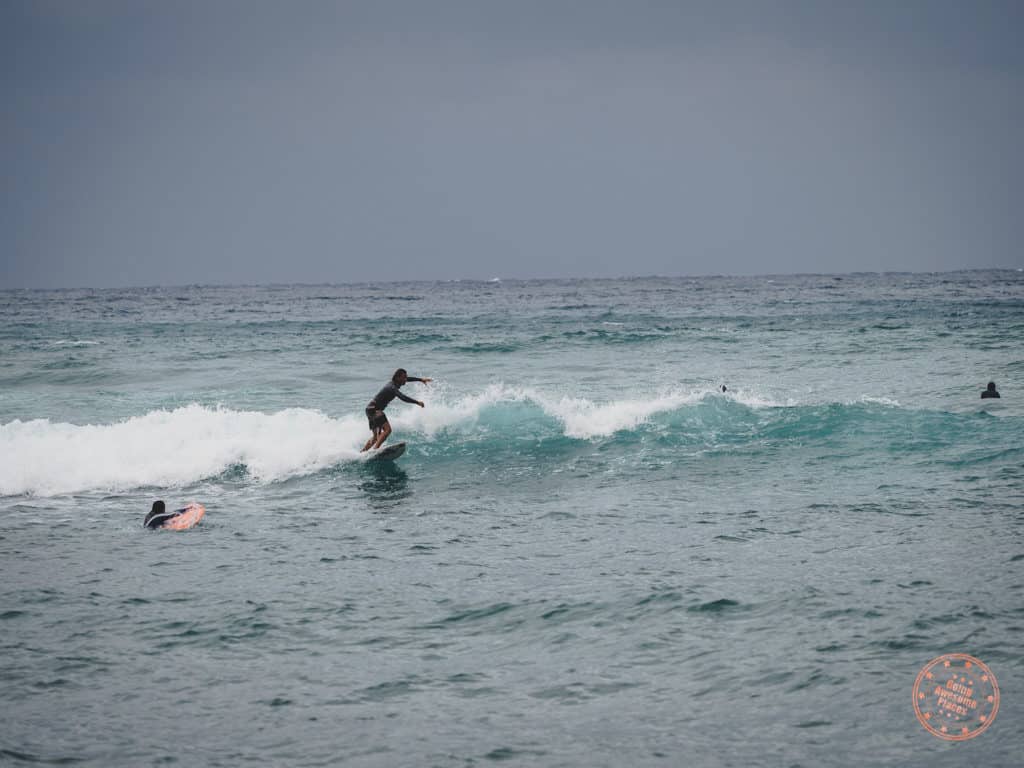
Overall, I thought the surfing operation was run quite smoothly end to end where as a group we got transport to the beach, had a place to store our clothes at the Nanu shop, could rinse off, and be driven back to Nanwan. From the beach, I could see that the others were able to rock some serious surf. You just kind of needed to know what you were doing.
Cost: $NT 700 for gear rental (board, booties, and wetsuit)
TIPS: If you’re a beginner like us but have done a few lessons already, let them know that you want to do the beginner surf or tag along one of the introductory lessons. This way you only have to pay for rental but still be within sights of an introduction instructor.
★ Scooter Adventures
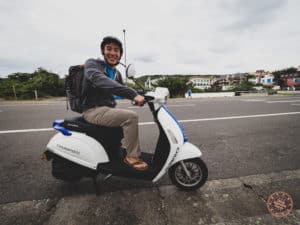
The best part about Kenting isn’t necessarily any specific beaches or sights but it’s the chance to live like a local and drive the most popular form of transportation. You see scooters all over Taiwan but in the big city it’s a little overwhelming so when you get the chance to do it in the tropical south, you have to jump on the opportunity.
What we soon learned though is:
- Beyond the fun factor, you kind of need a scooter in Kenting because there isn’t much of public transit there
- It’s not very easy to rent a scooter as a foreigner – gas powered scooters require a special Taiwan license and battery powered scooters require experience
A-Fei suggested a nearby scooter shop which we visited but when they asked if we had ridden a scooter. I replied honestly “no”. Initially, they said it would be too dangerous for us but then called his boss and said that he would give us a lesson in their other store.
We got picked up and driven to their main store. The lesson itself was pretty simple but I’m glad that they spent the time to teach me how to drive it, do things like make turns on streets, and what not to do. They even watched me drive up and down the street. Once we got the go-ahead, we signed some basic papers and we were on our way.
At this point it was already past 3PM so she charged us half a day’s rental for $NT 500 including the discount since we were guests of A-Fei’s. The nice part is that they said we could return it anytime in the night since they live upstairs and that they’d be able to give us a ride back to our hotel.

We didn’t have too much time to explore all of Kenting on a scooter but did manage to hit up Sail Rock and Eluanbi Lighthouse before turning back around to do the night market.
TIPS: Kenting is honestly hard to enjoy without a scooter or your own transportation simply because there isn’t much in the way of frequent-enough public transit. Without a scooter, you’re more or less stuck in whatever part of town you’re in.
What we missed: If we had more time, we would have loved to have done a full loop around Kenting and make more stops along the way. ATV-ing was another popular Kenting activity that would’ve been fun to do.
★ LUNCH: A-Fei Restaurant
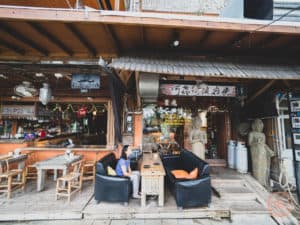
A-Fei convinced us to have lunch at his restaurant downstairs which actually worked out quite well since our room is right above the restaurant. Throughout the morning, he was telling us about his awesome pork and lamb dishes so we couldn’t refuse.
A-Fei hustles hard but he wasn’t kidding about how fresh and tasty his food is. If you’re staying at A-Fei’s, it’s definitely a good idea to have at least one main meal there.
★ DINNER: Kenting Night Market
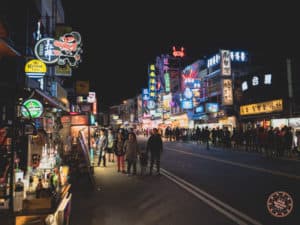
There’s no livelier place in Kenting than the night market along the main downtown drag. What’s incredible about it is that it’s the main artery through the town with regular car traffic passing back and forth but amidst it all are portable carts that get rolled in and massive crowds fill in once the sun goes down.
As far as the food goes, it’s a lot of the standard fare that you’re going to expect to see at any night market. We had an assortment of pastry, fresh coconut, green onion cake, “sausage in a sausage”, bubble tea, and ice cream to round out our meal for the night. There wasn’t anything unique per-say but it was a fun way to cap off our day and having our finger on the pulse of the town.
>> Day 7 – Fly With The Wind <<
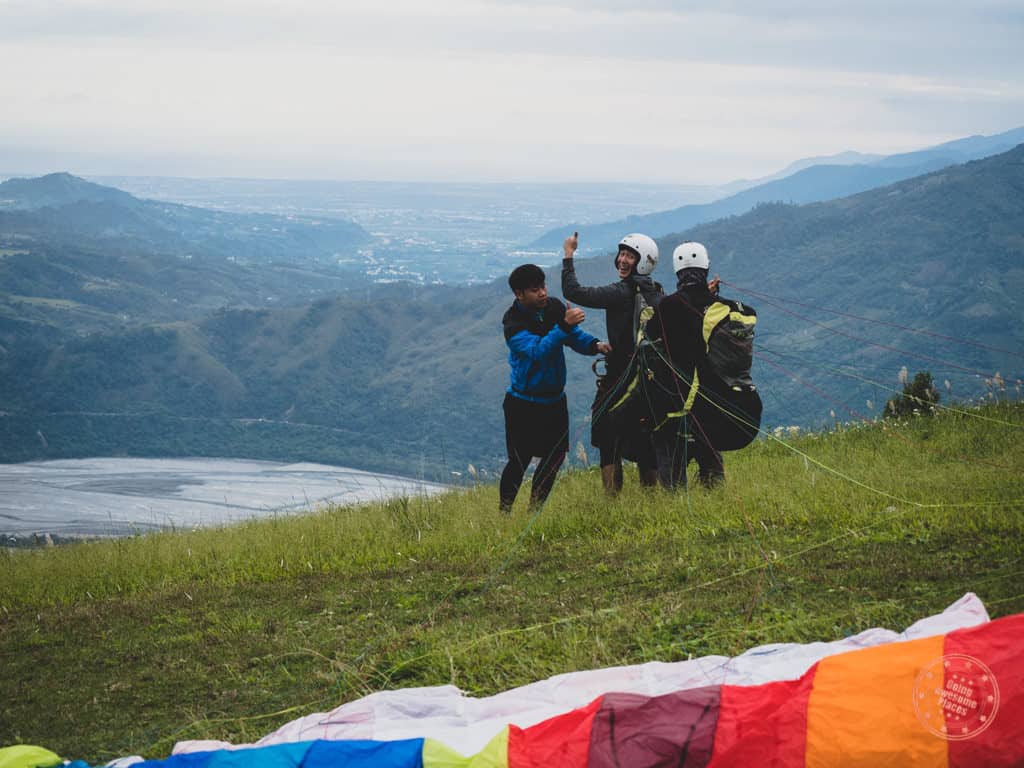
Continuing along the coastline, arrive in the city of Taitung. On the onset, it may not feel remarkable as a destination on its own but stay a few days and you’ll slowly be able to unravel adventure, ecological, cultural and culinary gems that have led to it being dubbed as “garden of Taiwan”.
After a half day commute from Kenting to Taitung, we settle into our hotel for the night but the biggest surprise was to come. I had read that paragliding was a popular activity in the region. Having been yearning to do it for years now, I knew that I had to pounce on this opportunity. With a contact I found online, we called to find out what the situation was. Through my broken Mandarin, I learned that the winds were starting to change and that if we wanted to do it, it had to be that day. We immediately packed our things and hauled ass out of there.
The paragliding experience was a dream come true for us. Soaring through the sky with our feet dangling over the expansive farmland below and surrounded by the vastness of mountains and valleys, my fear of heights was immediately dashed. The crazy thing is that I got to do it twice too.
Getting to Taitung
From Kenting, you have to take the shuttle bus back towards Kaohsiung but get off a little earlier in a place called Fangliao. It’s here where you catch the local train that will take you straight into Taitung.
Getting to Luye Gaotai
Waiting for the tourist shuttle bus would have taken too long and so we got our hotel to hail a cab for us. It cost us $NT 700 (~$24 USD) but we managed to get to paragliding spot by 3PM.
Getting Back to Taitung From Luye Gaotai
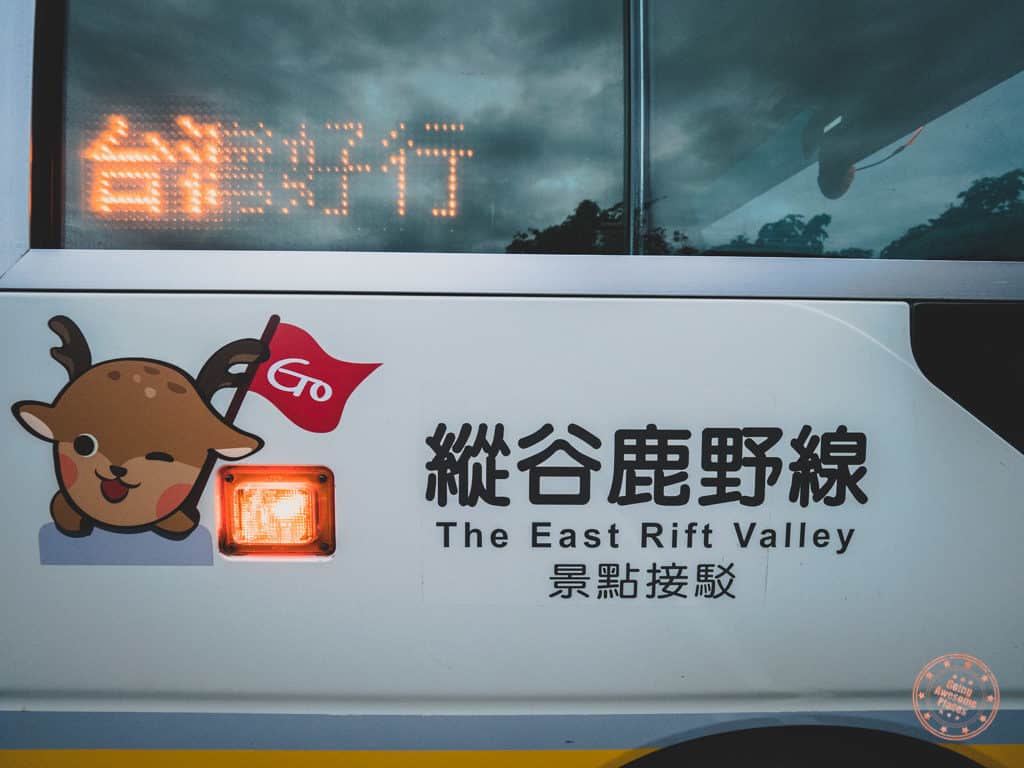
This was a bit of an unexpected adventure for us. We knew from our printed bus schedules that there was one last tourist shuttle bus at 5:10PM. We started our way down when we learned that there was a cheaper way back to Taitung via a train from Luye. We got to the train station at 5:27PM but we soon learned that we had to wait until 6:40PM which gave us time to grab a spontaneous dinner with our new Taiwanese friend. In retrospect we should’ve just stayed on the bus because we would’ve gotten back in the city by 6:30PM.
★ Soaring Paragliding (翱翔飛行傘)
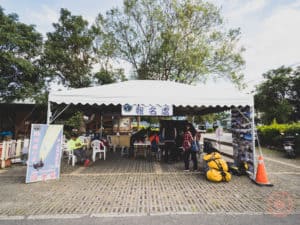
The two places I knew we could do paragliding in Taiwan was near Taitung and Hualien. With two days in Taitung, I knew that this was the best spot to do it and it worked out fabulously for us. Perched up on a giant hillside, Luye Gaotai is the perfect place for paragliding with its cliff that overlooks a chessboard of farmland.
For the full experience, read more about it .
Cost:
- $NT 2500 for a minimum 10 minutes or $1800 for 5 minutes ($60 – $84 USD)
- $NT 400 to rent an action cam (GoPro extendable stick free to rent if you bring your own device)
- Phone: Mr. Chen +886-956 377 533
- Website: Facebook Page
TIPS: If you look online, you will no doubt find activity aggregators selling packages for paragliding but the truth is, there’s only one operator in the Luye Gaotai area and it’s Soaring Paragliding. Also advisable to call a day before you get to Taitung to find out what the weather conditions are like. It helps to speak Mandarin but with how friendly they are there, I’m sure you’ll be fine with English.
TIPS: Make sure to bring your passport for registration purposes.
★ DINNER: Fried Chicken and Tofu
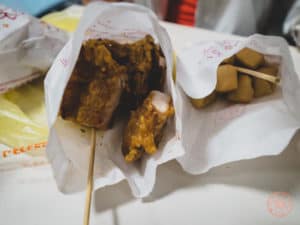
Another on-the-fly meal we had as a result of our transit improvising. With the help of our local friend that we met along the way, he pointed out a popular fried chicken spot along the main street of Luye which turned out to be quite amazing. The chicken was fried to perfection in that Taiwanese popcorn chicken flavour tossed with salt and pepper. Equally as incredible was the fried tofu which was probably an even more of a surprise of the night.
★ MATA Indigenous Cultural Resort
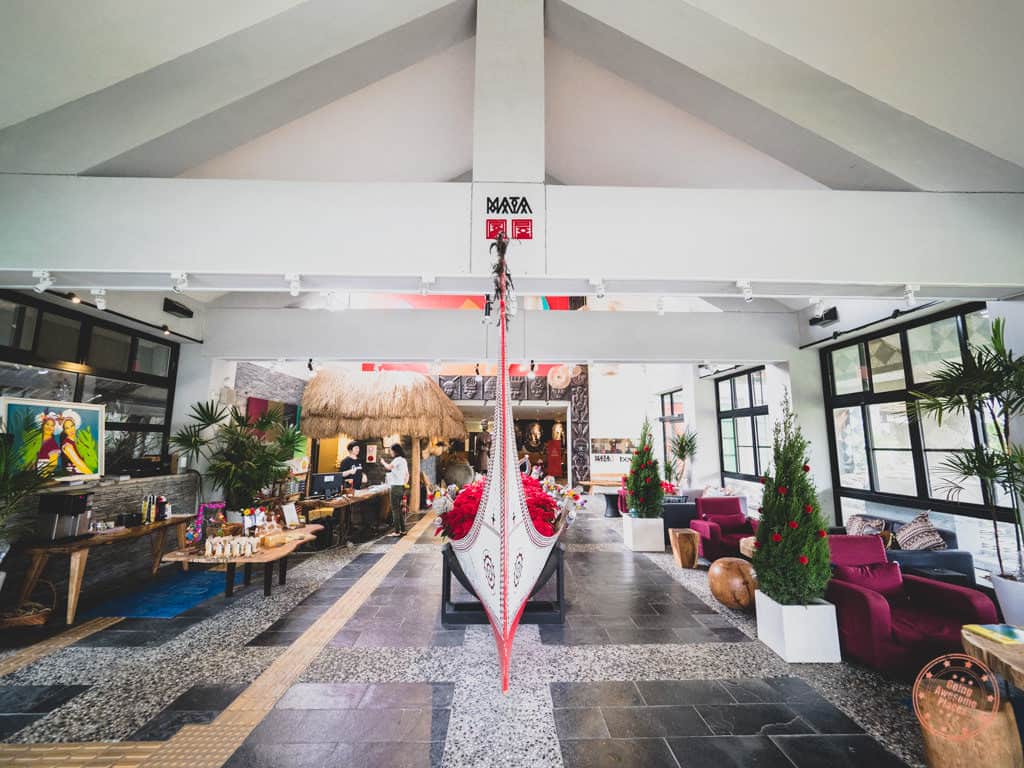
I honestly have mixed feelings about this “resort”. In seeing the name of the property, you’d expect that they’d have a full-fledged indigenous cultural experience available for guests but upon arrival, all we got from the receptionist was a feeling of “there might be a performance tonight…maybe?”
The property itself is beautifully built with a giant replica of a wooden boat used by one of the tribes and other various artifacts on display. Outside, there’s also a large field that I can only presume is used as a stage for performances but perhaps it’s only used during high season or if there are large tour groups.
On one hand, I loved the hotel for its clean and spacious room, and amazing breakfast but couldn’t help feel shafted that we got absolutely no culture other than the visuals and CD that was played in the lobby.
TIPS: Bike rentals are free for 3 hours but if you want to take it out for longer just let them know. If they’re not busy, it shouldn’t be an issue.
>> Day 8 – Ridin’ in Taitung <<
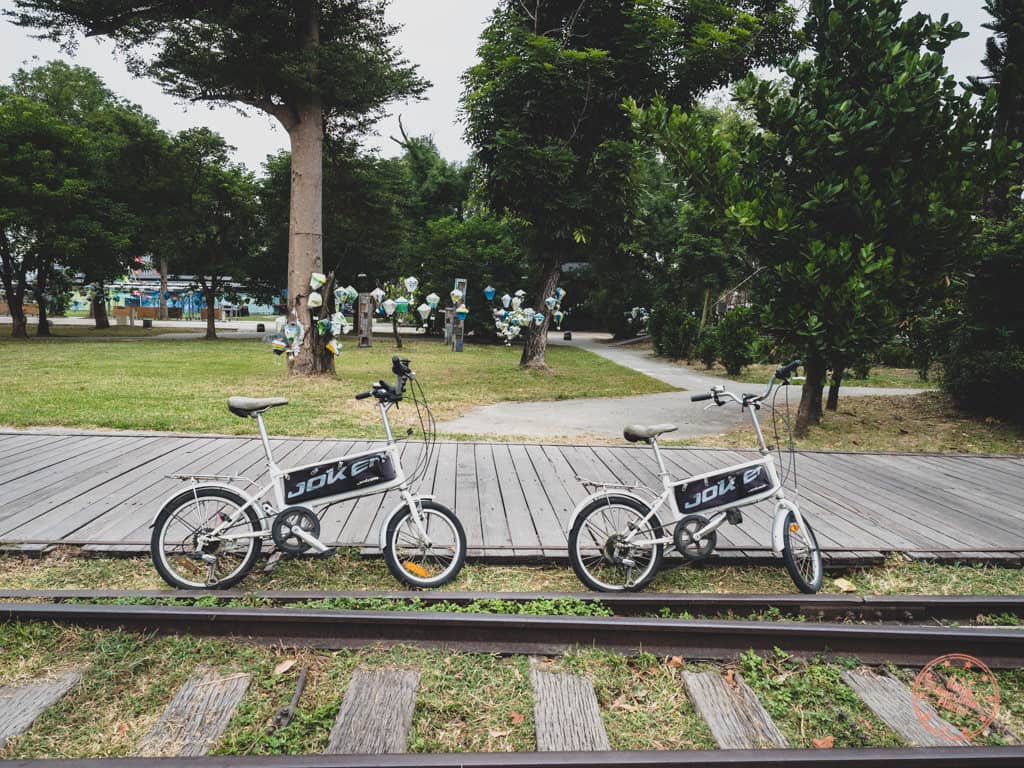
Taitung is truly a remarkable stop along the journey around Taiwan as it faces the sea, is set against mountains and is rich in aboriginal heritage. In fact, the city and its surroundings boasts the most prehistoric sites in Taiwan, which means there are many natural offerings and cultural centres that explore the long history of indigenous people.
While we would have liked to have visited one of these cultural centres, our schedule and timing meant that it wasn’t possible. As a result, we decided to take our free bike rentals from the hotel and explore the city on two wheels. This turned out to be a lot of fun, being able to leisurely weave through public spaces, parks, and the downtown area. The best part of the day turned out to be the food.
TIPS: Cultural centres are closed on Mondays so if you hope to visit them, schedule around this.
★ Taitung Forest Park & Seashore Park

These two parks are perfectly designed for the bicycle. With its expansive network, you’re free to wind through the park and experience Taitung’s laid back lifestyle and clean ocean air. The most surprising parts here are certainly the undeveloped rocky seashore which has quite the unique view, an enormous man-made lake that is popular for swimmers and rowers, and birds nest-like lookout platform.
Entrance fee: $NT 30 for the Forest Park
TIPS: If your hotel doesn’t have bike rentals, the forest park has bikes for rent for $NT 100 for 3 hours.
★ Old Taitung Railway Station

In the centre of the city is the old train station that used to run through. It’s an open-air museum/art village with the remains of an old train that you can climb into, and a repair terminal complete with the remains of signal lights. In the surrounding space, you’ll also see the development of new art spaces that are just in the final stages of building.
What we missed: Sights along the East Coast Line: Xiauyeliu Scenic Area(小野柳), Jialulan(加路蘭) Donghe Steamed Buns(東河包子), Amis Folk Center(阿美民俗中心), and Sanxiantai(三仙台遊憩區).
★ LUNCH: Rong Shu Xia Rice Noodles (榕樹下米苔目)
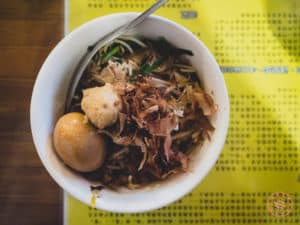
This restaurant is highly recommended in Taitung and with good reason. Along one of the main drags of the city, this place is hard to miss with its long lines that wind out from the restaurant. What makes this place special is its rice noodles which have the thickness of udon and freshness of hand-pulled noodles. They’re also special in that they’re very short and in an elongated teardrop shape.
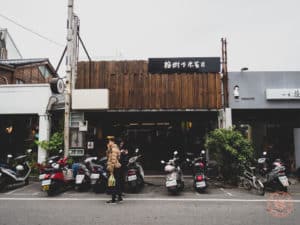
The ordering process is a bit different than what you might be used to but essentially while in line, you have to fill out a piece of paper. You also need to have a table number by the time you order so if you can, get your partner to grab a seat somewhere first. Drinks are also pre-made so after you order you grab them from the person working by the refrigerator. Sounds complicated I know but you’ll figure it out eventually. They also have English menus so ask for that if you don’t get one right away.
Other must-try items are the local pork with vegetables (side dishes behind the glass display) and the pineapple iced tea.
★ SNACK: Chen’s Mochi
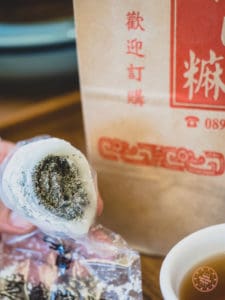
If there’s a king of mochi, I think I’ve found it. Look through the glass window and watch the mochi masters knead fresh sticky rice flour and roll them into balls to the eventual final product. They serve up the most delicious of sticky rice desserts with my favourite fillings including black sesame, peanut, and red bean.
TIPS: If you miss Chen’s in Taitung, don’t worry because there’s always Hualien which is also well-known for mochi.
★ DINNER: Dongdamen Night Market

This was perhaps the most disappointing of night markets. Ironically it was probably the most organized, with the night market on a dedicated plot of land, wide streets, and permanent stalls. To me, it lacked the grunginess of night markets, character, and a little bit of the chaos. We also showed up late in the night which meant the streets weren’t very busy. Personally, I think I prefer large crowds at night markets because it also means there’s quick turnover of food and nothing sits for too long.
Where we actually wanted to go was Dai’s Dumpling but when we got there, it was closed for the holidays.
★ Azure Hotel
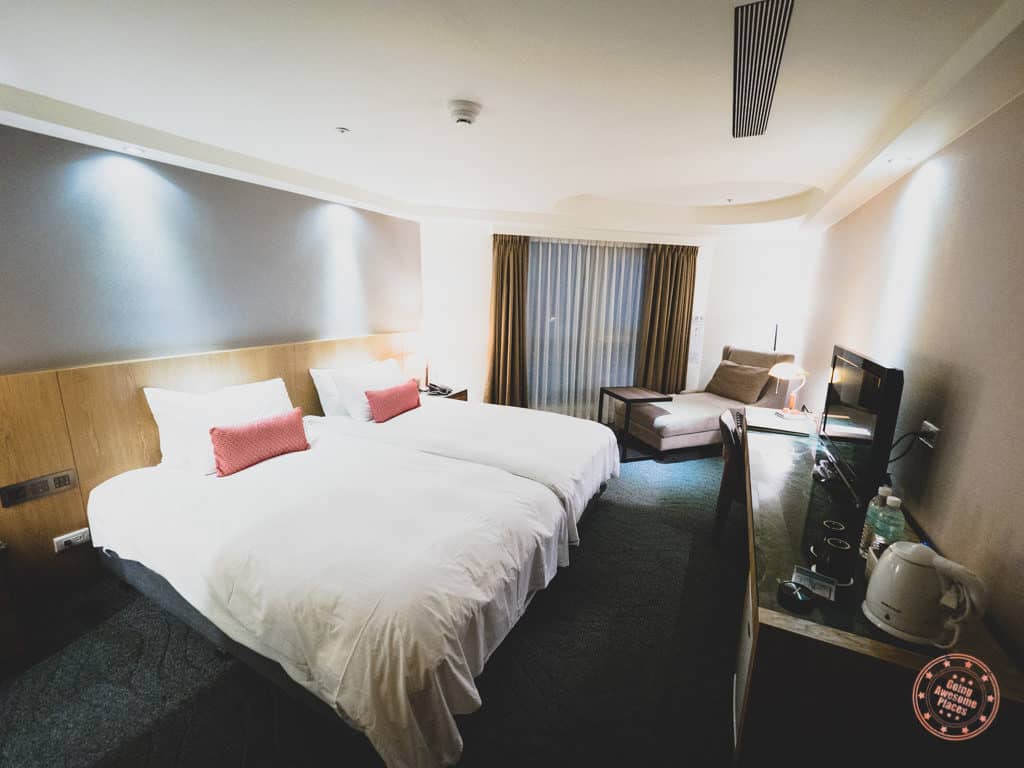
The check-in process was very smooth, and the room was 4 to 5-star calibre. What made this hotel a great to place to stay was the fact that it is on the main street that runs through Hualien which means everything is walking distance. And then there’s the breakfast buffet which is as good as any other that you’ll see in Taiwan except it also has its own DIY noodle bar – the cherry on top!
Since we knew we were going to do a two day hike through Taroko, we spent the evening re-organizing our packs to only carry the essentials. For everything else, we stuffed another backpack to leave behind. The hotel was great in allowing us store this bag for an extra night.
TIPS: To get to the hotel from the train station, there’s no easy way with the bus so hop on a cab once you arrive in Hualien.
>> Day 9 – Taroko Tribe In The Mountains <<

Taroko, in the local Truku aboriginal language, means “magnificent and beautiful”. When you set your eyes on mountainous landscape, bio-diverse vegetation, turquoise rivers, and marble-walled canyons, you’ll see why this is one of Asia’s top scenic wonder.
There are magic places in the world. This is one of them.
While many travellers take one of the stream of tour buses that come through the main gate and jam all the sights in a day, we wanted to do something a little more unconventional. Everyone’s seen photos of the 18km stretch of Taroko Gorge that make it to postcards but few have seen it from the point of view of the indigenous tribes that still live in the tranquility of the mountains. With our 2 day trek up to the villages of Datong and Dali, there was the promise of us being able to dig deep into local culture and take in a slice off nature that travellers rarely ever see.
★ 2-Day Guided Hiking Tour

If your goal in Taroko National Park is to hike through challenging terrain, interact with indigenous tribe members, and take in incredible mountain scenery way above the clouds, this is the activity for you. It is by no means easy, so my word of caution is that if you want to do this trek, you need to be physically fit and have some experience with long hikes with long portions of uphill and downhill.
The hike doesn’t have a specific name that you can look for but what it is a chaining of several trails that ultimately take you up to the villages of Dali and Datong before you descend back down to the end of the Shakadang Trail.
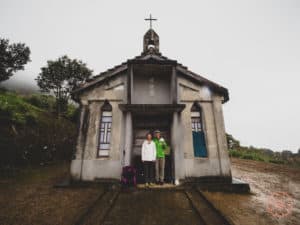
Your first day in Taroko consists stair climbing along Dekalung Trail, a visit to Dali Village, before meandering through the side of the mountain along an old logging road. All of this leads to the arrival of a B&B built by a local Truku tribe member, named Dadao. With diminishing sunlight, you’ll be able to look out into the nearby mountain peaks, mystical clouds, and Datong village below.
After settling in and showering (yes there is running water!), your host cooks a fabulous dinner.
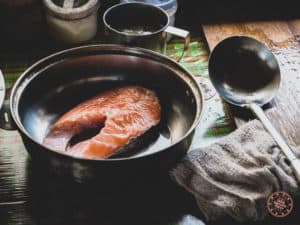
My favourite part was sitting around of the campfire and having simple conversation with the guide translating for us while sipping on a cup of hot tea and listening to the crackle of the firewood.
Hiking Trails: Dekalung Trail -> Dali Trail -> Shakadang Logging Road
- This tour was booked through MyTaiwanTour and the details are as follows:
- Hiking permits
- Transportation (pick up and drop off)
- 1 night accommodation at the tribe B&B
- Dinner and breakfast
- Travel insurance
Cost:
- 1 person: $NT 22,600
- 2 people total: $NT 24,800
- 3 people total: $NT 27,000
- 4 people total: $NT 28,700
TIPS: Your guide picks you up and will park at the national park overnight. This means that you don’t actually need to store your bags at your hotel.
★ LUNCH: 7-11 Food
Before heading into Taroko National Park, we made a stop at a 7-Eleven and picked up additional supplies for our trek. We stocked up on water and also a few onigiri (Japanese rice triangles) which is perfect hiking food. Plus we had extra mochis from Chen’s.
★ DINNER: Cooked by Ah-Ma

I don’t know if we were just ridiculously hungry but our 7-course meal hit all the right spots. With fresh supplies brought from the city, Ah-ma cooked an assortment of salmon, chicken, fresh vegetables, tofu, and soup that was clearly too much for the 4 of us. What amazed me was how she was able to cook such delicious dishes even with the limited amount of supplies, equipment, and appliances.
★ Truku Tribe B&B

Considering you’re high up in the mountains and away from civilization, it’s a marvel that a house of concrete, wood, and corrugated metal sheets could even exist. I had pretty low expectations of the B&B before coming but was surprised to learn that they had running water, hot water tank, a proper toilet, electricity for lights, and propane for cooking. To top that, the dorm rooms are fashioned similar to Japanese ryokans with clean laminate flooring, sliding doors and furnished with mats, blankets, and pillows. Sure it’s not a 4-star hotel but more important to me was the hospitality of the host and that surprised us with the luxury of shower and toilets.challenging
To temper your expectations, you have to understand that the B&B is a structure built by Dadao himself for the express purpose of being able to host hikers. This means that this isn’t a representation of what a real village home is like. The other thing is that this home is perched high up in the mountains away from any other villagers so you’re also not going to be amongst a community of Truku families.
>> Day 10 – Shakadang Is My New Favourite Word <<
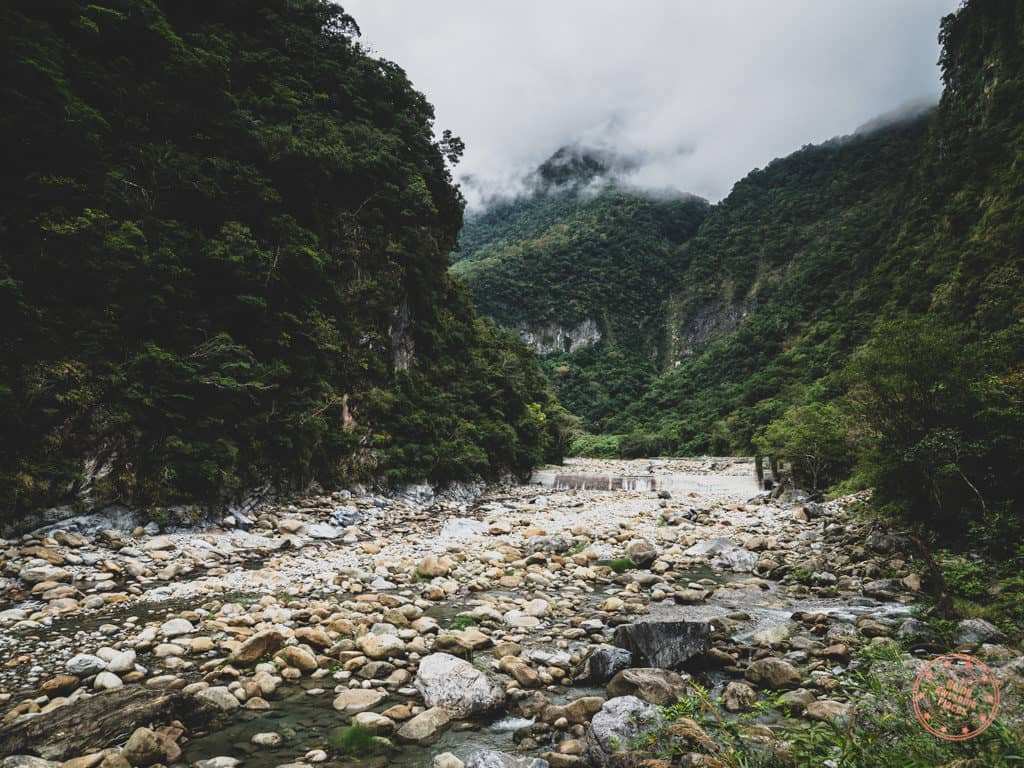
This day is about contrasts. The views you get at the top of the mountain dramatically change as you make your way back down to the blue-green Shakadang river which is filled with large perfectly-round boulders, and jagged walls of marble.
You’ll feel pretty gross by the end of it all but when you finally get back to Taipei, that shower you take will be the best thing ever.
★ 2-Day Guided Hiking Tour
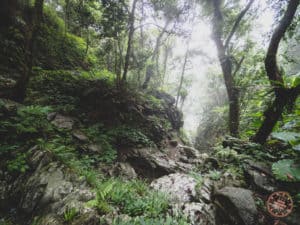
The second day of hiking is possibly even more challenging than the first because a section of the hike takes you through a trail that has typhoon damage. On top of the on and off rain, and muddy conditions we had, there are a number of natural and man-made obstacles you’ll need to ninja through. None of it is particularly dangerous but you’ll want to make sure you watch your step. I came out of it with my legs completely shot and feeling wobbly every time I stopped for a break.
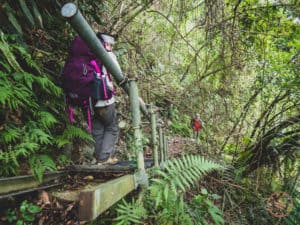
The best part of the day was when we finally made it to the Shakadang Trail after 3.5 hours of downhill punishment. I remember holding up my arms in the air and shouting “WE DID IT!!!” in relief.
Along this famous trail is where we got our first glimpse of the beauty that Taroko National Park is known for – naturally carved out canyons where turquoise water pass through rock overhangs and multi-coloured marble boulders. Along the way, there’s also a small Truku tribe market place where we devoured the best sausage of the entire trip.
Highlights of what you’ll see:
- Liwu mountain peak with views of the ocean on the other side
- Datong Village
- Dramatically changing scenery as you make your way down
- Shakadang Trail
Hiking Trails: Datong Village Trail -> Tongli Trail -> Trail down to Sanjianwu -> Shakadang Trail
TIPS: The mountain is always 2-3 degrees cooler than at ground level so make sure you prepare your layers when packing for a trek like this one. You also never know when you might get hit with rain so you’ll also want to pack the appropriate waterproof gear which at a minimum should include a jacket, waterproof shoes, and rain cover for your bag.
★ Ximending Youth Shopping District
With its abundance of bright lights, shops lining the maze of streets, trendy shopping, and a nightlife, it’s no wonder that it’s been called the “Harajuku” of Taipei. Unlike a traditional night market, there’s more than food here which makes it a great place to wander.
★ BREAKFAST: Tribe Breakfast
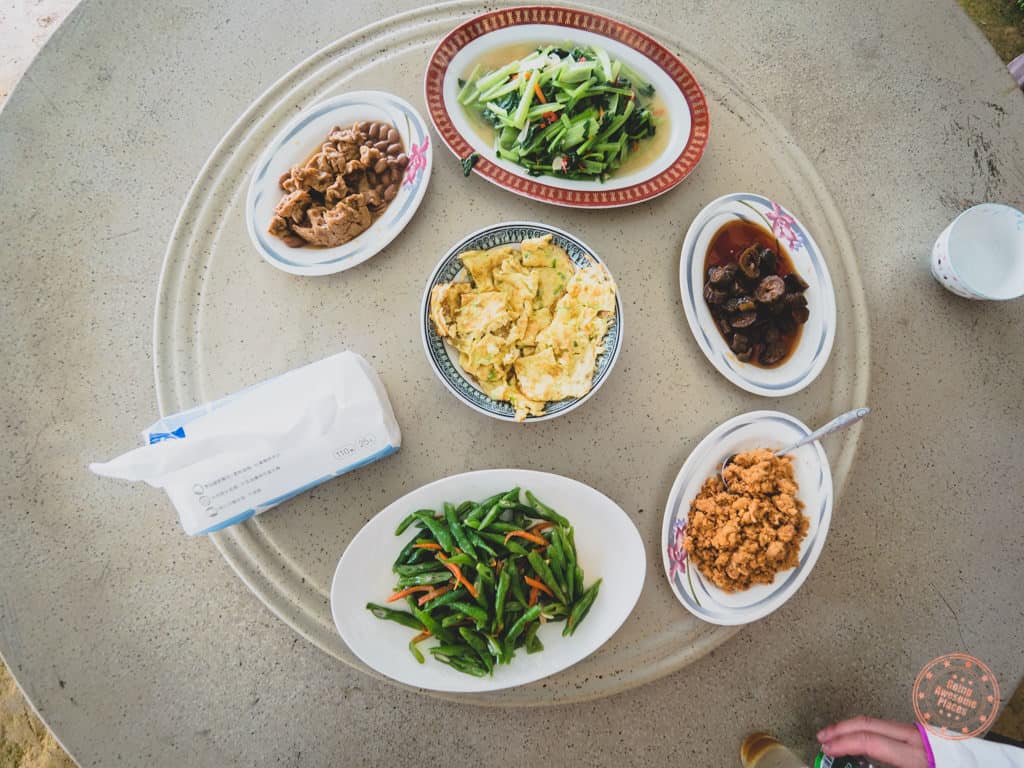
Ah-Ma cooked another great meal for us that was way more food than we could finish. It was all the energy we needed to last until dinner as we had quite the catchup we needed to do on our way down.
★ SNACK: Shakadang Trail Sausage
Whether you do the Shakadang Trail on your own or as part of a trek, you MUST stop at this stall for these home-made sausages. With a magical mix of ginger, honey and who knows what else, you won’t find this anywhere else in Taiwan.
★ DINNER: Ay-Chung Flour Rice Noodle
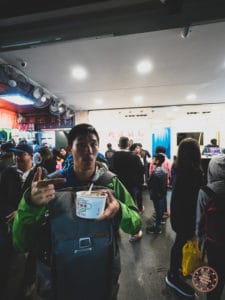
This shop is impossible to miss with its large crowds of tourists either slurping away or queueing in anticipation. The good news is that the lines move very quickly as they efficiently fill up bowl after bowl. What makes them special is that they make a unique style of rice noodle that is completely different from the ones we had in Taitung. Extremely thin and flat, these noodles are similar to some of the noodles you find in Vietnamese Pho but in a thick and somewhat gelatinous soup base. Mixed in the broth are diced bits of pork intestines which may turn some off but is honestly as indistinguishable as tendon or tripe in pho.
Taking the train back to Taipei turned out to be a bit more of an adventure than we expected mainly because we took way too long to get back down and we missed our originally booked train.
The way the drama played out is our original train was supposed to be at 4:30PM but by the time we left Taroko National Park, it was already 3:45PM. Rushing to the Hualien train station, our guide tried to get our tickets switched to a later train but were told that we could either swap them for a slower train that would arrive late in the evening. Otherwise, if we wanted anything earlier, we would have to forfeit these tickets and get them ourselves. Not wanting to get into Taipei so late especially considering how long of a day we’ve had already, we made the no-brainer decision to buy new train tickets for $NT 340 per person ($11 USD).
★ WESTGATE Hotel (2 nights)
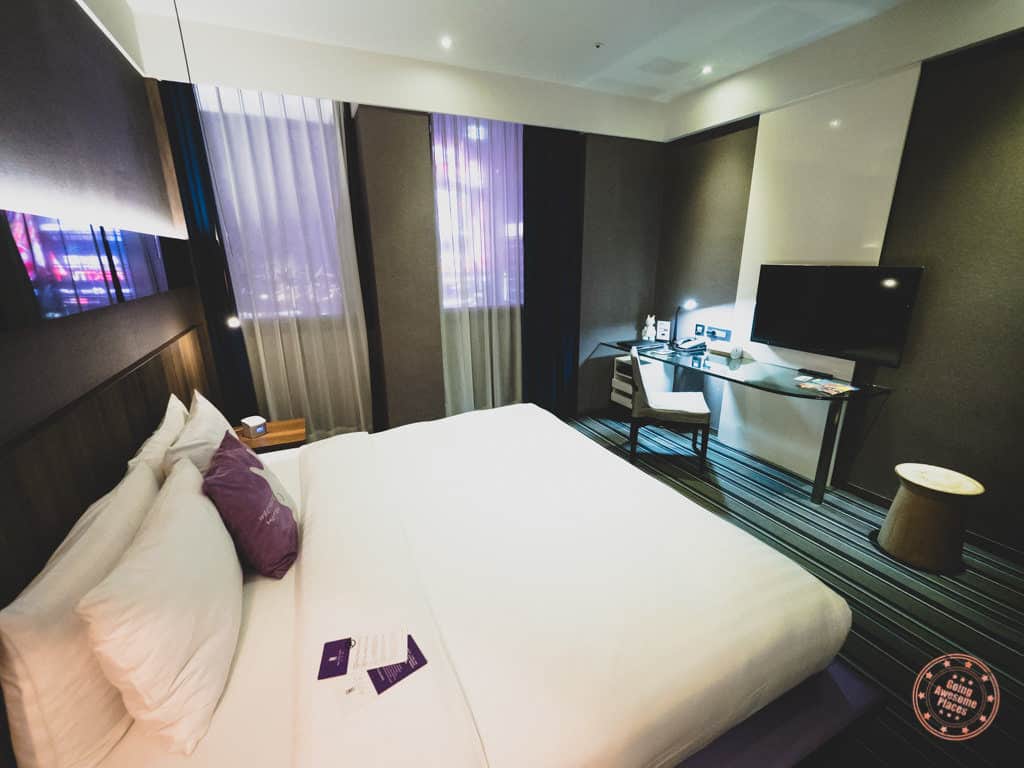
We couldn’t have asked for a better hotel in Taipei. Located right at the doorstep of Ximending and seconds away from the subway, it was overly convenient to get around the city and at the end of the day, we could always come back to the hotel and get our fill of more food and snacks before heading home.

Upon entering the hotel, you immediately notice that the boutique and modern lobby is both welcoming and luxurious. From the check-in to check-out the staff were extremely courteous and friendly, willing to help at every turn. What I loved about the property is how one-of-a-kind artwork can be found all over including my favourite sculpture of two boys free falling off Taipei 101 with their suitcase in hand.
The rooms themselves are spacious and a modern open concept where we felt immediately at home after a weary day of travel. The bathroom is elegant and clean while the bedroom is cozy, and beds overly comfortable.
For breakfast, expect to be tempted with plenty of tasty Asian and Western foods, and great service from the wait staff.
>> Day 11 – Zen, Heat and Fishing <<
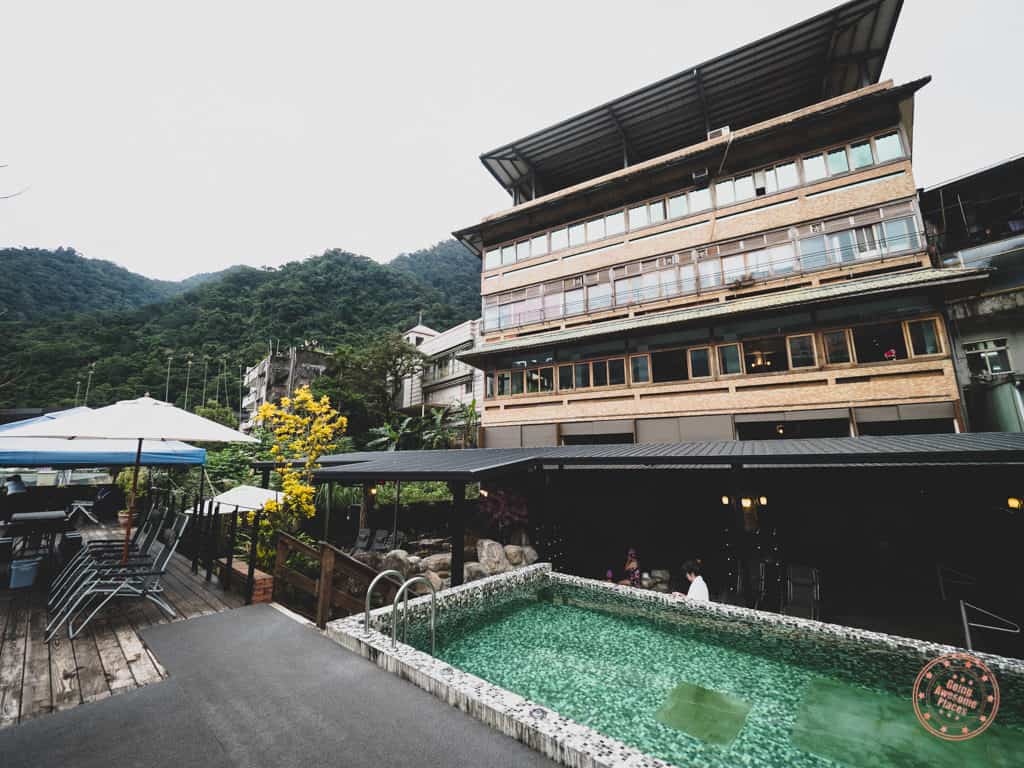
With one final full day in Taiwan, there are a lot of options open to you but if your preference is to take it easy and end on a relaxing note with a dash of excitement, pull off an unconventional day trip that combines the best of what Taipei has to offer.
Wulai is a mountainous district south of Taipei. It’s known for its old street, hot springs, natural sights, and the area’s indigenous Atayal people. It’s an easy day trip from Taipei that gets you out of the city and into a place that is very walkable, easy to explore, and not too crowded.
If there are other things that you want to check out, treat this as a free day. There are a lot of choices here so if you’re looking for a few ideas, here’s what we were also contemplating:
- Hiking Teapot Mountain
- Beitou Hot Springs (i.e. SweetMe Hotspring Resort)
- Hiking Yangmingshan
- Yehliu Geopark
- Danshui/Tamsui Old Street
- Maokong Gondola
- Everything else in Taipei you might not have seen such as the National Palace Museum, Chiang Kai-Shek Memorial Hall, Taipei 101, other night markets
★ Tai Chi at Muzha Zhongshun Temple (木柵忠順廟保儀大夫)
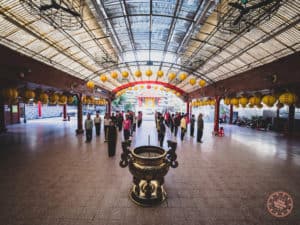
Every morning, there are temples all over Taipei where the local community gets together to practice Tai Chi. Instead of paying for lessons, why not join one of these sessions and try your best not to embarrass yourself while at the same time, learn how hard it is. What looks like a moving form of yoga and meditation is actually a fluid art of motion with its ying-yang balance of dance and martial arts while all in slow motion.
Now it will be pretty daunting to jump into one of these sessions if you don’t know anyone but thankfully we had someone like Joshua from MyTaiwanTour to introduce us and give us permission to film the experience. Comfortably at the back of the group, we did our best to imitate the experienced Tai Chi-ers, occasionally tripping on my own feet and stopping to stare at the combination of pushing and parrying.
A little bit about Joshua Samuel Brown
Joshua is someone I was extremely grateful for during my travels in Taiwan. He was instrumental in providing tips on local spots to explore in the country and we were also lucky enough to have him show us around a few spots you might’ve seen from the Taiwan in 12 Days YouTube series . Joshua is the former Editor-in-Chief at MyTaiwanTour , acclaimed author of the upcoming Formosa Moon, co-author of numerous Lonely Planets, all-around expert in Taiwan, and just a great guy. Make sure to read the Joshua Samuel Brown blog which has a true local’s perspective of the country and much more!
With how friendly the Taiwanese are, you can easily find a local temple to visit and find out whether they’d welcome a drop-in student.
Schedule: Everyday at 8:30AM – 10AM
★ Wulai Old Street

The old street of Wulai is a short distance but packs in quite a number of things. If you enjoy street food, left and right you’ll find a ton of different shops that sell snacks, drinks and cooked food. You’ll also find several independent shops specializing in clothing, art, foods, and crafts.
Another interesting fact about Wulai is that it’s the closest accessible aboriginal village from Taipei which makes it a great place to learn about the fascinating culture and people of the Atayal tribe with the Wulai Atayal Museum.
Don’t forget to walk around and outside of the street to find attractions such as Wulai Falls and Yunxian Playground.
★ Yen Town Hot Springs
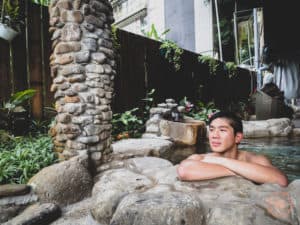
Along the old street of Wulai, you’ll find this hidden gem and the perfect hot springs for my wife and I. Many hot springs in Taiwan are of the onsen (Japanese hot springs) variety where male and females are split, and are nude. Understanding that this may not be comfortable for everyone, it is actually a challenge to find hot springs that are couple friendly, aren’t crowded, and have clean facilities.
All you need to bring with you to Yen Town is your swimwear, a shower cap and you’re all set. In this intimate and beautifully set hot spring, you’ll find a rejuvenating set of pools that vary from ice cold to 40C+. To mix things up, you’ll also find an open air room temperature swimming pool, intense pulsating showers, and lane of rounded pebbles for feet therapy.
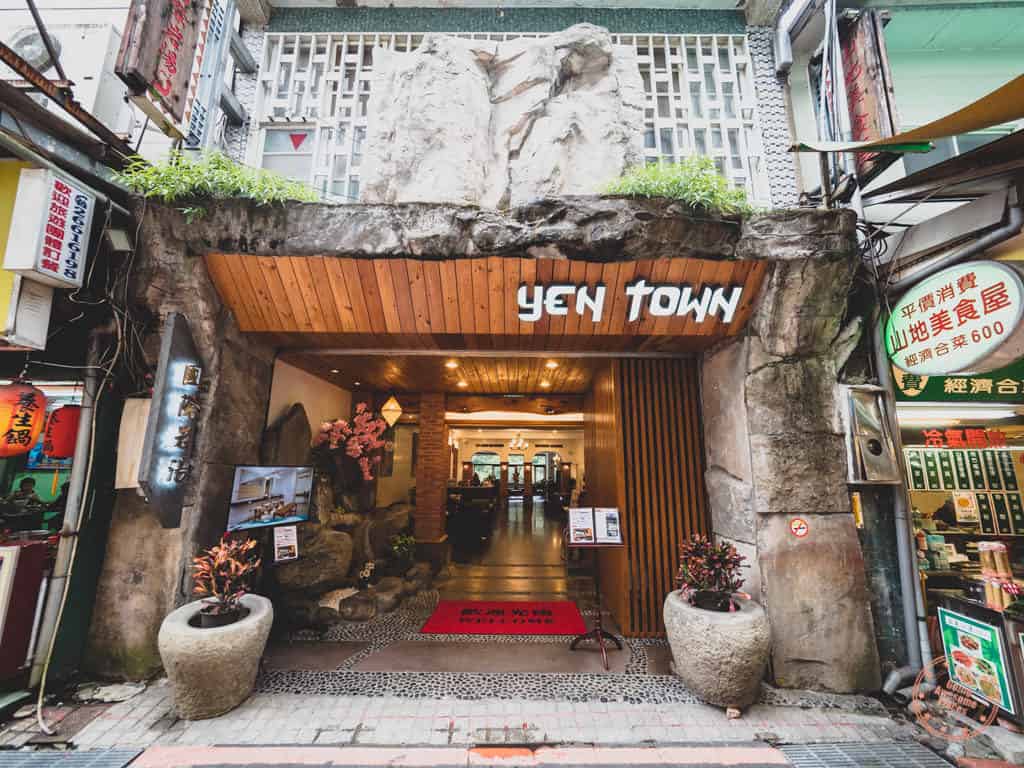
Price: $NT 400 per person
TIPS: Yes you read that right, in Taiwan it is mandatory to wear head caps to cover your hair. Yen Town expect for you to have your own. This means you can either purchase one or come prepared with basic shower caps from the hotel.
TIPS: A custom that is strictly enforced here for sanitary reasons is to rinse your feet with the water from the pool before entering.
The convenience of WESTGATE Hotel meant that we had to take advantage of it with our daily walk around to see what fun boutique shops we could find and other treats we could buy.
★ LUNCH: Local Aboriginal Restaurant on Wulai Old Street (烏來小吃店)
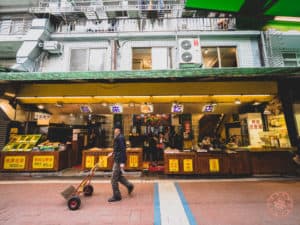
There isn’t exactly an English name for this restaurant so I’ve included the Chinese name which you’ll see in the sign. It’s actually right across from the Wulai Atayal Museum. This is a restaurant cooked by aboriginal locals and is a chance to try a variety of dishes that are hard to find elsewhere.
Not knowing what was good there, we tried an assortment of fish, vegetables, soup, pork, and rice that turned out to be quite good. The highlight was definitely the rice cooked in bamboo and the fried fish.
★ DINNER: Aquatic Addiction Development
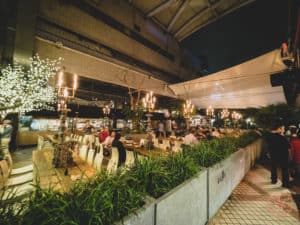
Aquatic Addiction Development (AAD) is quickly becoming a must-see place for seafood-loving foodies. Carved out of the Taiwan Fish Market, this is a brand new and modern type of market that has a little bit for everyone. Near the entrance you have what looks like a wholesale area with tanks filled with fresh catches. From there, you step into the main section of AAD which is a cross between a really up-scale supermarket and sit down sushi and seafood bar. Upstairs, there’s a hotpot restaurant and then you have the entire outdoor wing of the market which has more food, another restaurant, and additional seating.
We ended up ordering a tray of salmon sashimi, scallops and Calpis for $NT 590 ($20 USD).
TIPS: You’d think a market like this accepted credit card but it doesn’t. Make sure to bring enough cash.
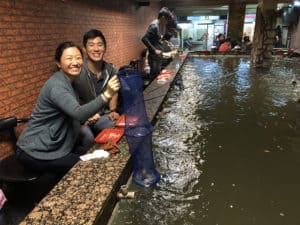
★ DINNER: Prawn Fishing (全佳樂釣蝦場) You can’t leave without doing the favourite past-time of Taiwanese. Indoor shrimp fishing has become a popular form of entertainment, transforming something that is still an important industry into sport. Huddling around a smoke-filled room centred around a shallow pool, serious pros and wannabe anglers wait patiently for bobbing buoys. Beneath the depths of the bubbling water are large prawns waiting to steal your bait.
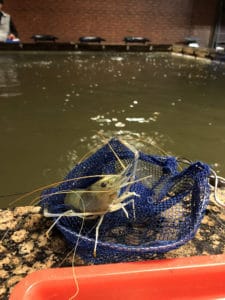
Okay, I admit it’s probably not for everyone but for something that you won’t find anywhere else in the world, you just have to experience it for yourself.
This is how it works. You essentially purchase fishing game time and starts at 1 hour and goes up to 3 hours. Dried shrimp bait and custom fishing rods are provided and the rest is up to you to catch as many as you can in the time you paid for. When you’re done, the shop owner cooks the prawns on a skewer dusted with salt.
It’s a bit of a test of patience that Anthony Bourdain clearly didn’t have much of in Season 2 of The Layover . Don’t expect your tummies to get filled here but the satisfaction of catching anything at all is something to rejoice here. In the hour we were there, we caught 6 but the owner felt pity for us so he topped it up to 10.
Address: 台北市中山區錦州街190號
Cost: Starts at $NT 300 for an hour
TIPS: HAH got none for ya. Good luck!
Getting to Wulai
Take the MRT all the way to the Xindian Station (last stop on Green Line 3) and find Bus Stop B located along Beiyi Road (北宜路一段). Wait for bus 849 bound for Wulai and all you have to do is get off at the last stop.
>> Day 12 – Mad Dash for Pineapple Pastry <<

Depending on when your flight leaves, you may or may not have time to squeeze in one last bit of Taiwanese goodness before you go. The best souvenir to bring home for friends and family in my opinion is pineapple pastry since it’s something that just isn’t as good outside of Taiwan.
You’re probably wondering, well can’t you get pineapple pastry at any Asian supermarket? Yes, that’s true but all of these are packed with preservatives and as a result contain smaller traces of pineapple. The real stuff from Taiwan is made with fresh ingredients and will only last 2-4 weeks before expiring. That’s why I recommend buying these squares of sweet goodness on your last day so you have a chance to pass it along to friends and family.
TIPS: Remember to get your tax refund before you go through security/customs. At the primary international terminal (T2), go down one level from departures and you’ll find it. SunnyHills is also on this floor.
★ Chia Te Bakery

Perhaps the most famous pineapple pastry bakery in town and while they make a variety of Chinese bakery goods, people from all over the world come here for one and one thing only – pineapple pastry. These are made in the traditional style where these square-sized desserts are filled with mildly sweet and moist strings of pineapple and surrounded by a soft, buttery crust. There is only one store and they’ve been open since 1975.
★ SunnyHills
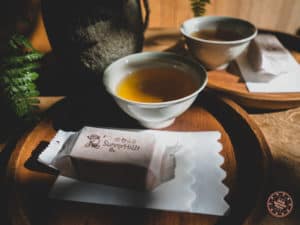
You’d think one bakery was enough but you really have to try the modern, and some say, better take on pineapple pastry. SunnyHills is everything that Chia Te isn’t. Where Chia Te is reminiscent of your typical no-nonsense Chinese bakery with bright lights, shelving with product, and queue for the cashier, SunnyHills is a much more refined, contemporary experience where it is more of a tea house than it is a bakery.
When you enter one of their stores, you’re greeted with friendly service staff and even before promoting any product, they get you seated. This is when they serve you a complimentary cup of tea and one of their products. This gives you a chance to use all of your senses to appreciate their food. When you’re ready, you go up to the counter and place your order. You’ll most likely be buying pineapple pastry and when you do, it comes in a beautiful packaged box and a recyclable linen bag. Like I said, it’s very much an experience.
Focusing in on the pineapple cake itself, what makes it different from Chia Te is in its shape which is rectangular, the density of the crust, and the filling a bit more tangy. Some say it’s more fresh than the competition but I think it’s all in your taste preferences.
TIPS: If you qualify for tax refund, the staff will let you know and they have a separate desk to help you with the filling out of the form. Officially, I believe purchases over $NT 3000 are eligible for tax refund but we were able to get it with a purchase of $NT 2680. This is good for a 5% VAT tax rebate at the airport.
TIPS: If you don’t care for the in-store experience of SunnyHills, note that there is a storefront at the airport. The difference is that at the airport, they only stock the box of 10 and not the box of 16.
★ LUNCH: Din Tai Fung (Original Xinyi Location)

It would be almost embarrassing to leave Taiwan without going to their internationally-famous Ding Tai Fung. Known for their great-tasting xiao long bao (soup dumplings), it’s the kind of perfection that I haven’t been able to find replicated anywhere else and that includes Shanghai where it is known to have originated from.
If you come early enough (10:20AM in our case), you’ll be able to get a table pretty quickly. Otherwise, expect to take a number and wait awhile.
★ SNACK: Ice Galaxy

There were a whole bunch of other dessert spots that we wanted to hit up in Taiwan but with literally 15 minutes left before our airport pick up, I ran over to the closest shaved ice restaurant in Ximending which turned out to be Ice Galaxy. They’re not famous per say but it still lived up to my expectations for shaved snow packed with mango.
If we had more time we would have liked to have visited Roji Shaved Ice or Bingzan.
WHERE TO STAY IN TAIWAN
Here is the compilation of everywhere that I stayed on my trip and would highly recommend
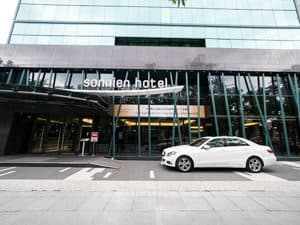
SONNIEN HOTEL
Conveniently located hotel where I stayed at the beginning of my trip to Taiwan. This was a super clean and spacious property that included a fabulous breakfast as well. Couldn’t have asked for more.
TripAdvisor
Booking.com
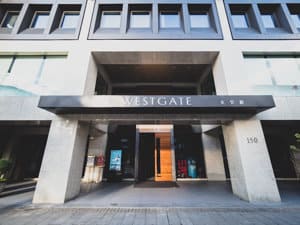
WESTGATE HOTEL
Right next to Ximending in Taipei, this is equally a great hotel to stay at in Taipei. Sonnien Hotel was already pretty modern but WESTGATE takes it up a notch. They have an amazing breakfast as well.
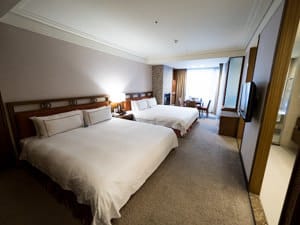
ALISHAN HOUSE
The nicest property in Alishan for sure, we were given this extravagant double king-sized bed complete with balcony and fireplace. It’s also located in the best spot to do your hike around Alishan.

HOYA RESORT HOTEL
One of the newer properties in Kaohsiung. While it was extremely comfortable and spacious here including a smashing breakfast, I did find that it was a bit further from the action that I would’ve liked. That said, it is right next to a night market!

A-FEI HOTEL
Some call it a hostel but it’s really a hotel right by Nanwan Beach in Kenting. You’ll typically find the owner, A-Fei, who is a blast to be around. This is the perfect place for surfing as well since they have their own lessons and gear rental.

MATA INDIGENOUS CULTURAL RESORT
Quite the unique property that focuses on Taitung’s heritage of indigenous cultures. The rooms are nice but the star feature are the displays and shows that they offer. They have a great breakfast and they offer free bike rentals.
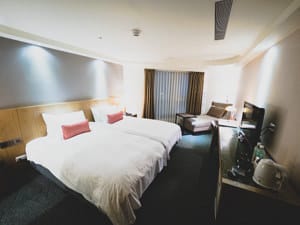
AZURE HOTEL
Centrally located hotel in the city of Hualien. Loved their breakfast as they had their own noodle bar. The room was quite modern, comfortable, spacious, and clean as well.
TAROKO NATIONAL PARK
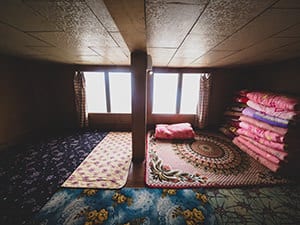
TAROKO MOUNTAIN HIKING HOMESTAY
Not exactly something you can book off the cuff but if you work with a company like MyTaiwanTour, they can put together a custom trip to trek up to the mountains of Taroko and stay with someone like Ah-Ma!
MyTaiwanTour
TAIWAN ITINERARY FINAL THOUGHTS
Taiwan may be a small country, but it’s big on heart, is guaranteed to fill your tummies with delight, and will surprise you over and over again with its amazing activities and attractions.
As I mentioned in the beginning, this guide is really only meant to be a starting point for your planning. As a trip planner myself, I’ve always found that it’s way easier to see what someone else has done and go from there. Feel free to make changes to it and tweak it to your liking based on what you’re interests are and your travel style.
Enjoy and do let me know how your trip goes!
How About You?
- What do you think of this itinerary for Taiwan?
- Are you planning your own trip? How have you customized it to your style?
- What are the top things that you’re dying to do?
- If you’ve been to Taiwan, are there any travel tips you’d like to add?
Looking For More Taiwan Content?
Paragliding in Taitung, Taiwan
Ultimate Alishan Guide in Taiwan
Why You Need To Travel To Taiwan Next
Did you like this article? Follow me on Facebook , Twitter , Instagram , or YouTube and be notified about my newest posts and updates!
This trip was sponsored by the Taiwan Tourism Bureau but all opinions are my own because I had one amazing time there and I seriously need to share this with the world!
About William Tang
William Tang is the Chief of Awesome behind the award-winning Going Awesome Places which is focused on outdoor adventure, and experiential travel. His true passion lies in telling stories, inspiring photography and videos, and writing detailed itineraries and travel guides. He is a member of Travel Media Association of Canada (TMAC), Society of American Travel Writers (SATW), Adventure Travel Trade Association (ATTA), and Travel Massive. He has also been featured in publications such as Reader's Digest, Entrepreneur, Men's Journal, and Haute Living. Make sure to learn more about William Tang to find out his story and how Going Awesome Places started.
Find us on social media
- The Best Things To See...
The Best Things to See and Do in Taiwan in Summer

The summers in Taiwan are hot and humid and although it’s often perfect weather for lazing around on the beach, there are a lot of other things to do during the hottest months of the year. From music festivals to celebrations designed to appease the spirits, summer in Taiwan is anything but boring. Here are some of the most notable events you should try to attend during your time in the land they call Formosa.
1. taiwan international balloon festival.
End of June – Early August
Head down to Taidong during the month of July and you’ll see hot air balloons filling the sky. The international balloon festival has grown in stature in recent years and now attracts a huge number of foreign visitors and teams of hot-air balloonists. It’s a real sight to see and if you’re lucky (and brave enough) you can go for a ride in one yourself.
Taiwan International Balloon Festival, Lane 42, Gaotai Road, Luye Township, Taitung County, Taiwan, +886 8 932 4902
2. Fulong Sand Sculpting Art Festival
Fulong Beach is one of the most popular beaches in the north of Taiwan and with good reason. Its golden sands and warm waters make for an ideal day and it’s also a popular surfing location . But from May to July there’s another reason to head here. The sand sculpting festival is one of the most popular in Asia and you’ll find some incredible creations here on the beach.
Fulong Beach, Gongliao District, New Taipei City, Taiwan

Incredible sculptures | © Jennifer / Flickr
3. Ho Hai Yan Gongliao Rock Festival
Late July or Early August
Once the sand sculpting festival is over, it’s time for Fulong to play host to one of the country’s biggest music festivals. The Ho-Hai-Yan Rock Festival is a weekend of live music and entertainment that features live acts from Taiwan and across the globe. It’s a great event that is most popular with lovers of non-commercial and indie music. If you like your music then it’s well worth a visit.
The fifth day of the fifth month of the lunar calendar
Now a major festival celebrated the world over, Dragon Boat Festival in Taiwan is one of the most enjoyable traditional celebrations of the year. A festival dating back centuries, it’s a time when everyone eats Zhongzi and enjoys the boat races. Every locality has its own event and some attract race teams from across the globe making it one of those rare traditional festivals that transcends cultures. You don’t have to take part in the races but you simply have to go see one.

4. Keelung mid-summer Ghost Festival
Starting on the first day of the seventh lunar month
Ghost Month is a very important time of the year for Taiwanese people. There are so many things that must be done to appease the spirits that walk the earth during this time and an even greater list of things that cannot be done . But the most famous festival that takes place during this month is the one in Keelung. This festival is held not only to appease ghosts but also honor the dead of a conflict that took place centuries ago. There are so many things going on throughout the month that you can drop by anytime and witness some of the local traditions and customs. However, if you had to choose one day to attend, the 14th day of the month is when they hold the water lantern procession by the shore. An unforgettable experience.
Lao da gong Temple 37 Lane 76, Le 1st Road, Anle District, Keelung City, Taiwan
5. Hengchun Pole Climbing Festival
15th day of the seventh lunar month
Yes you guessed right, the pole climbing festival involves climbing poles, and while it might not sound like the most exciting of events, it really is a must-see. 36 poles greased with oil are set up with a silk banner at their tops. Then teams of locals try to be the first to claim their banner. Over a century old, this festival begins with a number of customs and practices that people believe drives ghosts (which happen to be roaming the earth at this time) away from the area. Not everyone makes it to the top and it’s an interesting spectacle that you’re unlikely to witness elsewhere.
Hengchun Pole Climbing Festival, Dongmen Road, Hengchun Township, Pingtung County, Taiwan
Since you are here, we would like to share our vision for the future of travel - and the direction Culture Trip is moving in.
Culture Trip launched in 2011 with a simple yet passionate mission: to inspire people to go beyond their boundaries and experience what makes a place, its people and its culture special and meaningful — and this is still in our DNA today. We are proud that, for more than a decade, millions like you have trusted our award-winning recommendations by people who deeply understand what makes certain places and communities so special.
Increasingly we believe the world needs more meaningful, real-life connections between curious travellers keen to explore the world in a more responsible way. That is why we have intensively curated a collection of premium small-group trips as an invitation to meet and connect with new, like-minded people for once-in-a-lifetime experiences in three categories: Culture Trips, Rail Trips and Private Trips. Our Trips are suitable for both solo travelers, couples and friends who want to explore the world together.
Culture Trips are deeply immersive 5 to 16 days itineraries, that combine authentic local experiences, exciting activities and 4-5* accommodation to look forward to at the end of each day. Our Rail Trips are our most planet-friendly itineraries that invite you to take the scenic route, relax whilst getting under the skin of a destination. Our Private Trips are fully tailored itineraries, curated by our Travel Experts specifically for you, your friends or your family.
We know that many of you worry about the environmental impact of travel and are looking for ways of expanding horizons in ways that do minimal harm - and may even bring benefits. We are committed to go as far as possible in curating our trips with care for the planet. That is why all of our trips are flightless in destination, fully carbon offset - and we have ambitious plans to be net zero in the very near future.

See & Do
The top 10 things to do in taipei, taiwan.

Experiences You Can Only Have in Taiwan

Food & Drink
Sample the best tea in the world with culture trip.

The Most Interesting and Historic Landmarks in Taiwan

Guides & Tips
How to spend a perfect week in taiwan.

An Art Lover's Guide to Taipei

A Guide to Cijin Island, Taiwan

Culture Trip Wishlist: 5 Cities for Historical Tourism in 2019

Travel-Starved Tourists Are Taking Fake Flights in Taiwan

The Best Taiwanese Desserts You Need To Try

Architecture
Taipei's newest arts venue has an incredible spherical concert hall.

When Is the Best Time of Year to Visit Taichung?
Culture trip spring sale, save up to $1,100 on our unique small-group trips limited spots..

- Post ID: 1758684
- Sponsored? No
- View Payload
Travel Itineraries | Luxury Travel | Travel Tips
A Comprehensive Taiwan Travel Guide and Itinerary for First Timers

Taiwan is a compact but extremely rewarding travel destination. This East Asian island country will tempt you with its welcoming people, track record for safety, convenient transportation, unbeatable street food, stunning natural scenery, and outdoors activities. If you’re in the early stages of planning your Taiwan trip, you’ll uncover a wealth of information in this Taiwan Travel Guide, including when to go and for how long, how to plan your trip, the top attractions, the ideal itinerary, plus more tips and FAQs.
This article was written by Nick Kembel , who has been living in and traveling around Taiwan for over a decade. He’s written a book about Taiwan, manages two websites about the country, and moderates the Taiwan Travel Planning Group on Facebook.
Taiwan Trip Planner and Guide
When is the best time to visit taiwan, how many days do you need for taiwan, how to plan your trip to taiwan, around taipei, taroko gorge.
Sun Moon Lake
Taiwan Travel Itinerary
Will i need cash in taiwan how much, what’s easycard, which kind of transportation should i take and when should i book it , is taiwan suitable for vegetarians, share this:.

Pin this Taiwan Trip Planner and Travel Guide to plan for your Trip to Taiwan
If you want the perfect combination of good weather and small crowds in Taiwan, choose March, April, October, or November.
May and June are the rainy season in Taiwan. Summer (July to September) is uncomfortably hot and humid, not to mention that your travel plans may be ruined by a typhoon.
December is the most popular month of the year for tourism in Taiwan, mainly because visitors from nearby Asian countries flock there for Christmas events, New Year’s Eve fireworks, and because they want to experience cooler weather for their winter holidays.
Winter (January to March) is a little cold in Taipei and the north, but the south of Taiwan remains tropical year-round. It’s a good time for hot springs and cherry blossom viewing.
However, avoid visiting during Lunar New Year, when everything closes, flight prices skyrocket, and all trains and hotels will be fully booked. But consider visiting for the Lantern Festival (15 th day of the lunar year), one of the most impressive traditional celebrations in the country.

Red Paper Lanterns in Taiwan | Photo by Henry & Co. on Unsplash
Many visitors only book one week or less for Taiwan. This is not nearly enough. With this amount of time, you’ll probably only be able to visit Taipei plus one or two other places. I’s not enough to do a full loop around the country.
In order to travel in a circle around Taiwan and visit all the main attractions along the way, two weeks is the ideal amount of time. If you can extend it to three weeks, that will be even better. Then you’ll be less rushed and you can even include some more off-the-beaten-track stops.
But two weeks is a decent chunk of time to work with, and I’ll introduce the perfect Taiwan two-week itinerary in this Taiwan Travel Guide.
Taiwan is not an ideal country for just showing up and figuring it out as you go. It’s a crowded country with millions of locals who also like to travel around on weekends and holidays, not to mention the 10 million+ tourists who show up every year.
It is common for all the hotels to sell out at destinations in Taiwan. This is especially true for Alishan , the country’s most popular mountain resort, and one of the Best Places to visit in Taiwan . The hotels there are limited and sometimes all the rooms sell out weeks in advance. This is especially true for weekends, holidays, and cherry blossom season (mid-March to early-April in Alishan).
This can also happen at Sun Moon Lake and Taroko Gorge , but only at the busiest times of the year (long weekends and Lunar New Year holiday). And for December, the busiest month for international tourism in Taiwan, I’ve even heard of travellers having difficulty finding rooms in major cities like Taipei.

RaoHe Night Market, Taipei | Photo by Clement Souchet on Unsplash
The main lesson here in this Taiwan Travel Guide and Itinerary is: book your Taiwan hotels in advance! Personally, I usually start making my itinerary and looking at hotels about six months before my trip. However, I sometimes don’t actually book them until about 2-3 months before. Unfortunately, some hotels in Taiwan, especially smaller ones, tend to not release their rooms until 2-3 months in advance. This can be a little pesky when you’re hoping to secure a room at a famous location like Alishan.
As for trains, that is a whole different story. Figuring out which trains to take around the country is going to be one of the more complicated parts of your trip. Because there’s so much to say about that, I’ll cover it in the FAQs section below.
But for now, suffice to say that you can buy regular (TRA) train or High Speed Rail (HSR) tickets 28 days in advance (or 29 days in advance for Saturday trips and 29 days for Sunday trips). The tickets for a new day are released at precisely midnight (Taiwan time – you’ll need to figure out what time that is in your country).
These are important details, because some popular train routes and dates in Taiwan can sell out within minutes of being released. For others, you don’t even need to book them – you can buy tickets or swipe an EasyCard (a reloadable smart card for transportation in Taiwan) just before boarding.
There are a few other things you may want to book before arriving in Taiwan. These include a Taiwan SIM card , entrance to popular attractions in Taiwan , and a Taipei Unlimited Fun Pass . All of these can be booked on Klook . You can also buy them when you get there, but then you’ll need to use more cash.
Last but not least, if you plan to visit any famous upscale restaurants like those with Michelin stars, you may need to reserve them several months in advance.
PS – Useful Travel Resources to use while heading to Taiwan to tick off these Best Things to do in Taiwan as shared in this Taiwan Travel Guide and Itinerary –
- Book your Rental Car in Taiwan on Discover Cars and RentalCars.com
- Book the best Taiwan Tours at Klook
- Book your Accommodation in Taiwan on Agoda or Booking.com
- Get an eSIM by Airalo to stay connected and Save on Roaming Fees
- Sign up for a Priority Pass before flying to Taiwan, to enjoy premium Airport Lounge Access.
- Sign up for a Travel Insurance to enjoy a hassle free road trip vacation in Taiwan.
Top Attractions in Taiwan

Longshan Temple | Taipei
For most visitors, their journey starts and ends in the capital city, Taipei. Some of the top highlights include the Observatory at Taipei 101 (once the tallest building in the world), Maokong Gondola (a glass-bottomed gondola with views of the city and tea farms), Chiang Kai-shek Memorial Hall (one of the city’s most impressive landmarks, dedicated to a former dictator), and Beitou Hot Springs .
Of course you also can’t miss the city’s famous night markets, where hundreds of food stalls dish out mouth-watering delicacies every night of the year. The city’s five biggest ones are Shilin Night Market, Raohe Night Market, Ningxia Night Market , Tonghua Night Market , and Nanjichang Night Market , but there are many small ones, too. The city also has a huge range of hotels, from excellent hostels to some of Taiwan’s top luxury hotels .
Unlock Massive Savings on different attractions and activities in Taipei by getting the Klook Pass Taipei (save upto 41%).
If you are a foodie, you have to try out the different yummy street foods in Taipei, and guess what, with this Klook Pass – Taipei Must Eat Food , you can save upto 49% , while trying out 5-6 different kinds of Taipei Street Food.

Jiufen Old Street | Photo by Danielle Hoang on Unsplash
Some of the country’s most famous attractions are within a few hours of Taipei. The most popular attractions among them are Shifen Old Street (where tourists write wishes on paper lanterns then send them up to the sky), Shifen Waterfall, Jiufen Old Street (an old mining town with traditional teahouses), and Yehliu Geopark (with interesting shaped rock formations on the coast. Another popular day trip is Yangmingshan National Park , an active volcano right next to the city.

Taroko Gorge – The Grand Canyon of Taiwan
The “Grand Canyon of Taiwan” is the most famous natural attraction in Taiwan. This deep, dramatic gorge features stunning hikes, impossibly perched shrines, thrilling suspension bridges, and roaring waterfalls. Taroko Gorge is the top sight in Hualien county on wild east coast of Taiwan.

Cycling in Chishang in Taitung County
Remote Taitung county sits in the quiet, primarily rural southeastern corner of Taiwan. This is the land of epic bicycle paths through rice paddies, taking it easy, and meeting local Taiwanese aboriginal peoples. The county also boasts two incredible islands, Green Island (great for scuba diving and with a unique saltwater hot spring) and Orchid Island (home to the country’s most isolated aboriginal tribe).
Unlock Massive Savings on different attractions and activities in Taitung by getting the Klook Pass Taitung (save upto 45%).

Dragon and Tiger Pagodas
Kaohsiung is the largest city in Southern Taiwan and country’s largest port. It features some of the country’s more grandiose attractions, including Fo Guang Shan (Taiwan’s largest Buddhist monastery and tallest Buddha statue), Lotus Pond (a manmade lake surrounded by temples, including the ever-popular Dragon and Tiger Pagodas), and the best street art in the country – graffiti is legal here! From Kaohsiung, you can also make side trips to Xiaoliuqiu island for snorkelling with giant sea turtles or Kenting National Park for some of the best beaches in Taiwan.
Unlock Massive Savings on different attractions and activities in Kaohsiung and Xiaoliuqiu Island by getting the Klook Pass Kaohsiung (save upto 30%) and Klook Pass Xiaoliqiu (save upto 28%) respectively.

A traditional temple in Tainan
The ancient capital of Taiwan , Tainan is rich in historical architecture. Come here to see some of the oldest and most important temples, forts, and Japanese-era architecture in the country. Locals consider Tainan the culinary capital of Taiwan , too, so there are plenty of good eats to be had.
Unlock Massive Savings on different attractions and activities in Tainan by getting the Klook Pass Tainan (save upto 50%).

Towering trees in Alishan – Taiwan’s Most Famous Mountain Resort
Alishan is Taiwan’s most famous mountain resort . Sitting at 2200 meters above sea level, the area features towering ancient cypress trees, sunrises over a sea of clouds, and the chance to ride on the cute red train cars of a former logging line, the Alishan Forest Railway . The region is also known for Alishan High Mountain Oolong Tea , Taiwan’s most famous tea.

Here we have the largest and most enticing lake in Taiwan . This tourist hot spot boasts a wealth of activities, from boat rides across the lake and epic views from Sun Moon Lake Ropeway to fantastic cycling and temples overlooking the lake. In February, visitors flock to Formosan Aboriginal Culture Village , an aboriginal theme park, when thousands of cherry blossoms bloom. In September, thousands of locals do a mass swim across the lake, the only time of the year that swimming is allowed.

Lanterns in Taichung
The largest city in Central Taiwan is a haven for foodies with a sweet tooth, with the likes of Miyahara (over-the-top ice creams in a Harry Potter-like setting), Taiwan Sun Cake Museum (honouring a local cake that was invented in the city) and Chun Shui Tang Siwei Original Store (the supposed birthplace of pearl milk tea). Taichung is also a convenient base for venturing to attractions outside of the city like Rainbow Village (a traditional house painted in vibrant colours by a former Chinese soldier), Gaomei Wetlands (for amazing sunsets on the coast), and Zhongshe Flower Market (for seas of various flowers).
Unlock Massive Savings on different attractions and activities in Taichung by getting the Klook Pass Taichung (save upto 60%).
Days 1 and 2: Spend these days overcoming jetlag and exploring the many sights, activities, and night markets in Taipei.
Day 3: Use this day to make a day trip from Taipei . The most popular option is a day trip to the east, including an eclectic mix of stops like Jiufen Old Street, Shifen Waterfall, Houtong Cat Village, Yehliu Geopark, and finishing at Keelung Night Market before returning to the city.
Day 4: Travel to Hualien , check in to a hotel, and explore Dongdamen Night Market .
Day 5: Full day tour of Taroko Gorge , including stops at Qingshui Cliffs (some dramatic coastal bluffs) and Qixingtan Beach (a pretty pebble beach).
Day 6: Cycling among the rice paddies in Chishang , the most picturesque town in Taitung county.
Days 7-8: Explore the main sights of Kaohsiung on day 7 then do a day trip to snorkel with sea turtles on Xiaoliuqiu island on day 8.
Day 9: Catch the train + bus to Alishan and do some hiking before sunset.
Day 10: Wake up super early for the famous Alishan sunrise, then do a little more hiking before check-out time. Catch the afternoon bus to Sun Moon Lake.
Day 11: Explore Sun Moon lake by bike, gondola, bus, and/or boat.
Days 12 and 13: Tour the main sights in Taichung city on day 12, then make a day trip to Rainbow Village, Zhongshe Flower Market, Gaomei Wetlands, Lihpao Discovery Land, and/or Lukang (a very traditional old town) on Day 13. Make sure not miss Feng Chia Night Market, one of the largest in Taiwan.
Day 14: Return to Taipei or go directly from Taichung to Taoyuan International Airport for flying out.
Some common Taiwan FAQs
Typical travellers will spend TWD 1000 to 2000 per person per day in Taiwan. This is not counting hotels.
Taiwan is still very much a cash-loving society. Although you can use EasyCard and credit cards for some things (international credit cards only sometimes seem to work), you’ll still need cash for most things. Even if you book all your hotels on platforms like Booking, most budget and some mid-range hotels will still expect cash payment on arrival.
Luckily, there are ATMs everywhere in Taiwan, so you can withdraw money as you go. They allow you to take out quite a lot at once, so make sure to check your bank’s upper withdrawal limit before you go. If you’re bringing foreign cash, exchange it at the airport. There’s only a small fee per transaction, and it’s much more convenient than going to banks in the city. Banks don’t carry certain currencies, too.
Most people in Taiwan use a very handy reloadable smart card called EasyCard . You can buy one for TWD 100 at any convenience store or MRT station, including the Airport MRT for getting from Taoyuan International Airport to Taipei ).

EasyCard – Taiwan
On top of the non-refundable 100 deposit, you can load as much money as you want onto the card. You’ll use this a lot in Taipei for riding the MRT to explore the city. You can also use it to pay for local buses, trains (for example on day trips from Taipei), to pay for items at convenience stores, and some taxis take it.
If you follow the above itinerary, here are some tips:
- In Taipei, you’ll mainly ride the MRT. Just load some money onto an EasyCard for swiping into and out from the stations. You can also use EasyCard for the Airport MRT.
- When you do day trips from Taipei, you’ll mostly be riding local trains. Those don’t have seat numbers, can’t be booked, and you can just swipe EasyCard to board them.
- For Taipei to Hualien, the express train (2 hrs) is extremely popular and often sells out. Try to book this on the official TRA site 28-30 days in advance. If the express train sells out, you’ll have to ride a slower one (3 to 4 hours).
- From Hualien to Chishang and Chishang to Kaohsiung, it’s the same as above. Trains on the west coast are more limited, so book early.
- To travel from Kaohsiung to Alishan, ride train (no booking needed if you choose a local one, only 1 hour) from Kaohsiung Station to Chiayi Station. From Chiayi, take the bus (swipe EasyCard ) to Alishan (2 hours).
- There’s only one bus per day from Alishan to Sun Moon Lake, departing 1 PM and arriving 4 PM, swipe EasyCard .
- The bus from Sun Moon Lake to Taichung takes 90 minutes. Again you can swipe EasyCard .
- For Taichung to Taipei (or to Taoyuan for transferring to the Airport MRT), try taking a ride on the super-fast High Speed Rail. These tickets can be booked in advance on the official HSR site for an early bird discount or on the spot (non-reserved ticket) right before boarded. Non-reserved section is cars 10-12, but a seat is not guaranteed.
Yes, Taiwan is a vegetarian-friendly country. There are hundreds of vegetarian restaurants in Taipei and around the country. Most traditional Taiwanese vegetarian food is also vegan. Many vegetarian restaurants have the character for vegetarian (素) prominently displayed. You can easily find them by searching on GoogleMaps or using websites like HappyCow.
Some Final Taiwan Travel Tips
- English is limited in Taiwan, so I recommend preparing a translation app like GoogleTranslate or Papago. These can be used to scan signs/menus or even translate conversations as you try to communicate with locals.
- Taiwanese are very polite and generally love foreigners. Young people tend to be shy, but most people will help if you need it.
- When it comes to local etiquette, don’t make any noise (even talking should be a whisper) on buses & trains, the dark blue MRT seats are for the needy, stand only on the right side of escalators, and wave at buses if you want them to stop to pick you up.
- Pay restaurant bills at the front of the restaurant before leaving, and there’s generally no tipping in Taiwan.
- Taiwan is an extremely tolerant country and the only place in Asia where same-sex marriage is legal.
- Dress as you wish, but don’t go barefoot or wear beach attire unless you’re at the beach.
- Unlike Japan, tattoos are fine for hot springs but you may need to wear a swimming hat.
And if you are wondering, Where to stay in Taiwan? All you have to do is, fill in your dates, the destination and click on the search button in the box below, and save upto 50% on the Best Hotels and Resorts in Taiwan.
Don’t forget to Pin this Taiwan Travel Guide featuring the Best Things to do in Taiwan along with a 14 Day Taiwan Travel Itinerary , which will help you plan for your Trip to Taiwan.

Pin this Taiwan Travel Guide and Itinerary and Save it for planning for your Trip to Taiwan
Also, if you like reading the content I create and curate, I will be really thankful if you could take a moment to
LIKE | COMMENT | SHARE and SUBSCRIBE
Also, if you’re on Facebook, I would love to have you as a part of
the Eat Travel Live Repeat Travel Community
Type your email…
Leave a Reply Cancel reply
Your email address will not be published. Required fields are marked *
Sign me up for the newsletter!
Notify me of follow-up comments by email.
Notify me of new posts by email.
This site uses Akismet to reduce spam. Learn how your comment data is processed .
- Kale by LyraThemes.com.
Privacy Overview
The Best (and Worst!) Time to Visit Taiwan
When is the best time to go to Taiwan? Which months or seasons are best, and which should be avoided?
These questions are not easily answered, because it depends what you are looking for, and no month is perfect in Taiwan. According to tourist arrival numbers , there is no distinct “high” or “low” tourist season in Taiwan . In reality, the numbers go up and down every month, as do the price of flights (see my guide to finding budget flights to Taiwan on search for the best flight deals here ).
However, based on a decade-plus of traveling around and living in Taiwan, I would say that the best months to visit Taiwan are October , November , and April . The busiest month is December . Pretty good months are December , January , February , and March , but avoid Chinese New Year if you can.
The worst months to visit Taiwan are May , June , July , August , and September . Read on to find out why!
Table of Contents
The Best Season to Visit Taiwan
It’s tough to declare which season is the best for visiting Taiwan. It strongly depends on your personal climate preference and what you want to do in Taiwan. My personal favorite is autumn.
Here’s a summary of the ups and downs of each season in Taiwan.
Autumn (October to December)
In my personal opinion, autumn is the best time of the year to visit Taiwan . These three months have the lowest possibility of rain. The weather is pleasantly warm during the day and only a little cool at night.
October and November are crowd free, but December is the busiest month of the year in Taiwan for tourist arrivals. Christmas events start in late November, while NYE is one of the busiest times of the year. Book early!
November and December are the best time to see fall foliage, but you’ll need to travel a ways to one of the country’s National Forest Recreation Areas to see it.
See my guides to visiting Taiwan in October , November , and December .
Winter (January to March)
January and February are the coldest months of the year in Taiwan. Taipei , Yilan , and the north are especially chilly, but this is also the best time to see snow in the high mountains, like Hehuanshan .
Cherry blossoms start in late January, but come in February or March for the best displays. See my Taiwan cherry blossoms blooming forecas t for more info. Winter is also the best time to experience Taiwan’s hot springs.
Chinese New Year is a week to be avoided if possible, due to crowds, higher prices, and closure of many restaurants and attractions . It usually comes in late January to late February. But the Lantern Festival , on the 15th day of the first month of the lunar new year, is awesome.
See my guides to visiting Taiwan in January , February , and March .
Spring (April to June)
While April is a good month to visit Taiwan, May and June are not. The Plum Rain season brings near constant rain and gray skies for weeks on end.
April’s weather is pleasant, and the April long weekend features several music festivals. However, May and June are all about the rain. In June, when the plum rains finally taper off, they are replaced with intense heat and humidity, signaling the start of summer.
Spring is, however, a good time to visit beaches or Taiwan’s small islands before the masses of Taiwanese do so in summer.
See my guides to visiting Taiwan in April , May , and June .
Summer (July to September)
Summer is, according to most people, the worst time to visit Taiwan. Summer temperatures and humidity are oppressive, making it difficult to spend much time outside.
Taiwan is known for its summer typhoons, which can disrupt your travel plans for a few days (always make sure to have travel insurance for Taiwan just in case!) Summers are also more crowded, with students off school and more tourists due to the summer holidays in other countries.
If you don’t mind the heat, summer is a good time for beaches, swimming, and other adventure activities.
See my guides to visiting Taiwan in July , August , and September .
The Best Months to Visit Taiwan
The best time to travel to Taiwan is October, November, and April. I choose these months for their excellent weather, lower tourist crowds, and interesting events.
The below table will give you an idea of the average temperatures and rainfall in Taipei. Keep in mind that in the south of Taiwan, like Tainan , Kaohsiung , and Taitung , the weather is usually a little warmer than in Taipei, while the high mountains, like Alishan and Cingjing Farm , are colder.
My personal favorite month of the year in Taiwan is October. In October, the weather can’t get any better. The oppressive heat of summer is finally gone, but it’s still pleasantly warm, even at night.
Most importantly, October has a lower chance of rain – it actually has the fewest rainy days of rain of any month of the year in Taiwan. The only reason it has a higher average rainfall than other months is due to the occasional typhoon.
In terms of tourist numbers, October is one of the least busy months of the year. Some fun events in October include Halloween and Pride Parade (usually the last Saturday of the month).
However, even October is not perfect. On rare occasion, a typhoon can strike Taiwan as late as October, and late season typhoons tend to be strong.
November has many of the same perks as October – fewer tourists, low chance of rain, and generally pleasant weather.
I only put November in the second place because it starts to get a little cold in Taipei and the north of Taiwan, especially at night. On the plus side, it is extremely rare for a typhoon to strike in November.
November is the start of autumn foliage viewing and silvergrass season in Taiwan. It’s also the start of hot spring season, but minus the big crowds of December.
In April, spring and warm weather finally return to Taipei and the north of Taiwan, while the south can already be hot.
April is one of the less rainy months of the year, too, as the spring Plum Rainy Season doesn’t come until May.
With winter cherry blossom season and Chinese New Year holiday finished, April is once again less crowded. You can see a lovely display of calla lilies in Yangmingshan National Park in May.
The first weekend of April, usually a 4-day long weekend, is the unofficial music weekend in Taiwan. Some big ones that usually happen on this weekend include Spring Wave, Megaport, East Wave, and Organik.
Runner-Up Months
October, November, and April are not the only “good” months to visit Taiwan. Several other months also have many pros and few cons.
December has long been the most popular month of the year to visit Taiwan in terms of tourist arrival numbers.
Visitors especially from nearby Asian countries flock to Taiwan at this time to see the NYE fireworks at Taipei 101 , Christmas events, hot springs, autumn foliage, and strawberry picking.
December is the start of winter in Taiwan. It’s not as cold as January or February, but you’ll definitely need to dress warm for Taipei and the north. On the plus side, the chance of rain is just as low as in October and November.
Big crowds is the main downside of visiting Taiwan in December. The weekend of NYE, especially when it’s a 3-day long weekend, is one of the busiest weekends of the year in Taiwan, so book your accommodations and trains early!
January, February, and March
January and February are the coldest months of the year in Taiwan, while March is only slightly better. Taipei in particular tends to be bleak, with cold humidity that gets under your skin.
On the plus side, hot springs are great to visit when it’s cold. Cherry blossoms start blooming in late January, but the best displays of them are in February and March. Some people come to Taiwan in January or February specifically to see snow in the high mountains.
Lunar New Year, the biggest holiday of the year for locals, is not a good time to visit Taiwan. The 7 to 10-day holiday usually takes place from late-January to late-February. Many things in Taipei and other major cities close at this time, hotels fill up around the country, highways have traffic jams, train tickets are hard to get, and flights can be more expensive due to so many Taiwanese flying home from abroad.
On the other hand, the Lantern Festival , on the 15th day of the lunar new year, is one of the most impressive festivals of the year in Taiwan, so try to come for that instead!
The Worst Months to Visit Taiwan
While every month has its own pros and cons, the following months have bigger cons than others.
There’s only one reason you’ll probably want to avoid Taiwan in May, but it’s a big one. It’s called the “Plum Rain Season”. This mini-monsoon brings never ending grays skies and rains for weeks on end.
The timing of the Plum Rain season varies by year, but it usually starts sometime in May in the north of Taiwan and then works its way south into June.
Yes, the tourist crowds will be low in May, but personally I’d rather have clear skies with more people.
If you must visit Taiwan in May, not all hope is lost. There are several interesting events in May – find more info in my guide to visiting Taiwan in May.
June has two strikes against it. Visit Taiwan in early June and the Plum Rains will still be pouring. Come in mid- to late-June, and the oppressive summer heat will have already begun. The extreme heat and humidity often results in late afternoon showers.
On the plus side, June is less busy than July and August, and typhoons never strike as early as June.
Dragon Boat Festival is one interesting activity that takes place in June.
July & August
July and August are the hottest months of the year in Taiwan. Expect temperatures in the mid-30s Celsius every day. The intense humidity makes it feel even worse. Going outside in the mid-day can feel like torture.
July and August are also the start of typhoon season in Taiwan. Anything from zero to half a dozen typhoons strike Taiwan every year. If one strikes during your visit, it will bring extremely heavy rain and wind. There may be a stay-at-home order for 1-2 days, so you might lose a day or two of your trip. It’s also dangerous to visit high mountain areas during typhoons.
However, July and August are NOT a “rainy season”. They are actually the sunniest months of the year in Taiwan, in terms of the total hours of sunshine per day. Besides typhoons, which are relatively rare, most of the rain will come as very short but intense downpours in the late afternoon, often for less than an hour.
Summer also has moderate crowds due to students being off school and holidays in other countries. Taiwanese flock to beaches and the offshore islands in summer.
September is not much different than July and August in Taiwan. It’s still extremely hot, humid, with the possibility of typhoons and late afternoon showers.
On the plus side, September sees far fewer tourists than July or August. So if you have the choice, visiting Taiwan is September is definitely better than July or August. If you don’t mind the hot and humid weather (plus the risk of typhoon), then September is actually a great month to visit Taiwan for this reason alone.
The Mid Autumn (Moon) Festival usually falls in September. It doesn’t have anything special for visitors, beside eating moon cakes, but watch out for domestic crowds if it results in a 3-day long weekend.
When to Visit Taiwan: Conclusion
If you have total flexibility, choose when to go to Taiwan based on your personal interests. Choose autumn for low crowds, balmy weather, hiking, fall foliage viewing, and low chance of rain.
If you mainly want to do flower viewing, hot springs, or try to see snow, go for winter, but just mind the holiday dates.
For the best music festivals and good weather, choose April, but try to avoid May and June due to the Plum Rains.
Last but not least, expect intense heat, humidity, sun & rain, and the possibility of typhoons messing up your travel plans if you come in summer.
Tipping in Taiwan: Should You? (a local perspective)
How to plan a taoyuan airport layover in taipei, taiwan, 2 thoughts on “the best (and worst) time to visit taiwan”.
Very detailed thank you. Which area will be best to stay if you need to get to the airport for work but you dont want to stay in the city. And you need to take local transport and i am a cyclist so i would like to get on the cycling tracks easily? Thank you
Can you please clarify, which airport in Taiwan? And you will be living there or just visiting for a short time? You’re working at this ariport, or you mean flying to other countries for working?
Leave a Comment
Save my name, email, and website in this browser for the next time I comment.
- Best time to visit Taiwan
Book your individual trip , stress-free with local travel experts
- roughguides.com
- Travel guide
- Local Experts
- Travel Advice
- Accommodation
Plan your tailor-made trip with a local expert
Book securely with money-back guarantee
Travel stress-free with local assistance and 24/7 support
The island state of Taiwan has a subtropical monsoon climate, with wet, humid summers and short, relatively mild winters. Choosing when to go to Taiwan doesn’t have to be difficult. We’ve done the weather research for you, so you can find the ideal conditions to explore this fascinating destination and enjoy your visit.
Weather in Taiwan
When is the best time to visit taiwan, when to visit taiwan in winter, when to visit taiwan in spring, when to visit taiwan in summer, when to visit taiwan in fall, festivals and holidays in taiwan, aboriginal festivals, festivals calendar for taiwan, tailor-made travel itineraries for taiwan, created by local experts.
_listing_1593953096379.jpeg)
11 days / from 1950 USD
Nature's adventure in Taiwan
Taiwan was formerly known as Ilha Formosa - "beautiful island" and it's easy to see why: lush rivers, tropical forest, and imposing sea cliffs, this itinerary focuses on Taiwan's nature. Start in cosmopolitan Taipei before heading to Taroko National Park, coastal Hualien and finally Sun Moon Lake.

11 days / from 2541 USD
Treasures of Taiwan
Explore Taiwan's diverse culture and fascinating landscapes in this itinerary covering the whole island. Starting in Taipei you will move on to Sun Moon Lake before heading to Alishan. Discover monasteries and national parks on the Southwest coast before heading back to Taipei.

5 days / from 1100 USD
The Essentials of Taiwan
Looking for a compact Taiwan itinerary? Look no further. In just under a week, this itinerary allows you to explore Taipei and nearby national parks. Expect waterfalls, panoramic walking trails and thermal springs, all while enjoying the amazing food scene, a blend of Chinese & Japanese cuisines.
Because of its location on the Tropic of Cancer, Taiwan’s weather is mostly subtropical, with pockets of tropical climate in the south. This means that the weather is warm and humid – but rain is common throughout the year. After all, that’s one of the reasons why Taiwan’s natural landscapes are so lush!
Taiwan has two rainy seasons that arrive at different times of the year and affect different areas. The southern part of the island is the first to experience the monsoon, with heavy rains hitting between May and September. Monsoon rains then move onto the north and northeast.
In addition to the monsoon, the country has a “plum rain” season, which typically runs between May and June. Plum rains are short and intense and come in fronts, which means it can rain for a few days or even weeks at the time, or not rain at all. These fronts are reliably forecast by the country’s Weather Bureau, so keep an eye on English-language newspapers for the latest updates.
To decide when is the best time to travel to Taiwan, first you should consider your itinerary. Tourists travel to Taiwan all year round, so it all depends on what you plan to see and do.
For general travel, September, October, and November are the best months to visit. The summer is ideal for those interested in tropical beaches and island hopping. For culture and nature, visit during the spring. But winter is great for visiting Taipei also. In fact, there is no wrong time to visit Taiwan: you’ll find great food, spectacular nature, and vibrant city life throughout the year.

The main gate of National Taiwan Democracy Memorial Hall in Taipei © Shutterstock
Despite its subtropical climate, Taiwan’s winters can be colder than what most travellers expect. Average temperatures range between 15°C and 20°C - a big difference when compared to the 30°C+ temperatures at other times of the year. But winters here are not severe, and are definitely not as cold as they get in nearby Japan .
Winter weather in Taiwan can bring fog, cloudy skies, and cool temperatures, especially in the north. However, winter can also be the best time to visit Taiwan if you plan on exploring the country’s top urban destinations. There are plenty of things to see and do indoors in cities like Taipei, Kaohsiung, and Taichung. To sum up, winter in Taiwan can be chilly, but there’s nothing that a few layers of clothing can’t fix.
Visiting Taiwan in December — February
Winter weather varies across Taiwan. The further south you go, the warmer it will get, and vice versa. Average temperatures in Taipei and other areas of northern Taiwan hover around 15°C, but are lower during cold spells, which usually hit in January. On the other hand, winter temperatures rarely go below 20°C in southern areas like those surrounding Kenting National Park.
The winter months are great to discover Taipei’s top landmarks. Tourist numbers are low, so it’s easier to experience the city’s most relaxed side. While in the area, make sure to set a day aside to visit the Beitou hot springs. The springs can be easily reached by public transport, and they’re guaranteed to be a hit among both children and adults. If you’re after something similar but with an upscale touch, the cosy mountain retreats and resorts of central Taiwan will fit the bill. In total, there are more than 150 hot springs all over Taiwan.
Cherry blossom trees are in full bloom in January and February. The season attracts thousands of visitors to Taiwan every year. The photo opportunities are fabulous, and this may well be one of the highlights of your trip. Blooming dates are slightly different every year, but you can find online forecasts - hardly surprising, considering that this is super-efficient Taiwan! The best places to admire the colourful display of cherry blossom trees in or near Taipei are, Tianyuan Temple, Wulai, and Yangmingshan National Park.
If warm weather is what you’re after, southern Taiwan will not disappoint. Even in January, which is the coldest month of the year, temperatures stay balmy. This may be a good time to explore Kaohsiung , the country’s southernmost city and the gateway to tropical Taiwan.

Crystal clear waters on a winter day at Sun Moon Lake © Shutterstock
Spring is the ideal time to discover Taiwan’s natural and cultural heritage. Although the temperatures get gradually warmer between March and May, it will still be too cold to go for a swim. But there are other things that will keep you entertained: festivals, hikes, tea picking tours, and cycling trips are only some of them. One thing to remember: temperatures rise steadily between March and May, but so do the chances of rain, so make sure you have waterproof clothing when you head out.
Visiting Taiwan in March-May
During March, you can still catch the end of the cherry blossom season in central and southern Taiwan. Other exotic flowers will start to cover the hills and valleys surrounding Hualien, in eastern Taiwan. The botanical parks and gardens in Taipei, Chiayi, and Taichung are great places to spend a spring day out. And so is the Ta Shee Blooming Oasis, near Taoyuan.
Spring is also a fantastic time to visit the East Coast National Scenic Area . Stretching over 170 kilometres (over 100 miles) south of Hualien, this area offers impressive coastal views and a chance to learn about the country’s aboriginal cultures. This is the perfect destination for an active holiday or cycling adventure.
Alishan Mountain is another top spring destination in Taiwan. Tea culture is strong all over the country, but especially so in the highlands of central Taiwan. The weather here is perfect for tea plantations to thrive – and for tourists to sample the delicate flavours of local Oolong teas. There are other tea farms in the Wuhe plateau, near Hualien, and in the outskirts of Taipei.
The festival calendar is packed with interesting events during March and April. Some of the most eye-catching events include the International Fireworks Festival in Penghu, Baosheng Cultural Festival, and Bunun’s Ear Shooting Festival, one of Taiwan’s biggest indigenous ceremonies.

Sunsat at Alishan © Shutterstock
Summer is considered the peak tourist season in Taiwan. The summer school break begins in July, so many local families will be on holiday at this time of the year. The same applies to travellers from nearby countries. Advance bookings are recommended if you visit Taiwan in the summer.
Taiwanese summers are hot and humid. Average temperatures are in the 30s, but it may feel hotter due to the humidity. If you find it hard to cope with subtropical summers, you may want to consider destinations in the mountain areas.
Prepare for wet monsoon weather if you visit during the summer. Rainfall is especially heavy in southern Taiwan. Moreover, summer storms in the form of tropical cyclones hit at least twice a year, and are more likely in late August and September. A packable rain jacket, umbrella, or waterproof poncho are a must-have for Taiwan travel!
Despite the rain, summer is beach time in Taiwan. The warm season is ideal for beach hopping trips and relaxing island holidays. And if you’re into watersports, this is the best time to travel to Taiwan.
Visiting Taiwan in June — August
Looking for a break from Taiwan’s humid summers? Then head to higher altitude areas. At 3,500 metres or nearly 13,000 feet, Jade Mountain is the island’s highest peak. The mountain is located in Yushan National Park , which is crisscrossed by hiking trails. If you come here, get ready for spectacular views of the park’s valleys, which quite literally become seas of clouds.
Another suggestion is visiting Puli, some 60 kilometres (37 miles) north of Yushan National Park. The town is a great base to explore the many attractions nearby, such as the impressive Chung Tai Chan monastery or Cinjing Farm. Puli is also the homeland of Taiwanese rice wine. The city’s wine museum and winery make for an interesting day trip.
If you’re more of a beach person, you’ll fall in love with the white sand beaches of Taiwan’s tropical south. Make sure to include Taimali and Fenghuisha in your itinerary! And if you have your own wheels, you’ll find breathtaking coves and bays all along the coast between Hualien and Taitung. With that said, the beaches in northern Taiwan are better for swimming, especially in late summer, when there’s a higher chance of typhoons hitting the south coast.
Still in beach mood? Then you may want to explore Taiwan’s tropical islands. Here are some destination suggestions:
- Orchid Island, also known as Lanyu. Connected to Taichung by plane and ferry, the island is home to some of Taiwan’s most stunning coastal scenery. And it’s also a scuba diving and snorkelling paradise!
- Turtle Island, which gets its name from its unusual shape. Turtle Island’s main draw is its active volcano – the only one in Taiwan. Low in population but rich in wildlife and natural beauty, Turtle Island is a great place to go on a dolphin or whale watching tour.
- Ludao, off the coast of Taitung. Sometimes called Green Island, Ludao is another volcanic island that offers an interesting mix of activities: hot spring baths, snorkelling, swimming, and hiking.
- The Kinmen archipelago , which is mostly known for its historical and architectural value. You could easily spend a few days exploring the island’s temples, museums, cultural villages, and of course sampling its distinctive cuisine.

Few people know that Taiwan has great beaches - Fulong Bathing Beach near Taipei © Shutterstock
Weather-wise, September to November is considered the best time of the year to visit Taiwan. This season offers the perfect combination of cool and dry weather. During most of September, the south stays warm, but temperatures begin to cool down in northern Taiwan, although they’re still pleasant. Milder temperatures and less rain mean that this is a great time of the year for travellers who enjoy outdoor activities.
Visiting Taiwan in September — November
September and October are among the most photogenic months in Taiwan – at least where nature is concerned. In northern Taiwan, tree leaves start to change colour in mid-September, and the process gradually extends to southern areas over the following months. Some of the best places to spot this beautiful natural display include:
- Taroko Gorge, which can be visited as a day trip from Hualien.
- Aowanda Forest Recreational Area and its incredibly picturesque Maple Trail.
- Dasyueshan National Forest, which is also a great spot for bird watching.
Sun Moon Lake is always a great choice for anyone looking to enjoy some peace and quiet. But the magical charm of this site is even more powerful at this time of the year. Things to do here include taking boat trips, visiting traditional villages, or simply renting a scooter to see where the scenic roads will take you.
Our last suggestion for a fun day out at this time of the year is taking the Jiji Line . This is scenic train trip runs between the rustic village of Checheng and Ershui, located in the mountains south of Taichung. Along the way, you can stop at old logging towns, plum wine breweries, and historical tea houses.
And if you’re in Taiwan during the Mid Autumn Moon Festival, don’t forget to try the famous Taiwanese mooncakes -you’ll probably want to take some home with you! If you love exotic food and don’t know when to go to Taiwan, book your trip around this festival and you won’t be disappointed.
One of Taiwan’s greatest attractions is the sheer range and depth of its festivals, all celebrated with a passion and fervour unique to the island. While the biggest ones are the traditional Chinese festivals – which double as public holidays – there is also an eclectic collection of religious festivals as well as an amazing array of time-honoured aboriginal celebrations.
The majority of cultural and religious festivals follow the Chinese lunar calendar . As such, the actual Gregorian calendar dates on which they are celebrated tend to fluctuate significantly each year – in our festivals calendar , we have listed them under the Gregorian calendar month in which they are usually celebrated, with a note of their actual Chinese lunar calendar dates. We also specify which are public holidays (P), during which banks and government and private offices are closed, though many shops and restaurants remain open.
Though Chinese traditional and religious festivals are routinely well publicized, many aboriginal celebrations remain closely guarded secrets , and even local tourism officials are often confused about or unaware of the actual dates on which they are observed. Villages typically stage their own celebrations, and tribal elders usually set the dates for these in accordance with a variety of factors. Further complicating this, established dates can be changed at the last minute in the face of inauspicious omens such as the sudden illness or death of a village elder. Finally, the truly authentic aboriginal celebrations are taken very seriously, with ancient rituals performed with pinpoint precision. As such, most tribes don’t want their traditions to become a spectacle for busloads of camera-toting tourists, so many – especially those along the east coast – make a concerted effort to hide their celebration dates from tourism officials. However, individual travellers or those in small groups are generally welcomed to events such as harvest festivals with open arms, often being invited to drink local spirits with the tribesmen. Those fortunate enough to experience these thriving cultures will learn about a side of Taiwan that most foreigners – and many Taiwanese – know precious little about, and it’s well worth the effort to seek them out.
Foundation Day/New Year’s Day Jan 1 (P). Marks the founding of the Republic of China in 1911, but also gives a nod to the beginning of the Gregorian calendar year. Offices and schools are shut, with many remaining closed on Jan 2 & 3.
January/February
Chinese New Year ( chūn jié ) Lunar Jan 1–3 (P). Taiwan’s most important festival, marking the start of the Chinese year. Celebrations centre mostly on family gatherings with lavish meals; “lucky” money in small red envelopes is exchanged; fairs and public parades are held.
Qingshui Zushi’s Birthday Lunar Jan 6. Commemorates the quasi-historic figure from Fujian, revered for his wisdom and munificence. Main ceremonies at Zushi Temple in Sanxia, outside Taipei, including the ritual slaying of “God Pigs”.
Jade Emperor’s Birthday Lunar Jan 9. Pays tribute to the chief Taoist deity, the head of celestial government thought to mirror that of imperial China. Main ceremonies at temples in Daxi, Taichung and Tainan.
Lantern Festival Lunar Jan 15. Marks the end of Chinese New Year festivities, but itself often lasts several days in big cities such as Taipei and Kaohsiung. Main activity is the public display of paper lanterns; in some cities, paper lanterns are launched into the sky, most famously during the Heavenly Lantern Festival in Pingxi; another popular event is the Beehive Rockets Festival in Yanshui near Tainan, where an almost 200-year tradition of setting off fireworks has transformed into an annual free-for-all.
Peace Memorial Day Feb 28 (P). Instituted in 1997, and also known as “2-28 Memorial Day”, it commemorates the 2-28 Incident.
February/March
Wenchang Dijun’s Birthday Lunar Feb 3. Pays respect to the god of literature or culture, revered by students and their parents ahead of exams. Offerings of incense and wishes are written on colourful paper placed in glass jars.
Mayasvi Festival Tsou tribe celebration of warriors returning from battle, with rituals giving thanks to the god of war and the god of heaven. Hosted annually in rotation between Dabang and Tefuye villages.
Guanyin’s Birthday Lunar Feb 19. The goddess of mercy’s birthday is celebrated at Buddhist temples throughout the country, but the main place to mark the occasion is Taipei’s Longshan Temple. The event is also marked at the Zizhu Temple in Neimen (near Kaohsiung), which holds a festival celebrating its 300-plus-year history as one of the most sacred sites for Taiwanese Buddhists. The festival features the island’s most important annual performances of the Song Jiang Battle Array, ritualized martial performing arts depicting symbolic battles with a variety of traditional weapons, including farm tools.
Youth Day March 29. Pays tribute to the more than one hundred of Sun Yat-sen’s revolutionaries who were killed in the failed Canton Uprising against the imperial Qing government on March 29, 1911. Taiwan’s president officiates at a public service at the National Revolutionary Martyrs’ Shrine in Taipei, and local governments hold similar ceremonies.
March/April
Queen Mother of the West’s Birthday Lunar March 3. Honours the highest-ranking female deity, often portrayed as the Jade Emperor’s wife. Main festivities in Hualien (where it is celebrated on Lunar 18/7), the centre of her cult in Taiwan.
Supreme Emperor of the Dark Heaven’s Birthday Lunar March 3. Pays respect to the controller of the elements, particularly fire. Worshipped at some four hundred temples throughout Taiwan.
Tomb Sweeping Day ( qīngmíng ) April 5 (P). Families visit cemeteries to clean graves of relatives and pay respects to their ancestors. In Taiwan, it’s celebrated on the anniversary of Chiang Kai-shek’s death. “Grave cakes” are offered and paper money is burnt.
Baosheng Dadi’s Birthday Lunar March 15. Marks the birthday of Baosheng Dadi, the “Great Emperor who Preserves Life”. Biggest celebration is held in Xuejia, north of Tainan.
Bunun Ear-shooting Festival Most important celebration of the Bunun tribe, traditionally a test of archery skills to mark the coming of age of the tribe’s males.
Dajia Mazu Pilgrimage This eight-day, seven-night pilgrimage comprises one of the world’s biggest religious festivals, with worshippers parading a caravan containing one of the island’s most revered Mazu deities around a circuit before returning it to its mother temple in Dajia. Always preceding Mazu’s birthday celebration, the pilgrimage is part of the month-long Dajia Mazu Culture Festival.
Mazu’s Birthday Lunar March 23. One of Taiwan’s most important folk festivals, celebrating the birthday of Mazu, goddess of the sea, the island’s most popular folk deity. Mazu deities are returned to their “mother temples” on this day to be blessed and increase their spiritual powers. The liveliest celebrations are held at Dajia’s Zhenlan Temple, Beigang’s Chaotian Temple and Lugang’s Tianhou Temple.
Labour Day May 1 (P). Celebrates workers’ rights and the eight-hour workday in line with international convention.
Cleansing Buddha Festival Lunar April 8. Celebrates the birth of Buddha in accordance with the Mahayana school. Worshippers flock to Buddhist temples island-wide, with monasteries such as Chung Tai Chan, Foguangshan and Dharma Drum hosting legions of devotees.
Tainan City God Birthday Lunar April 20. Main festivities are held at the venerated Tainan City God Temple.
Dragon Boat Festival ( duānwŭ jié ) Lunar May 5 (P). One of the three major Chinese holidays, featuring dragon boat races held in honour of the poet Qu Yuan who, according to legend, drowned himself in protest after being slandered by envious officials on this date in 280 BC. Races are held in most major cities with waterways – including international races in Taipei, Lugang and Keelung – but the most distinctly Taiwanese are the aboriginal-style races held in Erlong, near the east coast hot-springs resort of Jiaoxi.
Taipei City God Birthday Lunar May 13. Includes fireworks, elaborate dances by temple guardians and a lavish parade in which the deity is carried around the streets surrounding Taipei’s City God Temple.
July/August
Guan Di’s Birthday Lunar June 24. Honours one of Taiwan’s most admired deities, the red-faced patron of chivalrous warriors, misleadingly known as the god of war. Ceremonies held island-wide, but Taipei’s Xingtian Temple hosts the biggest.
Yimin Festival Lunar July. The most important annual observance of the Hakka people honours groups of Hakka militia from the late eighteenth century. The main celebration is held at the Yimin Temple in Fangliao, near Hsinchu, and is marked by offerings to ancestors, music and the ritual slaying of several dozen force-fed “God Pigs” – an increasingly controversial ceremony that is seldom witnessed by foreigners.
Ami Harvest Festival One of the most colourful aboriginal celebrations, centred on dancing, singing and coming-of-age rituals for young men. Although dates vary from year to year, the most important festival of the Ami tribe is generally held in late summer, often in August. Ask at villages north of Taitung.
August/September
Ghost Month Begins ( guǐyuè ) Lunar July 1. The time when the gates of hell are opened and spirits of “hungry ghosts” haunt the living. Daily rituals include burning of incense and paper money, while major festivals are held in Keelung, Toucheng and Hengchun at the middle and end of the month.
Ghost Festival ( yúlán jié ) Lunar July 15. Appeasement ceremonies held at temples across the island. Families offer flowers, fruit and three sacrificial offerings: chicken (or duck), pig and fish. Taiwan’s most famous is the Keelung Ghost Festival, where an elaborate night parade is held before thousands of glowing “water lanterns” are released onto the Keelung River.
Ghost Month Ends Midnight Lunar July 30. On the last day of Ghost Month, the gates of hell close and hungry ghosts return to the underworld. In the month’s last hour, contests called …qiǎng gū – in which men race to climb tall bamboo towers to collect meat and rice dumplings – are held; the most famous is in Toucheng near Yilan, while a similar event is also staged in Hengchun in the southwest.
Thao Pestle Music Festival Held during the seventh lunar month in Itashao Village on Sun Moon Lake, members of the Thao tribe – Taiwan’s smallest aboriginal group – pound grain into a stone mortar with bamboo pestles, creating a traditional harmony.
Armed Forces Day Sept 3. Honours all branches of Taiwan’s military while also marking the end of China’s eight-year War of Resistance against Japan. Big ceremonies at martyrs’ shrines around Taiwan and military parades in the big cities.
Teachers’ Day/Confucius’s Birthday Sept 28. Pays tribute to teachers on the birthday of China’s best-known educator and scholar, Confucius. Unique dawn ceremonies are held at Confucius temples nationwide, with the biggest at Taipei’s Confucius Temple.
September/October
Mid-Autumn Festival ( zhōngqiūjié ) Lunar Aug 15 (P). Also known as the “Moon Festival” – families gather in parks and scenic spots to admire what is regarded as the year’s most luminous moon and to share moon cakes and pomeloes. Since the festival coincides with the autumn harvest, the Taiwanese also mark it by making offerings to the Earth God for a bountiful harvest.
Double Ninth Day Lunar Aug 9. Nine is a number associated with yang, or male energy, and on the ninth day of the ninth lunar month certain qualities such as male strength are celebrated through a variety of activities, including hill walking and drinking chrysanthemum wine; kite-flying is also popular. In 1966, the day also was designated as “Senior Citizens Day”, and since then it has been viewed as a time to pay respects to the elderly.
Hualien Stone Sculpture Festival Highlights the work of local and international stone sculptors (see Hualien ).
Sanyi Woodcarving Festival Held in Taiwan’s woodcarving capital to celebrate the craft. Includes ice sculpting and carving contests (see Sanyi ).
National Day Oct 10 (P). Also known as “Double Tenth Day”, it commemorates the Wuchang Uprising that led to the overthrow of the Qing dynasty in 1911 by revolutionaries led by Sun Yat-sen. Military and public parades and fireworks displays are held in front of the Presidential Building in Taipei.
Retrocession Day Oct 25. Marks the official end of fifty years of Japanese colonial rule over Taiwan on October 25, 1945. The national flag is flown everywhere.
Austronesian Culture Festival International festival of aboriginal cultures in Taitung, designed to instil pride and preserve traditions, using the example of indigenous peoples such as the Maori of New Zealand.
Rukai Black Rice Festival The Rukai tribe’s major festival, named in honour of what was once their staple diet but is rarely seen today. Offerings are made for abundant harvests, and it’s a traditional time for marriage proposals and weddings. The biggest ceremony is held at Duona, usually in late November, in Maolin National Scenic Area.
Ritual of the Short Black People The most poignant expression of Saisiyat (“true people”) identity, meant to appease spirits of a people the tribe are believed to have exterminated. Major festival held every ten years, with a smaller one every other year.
Birth of Bodhidharma Lunar Oct 5. Honours the legendary Buddhist monk, also known as the Tripitaka Dharma Master, traditionally credited as the founder of the meditative Chan – or Zen as it’s known in Japan and the West – school of Buddhism. Rites performed at the Chung Tai Chan Monastery near Puli.
Sun Yat-sen’s Birthday Nov 12 (P). Marks the birthday of Sun Yat-sen, founder of the Republic of China and the Chinese Nationalist Party who is commonly known as the father of modern China.
Qingshan’s Birthday Lunar Oct 22. Celebrates the birthday of the King of Qingshan (Green Mountain), who is believed to ward off pestilence and dispense justice in the underworld. Ceremonies held at Taipei’s ornate Qingshan Temple.
Puyuma Ear-shooting Festival Celebration of the Puyuma tribe, traditionally a test of archery skills. Rituals held near Zhiben, to the south of Taitung.
Constitution Day Dec 25. Commemorates the passage of the Constitution of the Republic of China on December 25, 1946. The national flag is flown throughout the country, but these days Christmas is celebrated.
Travel advice for Taiwan
From travel safety to visa requirements, discover the best tips for traveling to Taiwan
- Eating and drinking in Taiwan
- Sports and Outdoor activities in Taiwan
- Culture and Etiquette in Taiwan
- How to get to Taiwan
- Getting around Taiwan: Transportation Tips
- Travel Tips Taiwan for planning and on the go
Find even more inspiration here

- Travel Tips
written by Rough Guides Editors
updated 29.12.2023
Ready to travel and discover Taiwan?
Get support from our local experts for stress-free planning & worry-free travels.

A 2024 Taiwan Travel Guide for Planning Your Trip
Last updated on Apr. 10, 2024 by Nick Kembel
Taiwan is a small island nation that packs a serious punch. At only 36,193 km², it is about the size of Vancouver Island in my native Canada, but home to a staggering 23.9 million people.
Do not be fooled by its compact size, however. There are many reasons to visit Taiwan : the tallest mountains in Northeast Asia, rich history & culture, welcoming locals, some of the best night markets and street food in the world – the list goes on. To get a better idea, see my ever-growing list of things to do in Taiwan .
I’ve lived in Taiwan for over 10 years. I’m married to a Taiwanese, and my two kids were born and raised in Taiwan. I’ve written articles about Taiwan for CNN, National Geographic Traveller, Discover Taipei, and Taiwan Travel Magazine, as well as my book, Taiwan in the Eyes of a Foreigner , which has sold more than 7000 copies.
This Taiwan travel guide links out to all of my most useful articles for planning a Taiwan trip. Here on my Taiwan travel blog, Spiritual Travels, you’ll find some of the most comprehensive Taiwan travel information Taiwan tourism details available in English online, all based on years of on-the-ground research.
Let the below be your personal guide to traveling in Taiwan. I’ll be covering a wide variety of topics below, so use the table of contents to jump to the info you need! If you prefer Q&A format, you can find all the same info in these FAQs about Taiwan .
Table of Contents
Travel restrictions and visas.
As of October 13, 2022, Taiwan is totally open for travel. All COVID-related travel restrictions are finished. That brought to an end the 938 days total that Taiwan’s borders were closed to some or all international tourists!
Currently, you just need to find out if your country is eligible for visa-free entry (most are), and for how many days. If you need a visa for Taiwan, or want to stay for longer than the visa-free period, you’ll need to apply at the Taiwan office in your country before coming.
Besides the visa, there are no special forms, tests, vaccines (these were never needed) for entering Taiwan. You just need to fill in the normal arrival card when you arrive, or do it online before you come. Note that some people have reported not receiving an email confirmation after filling in the online form, so you may want to just do it when you arrive in Taiwan. You can stay in any hotel or accommodation you want, including hostels (these weren’t allowed until March 20, 2023).
The outdoor mask mandate ended in late 2022 and the indoor mask mandate ended in early 2023. Now, you only need to wear masks in medical facilities in Taiwan. However, many locals are still wearing them in public.
Following the April 2024 Hualien Earthquake , Taroko Gorge in Hualien is totally closed to visitors for an estimated 6 months to 1 year. Everywhere else in Taiwan is open as normal and fine to visit. Here’s my list of things you can still do in Hualien besides Taroko Gorge .
If you ever have any questions about anything related to traveling in Taiwan, you can call the 24-hour English tourist hotline at 0800-011765 (from outside Taiwan dial 886-800-011765). For COVID-specific questions, dial 1922 (from outside Taiwan dial 886-800-001922).
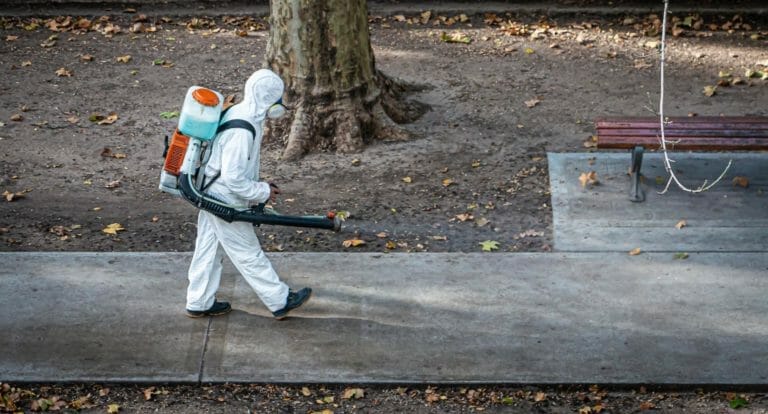
A Guide to Taiwan’s Quarantine Hotels and COVID Travel Restrictions
Taiwan travel planning group.
The absolute best place you can go for any questions about planning your Taiwan trip is my free Facebook group, Taiwan Travel Planning .
Literally any question you have about traveling in Taiwan or planning your Taiwan trip will be answered within 1-2 days by me or other members of the group. I’m also happy to look over your itinerary and give you suggestions. Because I do spend a lot of time every day in the group answering questions, I’ve created this Buy Me a Coffee account for anyone who wants to say thanks (my readers requested this!)
Take a Tour or DIY Travel?
The main purpose of this page, my website, and my Facebook group is to help you plan a DIY trip to Taiwan. Taiwan is an incredibly safe and easy country to travel around. However, this does require some advance planning, especially as trains and hotels in popular destinations in Taiwan often sell out. Generally, Taiwan is not a very suitable country for just showing up and figuring it out once you get there. Even more so since COVID, advance bookings for almost everything are the norm.
If you’re looking for a luxury, fully customized tour of Taiwan, I recommend Life of Taiwan . Their team of experts are some of the most knowledgeable in the industry. They provide personalized tea, food, cultural, or family tours of Taiwan and put you up in some of the country’s most exquisite hotels. If you contact them, please let them know that Nick sent you over!
If you’re in a rush and just want to see the best of Taiwan in a short period, I recommend this Taiwan 5-day tour . It doesn’t include Taipei, which is best visited in a day or two on your own before or after the tour.
What most visitors to Taiwan do, however, is plan their trip on their own. The country’s amazing TRA train (round-island) and High Speed Rail (down the west coast from Taipei to Kaohsiung) systems are actually faster than driving.
Then, when you get to your destination city, you can hire drivers for the day or go on guided day trips only when necessary. This is a very common approach, and there are numerous popular day trips and drivers available on Klook (sign up with this link for a TWD 100 credit in your account). You’ll find that I recommend Klook tours, drivers, car/scooter rentals, discounted attraction tickets, train tickets, and more throughout my Taiwan articles. There are many good deals on there, so you can save a lot of money by using the platform for planning your Taiwan trip.
And for truly DIY or budget travelers, you can certainly do it all on your own, especially with all the articles you’ll find on my website, covering how to visit almost every corner of Taiwan.
Renting a car is also a great option – read my tips for driving in Taiwan here and why I rented my car with Klook .
One good idea is to try one of these free Taipei waking tours on Day 1, then take it on your own from there!
Before Your Trip: Flights, Insurance, Apps, Guidebooks
If you’re coming from a country in Asia, there are numerous budget flights to Taiwan. I’ve prepared this list of the cheapest budget flights to Taiwan .
I’ve tried many different flight websites for finding long haul flights to Taiwan (I live in Canada). My two favorites are Kiwi.com and WayAway . I usually try both these sites when booking my Taiwan flights. They are often (but not alway) cheaper than booking directly with the airlines.
What I like about Kiwi.com is special features like searching not only your departure point but other cities nearby and being able to enter “anywhere” as a destination, and “anytime” as a flying time. For flexible travelers, this allows you to find the cheapest possible flights and dates without searching a million times. Unlike other aggregate flight sites, Kiwi includes budget airlines (many of which fly to Taipei!) and routes combining multiple airlines that are not affiliated.
WayAway is an even newer site and is now my favorite. Like Kiwi, it includes budget airlines, plus it displays awesome calendars showing the price of flights on every day. But the really special feature on WayAway, which will appeal to frequent travelers, is WayAway Plus. Basically, for a small annual fee, you can get cashback (like real cash, deposited to your account) not just for your flights but also any hotels you book through their system. Sign up with this link and you’ll get 10% off WayAway Plus !
Having said that, there are benefits to going with the airline directly, such as being able to easily contact them when needed. rather than going through a third party. China Airlines and Eva Airlines (the one with the Hello Kitty planes!) are two of Taiwan’s largest carriers.
For travel insurance , it’s pretty much a must nowadays. I recommend SafetyWing or Insubuy . Find more details about why in my guide to choosing travel insurance for Taiwan .
Which apps should you download for Taiwan? I’ve got you covered in this guide to the best Taiwan apps for travelers.
Last but not least, I may be old school, but I still love using travel guidebooks for planning my Taiwan trips. My favorite is and always has been the Taiwan Lonely Planet (I have about 5 different issues of it). I also recommend the Bradt Taiwan , written by long-term Taiwan resident Steven Crook. He also co-authored this amazing book covering the history of Taiwanese food, which I highly recommend.
Moving to Taiwan?
If you’re planning on moving to Taiwan for work, family reasons, or simply because Taiwan is an awesome place to live, then you should head over to my novella-sized guide to living in Taiwan .
In that article, I focus more on visa issues, getting a job in Taiwan, finding an apartment, making friends, and all other aspects of daily life in Taiwan, whereas below, I’ll stick mainly to things you need to know for traveling around Taiwan.
Taiwanese History & Culture
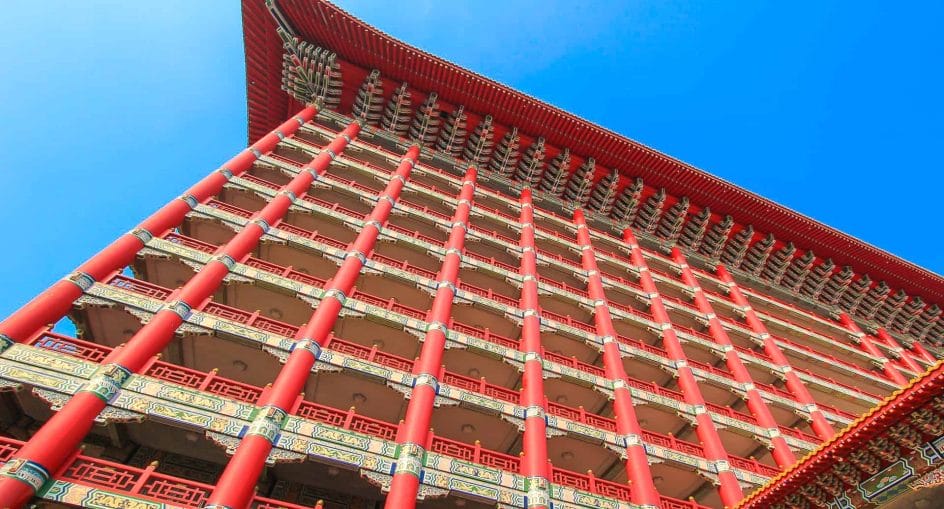
How much do you know about Taiwan? Having lived in Taiwan for many years and married a Taiwanese, I know for a fact that many people around the world know little to nothing about Taiwan. Even some of my friends and family members back home think it is the same as Thailand. For this reasons, I’ve even written this article to explain the differences between Taiwan and Thailand as this one to share some fun and interesting facts about Taiwan .
Taiwan is a small island nation in East Asia. Culturally, it is usually considered part of Northeast Asia, but geographically, some argue that it is closer to Southeast Asia. Taiwan was the original homeland of the Austronesian people, who went on to populate many islands of the Pacific in canoes. Today, their descendants include the 16 recognized aboriginal tribes of Taiwan .
Taiwan was briefly colonized by the Dutch and Spanish, while the Portuguese famously called it “Formosa”, or “beautiful island”, a name which stuck for centuries. Over the last 500 years, millions of people have migrated to Taiwan from China, especially Fujian province in the southeast. That’s why the local language of Taiwan, “Taiwanese” , is also called Minnan; it is the same as the Chinese dialect spoken in the Minnan region of Fujian. Taiwan remained on the fringe of Chinese imperial influence for centuries, then fell to Japanese occupation from 1895 to 1945.
In the Chinese Civil War, the nationalist KMT party of the Republic of China lost to the Communist Party in 1949 and fled to Taiwan, along with millions of Chinese soldiers and refugees from all over China, bringing their language (Mandarin), food, and culture. They thought they’d take back China someday, but they never did. That’s why Taiwan is still officially (and confusingly) called Republic of China, but their passports now finally say “Taiwan” in bigger letters . In 2000, the DPP were the first non-KMT party to win an election in Taiwan. Current President Tsai Ing-wen belongs to the independence-leaning DPP party.
The relationship between Taiwan and China remains complex and is the source of much tension. China claims that Taiwan is a province of China and bullies Taiwan from entering the UN and WHO, and from using the word “Taiwan” in international events like the Olympics (they have to call their team “Chinese Taipei”. But most Taiwanese consider Taiwan independent, and anyone who has been to both countries knows just how different they are. Few countries officially recognize Taiwan, but it acts as an independent country in virtually every way.
Today Taiwan is a modern, vibrant democracy with a free press. It is known for its welcoming people, efficiency, safety, and incredible street food. It has been chosen as the top country in the world for expats . It was also the first country in Asia to legalize equal (gay) marriage rights. Taiwan was one of the success stories in its handling of the COVID pandemic. Also read about some of the most famous people from Taiwan here .
Should you tip in Taiwan? Most often the answer is no. Learn all about Taiwan’s money and currency here .
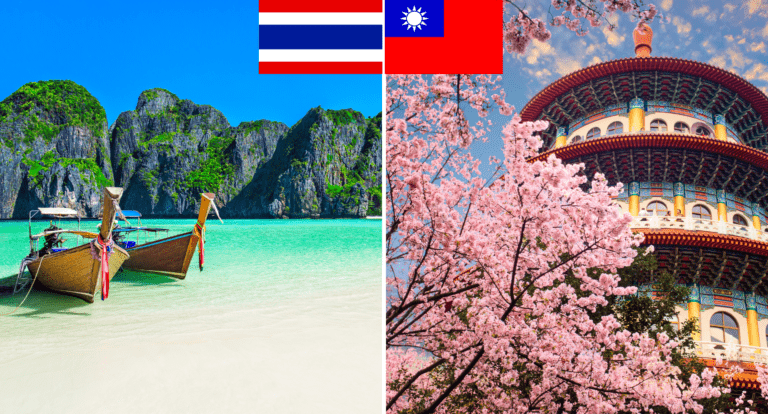
Thailand vs. Taiwan: What’s the Difference?
Taiwanese food.
One of the great pleasures of visiting Taiwan is enjoying the country’s incredible food. Indeed, may travelers from Asian country’s come to Taiwan JUST for the food. Taiwanese is especially known for its incredible variety of cheap and delicious street food .
The best place to try Taiwanese street food is in night markets. Every city in the country has a night market (here are the best night markets across Taiwan ), while Taipei has more than 50. Here I introduce the best night markets in Taipei , night markets in Taichung , night markets in Tainan , and night markets in Kaohsiung . Also don’t miss my favorite night market in the country, Keelung Night Market !
Besides street food, some restaurant experiences you may want to enjoy in Taiwan are DIY barbecue joints, all-you-can-eat hot pot, quick fry (a kind of local eatery suitable for groups, and with lots of cheap dishes meant for sharing, with lots of beer), and Din Tai Fung, the country’s most famous restaurant, which specializes in xiaolongbao (soup dumplings). In this article, I recommend 80+ of my favorite restaurants in Taipei , arranged by style, and the best restaurants open all night in Taipei here !
Seafood lovers should also visit Addiction Aquatic Development , an upscale gourmet seafood market in Taipei, or consider visiting one of the country’s many port markets.
For vegetarians and vegans, you’ll be happy to know you’ll be spoiled for choices in Taiwan. See the vegetarian section of my street foods article, or keep an eye out for the character for vegetarian 素 displayed on Buddhist vegetarian restaurants; many of them are buffet style and you pay by weight. You can also say “I am vegetarian” (wo chi su/我吃素), “Do you have anything vegetarian” (you sude ma?/有素的嗎?) or “Is this vegetarian” (zhe shi sude ma?/這是素的嗎?)
Besides all the articles before, I’ve got several newer food and night markets guides here on my other website, TaiwanObsessed.
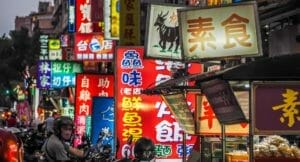
The Top 9 Night Markets in Kaohsiung (& what to eat at each one!)

A Guide to Feasting at Fengchia Night Market in Taichung

Ximending Food Guide: What to Eat & Best Restaurants (2024 updated)
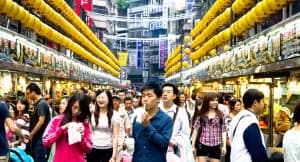
20 Best Night Markets in Taipei (+ What To Eat at Each One!)
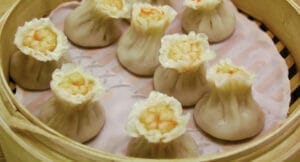
The 80 Best Restaurants in Taipei (by food type!)

The “Big 5” Night Markets in Taichung (+ What to Eat at Each One!)
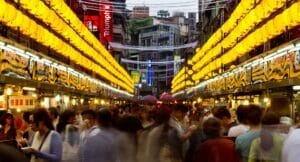
How to Binge Eat Your Way Through Keelung Night Market

What to Eat at Addiction Aquatic Development, Taipei’s Seafood Mecca

Anping Old Street (& other things to do in Anping, Tainan)
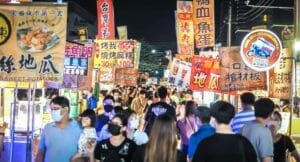
The “Big Five” Night Markets in Tainan & What to Eat at Each One
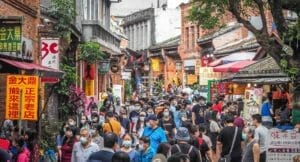
Shenkeng Old Street: A Food Tour of Taipei’s Stinky Tofu Village
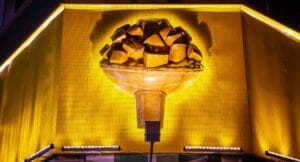
Yongkang Street, Taipei for Foodies: Best Teahouses, Mango Ice, and More
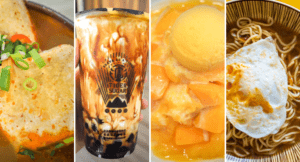
Taiwan Street Food Bucket List: 101 Taiwanese Foods To Try
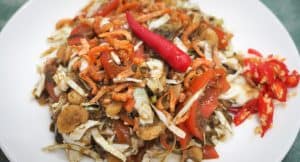
A Food Tour of Burma Street in Zhonghe, New Taipei City
When to visit taiwan.
Deciding on a season or month for your trip to Taiwan is the first step to planning your Taiwan travels, and thus the first topic to cover in this Taiwan traveling guide. To make things easier, I’ve written this dedicated guide to the best time to visit Taiwan . In it, you’ll find a description of every season and month of the year in Taiwan, and links to my 12 individual guides for visiting Taiwan in every month of the year. I update these articles constantly to add upcoming events and Taiwan travel news.
To summarize that article for you here, there’s no real “high” or “low” season for travel to Taiwan; each season of the year comes with some ups and downs. Summer is extremely hot and humid and comes with the chance of typhoons, but it’s also the best time for Taiwan’s beaches , outlying islands , and water-based activities.
Meanwhile, winter can be gray and chilly, but is the best time for hot springs and seeing cherry blossoms. Be careful if planning a trip around Chinese New Year , as many things will close (see my list of attractions and what days they close ), and it can be really difficult to travel around when half the country is on the road. Spring has warm weather but also a mini rain season, while autumn is my personal favorite for these reasons .
Below you’ll also find my individual guides to each season in Taiwan. But don’t fret too much about it; if you can only visit at a certain time of the year, there’s really no bad time to be in Taiwan!

The Best Time to Visit Taiwan: A Month-by-Month Guide
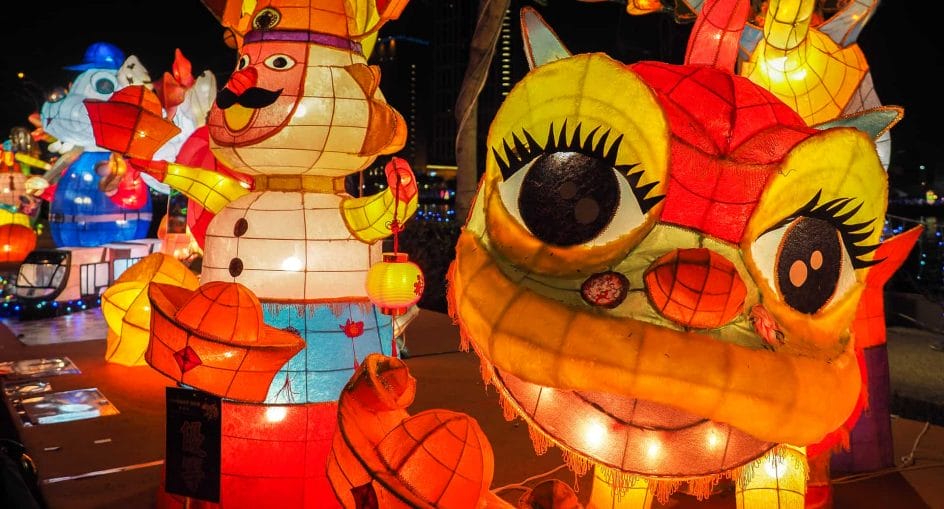
2024 Chinese New Year in Taiwan: Tips for Visiting & Things to Do
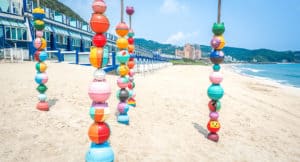
Summer in Taiwan: Everything You Need to Know
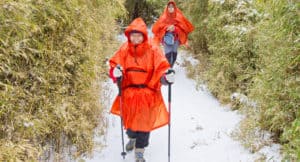
Winter in Taiwan (Xmas, NYE, LNY & Where to See Snow!)

Spring in Taiwan: Everything You Need to Know

Autumn in Taiwan: Everything You Need to Know
Best taiwan travel deal.
Who doesn’t want to find a good deal when traveling to Taiwan? Here are some of the websites and services I regularly use for planning my Taiwan travels:
- Klook : Get big discounts on everything from High Speed Rail & attraction tickets to restaurant vouchers and guided tours. Sign up with this link to get a free TWD100 credit !
- KKday : While Klook is a Hong Kong compared, KKday is the Taiwan version of it. Some activities are the same as Klook, while some are unique. I prefer Klook because KKday sometimes has poor English, but I still sometimes use KKday for things that Klook doesn’t have.
- Booking : My preferred site for finding the best hotel deals in Taiwan.
- Agoda : Some users say they find cheaper prices on Agoda for Asian destinations, including Taiwan.
- Cookly : Find the best cooking courses in Taiwan.
These are some examples of great travel deals you can find on Klook:
Taiwan Travel Passes
One way to save money on travel around the world nowadays is by using city travel passes. Taiwan has a few available, but in order for them to actually save you money, you have to understand how they work, and get the right one for your needs.
Here are some travel passes in Taiwan that you may consider getting:
Taiwan Fun Passes
These 1 to 3-day passes include all transportation in and around Taipei, entrance fees to a long list of attractions, and some tourist shuttle buses for day trips out of Taipei. The most popular one is the Taipei Unlimited Fun Pass , which you can buy here .
Read my detailed review of all the Taipei Fun Passes to see how they work and determine if any of them will be worth it for your Taiwan trip. It only makes sense to get one if you plan to do a lot of sightseeing and MRT riding in Taipei in 1-3 days. Otherwise, I recommend just getting an EasyCard.
You’ll get a TWD 100 credit toward your Fun Pass if you sign up for Klook with this link first before booking!
I haven’t reviewed it yet, but there is a new Klook Taipei Pass . This one is for attractions only, but you have more time to use it, so it’s better for people who will have more time in the city.
Don’t confuse Taipei Fun Passes with the EasyCard , which is what everyone in Taipei uses to swipe onto the MRT and city buses. Read my detailed EasyCard guide for more info than I’ll provide here.
Taipei Fun Passes are designed for tourists, while the EasyCard is a reloadable card used by everyone else, including tourists who don’t get a Taipei Fun Pass. They cost TWD 100 (you can no longer get this deposit back), plus whatever money you load onto them. You can swipe them to ride the MRT in Taipei, Taichung, and Kaohsiung, all city buses in Taiwan, some ferries, and to pay for taxis, items in convenience stores, and more.
You can get an EasyCard from any MRT station, including the Taoyuan Airport MRT station, and load money onto it. You can also order an EasyCard for pickup when you arrive in Taiwan .
Sun Moon Lake Passes
The other place you will find travel passes in Taiwan is at Sun Moon Lake , one of the country’s most popular attractions (we’ll get to those below). There are numerous Sun Moon Lake passes to choose from, and you can buy them from 7-Eleven iBon machines or from train stations in Taichung, the nearest major city.
Like the Taipei Fun Passes, these only save you money if you use them for enough avtivities. Most also include transportation to and from Taichung.
Learn all about the passes and how to use them in my Sun Moon Lake Pass review . Note that these pass prices and what they include are often changing.

Taipei Fun Pass: Is it Worth the Money?

Sun Moon Lake Pass: Is it Worth the Money? (updated 2024)
Best sim card and wifi device.
There’s no doubt that having an Internet connection while traveling in Taiwan is super convenient. You can check GoogleMaps to find the way, communicate with hotels, find bus times, etc. Nowadays, it’s pretty much essential.
A SIM card is the best idea in my opinion, but some people also go for an eSIM like this or pocket Wifi device . I compare all three in my guides to SIMs for Taiwan and eSIMs for Taiwan .
I recommend pre-ordering your SIM card for pickup when you arrive at Taoyuan International Airport. If you go with a WiFi device, then I recommend this one . Note the pick up times – if you arrive in the middle of the night, you may have to pick one up in the city.
You’ll get a TWD 100 credit toward your Taiwan SIM card or WiFi device if you sign up for Klook with this link first before booking it.
Another option that I have yet to fully understand myself is eSIMs for Taiwan – especially considering that the newest iPhones don’t even have SIM card slots anymore. If you are tech-savvy, check them out!
Taipei: The Tantalizing Capital of Taiwan

In some countries, you want to get out of the capital as soon as you arrive. This is not the case with Taipei . For most visitors to Taiwan, I recommend budgeting at least two full days for Taipei City alone, plus add 1-2 more days for day trips from Taipei (even more if you can!)
Taipei is always buzzing with activity; by day, you’ve got atmospheric historical neighborhoods to explore, towering Taipei 101, landmark Chiang Kai-shek Memorial Hall, Beitou Hot Springs, Maokong Gondola, Longshan Temple , and hikes in the hills (and volcanoes!) surrounding the city. After the sun goes down, it’s time to eat ’til you drop in the city’s famed night markets : the most famous ones are Shilin, Raohe, Ningxia, Tonghua, Nanjichang, and Huaxi Night Market .
As if that weren’t enough, Taipei is incredibly safe, and getting around is a breeze on the MRT, one of the best metro systems in the world.
Things to Do & Taipei Itineraries
Here is the most popular article on my website: 50+ awesome things to do in Taipei . For the less famous spots, see my off-the-beaten-track guide to Taipei . Below I’ve also linked to all my Taipei articles.
Besides the below articles, I’ve also got guides to spending one day in Taipei and how to plan a Taipei layover on my other website, TaiwanObsessed.
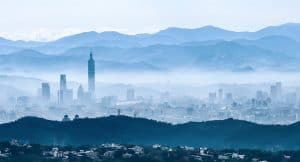
50 Unmissable Things to Do in Taipei in 2024

How to Spend 2 Awesome Days in Taipei

How to Spend 3 Awesome Days in Taipei
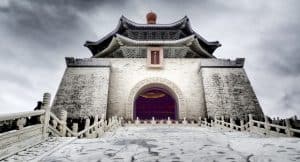
How to Spend 4 Awesome Days in Taipei
The above itineraries will make things easier for those will little time for planning. But my recommendations for Taipei don’t stop there.
For people who want to dig a little deeper and further customize the Taipei portion of their Taiwan trip, here some useful resources that further explore how much Taipei has to offer, including its best temples , night markets , hikes , and beaches .
Also see the my post below for the best times of the year to visit Taipei; the weather of Taipei is quite different to that of other parts of Taiwan, so if your trip to Taiwan is mainly focused on Taipei, you’ll find this article more useful than my “Best time to visit Taiwan” article I linked to above.
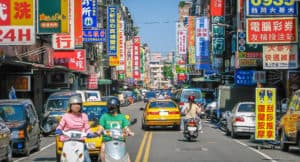
The Best Time to Visit Taipei City: An Insider’s Guide
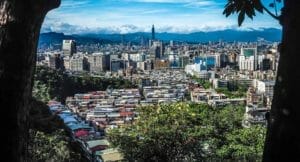
Hiking in Taipei: My 21 Favorite Taipei Hikes

The Best Cat Cafes in Taipei, the Birthplace of Cat Cafe Culture

30 Jaw-Dropping Temples in Taipei and New Taipei City
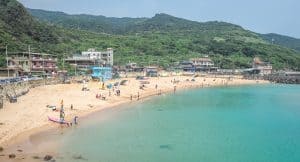
7 Beaches around Taipei You Can’t Miss
Coolest neighborhoods & where to stay.
Deciding where to stay in Taipei can be rather intimidating, as there are so many cool neighborhoods to choose from.
Let me make life easier for you by breaking it down to the best neighborhoods to stay in Taipei , with my hotel recommendations for each one. For each area of Taipei, I’ve included hotel recommendations for budget, mid-range, and luxury travelers, also pointing out which ones are suitable for travelers with kids. I’ve also got specific guides to the best hostels and luxury hotels in Taipei.
Besides my “where to stay in Taipei” article below, I’ve got detailed guides to some of my personal favorite neighborhoods in Taipei: Beitou for hot springs, historic Dadaocheng , and funky, gay-friendly Ximending . Start planning your walking tours with these guides!
If you have a very early or late flight, here are my recommended hotels in and around Taoyuan Airport .
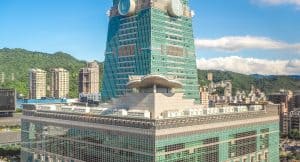
Where to Stay in Taipei in 2024 (by area & budget)
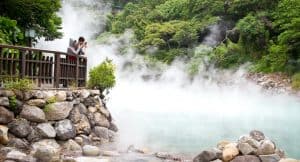
The Ultimate Beitou Hot Spring Guide (2024 info!)

A Guide to Dihua Street in Dadaocheng, Taipei’s Oldest Street

30 Fun (& WEIRD) Things to Do in Ximending, Taipei
Day trips from taipei.
When deciding how long to stay in Taipei, you have to factor in that there some really incredible day trips from the city!
I normally recommend that, if you can, dedicate two full days to exploring Taipei, then another one or two days for day trips. If you only have one day in your Taiwan travel plan to do a day trip from Taipei, I would suggest that you plan it carefully. This way, you’ll be able to squeeze in several of my recommended 40 day trip ideas into one day.
The following five stops are some of the most popular day trips from Taipei, and since they are all fairly close together, you can combine them into one killer day trip from Taipei. There are even some shuttle buses deals like this that can make this even easier to accomplish.
- Jiufen : A former gold mining town on top of a mountain, famous for its atmospheric staircases and teahouses
- Shifen Waterfall : The widest in Taiwan, accessed from a cute train station where people set off sky lanterns
- Houtong : The “Cat Village”, literally a village full of cats
- Keelung : A harbor city with the best night market in Taiwan, forts, beach, and more
- Yehliu Geopark : Odd, wind-blown rock formations on the coast
- Tamsui : A popular riverside promenade with unique foods, beaches, and picturesque colonial forts
If you don’t want to drive or figure out public transportation, there’s an awesome English service called Parkbus Taiwan , which takes guests on day trips from the city for hiking and other activities. Use my discount code “ Spiritual10 ” at checkout to get 10% (may not be available for some events).
There are practically unlimited day trip possibilities from Taipei. This is why myself and so many other expats love living in Taipei; you get the excitement of the city, but you can go somewhere different every weekend. Because Taiwan is so small, and thanks to its amazing transportation system and the High Speed Rail, you can go almost anywhere in Taiwan in a day or weekend trip.

20+ Fun Things to Do in Keelung, Northern Taiwan’s Port City
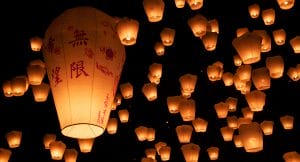
40 Day Trips from Taipei You Can’t Miss
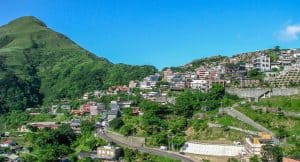
Getting from Taipei to Jiufen and Shifen (with pictures and times)
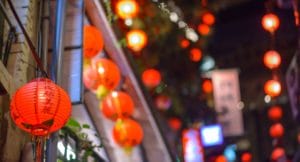
Jiufen Old Street: A 2024 Guide to this Classic Taipei Day Trip
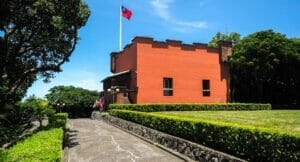
Tamsui, Taiwan: Fishermen’s Wharf, Old Street, & other Things to Do


Wulai Hot Spring & Old Street: A 2024 Guide
Planning your trip around taiwan.
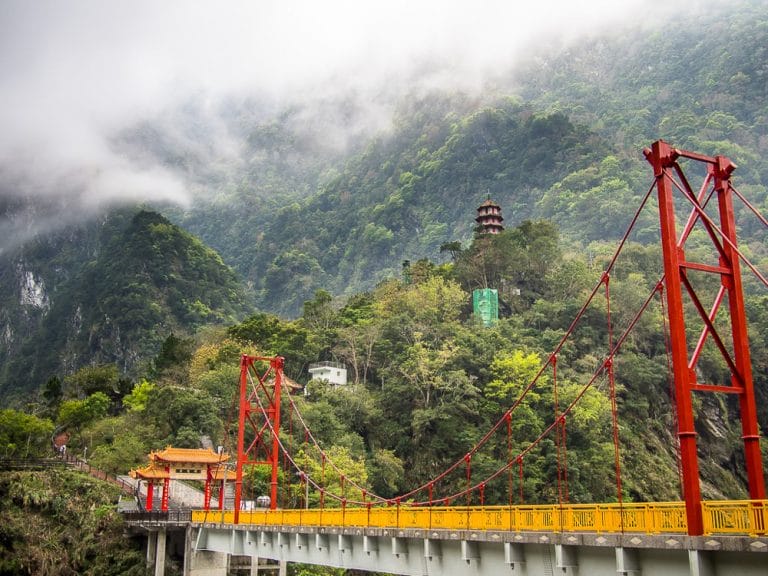
One of the hardest parts of planning a Taiwan trip is mapping out the perfect Taiwan travel itinerary .
What a lot of people do is book their trip first, and then realize they didn’t budget enough time for everything they want to see. Moreover, some of the best things to do in Taiwan are on opposite coasts, with 3000-meter mountains between them!
For example, many people only schedule around one week for their Taiwan trip. Then they decide they want to visit Taipei, Taroko Gorge on the east coast, and Sun Moon Lake and/or Alishan , which are in Central Taiwan but accessed from the west coast. On the map, these three top scenic attractions in Taiwan look fairly close together. But guess what? There are no buses that cross the Central Mountain Range of Taiwan. You can do it in a car, but the road is super winding and takes a long time.
So what I see a lot of visitors doing is going from Taipei to Taroko Gorge first (2.5 to 4 hours on the train, one way). Then they have to return to Taipei, and then travel a similar amount of time down the west coast to reach Sun Moon Lake and/or Alishan. It’s certainly possible, but it means you have to use up an entire day of your trip on the road.
How can you resolve this common Taiwan travel dilemma? I feel the answer is in planning your trip better before you book it, so that you can budget enough days to travel all the way around Taiwan and see everything that you want to without rushing. Which leads to the next important question:
How Long Do I Need to Visit Taiwan?
With a week or less, you will probably only have time to visit Taipei, including some day trips, and perhaps do a 1 or 2-night trip to Taroko Gorge on the East Coast, or Taichung, Sun Moon Lake, and/or Alishan in Central Taiwan (and this would be really rushed).
If you want to do a full circle around Taiwan, these are the most obvious destinations along the way, going in a clockwise direction around Taiwan by riding the train: Taipei, Hualien (Taroko Gorge), Taitung, Kaohsiung, Tainan, Alishan, Sun Moon Lake, Taichung, and back to Taipei.
To do this, you are going to need two weeks or more . With exactly two weeks, you may even have to cut out one or two of the above stops, otherwise you’ll just be checking in and out of hotels every day or two.
With even more time, you can be less rushed, and potentially add more stops, such as the beaches of Kenting on the southern tip of the island (as a side trip from Kaohsiung), Lukang, spend more time in laid-back Taitung, or visit some of the offshore islands, like Green Island, Orchid Island, or Penghu. This is why I think 3 weeks is a great amount of time for visiting Taiwan, and if you can go even longer, all the better!
Taiwan Travel Itineraries
Here are my recommend itineraries for traveling around Taiwan.
The five-day itinerary is for a very short visit, while the second article provides Taiwan itineraries for 1, 2, or 3 weeks. These are tried-and-tested itineraries that I have done in some form or another several times, including with my kids (see more on that below)!
The itineraries for 2 weeks and up involve doing a full circle around Taiwan mostly by train, with a few buses as well. See the end of this article for more information on transportation options for getting around Taiwan.
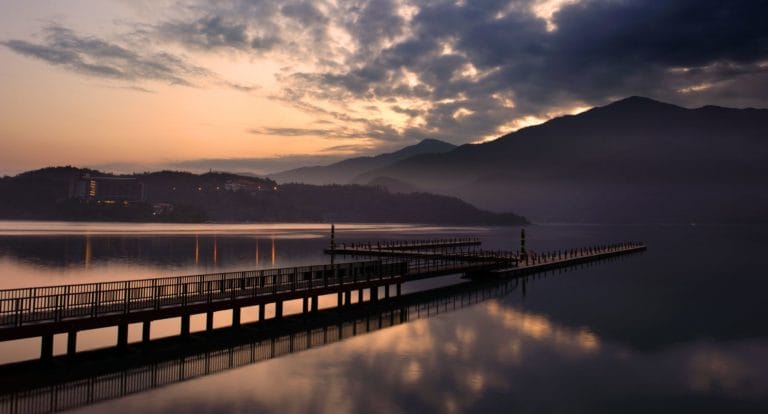
A Taiwan Itinerary for 1, 2, or 3 weeks (Slow & Fast Options!)

A Simple Taipei & Taiwan 5 Day Itinerary
Visiting taiwan with kids.
My kids Sage and Lavender were born and spent the first handful of years of their life in Taiwan. They’ve seen more of the country than most visitors ever will!
Below are my super detailed guides to visiting Taipei with kids and how to plan a complete circle around Taiwan with kids . The latter article is very similar to my above Taiwan itinerary for 1-3 weeks, but with tweaks along the way to focus on sights that my kids loved the most, as well as recommendations for kid-friendly hotels in each stop along the way.
You may also be interested in the best amusement parks in Taiwan , where to see capybaras in Taiwan , and my guide to Yilan, the “kid-friendly county” .

Taiwan with Kids: How to Plan a Round-Island Trip
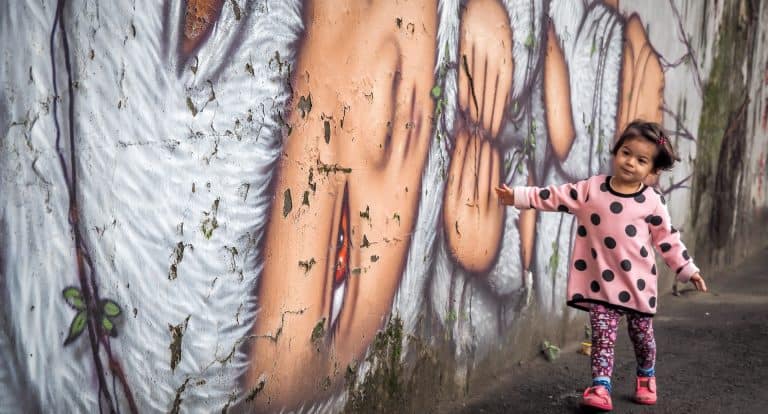
Taipei with Kids in 2024: Ideas from a Local Family
Best attractions around taiwan.
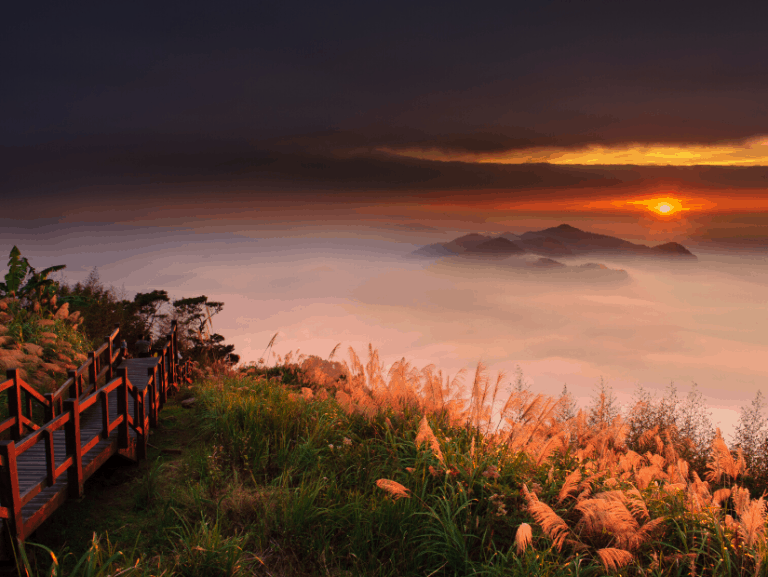
When trying to decide which destinations in Taiwan to include on your itinerary, it will be useful to take a deeper look at each of them to decide which ones are for you.
I’ll start with a list of some of the top scenic attractions. These five are the most common stops that people include on their Taiwan itineraries. I’ll follow that up with the best cities in Taiwan besides Taipei, best hot springs in Taiwan, best off-the-beaten track places to visit, and finally the offshore islands of Taiwan . Again, these are described in clockwise order going around Taiwan.
Top Scenic Attractions in Taiwan
- Taroko Gorge : dramatic canyon in beautiful Hualien County (currently closed indefinitely due to April 2024 earthquake)
- Taitung : Laid-back, rural corner of Taiwan, including the famous Brown Boulevard Cycling Path
- Kenting : Beaches on the southern tip of Taiwan
- Alishan : Mountain resort in Nantou famous for huge trees, high mountain tea, and sunrises above seas of clouds
- Cingjing (Qingjing) Farm : A high mountain farm and resort village that looks like a slice of Europe in Taiwan
- Hehuanshan : The best place to see snow in Taiwan (usually possible in January to March)
- Yushan : Tallest mountain in Taiwan and Northeast Asia, requires permits and planning to climb
- Sun Moon Lake : Beautiful lake surrounded by mountains
Here are my extremely detailed guides to the ones that almost all visitors try to include on their Taiwan travel itinerary:
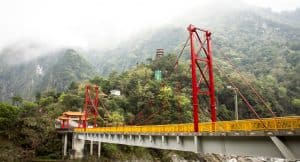
A 2024 Guide to Taroko Gorge and Taroko National Park
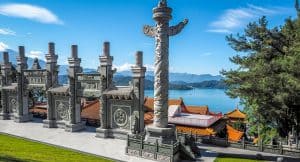
Sun Moon Lake, Taiwan: A 2024 Visitors’ Guide
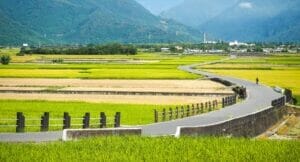
A Guide to Chishang, Taitung and Cycling Brown Boulevard
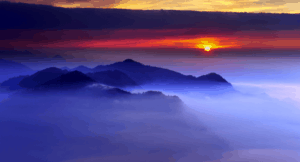
Alishan, Taiwan: A Super Detailed 2024 Guide
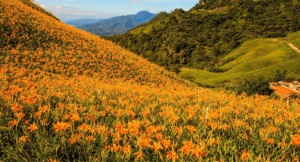
40 Unmissable Things to Do in Hualien, Taiwan
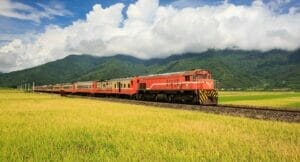
30 Incredible Things to Do in Taitung, Southeastern Taiwan
Best cities in taiwan.
Besides Taipei, which is a given, city lovers are going to find there are a few other cities they may want to include on their Taiwan travel itinerary. You can see my above-linked Taiwan travel itineraries to see how to fit these cities into your schedule.
Since there is one only train line around Taiwan, you’ll have to pass through all of them anyway if doing a full circuit around Taiwan. Since most cities in Taiwan are located on the developed west coast, the below are in counter-clockwise order. The varying time to reach them depends on whether you take the regular train/bus or the much faster High Speed Rail.
- New Taipei City : Taiwan’s largest city literally surrounds Taipei and is home to many of the most popular day trips from Taipei .
- Taoyuan : Best known for the international airport, consider stopping here to visit the impressive Xpark Aquarium on the way to/from the airport.
- Taichung : 1 – 2 hours south of Taipei on the west coast and the largest city in central Taiwan. Known for its artistic attractions like Rainbow Village , Gaomei Wetland , and as the birthplace of pearl milk tea.
- Lukang : 2-3 hours south of Taipei. Historic city famous for its traditional culture, food, and Old Street, and home to one of the most important temples in the country.
- Tainan : 1.75 – 5 hours south of Taipei on the west coast of southern Taiwan. Former capital of Taiwan famous for its temples , night markets , and considered by locals as the food capital of Taiwan.
- Kaohsiung : 2 – 6 hours south of Taipei in the southwest of Taiwan and end of the High Speed Rail line. Port city known for its revitalized harbor front, night markets , street art and Pier 2 Art Center , and the largest Buddhist monastery in Taiwan, Foguangshan . Here are my recommended hotels in Kaohsiung .
- Hualien : 2.5 – 4 hours from Taipei, only major city on the wild, scenic east coast of Taiwan. Mostly people stay in the city to visit nearby Taroko Gorge, but the city has a good night market and opportunities to experience Taiwanese aboriginal culture, such as this aboriginal cooking course .
- Taitung : 3.5 – 6 hours from Taipei, small city known for its aboriginal culture and end-point of most road trips down the east coast of Taiwan

Lukang Old Street (& other Things to Do in Lukang, Taiwan)
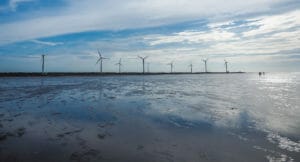
Gaomei Wetlands in Taichung: A Detailed Visitor’s Guide
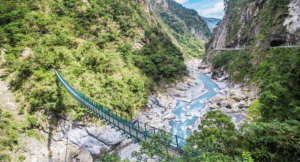
A Detailed Hualien Itinerary for 1-4 Days
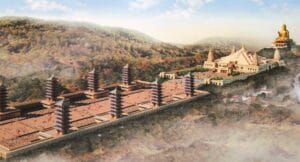
Fo Guang Shan, Kaohsiung: How to Visit and Stay at Taiwan’s Biggest Monastery
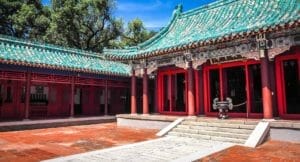
70 Things to Do in Tainan, Taiwan’s Ancient Capital

Our Visit to Rainbow Village Taichung (before it was destroyed)

50+ Things to Do in Kaohsiung, Southern Taiwan
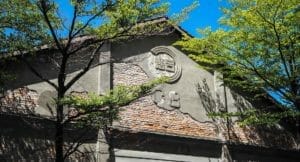
A Guide to Pier 2 Art Center in Kaohsiung City’s Harbor
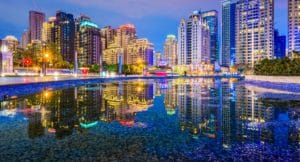
25 Unique Things to Do in Taichung, Taiwan
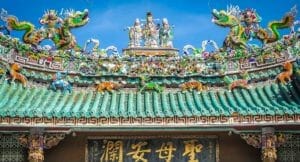
20+ Awe-Inspiring Temples in Tainan, Taiwan
Best hot springs in taiwan.
I happen to be a hot spring lover. Because Taiwan sits on the meeting point of two major tectonic plates, the island is geologically active, with dormant volcanoes and over 100 major hot springs! The most famous is surely Beitou Hot Spring in Taipei , while Wulai , Jiaoxi , and Jinshan can be visited as day trips from Taipei.
Here is my detailed guide to the 20 best hot springs in Taiwan , including information on hot spring etiquette.
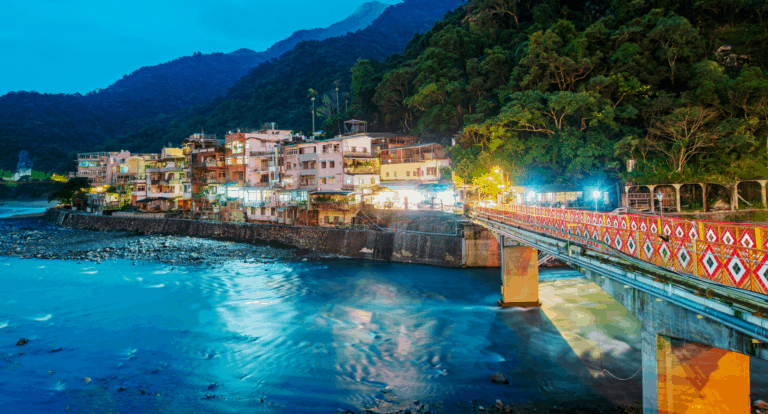
The 20 Best Hot Springs in Taiwan for a Blissful Winter Soak
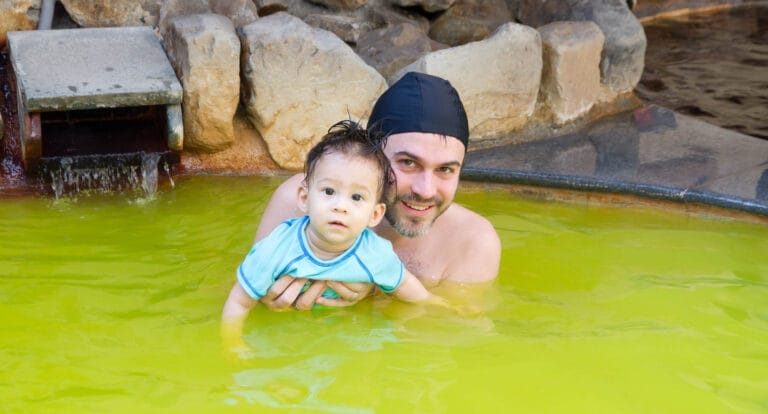
Jiaoxi Hot Spring: A Guide to My Favorite Spa Village in Taiwan
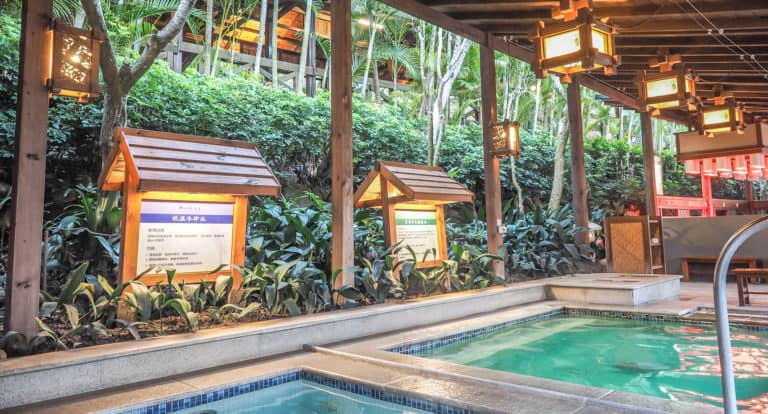
Lovely Tai’an Hot Spring in Miaoli, Taiwan
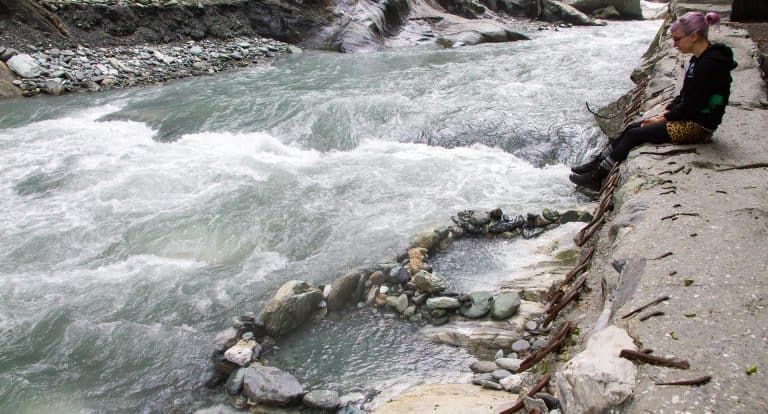
Wenshan Hot Spring: Taroko Gorge’s Spectacular Secret
Off-the-beaten-track places to visit in taiwan.
Just to make things more difficult for you, besides the many must-see places to visit in Taiwan I mentioned above, which already require at least two weeks to visit, there are loads of off-the-beaten-path destinations that are just as worthwhile.
Serious off-the-beaten track travelers should head to my other site, where I’ve got guides to relatively unexplored cities and counties like Taoyuan , Hsinchu , Yilan , Miaoli , Changhua , Yunlin , and Pingtung . I’ve also got this guide to off-the-beaten-track things to do in Taipei .
The below are articles cover some of the more remote or less visited (by foreign tourists) places in Taiwan. These are just the tip of the iceberg, but they are some of my personal favorites.
Depending on what kind of traveler you are, these may appeal to you more than the “must see” attractions I covered above!
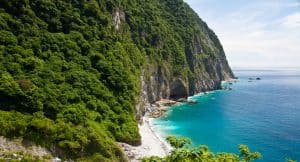
The Stunning East Coast of Taiwan Part 1: Yilan to Hualien and Taroko Gorge

Is Sicao Green Tunnel in Tainan Worth the Trip?

Strawberry Picking at a Strawberry Farm in Dahu, Taiwan
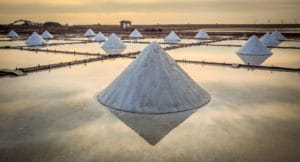
The Stunning Qigu Salt Mountain and Jingzijiao Wapan Salt Fields in Tainan

50+ Fun Things to Do in Yilan, Taiwan (2024 Updated!)
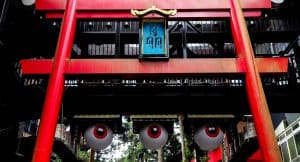
Quirky Xitou Monster Village in Nantou, Taiwan
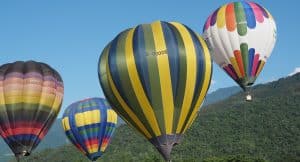
A Guide to Luye & the Taitung Hot Air Balloon Festival 2024
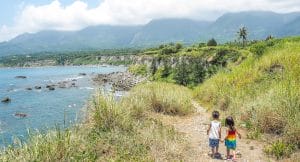
A Guide to Dulan, Taitung: Taiwan’s Coolest Beach Hangout

The Stunning East Coast of Taiwan Part 2: Hualien to Taitung and Kenting

Anping Tree House: How to Visit this Must-See Tainan Attraction
The offshore islands of taiwan.
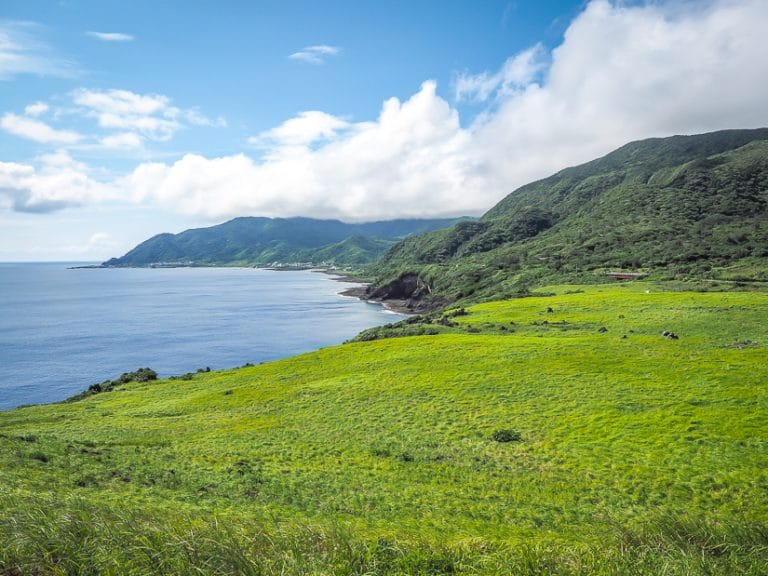
Yet another list of places you’ll want to visit during your Taiwan travels is the offshore islands. However, a visit to any of the offshore islands is like a trip within a Taiwan trip; visiting most of them involves a little more planning and time.
There are about half a dozen main ones to choose from. Also, the offshore islands are best visited in spring, summer (high season due to domestic tourists, but can be very hot), and early fall. In winter, they become very windy (especially Penghu) and/or many traveler’s services totally shut down (especially Orchid Island ).
The first four below are most commonly reached by ferry, with Xiao Liuqiu being the closest to the Taiwan mainland. Orchid Island also has the option of flights in very small airplanes from Taitung, while Penghu has regular flights from Taipei and other cities in Taiwan. Kinmen and Matsu are much closer to China than Taiwan (they are so close to it that you can see China from their shores), so they require flights.
Here are the small islands of Taiwan that you may want to visit someday.
- Green Island : Off Taitung’s coast, best for scenery and snorkeling or scuba diving, and a saltwater hot spring.
- Orchid Island : Harder to reach/plan, and home to Taiwan’s most remote aboriginal tribe.
- Xiao Liuqiu : Snorkeling with sea turtles, and easily done as a day trip from Kaohsiung.
- Cijin : A long, skinny island protecting Kaohsiung’s huge harbor.
- Penghu : Best for beaches, sailing, island hopping and a fireworks festival.
- Kinmen : Much closer to China than Taiwan, known for military history and Kaohliang, a strong liquor.
- Matsu : Also very close to China, known for its tunnels and forts.
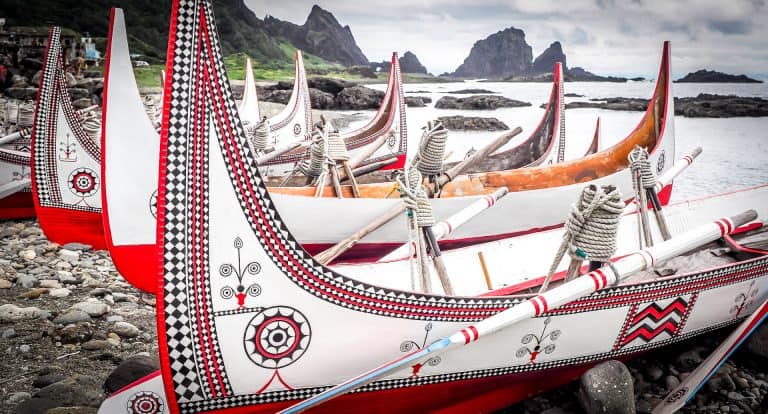
Orchid Island, Taiwan: A Detailed 2024 Guide
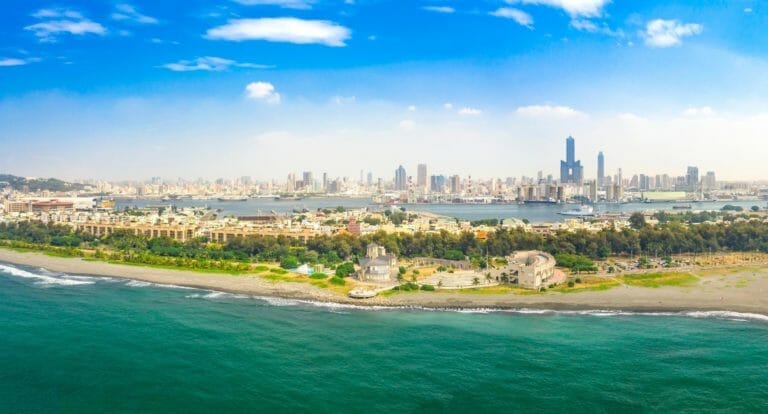
How to Visit Cijin Island in Kaohsiung City’s Port
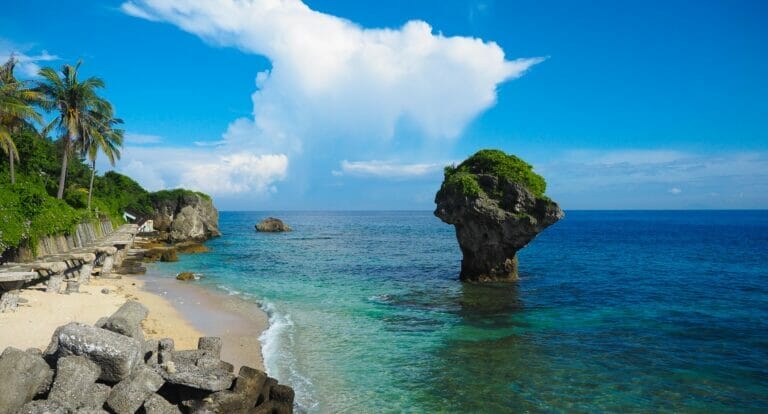
A 2024 Guide to Xiaoliuqiu Island, a Turtle Spotting Hot Spot
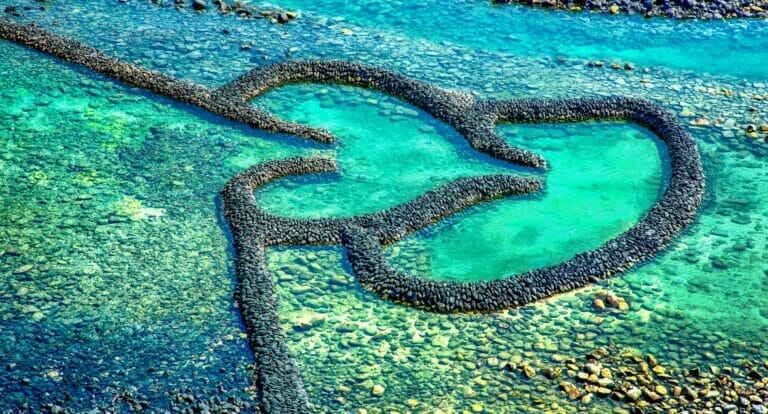
A 2024 Guide to Penghu Islands, Taiwan’s Offshore Paradise
Transportation: how to get around taiwan.
Taiwan has an amazing transportation system, and getting around the country is a breeze thanks to its extremely reliable metros, buses, and railway systems.
It is still important to understand some things about getting around Taiwan, though, in order to avoid disruptions on your trip (like finding out all the trains to your next stop are sold out!)
If you follow my Taiwan itineraries, you’ll mostly be taking trains around Taiwan, with some exceptions. Getting to Alishan is more complicated, as it can involve a train, bus, or combination of the two. Sun Moon Lake and Kenting are also only accessed by bus. Luckily, you don’t need to book any of these bus rides in advance.
See here if you’d like to find a private driver in Taiwan .
Getting Around Taipei
Upon arriving at Taoyuan International Airport, you can takes a bus (TWD135, 1 hour), the new Airport MRT (TWD 165, 35-50 min), or a taxi (TWD1000-1500, 45 min to 1 hr) to Taipei.
I recommended pre-booking a private transfer to your hotel , which is usually a little cheaper than taking a taxi. Also see my more detailed guide to getting from Taoyuan Airport to Taipei . If your flight is very early or late, stay in one of these airport hotels .
The MRT is the lifeline and pride of Taipei. It is considered one of the best metro systems in the world. You’ll love it, and use it to get almost everywhere you go in Taipei.
In order to ride the MRT, it’s best to get an EasyCard from any station (or order it before your trip ) and load some money onto it. This makes it easy to swipe in & out. You have to pay a TWD non-refundable deposit plus however much you want to load onto the card.
The EasyCard also works for buses and taxis in Taipei, ferries in Tamsui, and local buses in cities across the country. It can also be used on the Taichung and Kaohsiung MRT, and regular/local train tickets between cities that don’t require seat reservations. Note that for most long distance buses or trains, you won’t be able to use it.
Taxis are also cheap and plentiful in Taipei. Taipei has Uber, too, but it often isn’t any cheaper than taxis. Taxi drivers speak varying levels of English, and some not at all, so it’s a good idea to have your destination written in Mandarin when taking local taxis. Taxi drivers in Taiwan are honest and won’t try to scam you or rip you off.
Taking the Regular Train (TRA) around Taiwan
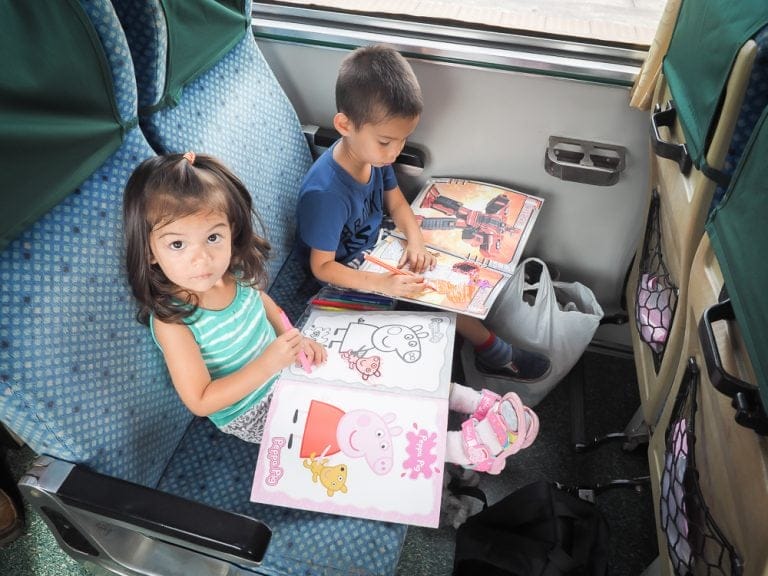
The regular (TRA) train does a full circle around Taiwan. Tickets can be booked online up to exactly 28 days in advance (or 29 days for Saturday trips and 30 days for Sunday trips). See details and screenshots for how to book train tickets online or on the app .
Trains sell out in Taiwan very often, especially on weekends and holidays. Sometimes they even sell out minutes after they go on sale, such as for long weekends, or for very popular rides (like the express train from Taipei to Hualien/Taroko Gorge).
For this reason, it’s very important to book your tickets in advance. Note that 28 days in advance means the tickets go on sale at precisely 12:00 a.m. (midnight). For example, if you want to travel on September 28, you should try to book your ticket at 12:00 a.m. on September 1, which is actually the night of August 31, Taiwan time of course.
If your train sells out, don’t freak out. You can always buy standing tickets on most trains. A lot of people do this, and just stand in the aisle or sit on the floor between train cars (see which ones below). It’s not comfortable for a long ride, but at least you’ll get there. Another option is to try a different time, or take a bus (but beware that there are very few buses running down the east coast).
Note that you are allowed to eat and drink on trains in Taiwan, and they all have toilets on board. You can even discreetly drink a beer on Taiwan trains, although most train station 7-Elevens no longer sell them. But be warned that Taiwanese people tend to be very quiet (and often sleep) on buses and trains, and they don’t appreciate noisy passengers. To be respectful, keep talking to a whisper, or just don’t talk at all. I can’t say how many times we have been “shhed” just for having a conversation at a reasonable volume on buses or trains in Taiwan.
There are different types of TRA trains in Taiwan, and it’s useful to know the names of them when searching for train times. Here they are:
- Local Train (區間車): Slowest, stops at every small stop, cheapest, least comfortable, and you can sit or stand anywhere. Buy ticket at station or swipe with EasyCard.
- Chu Kuang Express (莒光號): Regular trains that circle around Taiwan. Reserved seats, but you can always buy standing tickets from the train station ticket window.
- Tze-Chiang (Express / 自強號 ): Same as the above, but faster and fewer stops. Standing tickets also possible.
- Taroko / Puyuma Express (太魯閣號): Super express train from Taipei to Taroko Gorge/Hualien. Reserved seats only, and always sells out very quickly.
- Tze Chiang Lmt. Express 3000 ( 自強EMU3000 ): A new express train that is also reserved seats only.
The High Speed Rail (HSR)
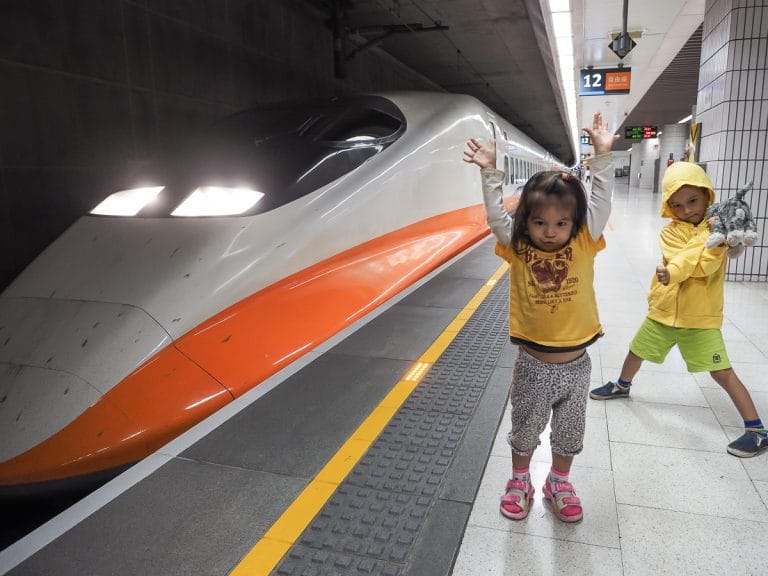
Taiwan has a Japanese-made high speed rail (HSR) sytem. The single line has 12 stops along the highly developed west coast of Taiwan, from Taipei city in the north to Kaohsiung city (called Zuoying Station) in the south.
The first station in Taipei is Nangang, while Taipei Main Station is the most useful, and connects to the Taipei City MRT, regular (TRA) trains, and Airport MRT. Banqiao is located in New Taipei City (the large city that surrounds Taipei City), and Taoyuan is close to the Taoyuan International Airport. To get to Taoyuan HSR station from the airport, you have to ride the Airport MRT a few stops in the opposite direction from Taipei.
Generally speaking, HSR tickets costs about twice as much as the regular train, but get you there twice as fast.
It’s important to note, however, that in most cities, the HSR station is located outside of the city center, just like airports tend to be, so you have to factor in time (and money) to get to the city center once you arrive. This is the case for every stop except for Taipei.
In some cases, though, the location of the HSR station can be more useful. For example, in Taichung, the HSR station is closer to Rainbow Village, and has direct buses to Sun Moon Lake. Similarly, in Chiayi, you can catch a bus directly from the HSR station to Alishan, and thus avoid going into Chiayi City. In Kaohsiung, the HSR station is right beside Lotus Lake, one of the city’s top attractions. To get to the Kaohsiung City center, you just have to hop onto the KMRT.
You can buy HSR tickets online up to 28 days in advance, and buying them early usually gets you an early bird price.
You can also buy discounted HSR tickets on Klook – buying them here allows you to get the early bird discount even when you’ve missed it on the official site. Note that if you buy your tickets on Klook, you have to follow the instructions provided to actually book your seat after you receive the voucher. You can do this online or in person at the station. You’ll need to show your passport. Note that this Klook deal is for short term tourists only; residents/ARC-holders aren’t supposed to buy them.
Unlike TRA trains, the HSR has three cars (#10-12) of unreserved seats. This means you can show up at an HSR station anytime and buy an unreserved ticket at full price from one of the machines. These never sell out.
You aren’t guaranteed a seat, but you can often get one. The only time when demand is crazy high is Lunar New Year and on long weekends, and even then, we’ve always managed to get on without waiting too long.
Special Trains in Taiwan
Besides MRTs (city metros), TRA trains, and the HSR, there are a few special small-gauge train lines in Taiwan. Mostly these are restored old trains that run along former logging lines, built by the Japanese when they were logging during their colonial rule of Taiwan. They tend to be fun and highly scenic rides for tourists.
Here are some of these special small train lines that you may encounter or seek out on your trip:
- Pingxi Line : this small train line provides access to some of the most popular day trips from Taipei, including Houtong, Shifen, and Pingxi. Most people board it at Ruifang, which has direct connections to Taipei by bus or TRA train.
- Alishan Forest Railway : This is the most interesting way to get from the city of Chiayi to the mountain resort of Alishan. However, the final section was destroyed in a typhoon, so you have to take a bus for the final leg. There are also parts of the train line running to scenic spots within Alishan National Scenic Area. You can find all the relevant information in my guide to getting to Alishan .
- Neiwan, Jiji, and Bong Bong Lines : These are three more scenic small train lines that far few foreign tourists ever make it to. They are in Hsinchu, Changhua, and Yilan (on top of Taipingshan Mountain), respectively.
Buses in Taiwan
There are some cases where you will need to take buses in Taiwan. Here are a few common routes that many visitors take:
- In Taipei City, you’ll need to take buses for getting to Yangmingshan National Park or to National Palace Museum
- You’ll also need to ride buses to popular day trip places in New Taipei City, like for getting to Jiufen or Yehliu Geopark. You can swipe EasyCard for all of the above.
- Buses are the only direct way for getting from Taichung to Sun Moon Lake , Sun Moon Lake to Alishan , and Chiayi to Alishan . Click these links to find out how to book them.
- You’ll also need to ride the Kenting Express bus from Kaohsiung to Kenting National Park .
- Buses also run between all major cities on the west coast of Taiwan. They are cheaper but usually a little slower than the train. There are no buses from Taipei to Hualien on the east coast.
Final Thoughts on Planning a Taiwan Trip
Well, I hope you’ve found more than enough information in my Taiwan travel blog for planning your trip. Taiwan remains largely closed to international visitors for the time being, but hopefully big changes are on the horizon.
Please feel free to check back again, as I’m constantly updating my Taiwan travel content to reflect the current situation. And if you’ve got any questions, please join my Taiwan Travel Planning group and I’ll answer them there!

A Super Detailed Taipei & Taiwan Itinerary for 5 Days {2024}
There is a really good chance that this post contains affiliate links. If you click through and make a purchase, I may receive a small commission (for which I am deeply grateful) at no additional cost to you.
Searching for the perfect 5 days in Taiwan itinerary? In this post, a local travel expert who has lived in Taiwan for over a decade tells us how to plan the best 5-day Taipei and Taiwan itinerary. Read on!
Welcome to Taiwan , one of the most compelling, rewarding, and welcoming countries in East Asia ! Taiwan may look small on the map, but it has loads to offer for every kind of traveler, from foodies & budding historians to lovers of art and the great outdoors.
To be completely honest, five days in Taiwan is not enough. But if that’s what you’ve got, this article will prove to be an invaluable resource for making the absolute best of the time you do have in the country.
This Taiwan 5 day itinerary will begin with two sight-packed days in the capital, Taipei , followed by a choice of several day trips from the city. Next up, you’ll head down to Taichung City, Central Taiwan’s art & food-focused city, before finishing up at visually stunning Sun Moon Lake.
Note: If you don’t have time to read this full itinerary or prefer that your trip be planned for you, consider booking this 5-day guided tour of Taiwan instead. The tour includes visits to top destinations like Sun Moon Lake, Tainan, Kaohsiung, Kenting, Taitung, the East Coast, Taroko, and more. Accommodations are provided at 5-star hotels throughout the journey.
If you prefer to adventure on your own, read on for the perfect 5 days in Taiwan itinerary!

Things to Know Before You Go To Taiwan
With only five days in Taiwan, you’ll want to plan your Taiwan trip to a tee in order to make maximum use of what little time you have.
You won’t want to waste half a day figuring out what to do, where to go next, where to eat, and so on!
Let’s begin with some tips for planning five unforgettable days in Taiwan!
When to Visit Taiwan

First, you’ll want to choose the right season to visit. Taiwan doesn’t have a distinct high or low season, so the best time for you to visit Taiwan is really going to depend on your interests and favorite kind of weather.
Winter has milder weather and is better for hot springs and flower viewing (hello cherry blossoms!), but Taipei in winter can be damp, chilly, and gray.
Summer is extremely hot and humid, by contrast, plus there’s a chance of encountering a typhoon.
Autumn and spring are probably the best times to visit, but you may want to avoid the mini rain season which usually comes in late May and early June, and typhoons can strike as late as October.
Getting Around Taiwan

As soon as you arrive at the Taoyuan International Airport, you can purchase an EasyCard at the airport’s MRT station.
This is the card all locals use to swipe onto the Taipei MRT, city buses in major cities across Taiwan, and short train rides between cities that don’t require seat reservations.
It’s faster than paying each time, and the fares are discounted.
Next, you can hop on the Airport MRT, which will get you to Taipei Main Station in 35 to 50 minutes, from where you can walk, take a taxi, or connect to another MRT line to reach your hotel.
During your stay in Taipei, you can use the MRT to get everywhere described in this itinerary. By the time you leave Taipei, you’ll seriously be in love with the MRT!
If you ever decide to take a taxi, you’ll find they are everywhere and are relatively cheap. The drivers mostly speak a little English, but there may be cases in which you’ll need to show them an address in Mandarin, so it’s best to have that ready.
If you follow this itinerary, you’ll also have a few transportation choices for getting out of Taipei. I’ll mention exactly how to do that in the relevant sections below.
In Taichung, you’ll rely more on buses. They’re totally free for short rides if you swipe with your EasyCard!
The Perfect Taiwan 5 Day Itinerary
5 days in taiwan itinerary day 1: exploring taipei.
Good morning Taipei! On day one, it’s time to knock off some of the city’s top attractions.
For breakfast, you’ve got to try a local Taiwanese-style breakfast shop.
They’re literally everywhere, but if you want to seek out a particularly famous one, try Yonghe Soy Milk King near Da’An Park, or Yonghe Soy Milk in Taipei.
Go for steamed buns, scallion pancakes with egg & cheese, or flaky shao bing . But you really can’t go wrong with anything on the menu!
Pro Tip: If you are a foodie, I suggest taking this Private Street Food Tour with locals which covers food culture and history all in one place. Sample up to 10 street food dishes and Taiwanese specialties + you get to receive personalized recommendations on where to eat in the city.

Next, early birds should visit one of the city’s many temples, which tend to be frequently by elderly worshippers in the early morning. Longshan Temple is Taipei’s most famous.
There you can witness a serene chanting ceremony at 6 a.m. (or again at 8 a.m.) Each one lasts nearly an hour, and visitors are always welcome to explore the temple even while the ceremony is taking place.
Other temples worth checking out include Xingtian Temple, which is incense-free and known for its fortune tellers in an underpass below the main road, and Taipei Tianhou Temple in Ximending, which is sandwiched between two buildings and easy to miss!
Later in the morning, visit Chiang Ka-Shek Memorial Hall, the city’s most impressive historical site.
There you’ll find an enormous square flanked by the National Concert Hall and National Theater, both classical Chinese-style buildings , the beautiful Liberty Square Arch, and the impressive blue & white memorial building itself.
Prefer a guided tour of the city? This classic landmarks day tour is a must-do!

Next, walk (or ride the MRT two stops) to Ximending for lunch. This is Taipei’s coolest neighborhood; some people call it the Harajuku of Taipei for its Japanese-like atmosphere.
It’s also home to Taipei’s largest LGBTQ+ district, which centers on a collection of outdoor bars beside the historic Red House, a former Japanese market & theater.
Stroll the pedestrian-only streets to check out the cute shops, open-air tattoo parlors, and claw-machine arcades.
Take your pick from local street food, Japanese & Korean cuisine , or visit a poo-themed Modern Toilet restaurant.
Tip: If you’d like to experience Taiwanese cuisine after dark, I suggest taking this night tour that will satisfy your appetite. You can then stroll around the lively Raohe Street Night Market, walk across Rainbow Bridge, and see the famous Songshan Ciyou Temple nearby.

In the afternoon, head to Huashan 1914 Creative Park. This former sake distillery dates to the days when Taiwan was a Japanese colony.
Today it is an arts complex featuring rotating exhibits & events, a few cafés & restaurants, cool graffiti, and the perfect lawn for a picnic.
Next up, make your way to Taipei 101 , the country’s most iconic attraction. The 510-meter bamboo stalk-shaped skyscraper was the tallest in the world for six years.
To visit the observation deck, you’ll probably need to wait in line for 15-60 minutes, then you’ll be whisked to the 89 th floor in the world’s fastest elevator.
If you want to avoid the line, purchase this skip-the-line ticket for the observatory in advance.

The 360-degree view from up there is of course mesmerizing. Also don’t miss the huge stabilizing ball in the middle, which prevents the building from toppling in earthquakes, as well as the small outdoor viewing deck on the 91 st floor.
After visiting Taipei 101, walk or ride the MRT one stop to Xiangshan (Elephant Mountain) station. From there it’s a short walk to the trail which leads up the eponymous mountain.
In less than 30 minutes of uphill stairs, you’ll be afforded the best view that Taipei City has to offer, with Taipei 101 towering right in front of you. The trail is very popular, especially at sunset, but there’s always room for one more.
Finally, it’s time to eat! After descending the mountain, take your choice from one of Taipei’s legendary night markets. Tonghua Night Market is within walking distance.
The other most famous ones include Shilin Night Market (the largest and most popular among tourists), Raohe (a favorite among locals), and Ningxia (great for oyster omelets, sweet potato balls, and shaved ice desserts).
Need more ideas? Check out our article on the top things to do in Taipei !
5 Days in Taiwan Day 2: Exploring Taipei Part 2
Now that you’ve covered the best of Taipei’s famous attractions , it’s time to get a little more off-the-beaten-path on day two.
For breakfast, you’ll likely be itching to get back into a local breakfast shop to try more items on offer.

Continue on by visiting two more impressive temples: Confucius Temple and its neighboring Dalongdong Bao’An Temple.
The former is completely different than typical Taiwanese temples; its design is simple and its large gardens are serene.
The latter is a gorgeous example of traditional design, with super intricate roof carvings; many believe it’s Taipei’s best.
Next, history lovers could try strolling Dihua Street, Taipei’s oldest street, which features still-running Chinese medicinal shops, teahouses, temples, and restaurants that date back to Taipei’s earliest days.
You can get there from Bao’An Temple on foot, by backtracking a little on the MRT, or by taking a short taxi ride (I’d go for the latter).
Dihua Street stretches from near Daqiaotou MRT station in the north to near Beimen MRT station in the south.
If you make it to the far southern end, make sure to see Beimen (North Gate) itself, the only remaining Old Taipei city wall gate that has been restored to its exact former look.
For lunch, head to Addiction Aquatic Development. The name sounds weird, but it’s an insanely cool high-end seafood market housed in what used to be a traditional fish market.
After peering at the largest crabs in the world (Japanese spider crabs) and other sea creatures in the many water tanks, enter the upscale grocery store where you can buy insanely fresh & delicious take-away trays of sashimi, or splurge on the stand-up sushi & oyster bar.
The closest MRT is Xingtian Temple, from where it’s a 15-minute walk.
Filled with sushi, it’s now time for a more relaxing afternoon activity: visiting Taipei’s only Japanese hot spring village.
Connect to the red line and take it for 30 minutes north to Beitou station. From there, connect to the one-stop pink line, which literally goes uphill and smells like hot springs.
If you prefer to go on a guided tour with an expert, we suggest booking this one right here , which takes you to the Beitou Hotsprings, Yangmingshan Volcano, and other noteworthy stops.

Beitou is a lovely neighborhood at the base of Yangmingshan, a dormant volcano.
It has touristy bits, such as the Beitou Hot Spring Museum (still worth a visit!), the outdoor Beitou Public Hot Spring (the cheapest hot spring bathing option; mixed-sex and bathing suits required) in Hot Spring Park, and Beitou Thermal Valley (a huge steaming hot spring).
You can also get off the beaten track by visiting the Japanese-built Puji Temple or the impressive Beitou Museum. You can walk (slightly uphill) for about 20 minutes to get to the latter, or ride bus 230 or S25.
There are also over a dozen hot spring hotels to choose from for a private soak, ranging from the oldest Japanese bathhouse (Longnice Hot Spring or 瀧乃湯) to ultra fancy & expensive options like Gaia Hotel. Heads up: most are nude only and sex-segregated.
While in town, don’t miss the hot spring ramen! There are two shops offering it: Man Lai Hot Spring Ramen (滿来温泉拉麵) near Xinbeitou MRT station, and Mankewu Taiwanese Style Ramen (滿客屋台式拉麵) near Puji Temple.
Finally, if you still have time, you can ride the MRT further north to Danshui and stroll along the riverside promenade. From there you can also take a bus or river ferry to Fisherman’s Wharf to see the sunset.
Alternatively, return to Taipei and have dinner at whichever night markets you missed on day 1.
For a non-touristy night market that serves amazing foods, visit Nanjichang Night Market. The Michelin-rated stinky tofu at Stinky Boss in the market is amazing!
5 Day Taiwan Itinerary Day 3: Day Trip from Taipei
After thoroughly covering Taipei on your first two days, it’s time to get out of the city!
Choosing a day trip from Taipei is not going to be easy, as there are just so many possibilities. I’m going to give you four different options!

1. The most popular day trip from Taipei
The most popular day trip from Taipei includes some or all of the following: Jiufen, Houtong, Shifen Waterfall, Yehliu, & Keelung. You may be able to squeeze them all in if you get an early start!
To begin, swipe your Easy Card to board a local train from Taipei Main Station to Ruifang. From there, take the bus to Jiufen, a former gold mining boomtown built on the slope of a mountain.
Explore the atmospheric staircases, shops, & teahouses. Next, return to Ruifang and catch a train to Houtong, Taiwan’s famous “Cat Village”.
After that, catch the Pingxi Small Train to Shifen station for Shifen Waterfall, the widest waterfall in Taiwan.
Return to Ruifang, then take a local train to Keelung. If you have enough time, you can take a return bus to Yeliu Geopark, a coastal landscape with bizarre rock formations.
Otherwise, just stay in Keelung to eat at Keelung Night Market, one of the best night markets in Taiwan.
From there, it’s a 45-minute train ride back to Taipei. You can swipe your EasyCard for all the rides on this day trip.
Tip: If you prefer leaving the planning to the experts, I recommend this organized guided tour which takes you to top attractions like Yehliu Geological Park, Jiufen, and Pingxi. Having a knowledgeable local guide handle logistics allows you to simply focus on experiencing the best of northern Taiwan.
2. Off-the-beaten track
Culture enthusiasts can head southwest of Taipei to Sanxia, a district of New Taipei City famous for its restored Old Street and the incredibly beautiful Sanxia Temple (Zushi Temple).
You can get there by taking numerous local buses, depending on where you’re coming from in Taipei.
Next, hop in a taxi to the neighboring district of Yingge, the largest pottery center in Taiwan. Stroll the Yingge Old Street and its dozens of ceramics shops, try your hand at pottery making, or walk into historic kilns.
Don’t miss the impressive New Taipei City Yingge Ceramics Museum! It’s only 30 minutes back to Taipei by train.
For people interested in hiking, there are several amazing day hikes within easy reach of Taipei.
One of the best is the Caoling Historic Trail, which includes impressive coastal bluffs, and blooming silvergrass in November.
Another good one is Teapot Mountain, in which you can climb into a rocky peak that looks like a teapot.
It starts at Jinguashi Gold Ecological Village, which is near Jiufen (see #1 above) and is also worth visiting.
Yet another is Sandiaoling, which includes three waterfalls, one of which you can climb into a rocky overhang behind.
This one is near Houtong and Shifen (see #1), so it could also be combined with some of the places mentioned in #1.
4. Hot Springs
If you’re visiting in winter, you may want to try even more hot springs than Beitou in Taipei City. Moreover, the ones outside of Taipei City are generally cheaper.
The two best options within easy reach of Taipei are Wulai and Jiaoxi.
Wulai is an aboriginal village south of Taipei City. It has a market street with lots of yummy aboriginal food (try the mountain boar or bamboo tubes stuffed with sticky rice).
There are some free riverside hot spring pools that are rather decaying, or several private options to choose from (mostly private hot tub rooms with river views).
Alternatively, Jiaoxi Hot Spring in Yilan County is only an hour away by bus or local train. It has excellent spas with multi-colored hot spring waters, hot tubs with massage jets, and more.
Chuang Tang is one of the best, while Art Spa Hotel even has a tall hot water slide.
The town also has a hot spring park where you can drink local craft beer while you soak your feet, a few waterfall hikes.
5 days in Taiwan Itinerary Day 4: A Day in Taichung
On day four, it’s time to pack your bags and relocate to Taichung City, the largest city in Central Taiwan.
To maximize your time, you can hop on the High-Speed Rail (HSR), which only takes an hour and doesn’t even require a reservation; just buy a non-reserved ticket from one of the machines at the station and get on the train cars 10-12.
You can also ride the cheaper regular train (TRA), which takes two hours. You can try to reserve a seat, but if it’s fully booked, you’ll need to stand or sit on the floor between cars (many people do this).
One plus of the HSR is that it will get you closer to your first stop, Rainbow Village. From the station, grab a taxi or take bus #617; so long as your luggage isn’t too big, it shouldn’t be a problem.

Rainbow Village is one of Taiwan’s quirkiest attractions. Here a retired soldier painted his entire home in wild colors to save it from destruction. You may even meet the elderly man (“Rainbow Grandpa”) while you’re there!
Next, head into the city center to leave your luggage and/or check into your hotel.
After that, make your way to Chun Shui Tang, the supposed birthplace of pearl milk tea (bubble tea/boba)! They’ve also got decent food on offer.
Your tour of the city center can also include stops at Natural Way Six Arts Cultural Center (a beautifully restored Japanese martial arts hall), Painted Animation Lane, and Cultural Heritage Park.
For dinner, there’s no choice better than Feng Chia Night Market, the largest and best night market in Taichung.
Taiwan Itinerary Day 5: Sun Moon Lake
For the final stop on your Taiwan five day itinerary, you’re going to visit one of Taiwan’s most beautiful landscapes: Sun Moon Lake .
From Gancheng Station, Taichung Station, Daqing Station, or the Taichung High Speed Rail Station, you can catch the Sun Moon Lake shuttle bus, which takes around 90 minutes.
You’ll need to pay in cash for these tickets, or you can book them at any 7-Eleven iBon machine. It’s unusual for them to sell out.
Note: There is a cool tour from Taipei City that lets you explore Nantou and then spend time at the scenic Sun Moon Lake. You get to take in the lake’s mountainside vistas and visit landmarks in the region like Yidashao Wharf and Xuanguang Temple.

You’ll arrive at Shuishe, the main tourist village on the lake. From there, hop on the round-the-lake bus to the huge Wenwu Temple, which has the most stunning views looking down on the lake.
Continue on to the Sun Moon Lake Ropeway for more unbeatable views, and finally Ita Thao, an aboriginal village with an all-day market street offering the best food at Sun Moon Lake.
To return to Shuishe, take the bus back or a scenic boat rides across the lake. Buses back to Taichung leave roughly hourly, and the last one departs at 7:25 p.m.
Return to Taichung Station for the regular train back to Taipei, or the High Speed Rail Station for the fastest option.
If you want to head directly to Taoyuan International Airport, get off at Taoyuan Station and take the 10-minute shuttle bus.
Another Favorite Read: The Best Things to Do in Kaohsiung
In conclusion
Well, that sums up my whirlwind 5-day Taiwan itinerary. I hope you’ve got more than enough ideas for planning an unforgettable trip.
Trust me, after this, you’ll want to come back to Taiwan again as soon as possible!
This is a post by guest contributor, Nick Kembel.
Author’s Bio: Nick Kembel has lived in Taiwan for over 11 years and is the author of Taiwan in the Eyes of a Foreigner . He blogs about Taiwan at nickkembel.com and offers free Taiwan travel planning advice in this group .
About The Author

Guest Contributor
Leave a comment cancel reply.
Your email address will not be published. Required fields are marked *
This site uses Akismet to reduce spam. Learn how your comment data is processed .
Popular Posts
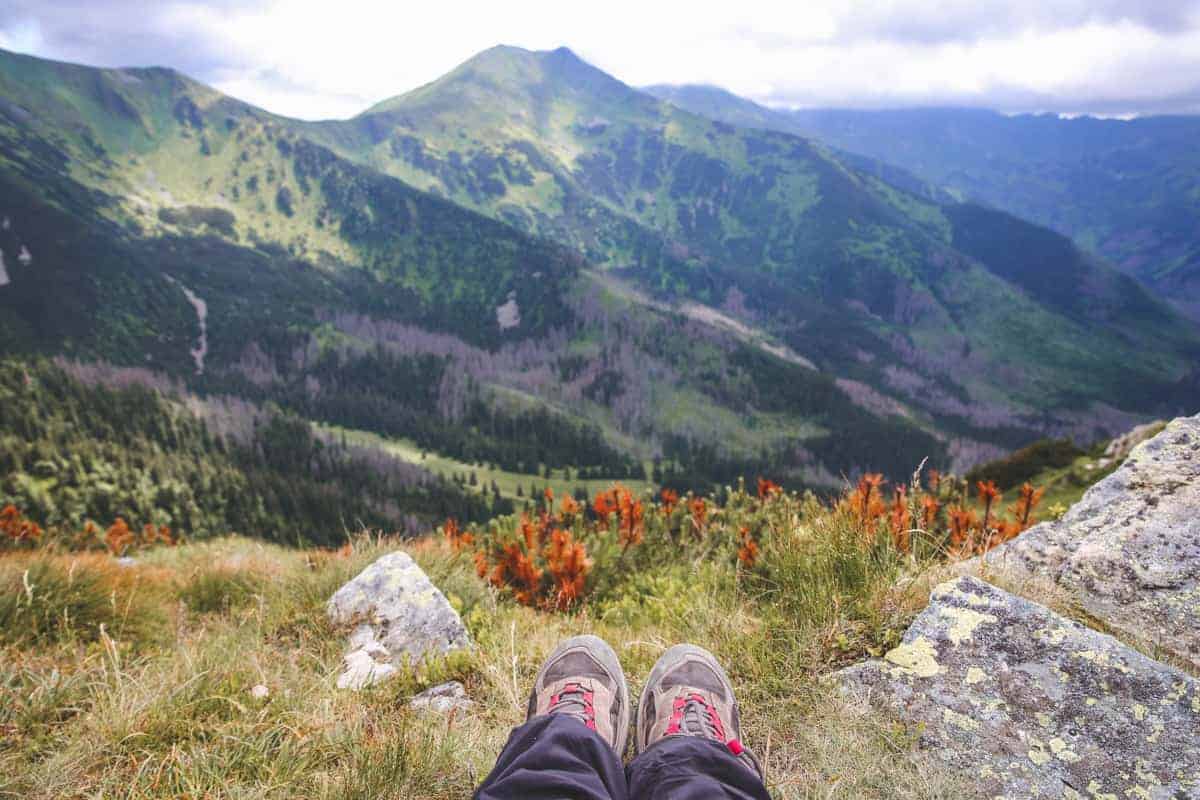
Packing List For a Day Hike: The Ultimate Packing List
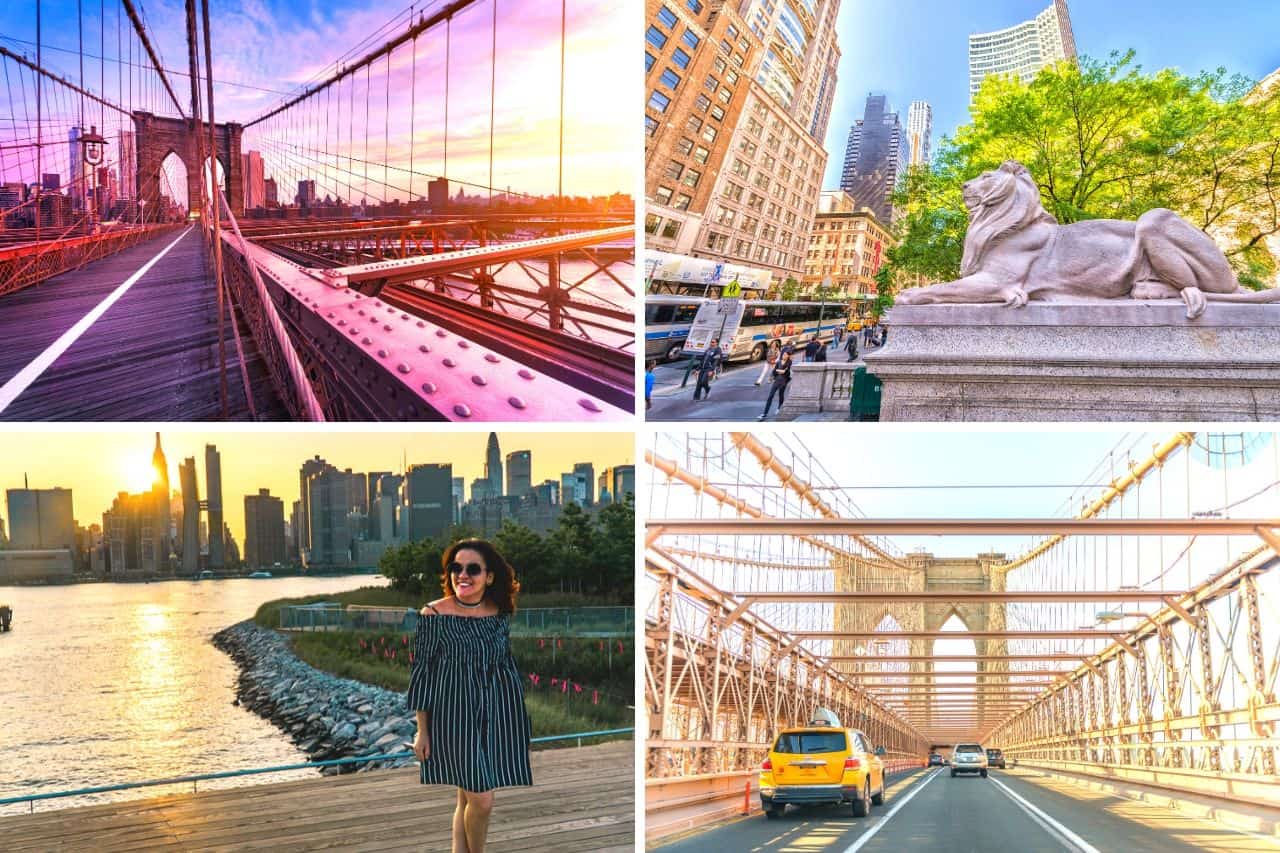
101 Fun, Free Things to Do in NYC 2024: Free Activities in NYC by a local
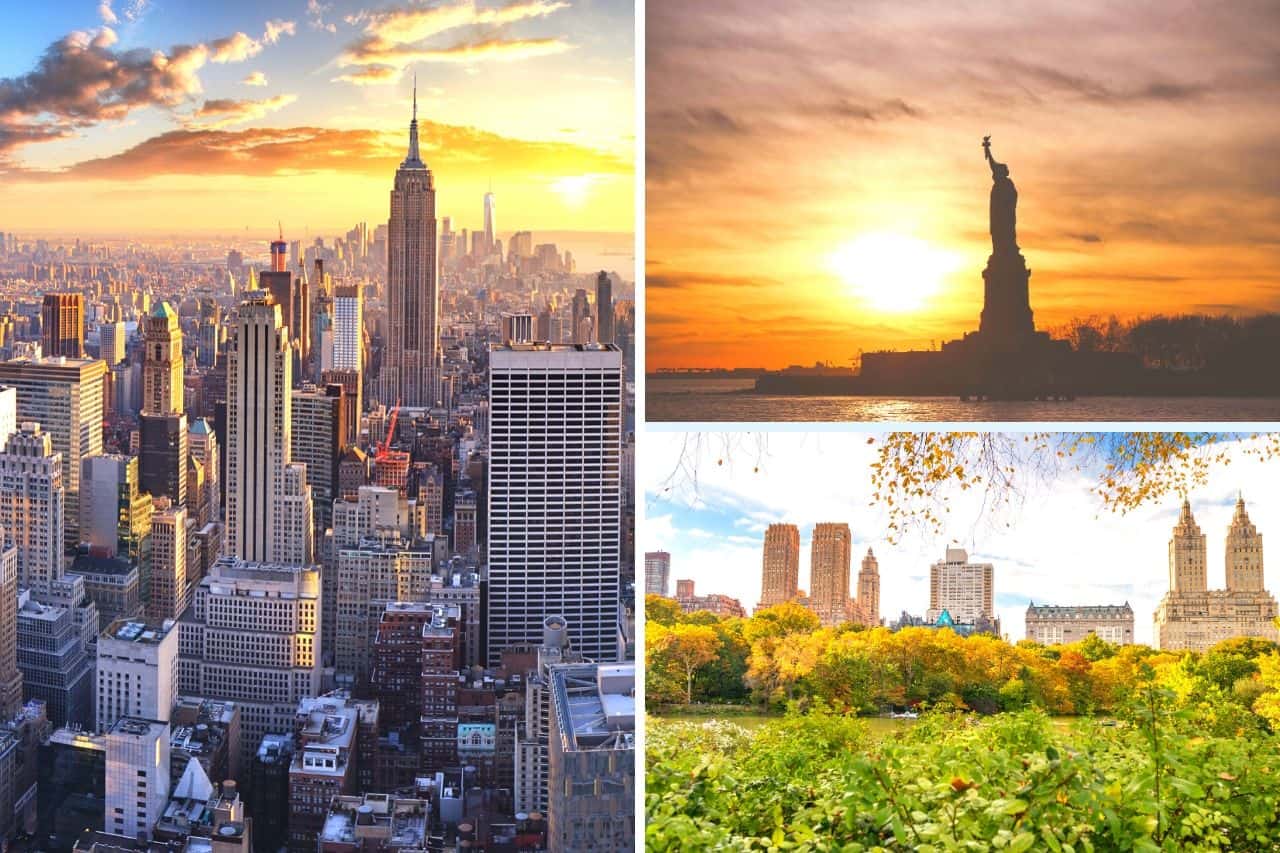
Where to stay in New York City: The Best Neighborhoods in NYC

27 Unique Travel Gifts for Women Traveling Solo {2024}
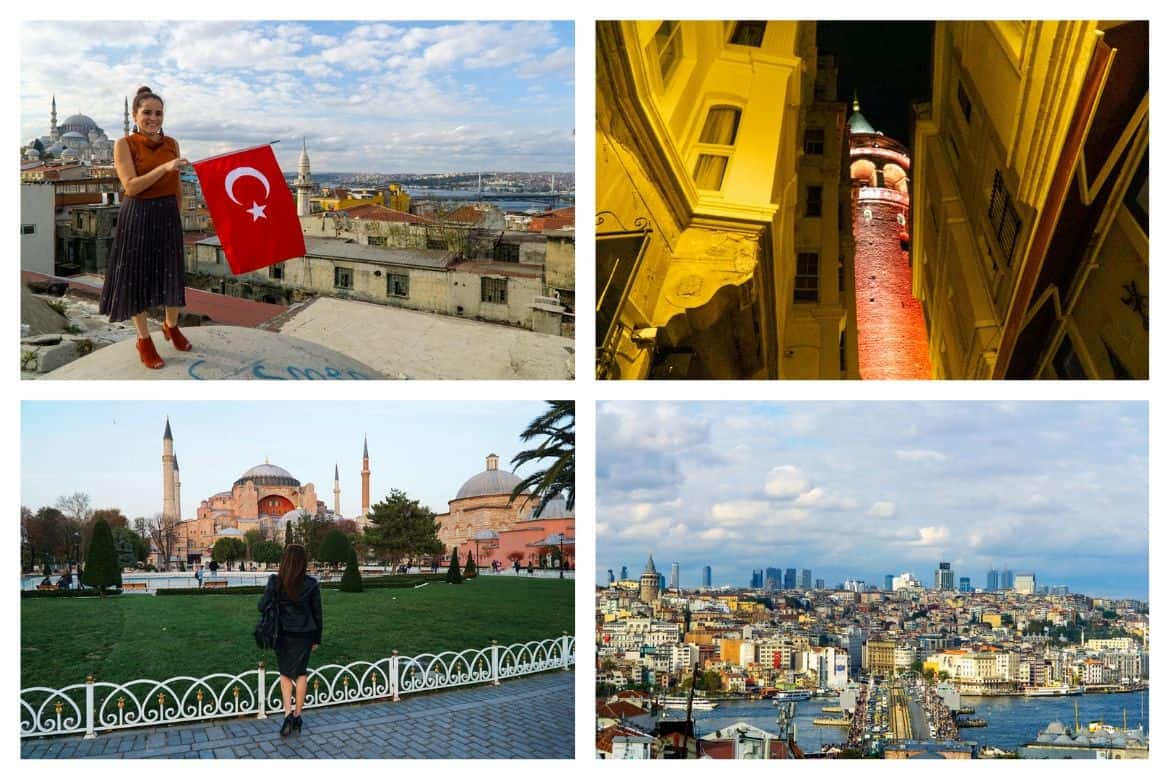
3 days in Istanbul Itinerary: Best places to visit in Istanbul in 3 days {2024}
Let’s keep in touch
Join other travelers and get the latest travel updates, travel tips, tricks and insider secrets. Be notified first about giveaways and special events.
- Destinations
- Travel Tips
- Travel With Us
- Paid Travel Internship
- TTIFridays (Community Events)
- SG Travel Insider (Telegram Grp)

8D Taiwan Itinerary: Insider’s Guide to Hidden Adventures from Taipei to Kaohsiung via THSR
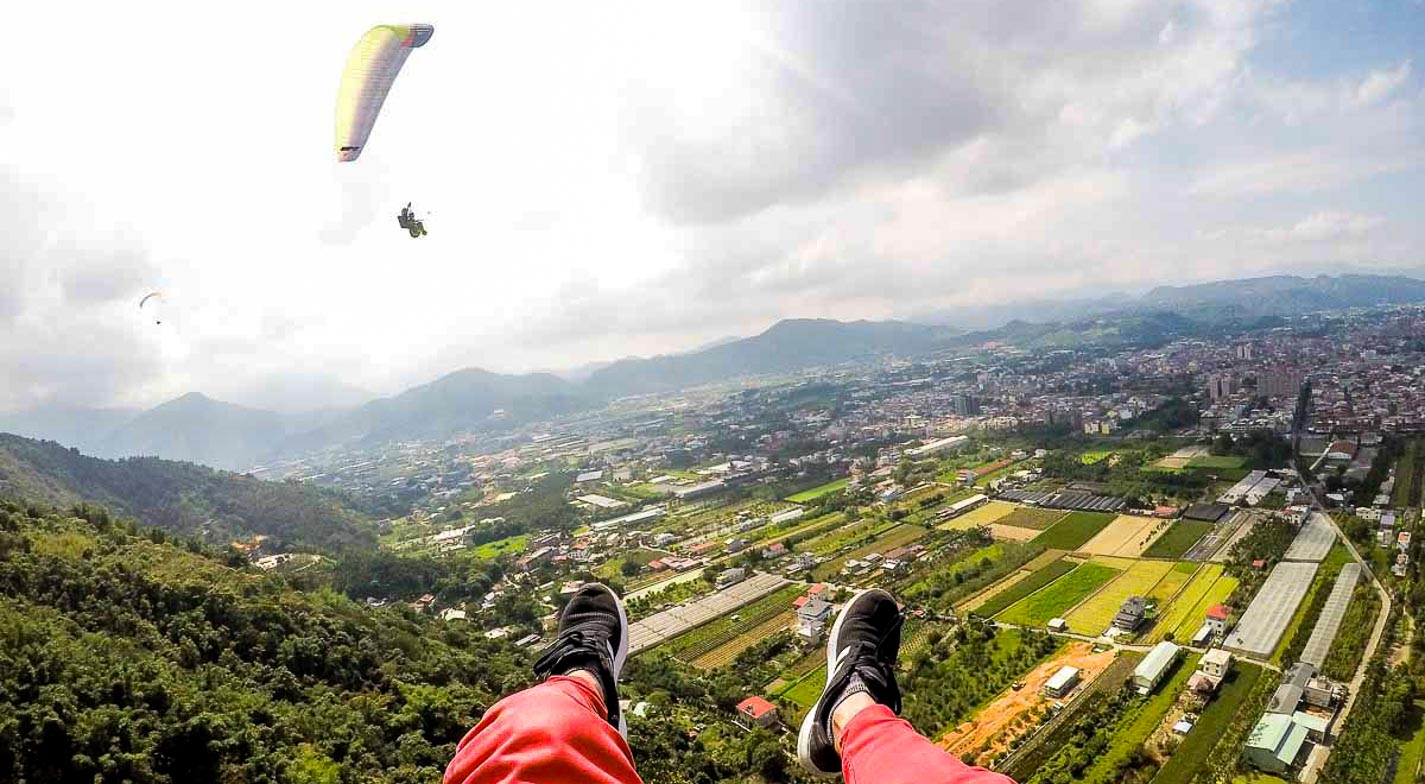
First published: 9 Nov 2017
From trendy shopping districts to vibrant streets lined with mouth-watering local delicacies, I thought I’d seen and experienced all Taiwan could offer. While these parts of Taiwan are still enjoyable (even after being back for the seventh time), boy was I wrong about how much I knew.
In this eight-day Taiwan Itinerary, not only will we cover some of the best, most well-known sights along the west coast of Taiwan (Taipei to Kaohsiung), we’ve also thrown in a couple of off-the-beaten-path experiences that will definitely re-ignite your interest in Taiwan whether it’s your second or seventh time.
Pre-trip Essentials
SIM Card: ~S$21 for 10 days unlimited data or purchase an eSIM (from ~S$10.60 for 5 days, 1GB/day) if you have a compatible device — no physical card is required!
Airport to City Transport: From Taoyuan International Airport, you can take the Taiwan High Speed Rail (THSR) to Taipei Main Station in 20 minutes. But if your flight arrives late at night when the train services have halted, the car transfer service (~S$47) is the next best option. Not only does it bring you to your doorstep in comfort, it’s also cheaper than regular taxis and operates 24/7.
Psst. From now till 31 May 2024, enjoy a Buy 1 Get 1 Free promo on the THSR pass when you book via Klook!
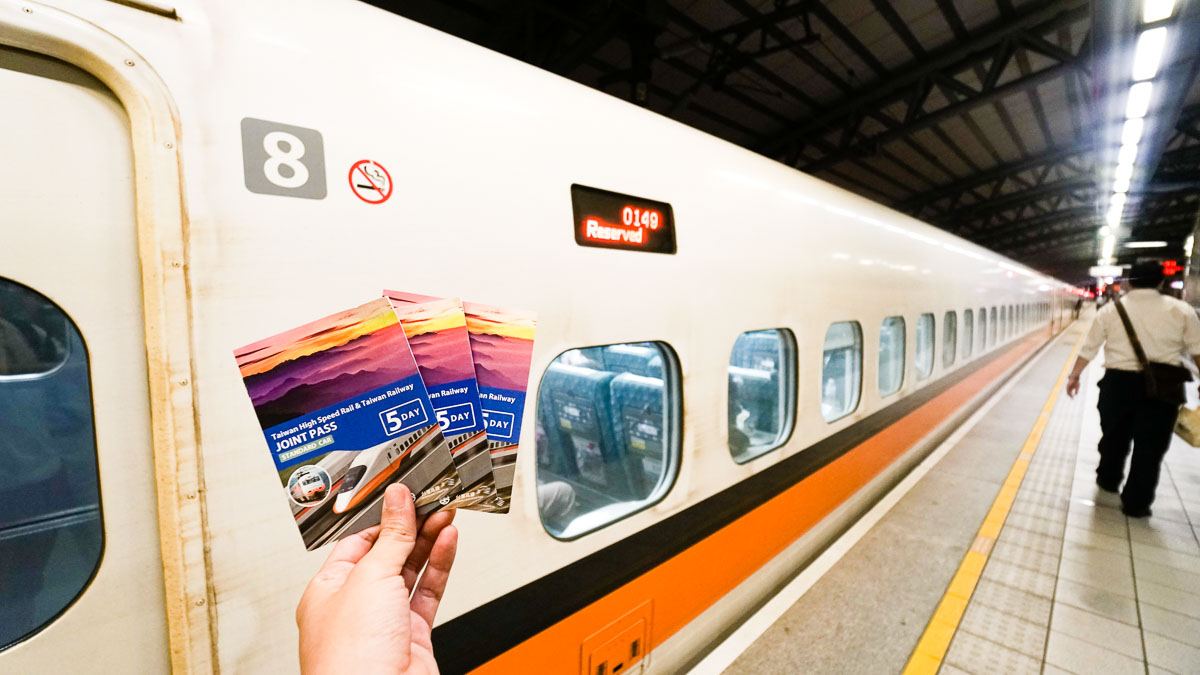
Intercity Transport: For fuss-free travelling through different cities in Taiwan, the THSR pass is essential. We purchased the 5-Day Joint Train Standard Pass which includes unlimited use of the THSR on any 2 days + unlimited use of the Taiwan Railway (TR) for five consecutive days.
For transport within cities like Taipei or Kaohsiung, you will need the EasyCard 悠遊卡 or iPass 一卡通 , which can be purchased from convenience stores.
*Pro-tip: Use code <THETRAVELINTERN> on Klook to get 5% off all items * with a min. spend of S$50 (discount cap at S$15). Apply the promo code at checkout. One-time use only. (* – see list of excluded activities )
Travel Insurance: With all the extreme activities and eating you’ll be doing in this itinerary, it’s important to get a policy in case of anything that arises during or after the trip. Don’t forget to ensure that your travel insurance includes Covid-19 coverage too!
Check Flights to Taipei
We excluded flights from our budget since it varies depending on the season and airline. Check flight prices for your dates of travel .
Despite being a metropolitan city, there are still many things you can eat and do at relatively low prices.
Breakfast at Fu Hang Soy Milk (阜杭豆漿)
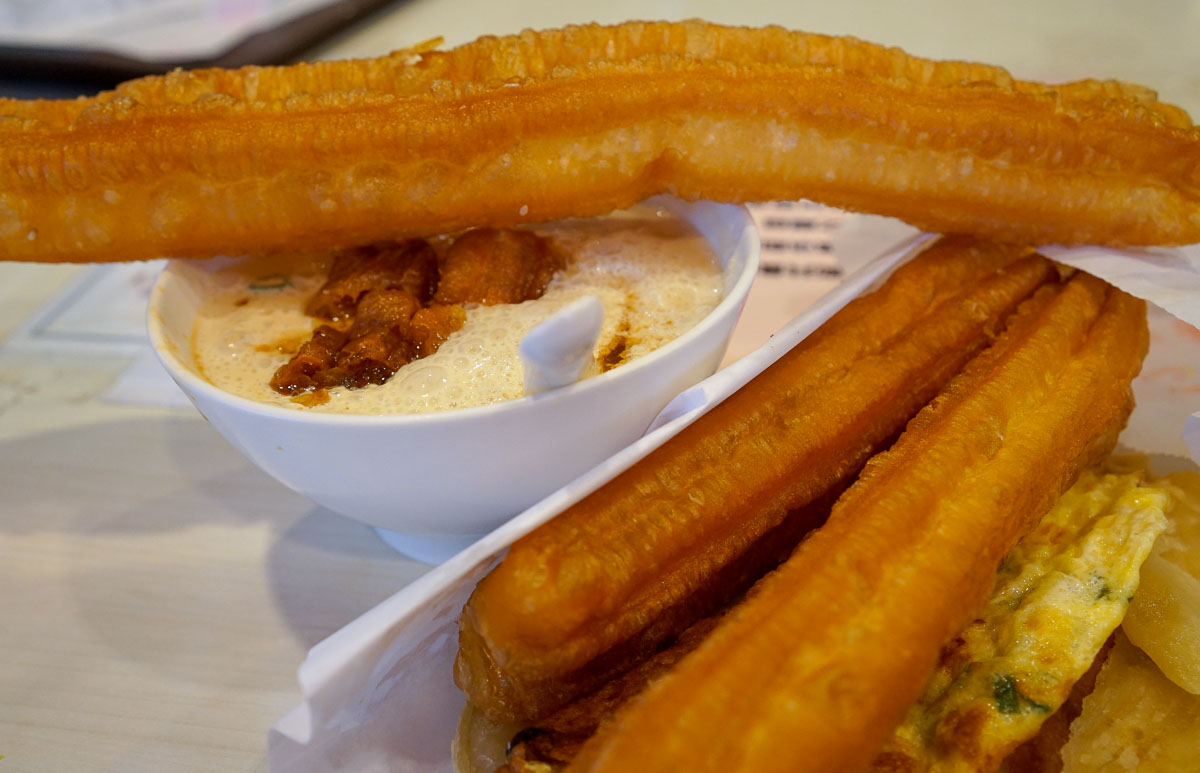
First up, eat like a local. Get up early (and we mean, REALLY early) for breakfast at Fu Hang Soy Milk . Its unique salty soybean curd melts in your mouth and makes the perfect breakfast combi with youtiao 油条 (fried dough sticks). Queues can get really long (and we mean, REALLY long) but it moves along quite quickly.
Address : Level 2, No. 108, Zhongxiao East Road, Section 1, Zhongzheng District, Taipei City, Taiwan [台北市中正區忠孝東路一段108號2樓] Opening hours : 05:30AM – 12:30PM, closed on Mon Cost: ~NT$25-60
Zen out at Maokong 猫空
Maokong used to be the biggest tea growing area in Taipei and is now a popular place for tea culture. The premium Oolong variety, Tie Guan Yin 鐵觀音, is still being produced at Maokong.
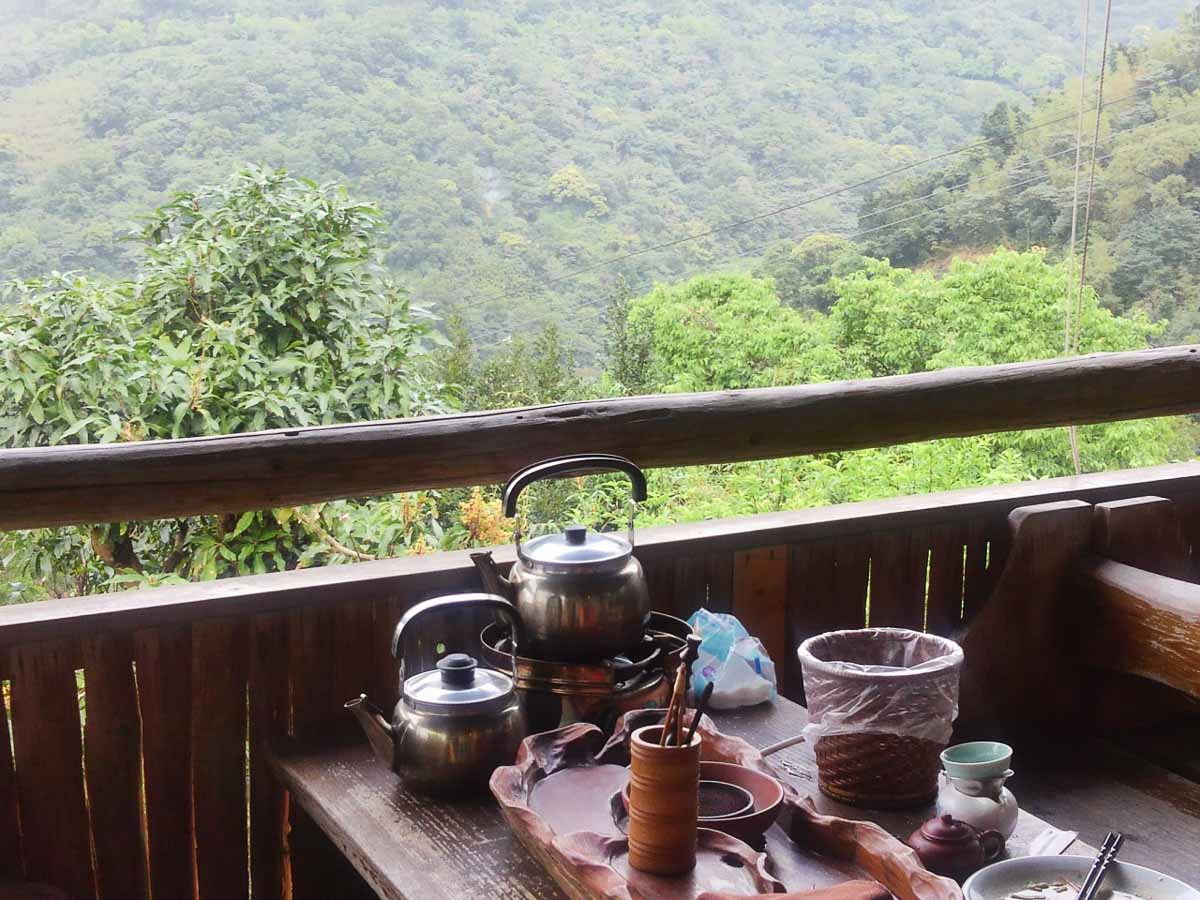
Photo credit: 4travel.jp
Spend a relaxing afternoon in Maokong sipping tea while overlooking the lush tea plantation fields. Get to the top via a gondola service from Taipei Zoo.
Directions: MRT Wenhu Line (Brown Line) 文湖線 to Taipei Zoo → follow signs leading to Gondola → 3 stops to Maokong Stn. Gondola fee: NT$120/trip (EasyCard holders entitled to 20% discount on weekdays, or enjoy a discounted rate with the Klook Pass Taipei starting from ~S$23 for 2 attractions)
The icon of Taiwan, Taipei 101 stands out kinda like a sore thumb in the day being the only tall building around the area. But come nightfall, the 101-storeyed building lights up and sure is a beautiful sight to look at against the dark sky.
Did you know? The building is lit up according to the colours of the rainbow each night of the week. Mon , Tue , Wed , Thu , Fri , Sat , and Sun .
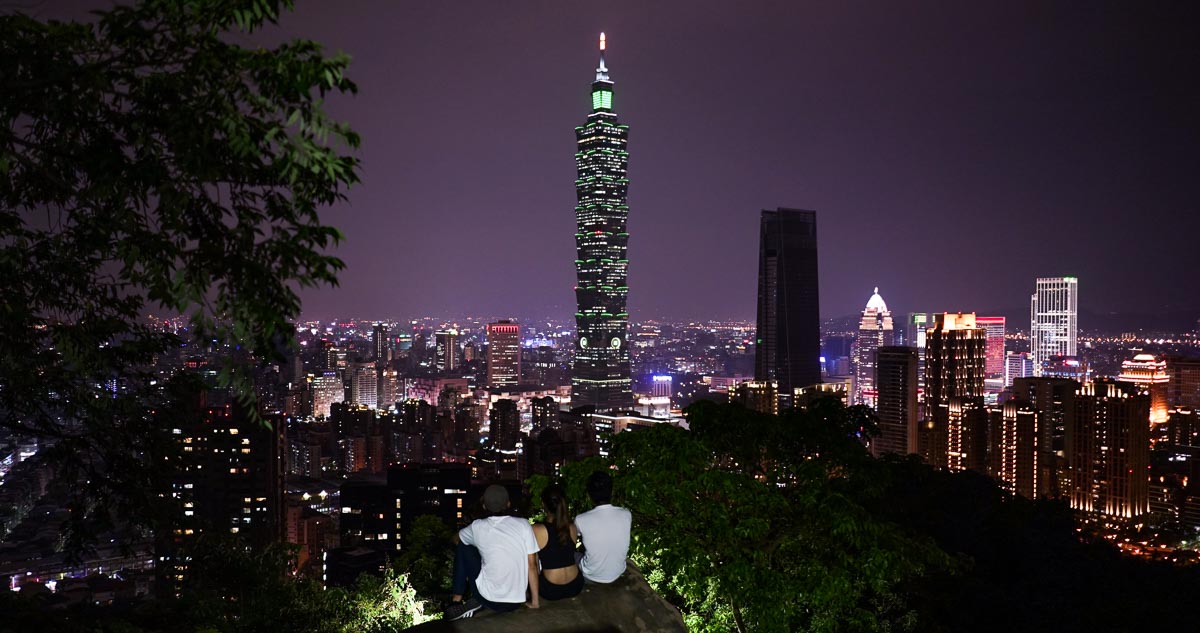
Can you tell which day of the week this was taken?
*Pro-tip: Pre-book your admission ticket via Klook (from ~S$26) to skip the queue at the ticketing counter! You can enter directly with the QR code on your voucher.
Accommodation: Meander Taipei Hostel from NT$580/night
Read also: 4D3N Taipei Itinerary for more local finds in and around Taipei
D2: Day Trip to Jiufen 九份 & Shifen 十分
How to get there: Take a bus (Bus 965) which travels from Banqiao and stops at Jiufen Old Street. Or alternatively, take a private city transfer instead.
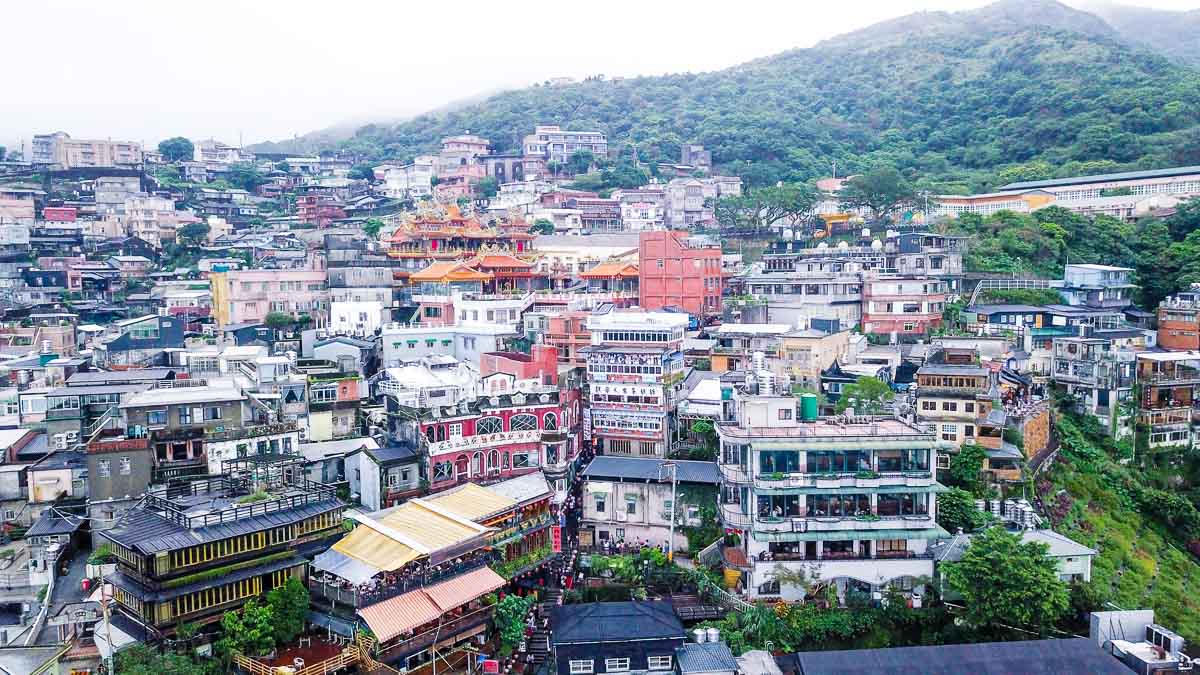
Located just outside of Taipei City, Jiufen and Shifen are popular day-trips for its extremely scenic views and great food; probably why I keep coming back too.
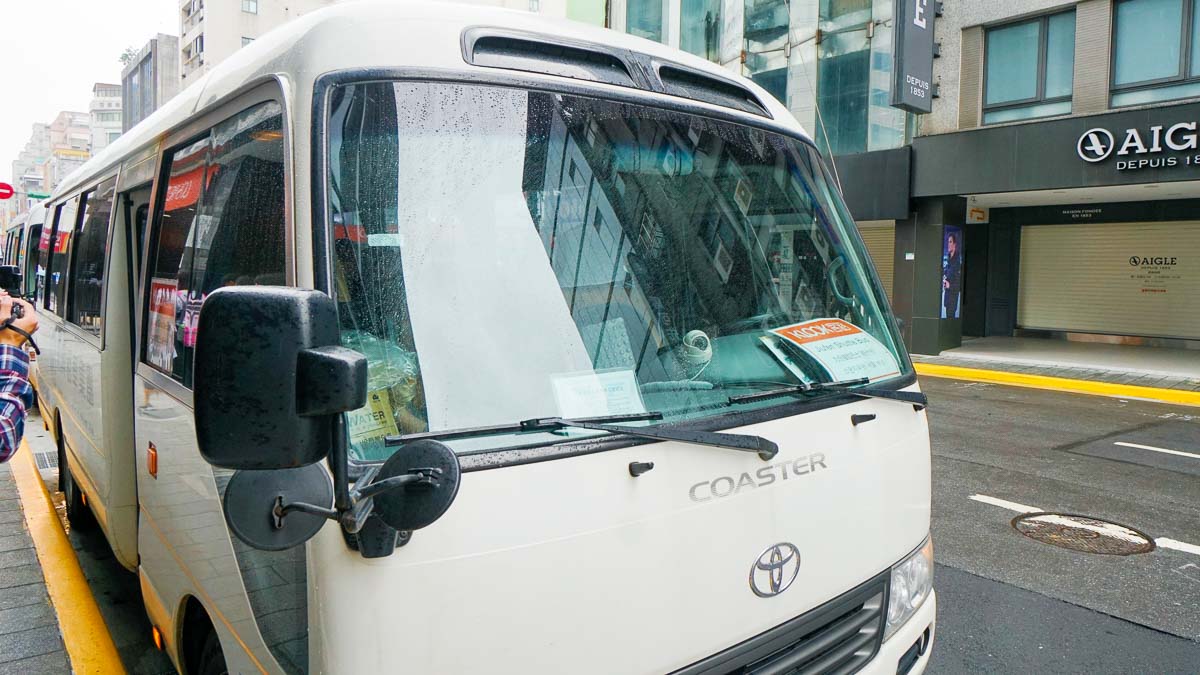
Problem is, it can take a while to get there via public transport. During our trip, we took a shuttle bus service (which has since then been discontinued). The bus picked us from Ximen and we arrived in Shifen within an hour. Ultra-convenient!
If you’re looking for convenience and want to arrive there quickly, hiring a private car transfer is what you may need. Some day tours also like this one will just require you to meet at the Taipei Main Station, and they’ll guide you along Jiufen and Shifen. The choice is yours!
Shifen has been popularised in recent years and many specially visit the quaint old town to light up sky lanterns on the old (and still functioning!) rail tracks.
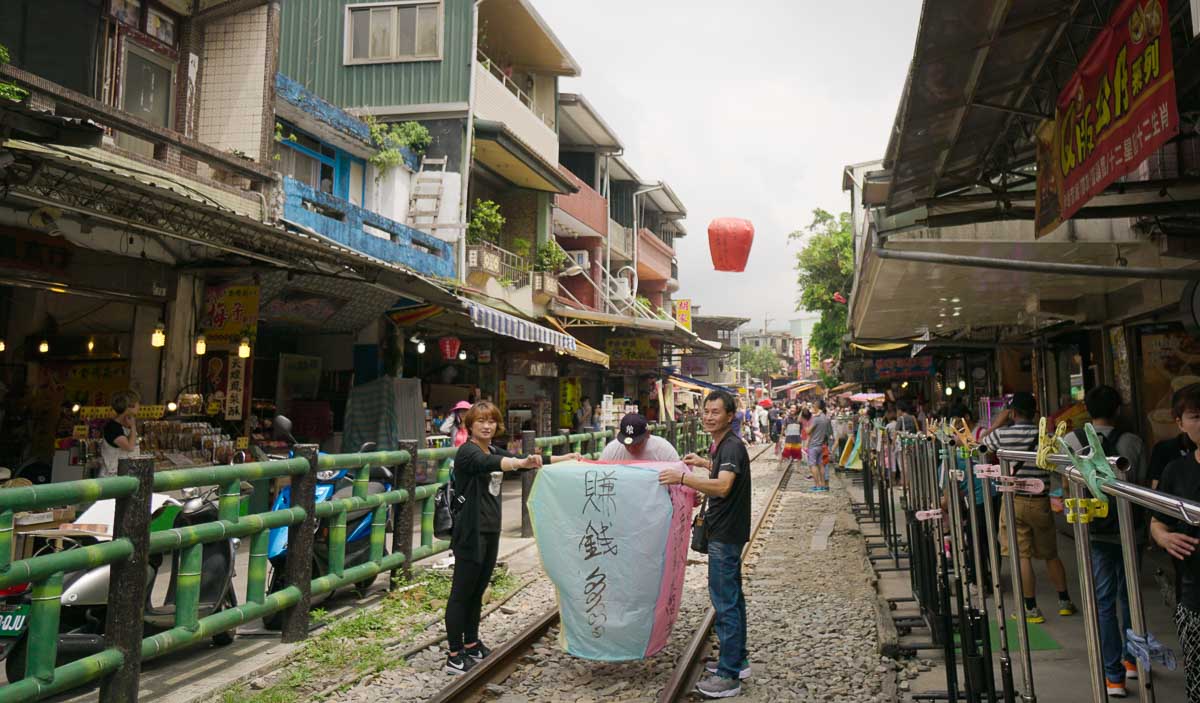
Write your wishes on the paper lanterns and light them up, sending your wishes to the heavens.
Besides lighting up the sky lanterns, another charm of Shifen I love is the old-school vibes. Buy a glass-bottled marble soda to feel really transported back in time!
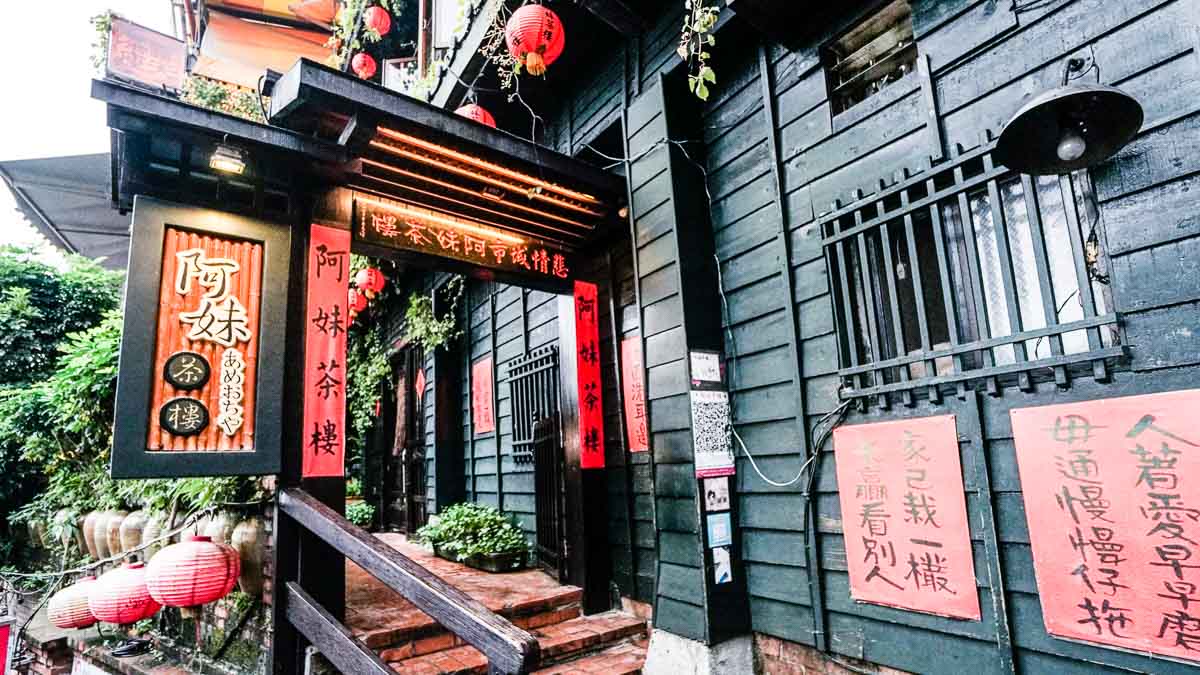
A-Mei Tea House, the inspiration behind Hayao Miyazaki’s award-winning Spirited Away.
Jiufen seems like an unassuming laid-back town amongst the mountainous regions, but on closer inspection, it’s really an energetic and bustling food paradise filled with endless surprises from beginning till end.
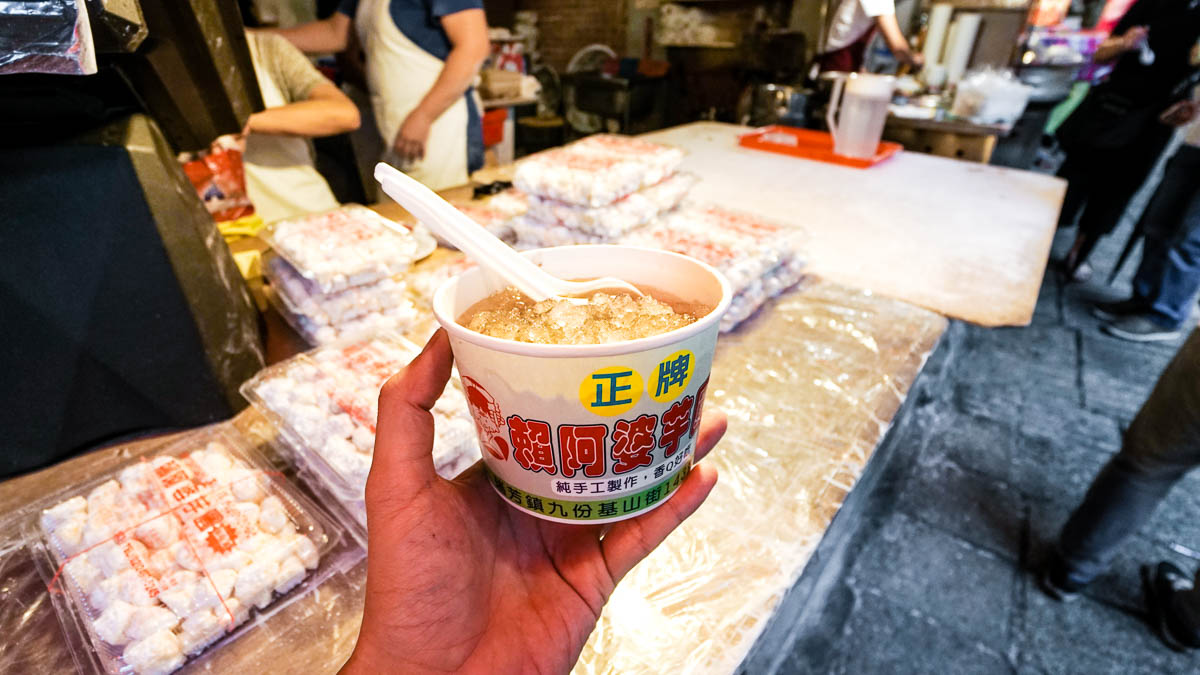
When the stall owner is as unforgettable as the yummy Taiwanese sausage she’s selling.
The tour lasts around eight hours and you can either pick the morning slot, which leaves at 9:30AM, or the afternoon slot, which leaves at 1:30PM.
After the eating spree in Jiufen , head back to Taipei and explore the fast-paced and everchanging Ximending.
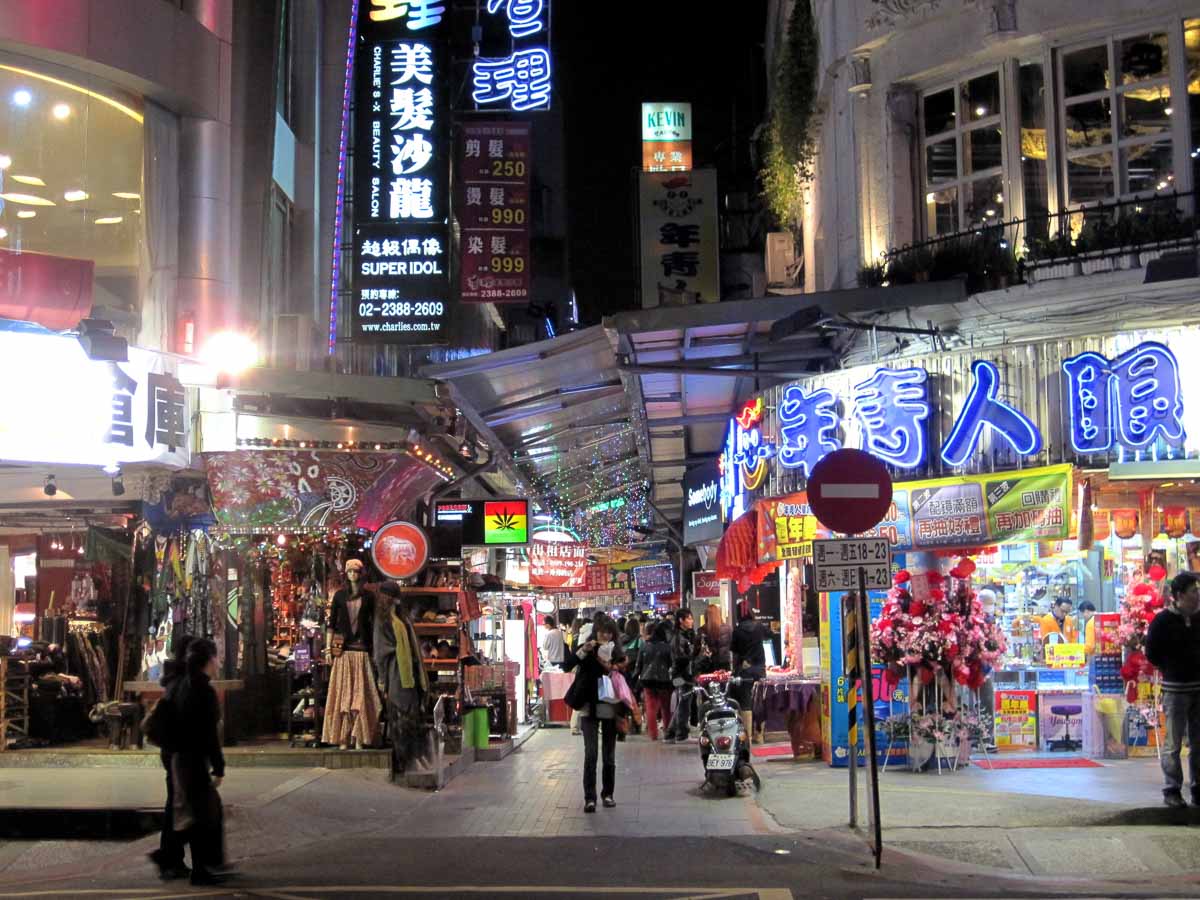
Streets of Ximending. Photo credit: Wikipedia
If Taipei 101 is the icon of metropolitan Taipei, then Ximending can be considered the cultural icon of Taiwan. Popular among the youth and tourists, the bustling streets of Ximending hosts not only apparel shops, but also eateries, cinemas, and scores and scores of budget hotels.
Dinner at San Wei Dining Hall 三味食堂
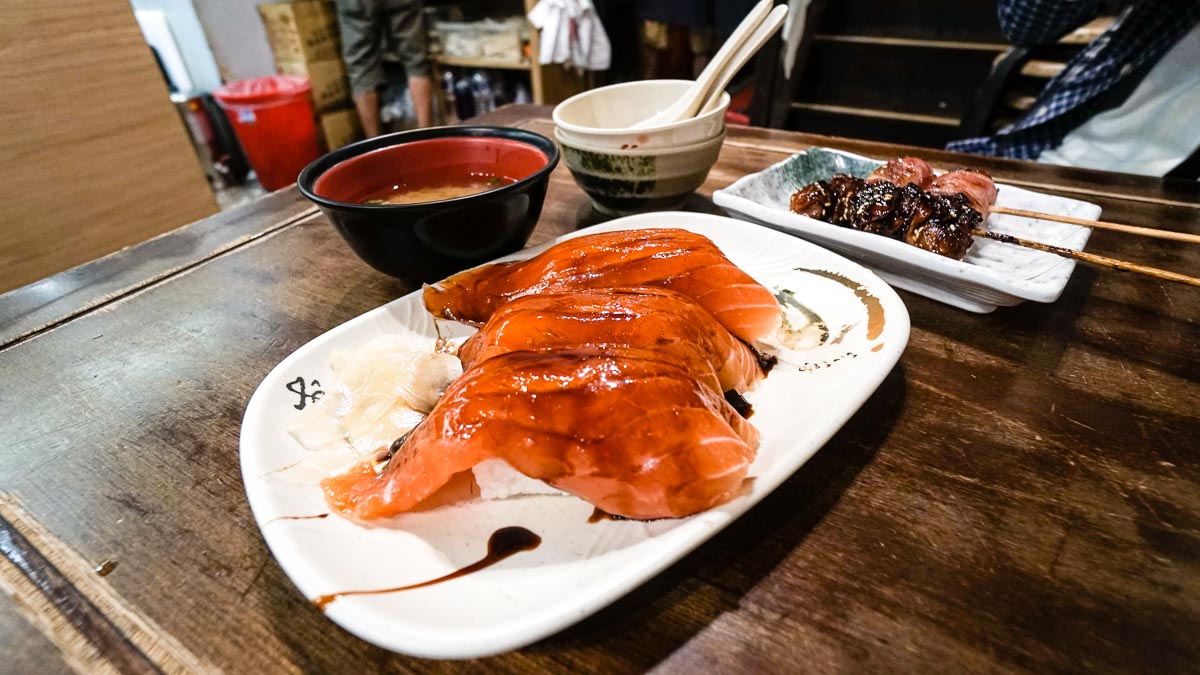
These fist-sized salmon nigiri rolls attract hordes of sushi lovers daily, and queue-time may take up to an hour! Sushi and sashimi plates range from NT$70–580 (~S$3–26).
Address : 116, Guiyang St Sec 2, Taipei City [台北市貴陽街二段116號] Opening Hours: 11:20AM – 2:30PM, 5:10PM – 10PM (Last orders 9:30PM). Closed first two Mondays & last two Sundays of every month
For more awesome possum local finds in Taipei, check out our 4D3N Taipei Itinerary .
D3: Taichung (via the THSR)
The easiest and fastest way to get from Taipei to Taichung is via the Taiwan High-Speed Rail (THSR) — within an hour for NT$700 (single ticket). As we’d pre-purchased the 5-Day Joint Train Pass (THSR+TRA) before our trip, we had to activate the pass at the THSR ticketing counter at Taipei Main Station.
Do note that when activating the 5-Day Joint Pass, the THSR staff will require you to choose the two dates you want to take the THSR. This is so that they can make seat reservations for you on the THSR.
The journey southwards from Taipei to Taichung took approx. 50 mins for us. However, there are various trains with different timings and stops, so yours might take a little longer. Refer to THSR’s official website for detailed train timings.
Arrival in Taichung
Since we’ll be covering quite a few places within Taichung (also note that Taichung has no MRT system), we rented a car for convenience. We rented a simple sedan car online and collected the car from Taichung THSR station upon arrival. Easy breezy.
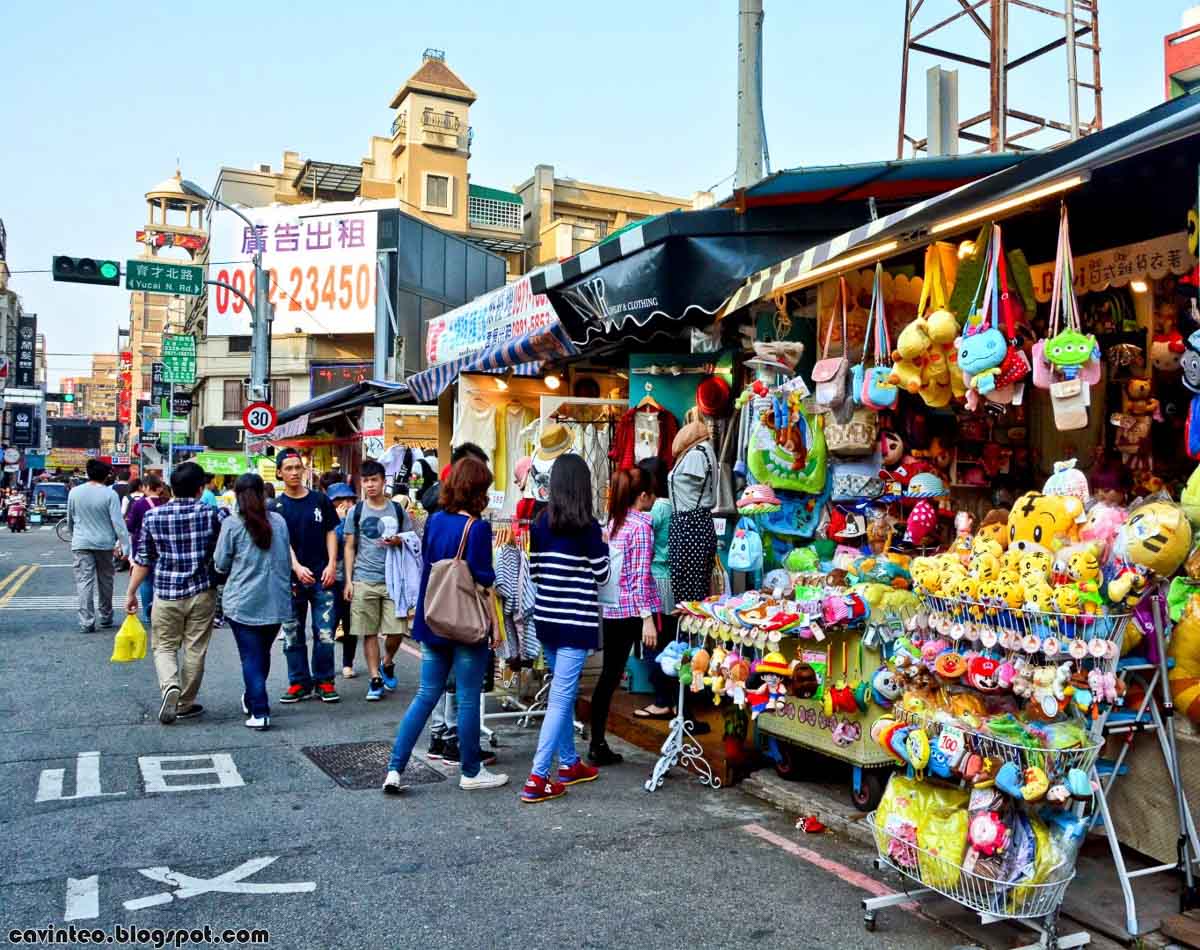
Photo credit: Cavin Teo
Yizhong Street 一中街 is a shopping street in Taichung not unlike the usual night markets of Taiwan. However, some shops are open from as early as 10AM in the morning. Prices of food and things are slightly cheaper in Taichung as compared to Taipei, so guilt-free eating and shopping can begin here!
After an afternoon in Yizhong Street, we drove to Nantou 南投, where our accommodation for the night is at, ready to welcome the next day we packed with adventures.
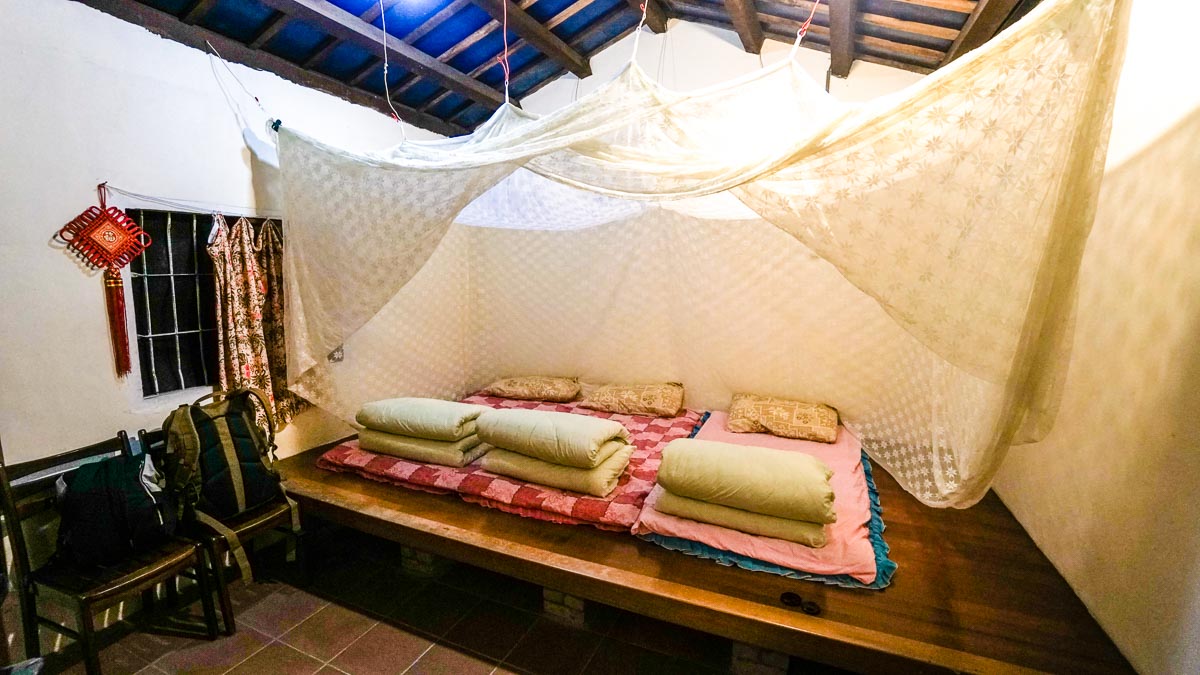
Our cosy bedroom for the night at a local homestay
Accommodation: Stay with the locals at a rustic Airbnb from ~S$23 per night
Read also: Taipei Day Trip: Jiufen & Shifen
D4: Endless Adventures Among the Most Stunning Sceneries in Taichung/Nantou
Standup paddleboarding (sup) 立槳體驗.
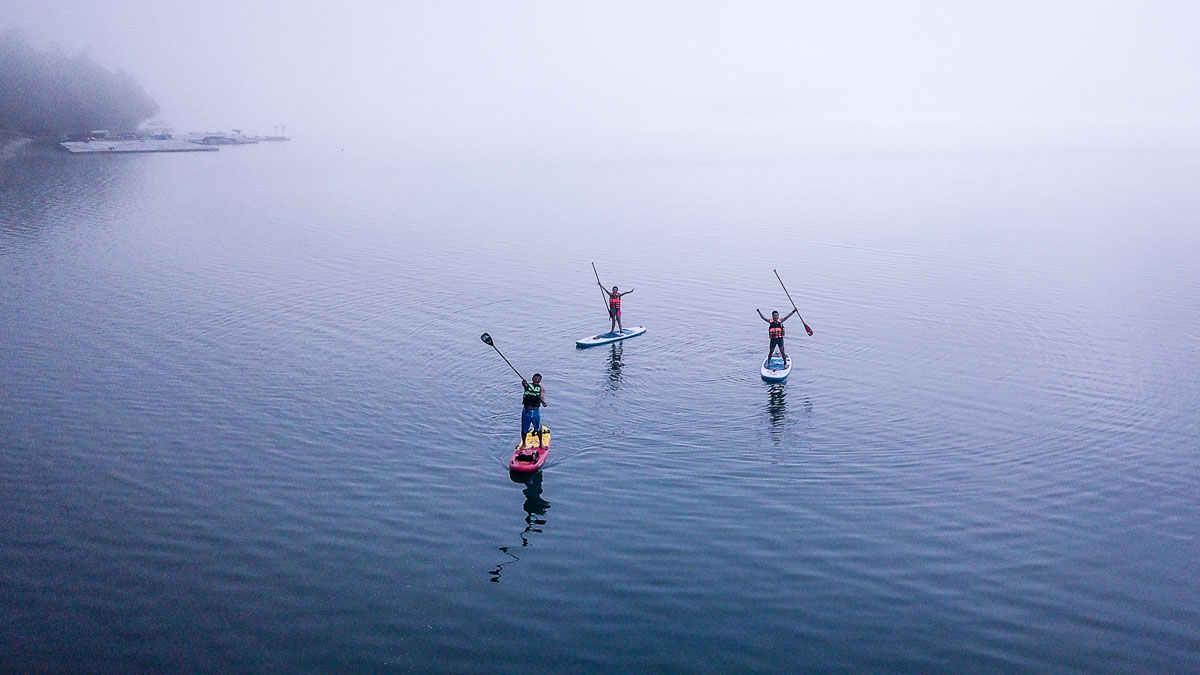
Sun Moon Lake 日月潭 is one of Taiwan’s largest freshwater lakes, and also arguably the most beautiful natural attraction. We got up super early so as to reach Sun Moon Lake by 5:30AM for our sunrise Standup Paddleboarding experience.
The waters of Sun Moon Lake are very calm, first-timers like me will have no problems learning how to control the paddleboard.
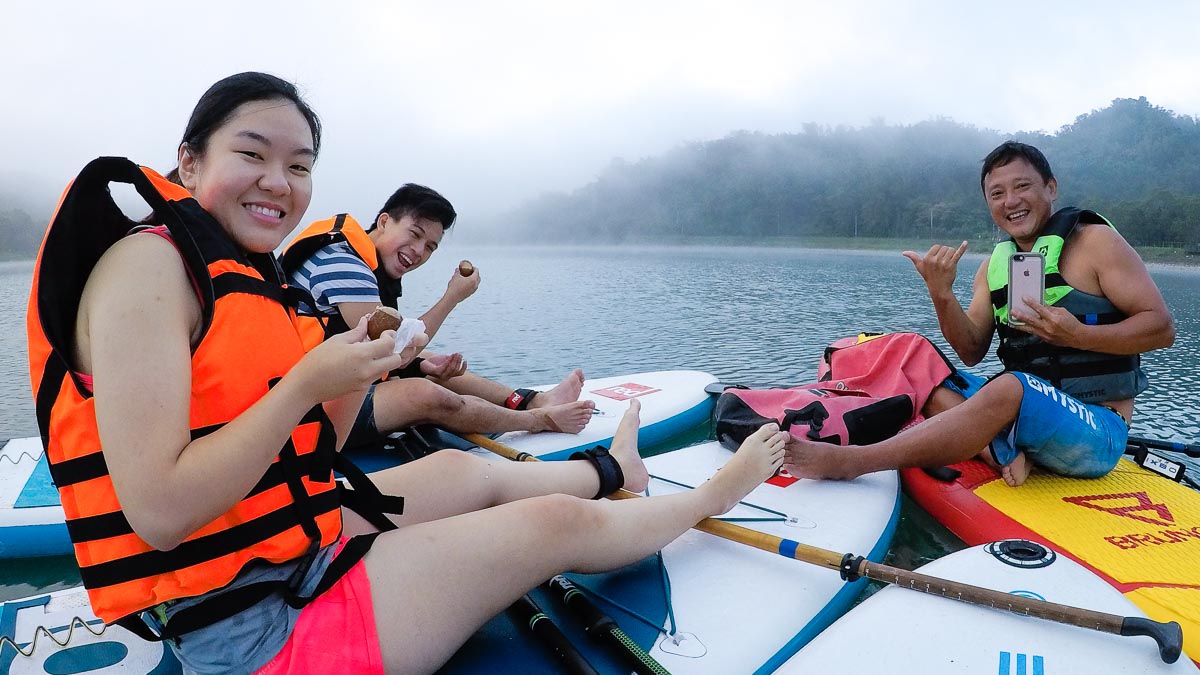
Our jovial instructor even brought along the famous Nantou Jinpen “Ah Mah” Braised Tea Egg 金盤阿嬤茶葉蛋 and bottled Black Tea 紅茶 for us to have during breakfast. When else can one have breakfast on a paddleboard on a lake with superb views! Coach OA even doubled as a photographer and sent us our standup paddleboarding photos after the activity.
Price: From ~S$66/pax (3 hours) . A similar SUP activity in Singapore would cost ~S$100. Location: Sun Moon Lake
Brunch at Itashao 伊達邵
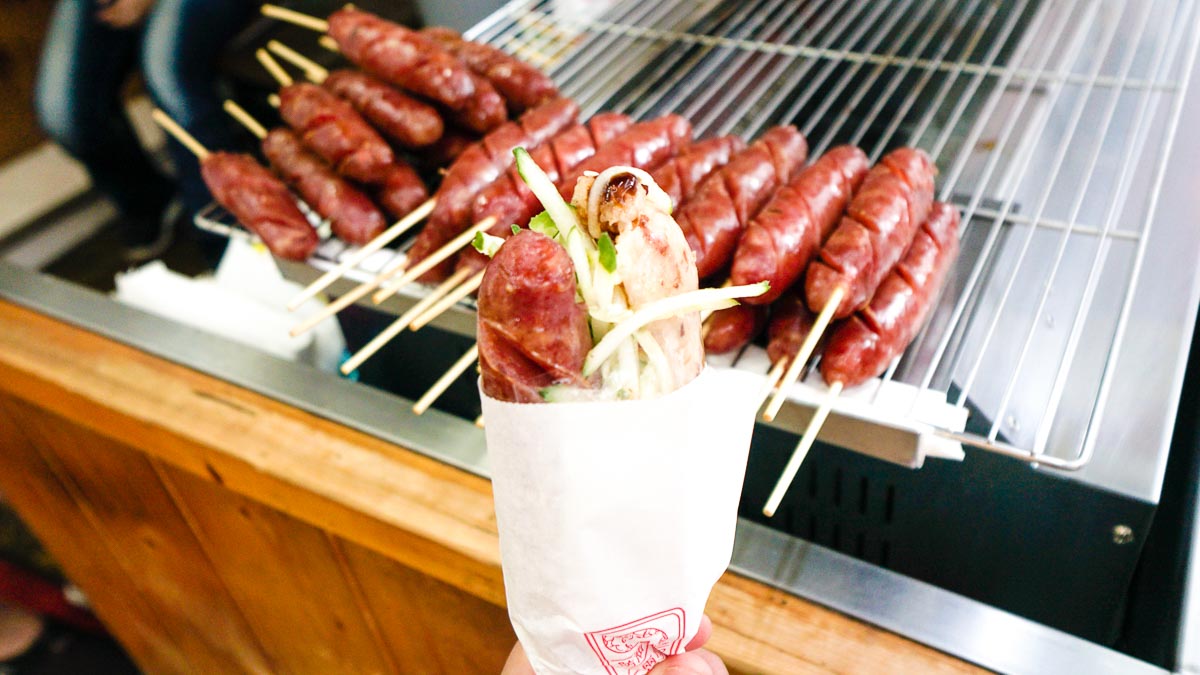
Small sausage in big sausage 大腸包小腸, a Taiwanese snack.
Thereafter, we headed to the nearby Itashao 伊達邵 (Ita Thao) for some locally-loved Taiwanese snacks. Taiwanese sausage 香腸, braised pork bun 豆干扣肉總匯刈包, and millet mochi 小米麻糬 were some local snacks we couldn’t resist not buying.
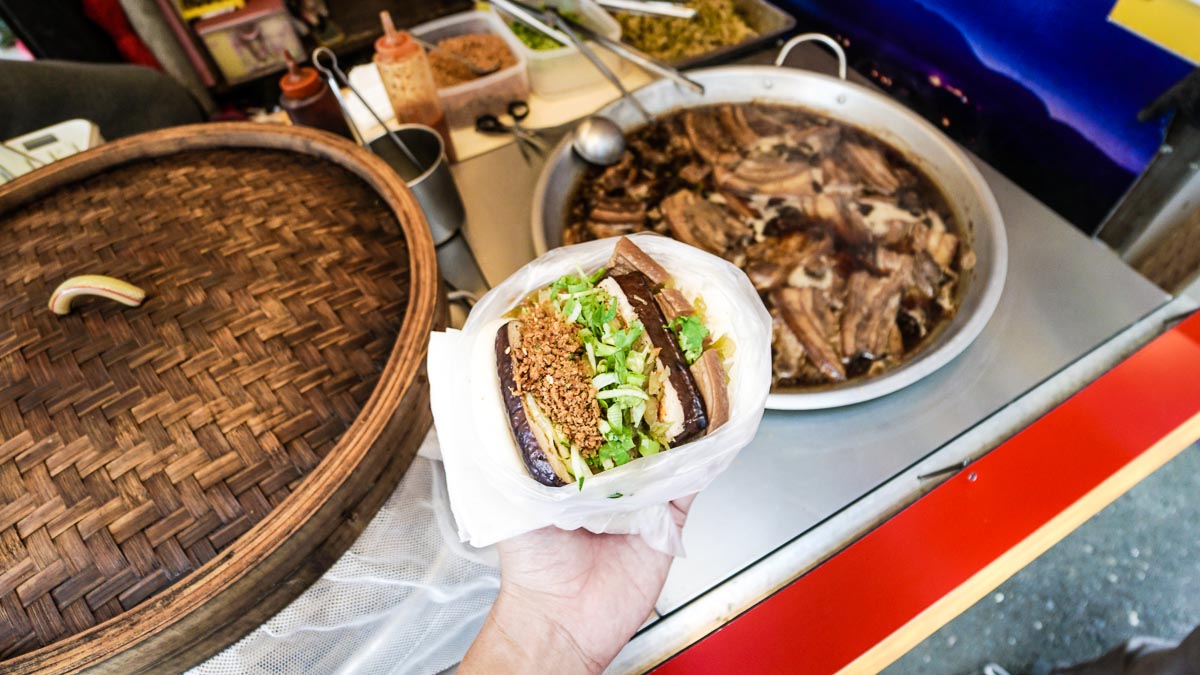
Taiwanese braised pork bun 刈包 .
We could understand why these snacks 小吃 are so well-loved by locals and tourists, because not only are they big in portion with generous fillings, they are very reasonably priced too!
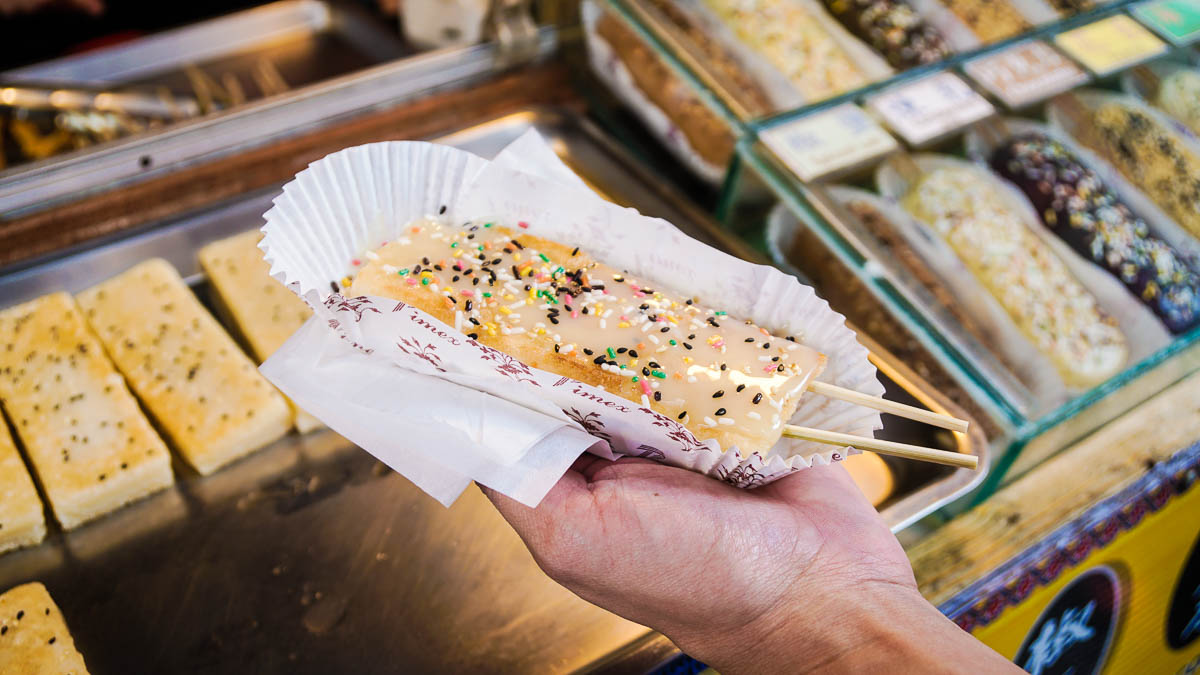
Millet mochi on stick 小米麻糬 .
Brunch settled, munching from the beginning to the end of Itashao 😂
Paragliding 飛行傘
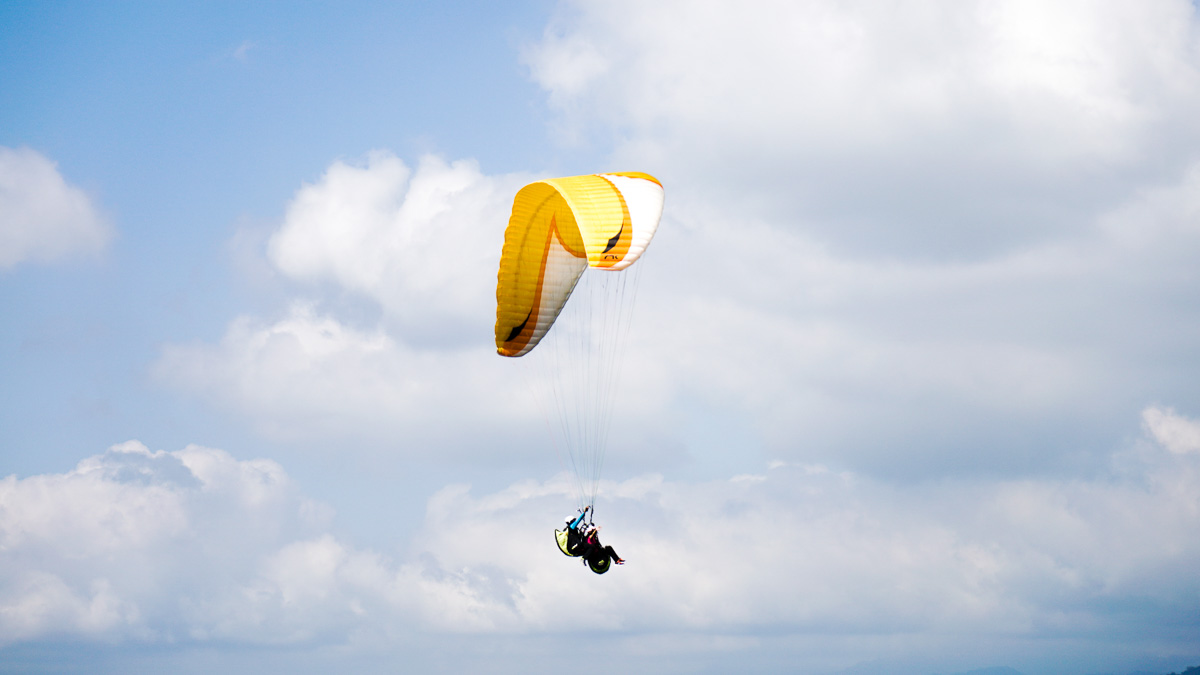
Around Nantou, you can also try paragliding ! We met some paragliders who even brought their own paragliding gears along with them from Hong Kong.
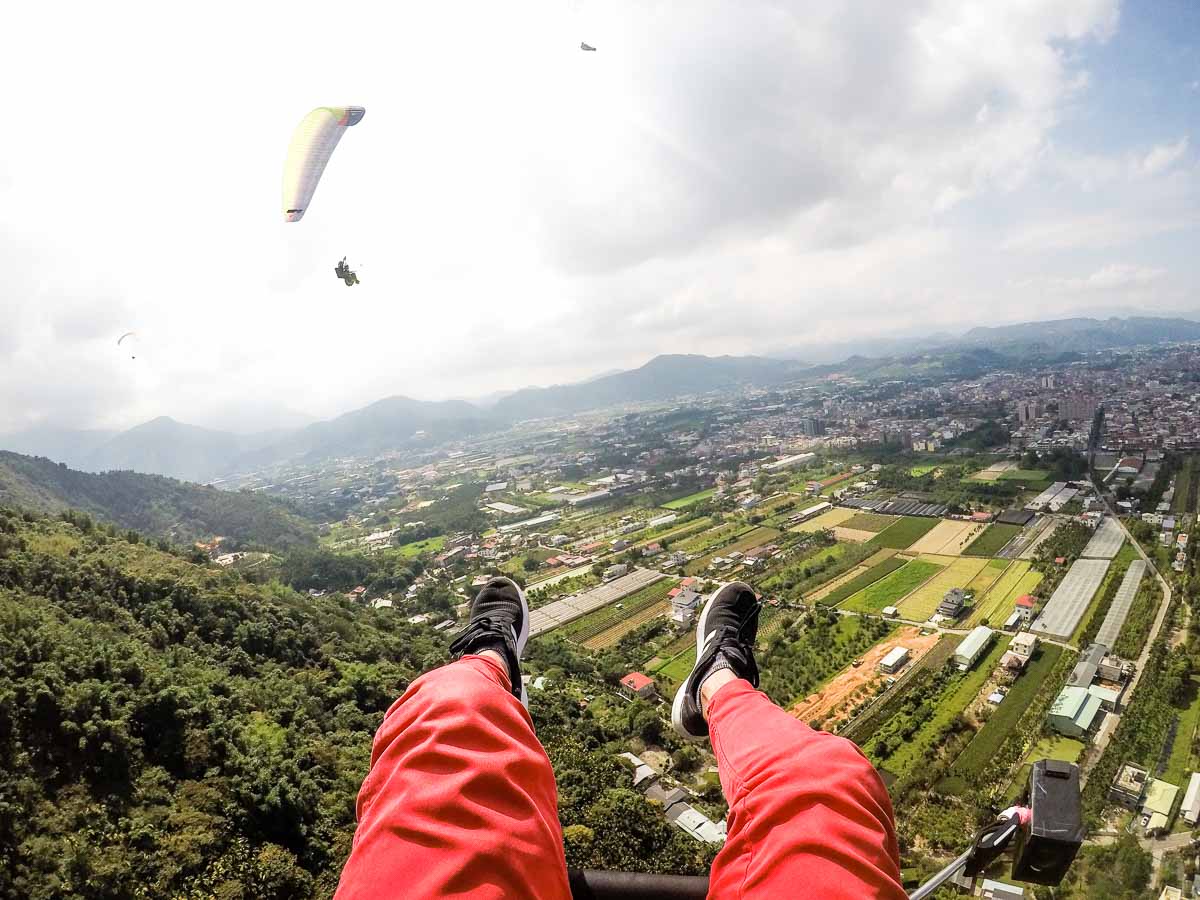
While in the air, we were blown away by Puli ‘s superb views. Mountains, lakes, and acres and acres of vast green lands that seem endless. Breathtaking indeed! No wonder Puli is a popular spot for paragliding.
Our paragliding operator was excellent, even repeating flight twice was for one of us when the first flight time was too short.
Price: ~S$127/pax (Min. 10 mins flight time guaranteed + video footage provided) Location: Puli, Hu-Toushan in Nantou county of Taiwan (虎頭山)
Cingjing Farm 清境農場
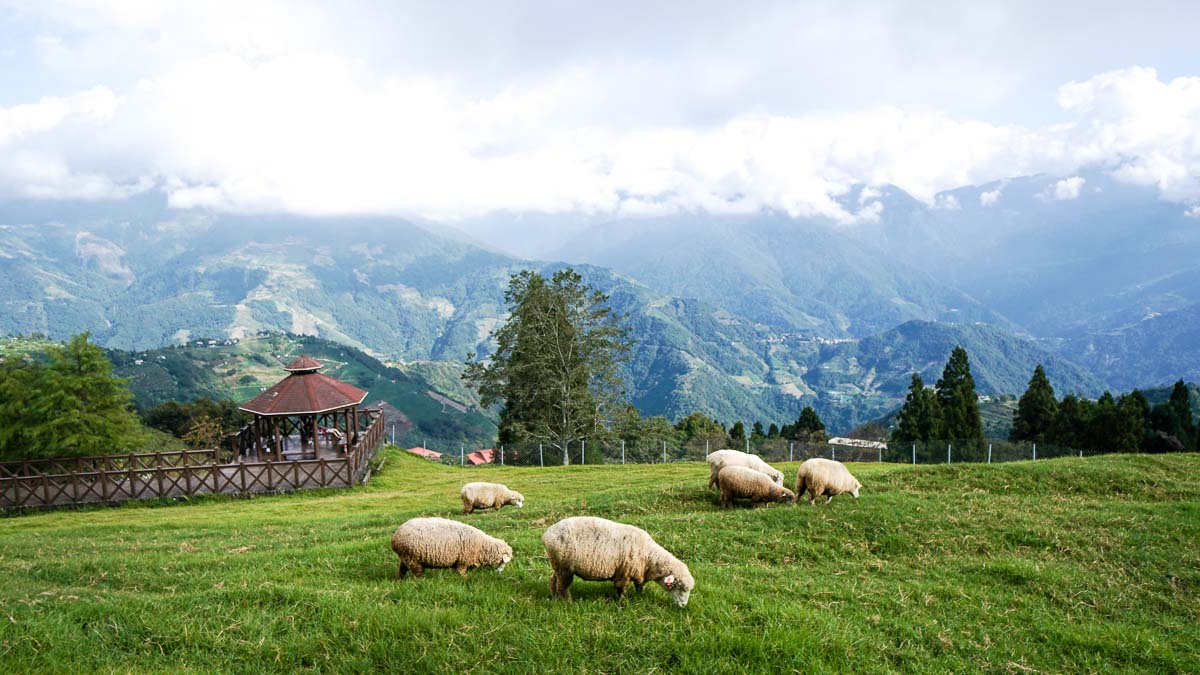
It’s another hour drive to our third and last destination of the day: CingJing Farm . Free-roaming woolly sheep grace pass visitors nonchalantly, granting lots of selfie opportunities with them!
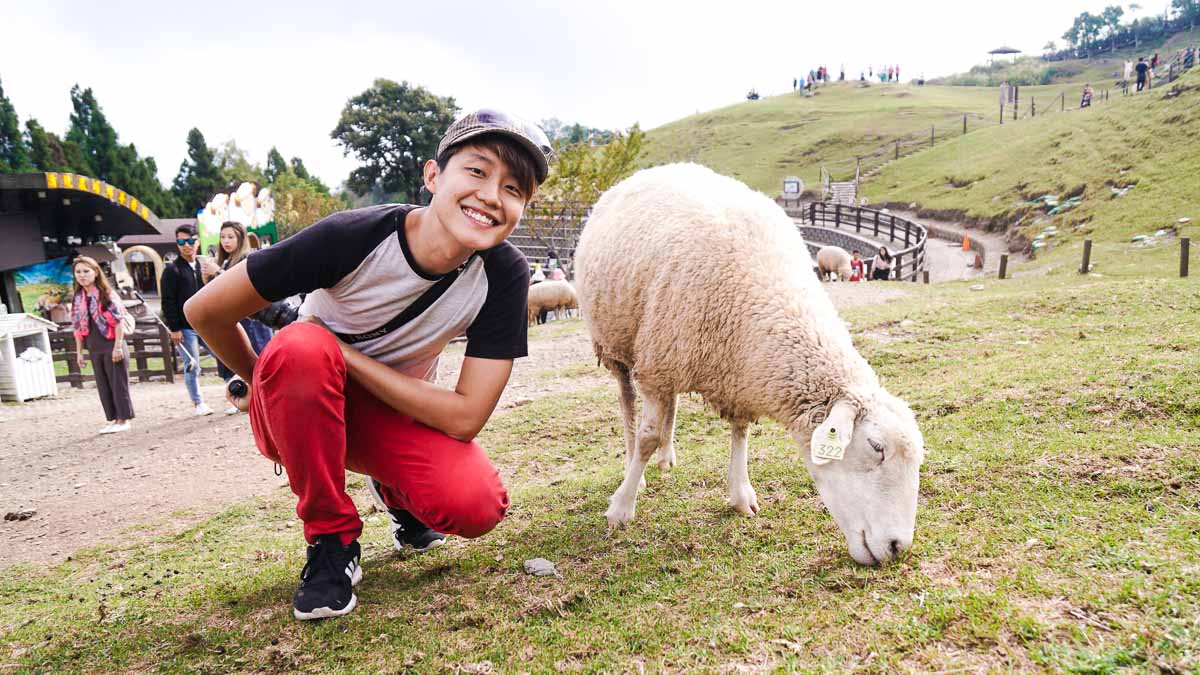
Location: No. 170, Renhe Road, Ren’ai Township, Nantou County, 546 [南投縣仁愛鄉仁和路170號] Opening hours: 8AM – 5PM Entrance fee: NT$160/pax (Mon – Fri) , NT$200 (Sat – Sun)
Night falls, but that’s when Taichung becomes even more energetic and alive! We headed to Taichung’s most famous night market, Feng Chia Night Market 逢甲夜市 for dinner.
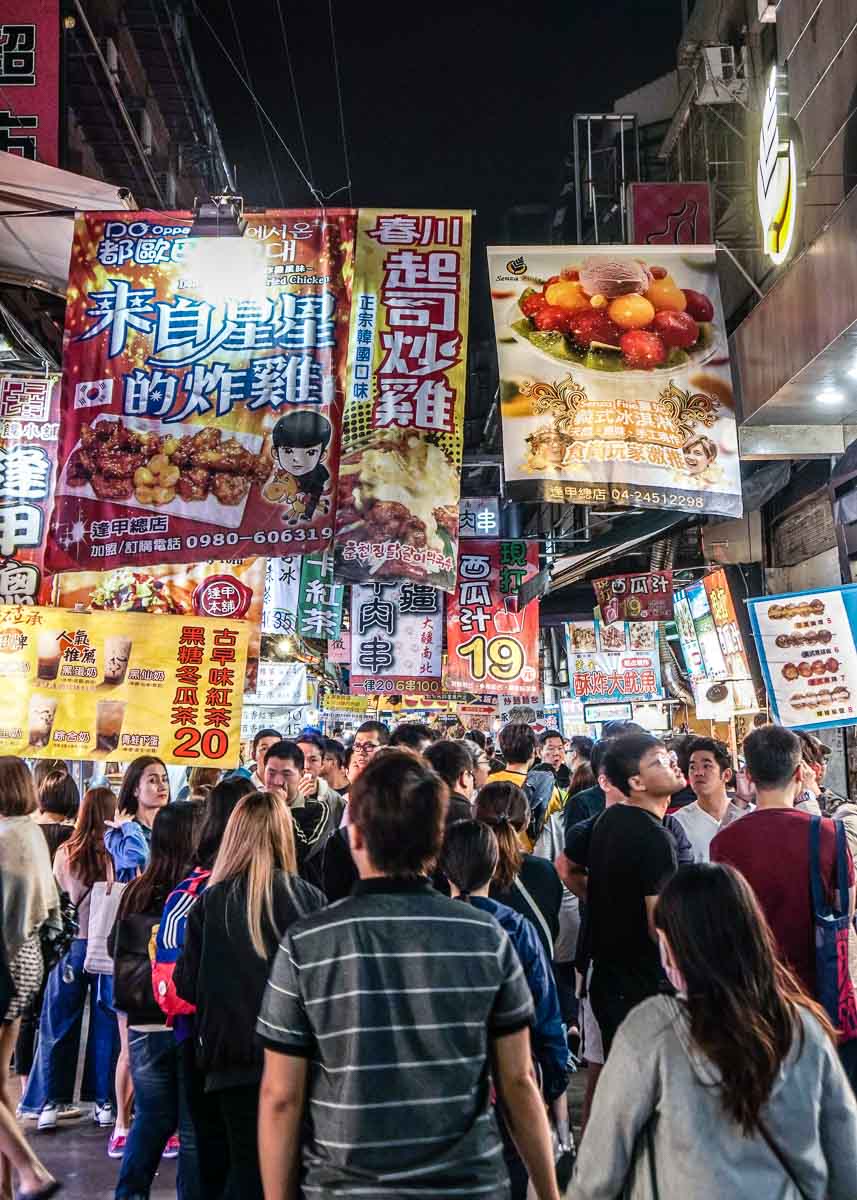
It’s insane how many times we had to stop and reach for our wallets just stepping into the market for ten minutes. All my senses were being attacked! It was involuntary and uncontrollable, and we succumbed to all the awesome-smelling/looking/tasting foods.
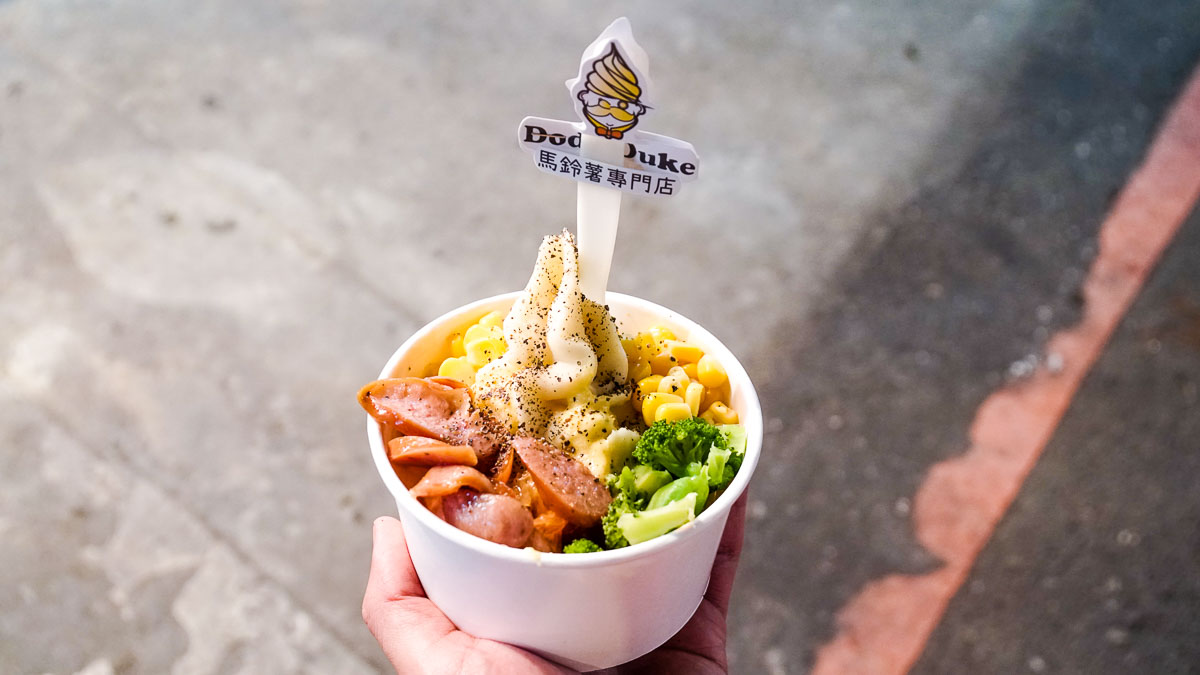
Location: Wenhua Road, Xitun District, Taichung City, Taiwan 407 [台中市西屯區文華路] Opening hours: 4PM – 2AM (Tue – Sun), 4PM – 1AM (Mon)
Read also: The Ultimate Taiwan Food Guide
D5: Exploring the Locals’ Taichung
After a day of nonstop activities in Nantou, we focused on Taichung City the next day. First up, we headed to Rainbow Village 彩虹眷村 .
Rainbow Village 彩虹眷村
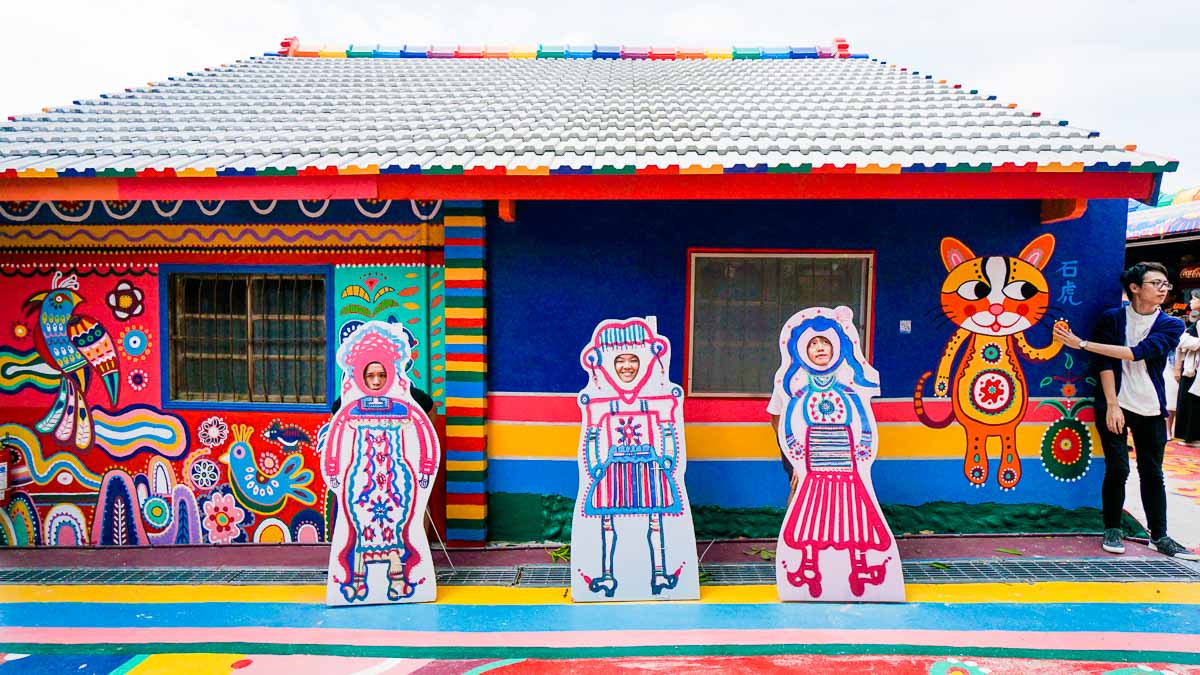
How many silly interns do you spot? 😂
Rainbow Village is a cluster of small houses painted in the wildest, most colourful motifs. Do be there earlier as it will get crowded later on in the day.
Address: No.56, Chun’an Road, Nantun District , Taichung, Taiwan [春安路56巷] Entrance fee: Free Opening hours: 8AM – 6PM
*Pro-tip: Travelling on public buses in Taichung is the way to go! Any rides below 10km are FREE.
Second Market 臺中第二市場
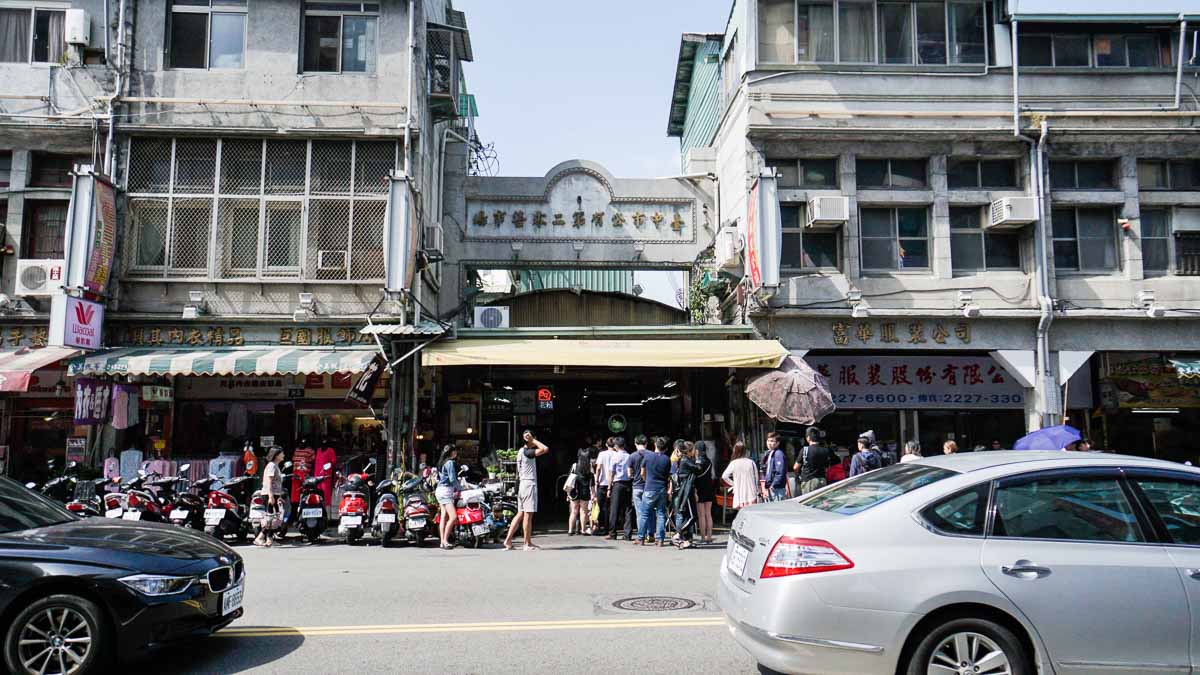
Located just a 15min walk away from the Taichung Railway Station, we had lunch at Second Market 臺中第二市場 , an old market the locals frequent.
This old market is one that’s easily missed if not for the creeping long line that stretches out from the market to the main road. We were curious to see what locals are so patiently waiting for, so we joined the crowd.
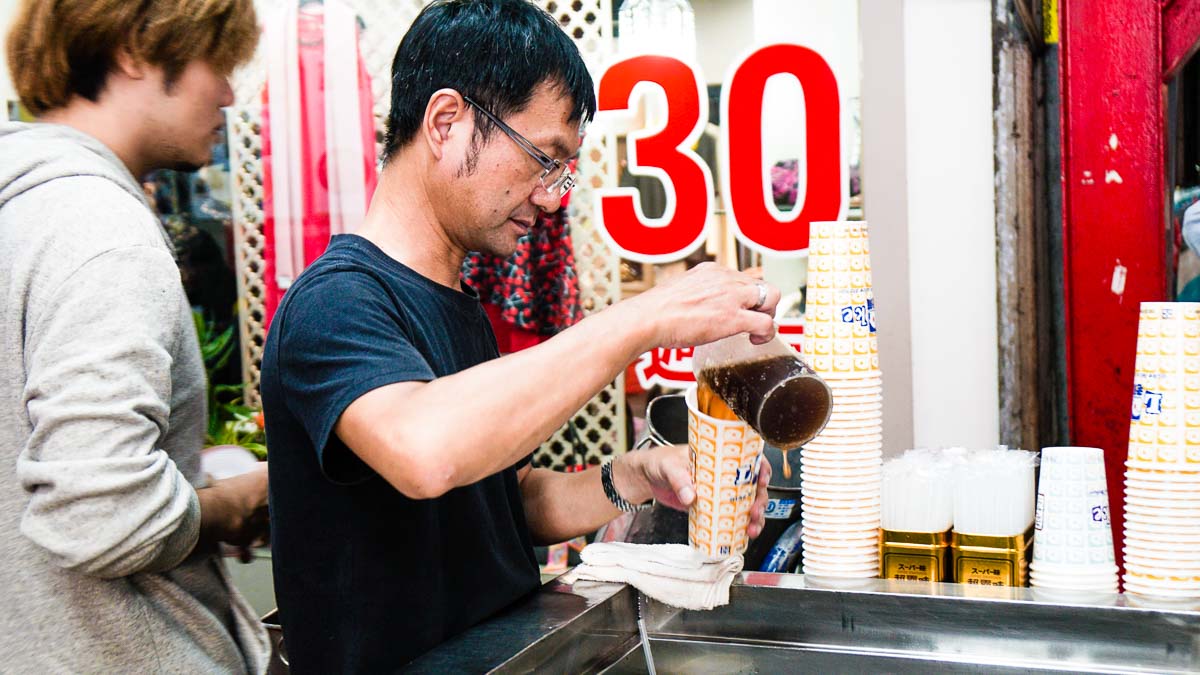
Surprisingly, the queue moves really fast, but the line is always that long because people keep coming! Everyone was apparently queuing up for a cup of Iced Black Milk Tea.
We were also informed by our friendly cab driver that the braised minced pork rice 肉燥飯 is the best in Taichung, of course, we had to try it as well.
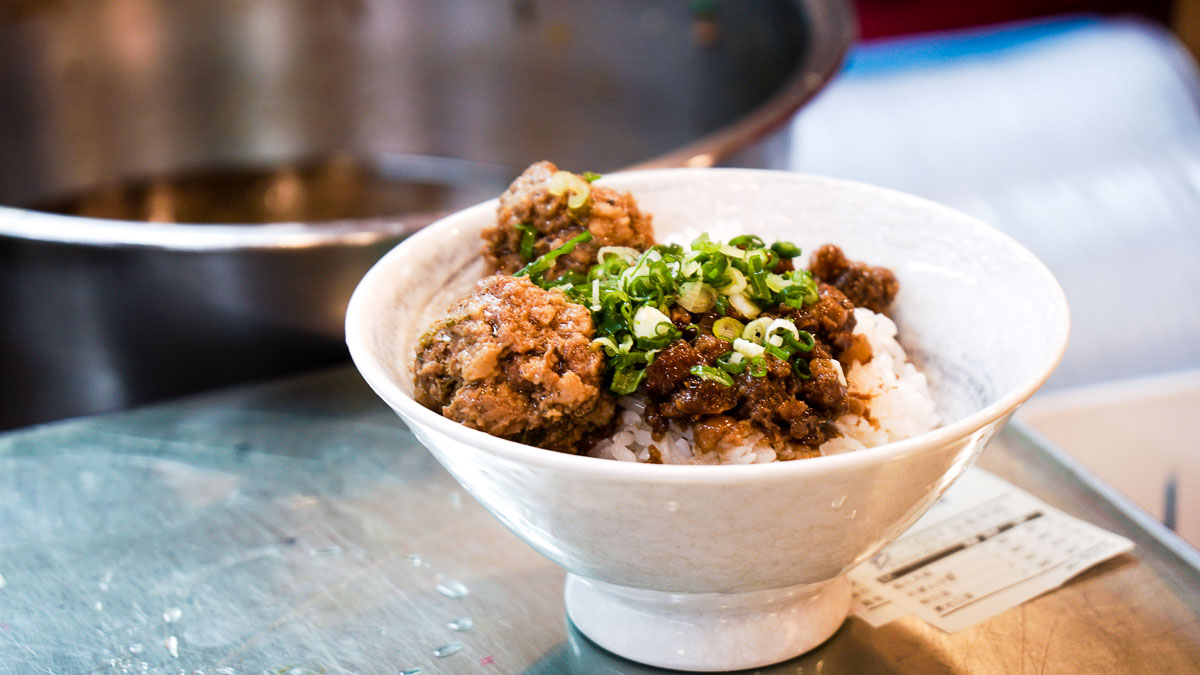
The famous minced braised pork rice in Taichung’s Second Market
Address: No. 87, Section 2, Sanmin Road, Central District, Taichung City, Taiwan 400 [台中市中區三民路二段87號] Opening Hours: 7AM – 8PM (Closed on Mon)
I’m Talato 我是塔拉朵,愛台灣的義式冰淇淋
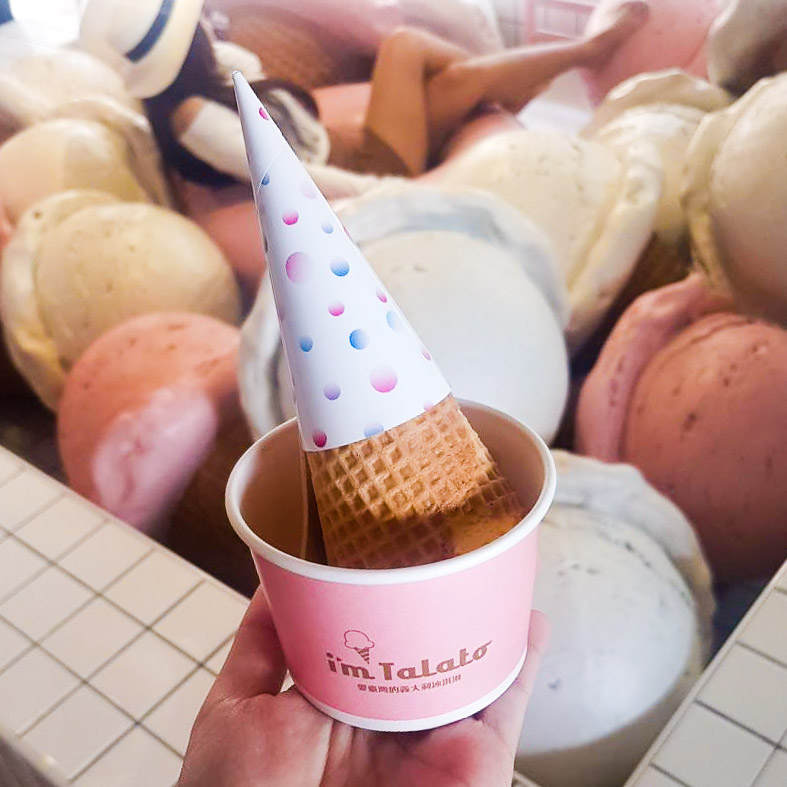
Although it was already autumn when we visited Taiwan in October, the sun was still pretty unforgiving and it felt no different from all-year-summer Singapore. A quick search on desserts in Taichung brought us to I’m Talato , an ice cream parlour all decked in pink. We couldn’t resist going in for some ice cream to cool down.
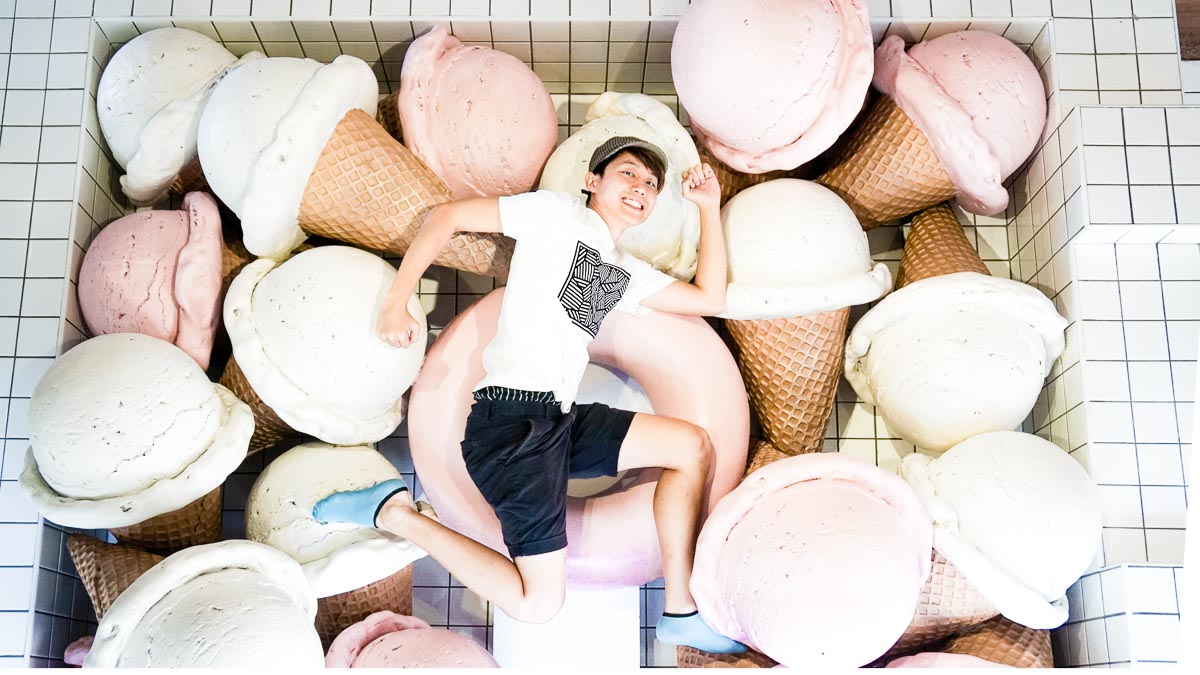
No visit to I’m Talato is complete without a check-in pic at their iconic bed of ice-cream. There, my lifelong dream to live in a pool of ice cream, fulfilled.
Address: No. 451, Yingcai Road, West District, Taichung City, Taiwan 403 [台中市西區英才路451號] Opening hours: 11:30AM – 7:30PM
Gaomei Wetlands 高美濕地
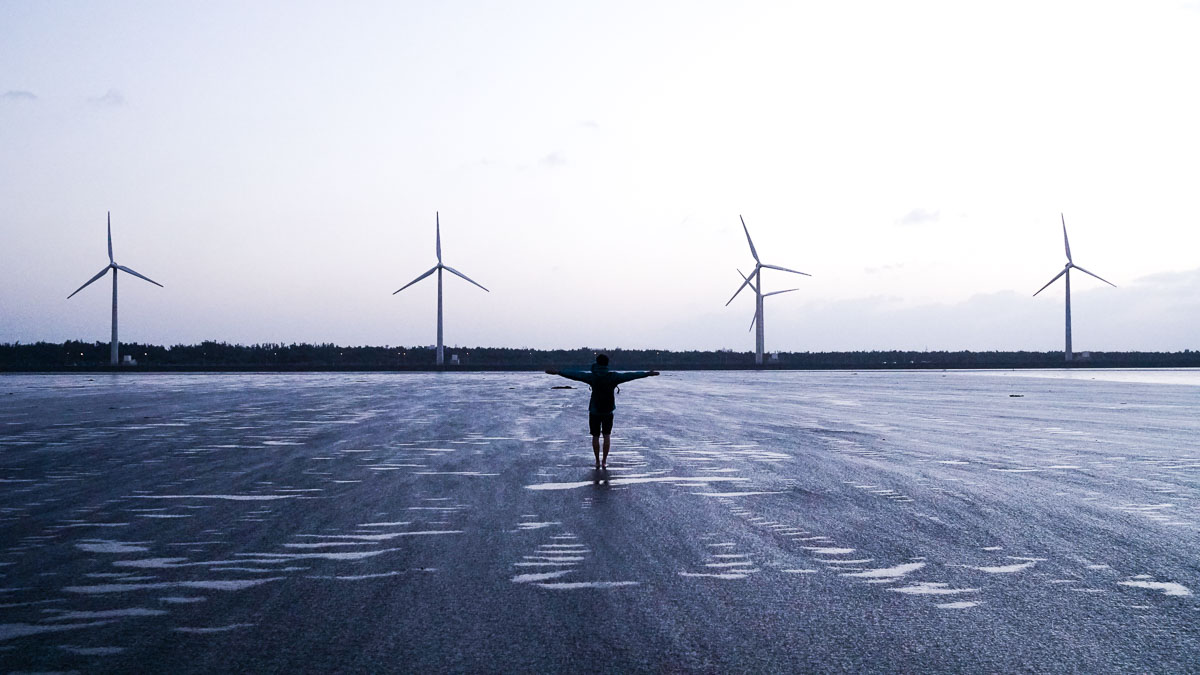
A lesser-known gem in Taichung, Gaomei Wetlands 高美濕地 is a sunset paradise for avid photographers. Rows of windmills line the beach and cast perfect silhouettes against the setting sun. Everything becomes even more breathtaking when the sea acts as a giant mirror reflecting all above the horizon.
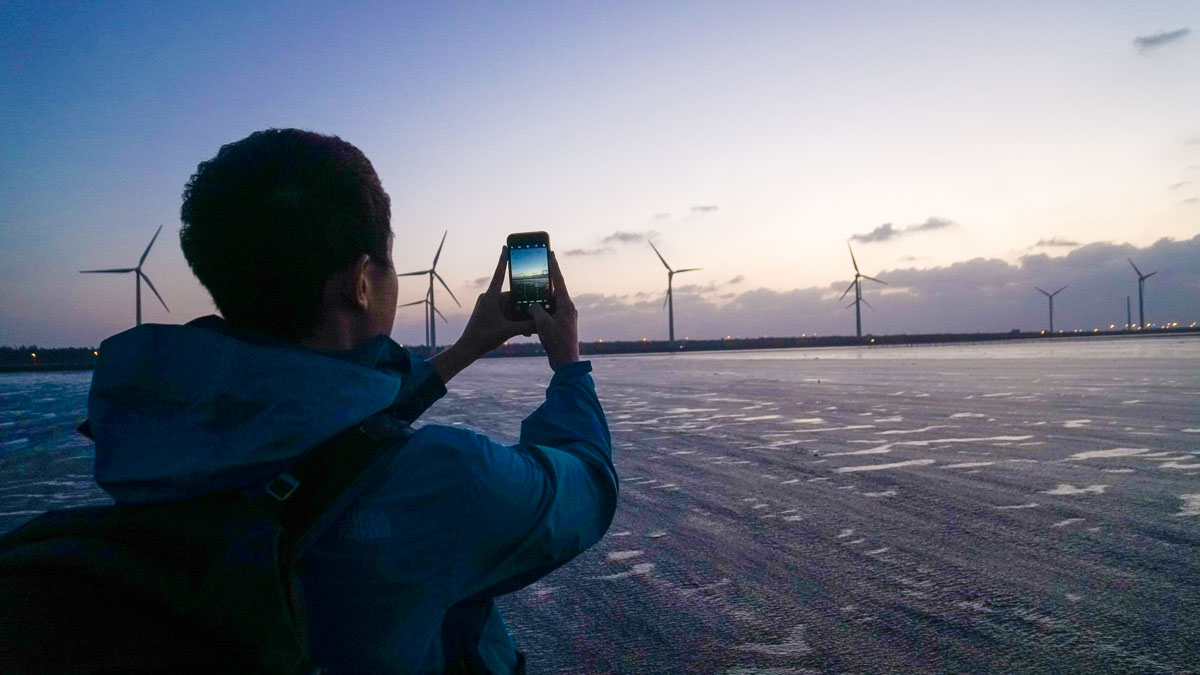
Sunset timings vary throughout the year, but our advice is to be at Gaomei at least an hour earlier to walk around when there’s still sufficient sunlight.
Address: Meidi Street, Qingshui District, Taichung City, Taiwan 436
*Pro-tip: If you are planning to visit Rainbow Village and Gaomei Wetlands on the same day, choose a weekend to do so, as there’s a Bus Service #655 that operates only on weekends between these two places.
After Gaomei Wetlands, we boarded the last bus back to Taichung Train Station where we began the next leg of our journey: Tainan . If Taichung and Nantou showed us how we could play in Taiwan, Tainan would show us the cultural sides of Taiwan.
We chose the Taiwan Rail, the older train system, to get from Taichung to Tainan. It was a slow ride taking about 3 hours, but it didn’t matter as long as we got to our destination before the last check-in time.
Accommodation: MyDeer Backpacker Hostel , from ~S$35 per night
D6: Tainan on Two Wheels!
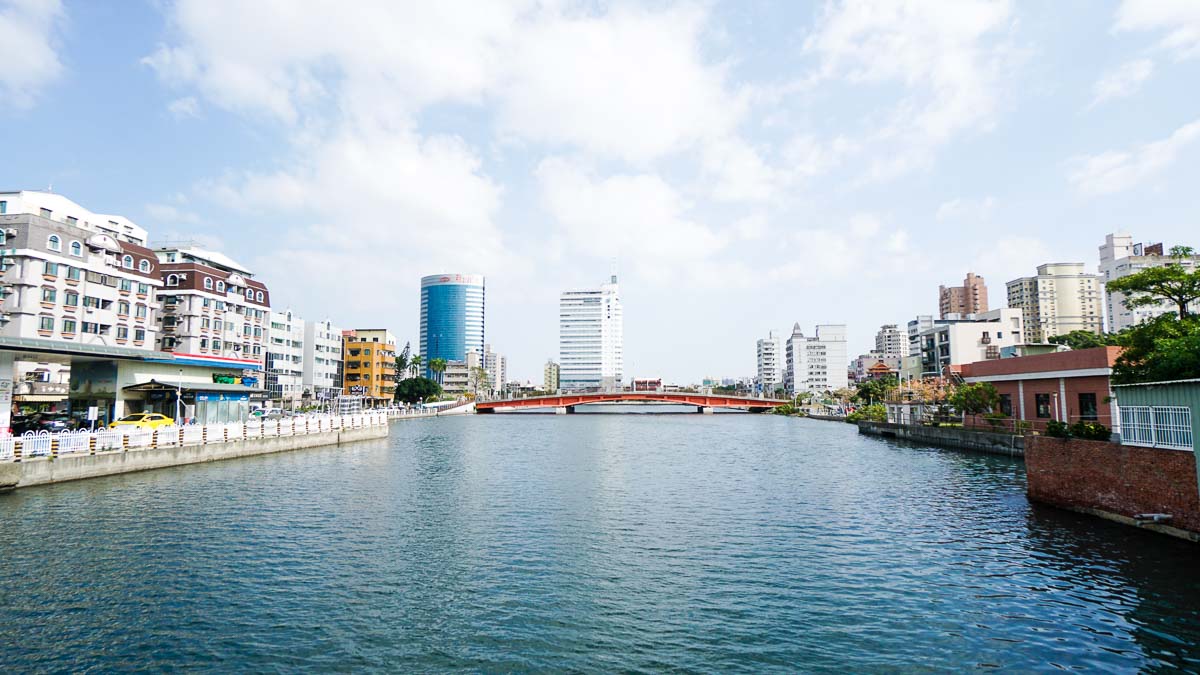
We started our day in Tainan with some morning exercise — cycling. The hostel we stayed at has three bicycles available for guests to use, and we decided to make use of them, as Tainan’s streets are relatively easy to navigate with places of interest situated not far from one another.
Anping Tree House 安平樹屋
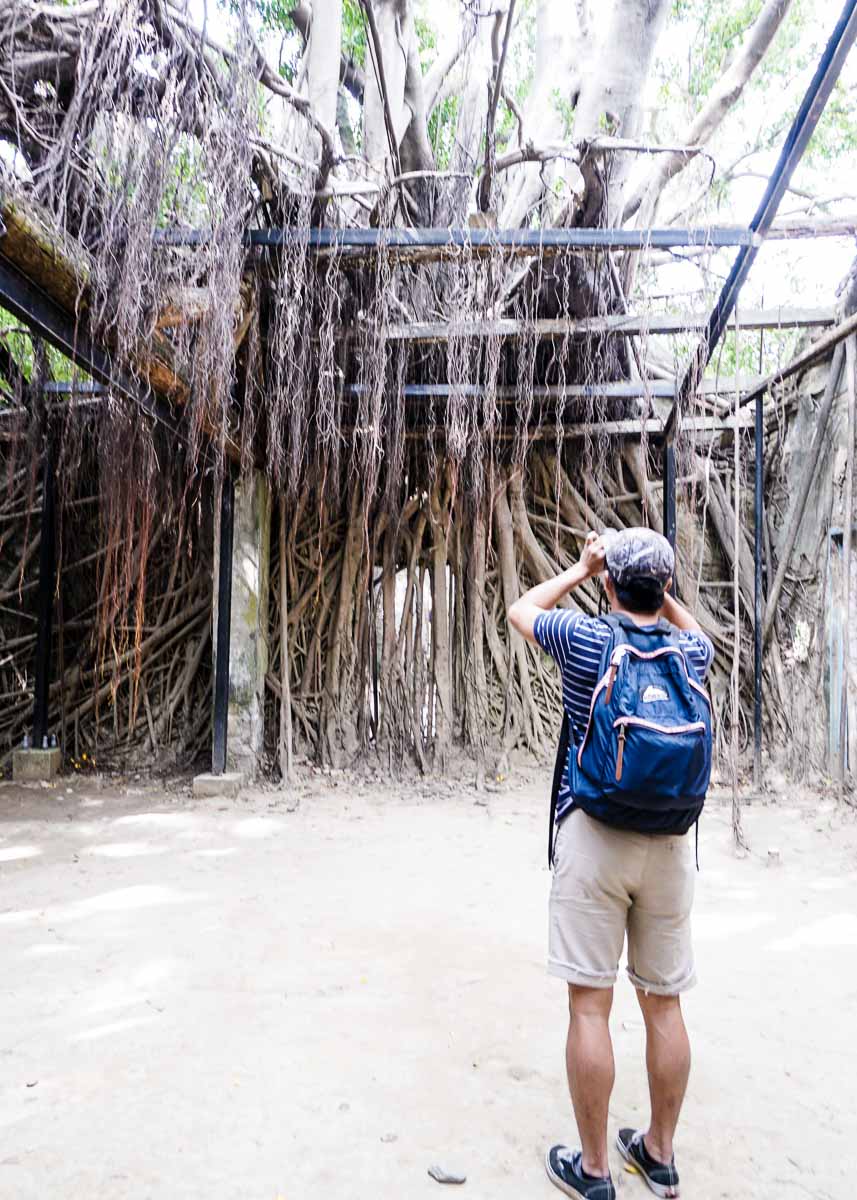
The first pit stop we made was the Anping Tree House 安平樹屋 , a dilapidated warehouse of the ’40s that has since been consumed by a huge Banyan tree. A must-see for those who are into urban exploration!
Entrance fee: NT$50 Opening hours: 8:30AM – 5:30PM Address: No.108, Gubao St, Anping District, Tainan City [台南市安平區古堡街108號]
*Pro-tip: If you are planning to visit three or more of the below attractions, getting the Tainan City (4+1) Monument Pass at NT$150 is a better deal. Passes can be purchased from ticketing counters found in any of the below:
– Anping Tree House 安平樹屋 – Chihkan Tower 赤崁樓 – Anping Fort 安平古堡 – Eternal Golden Castle 億載金城 – 1661 Taiwan Warship Museum 1661臺灣船園區
Tianhou Temple 安平開臺天后宮
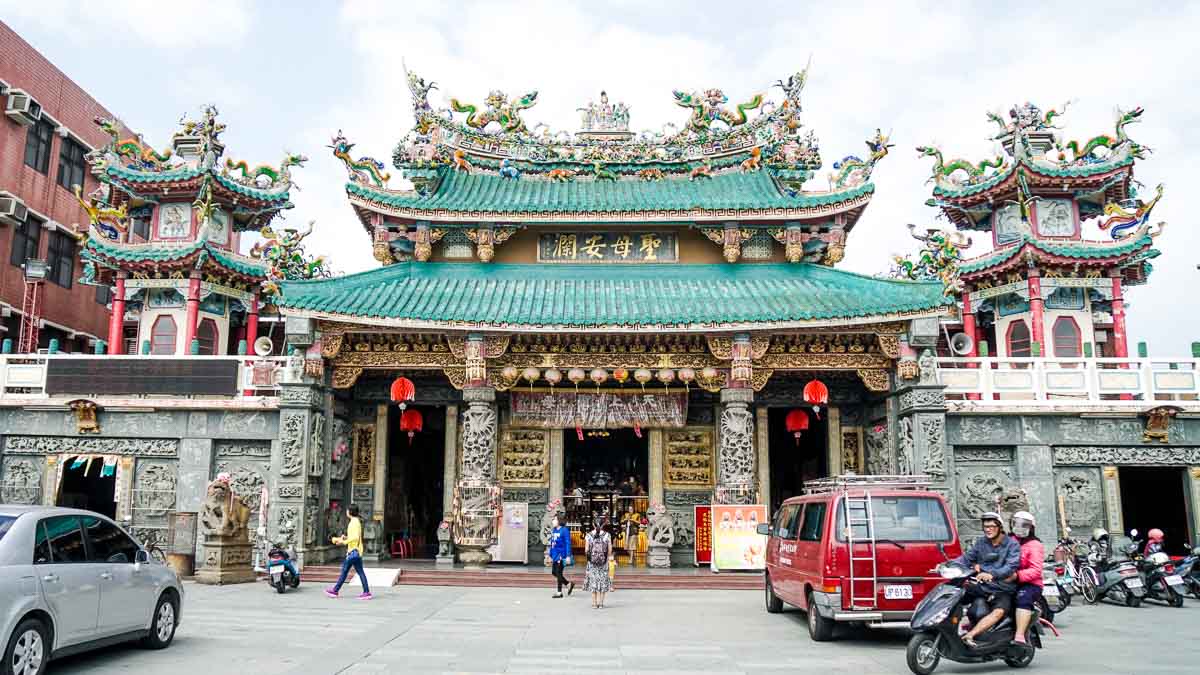
After exploring the Tree House, we continued exploring the Old Streets of Anping, which are kept alive by the constant stream of visitors — many of whom are there to pay the famous Tianhou Temple 安平開臺天后宮 around the corner a visit.
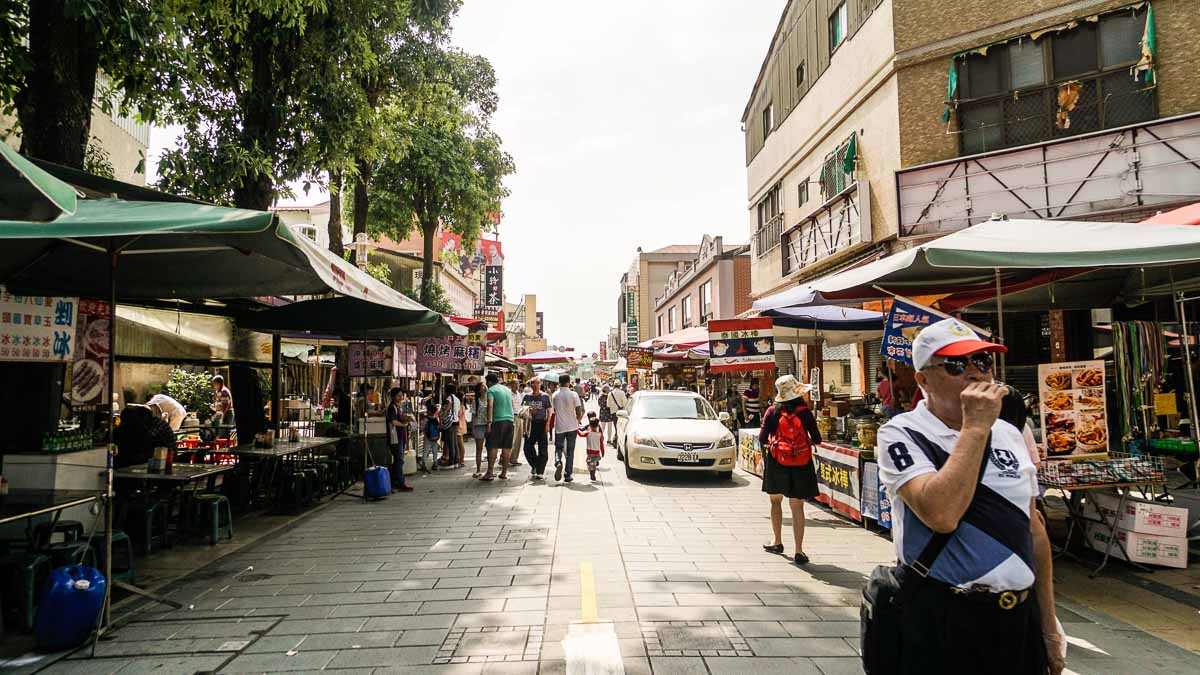
Anping Old Street
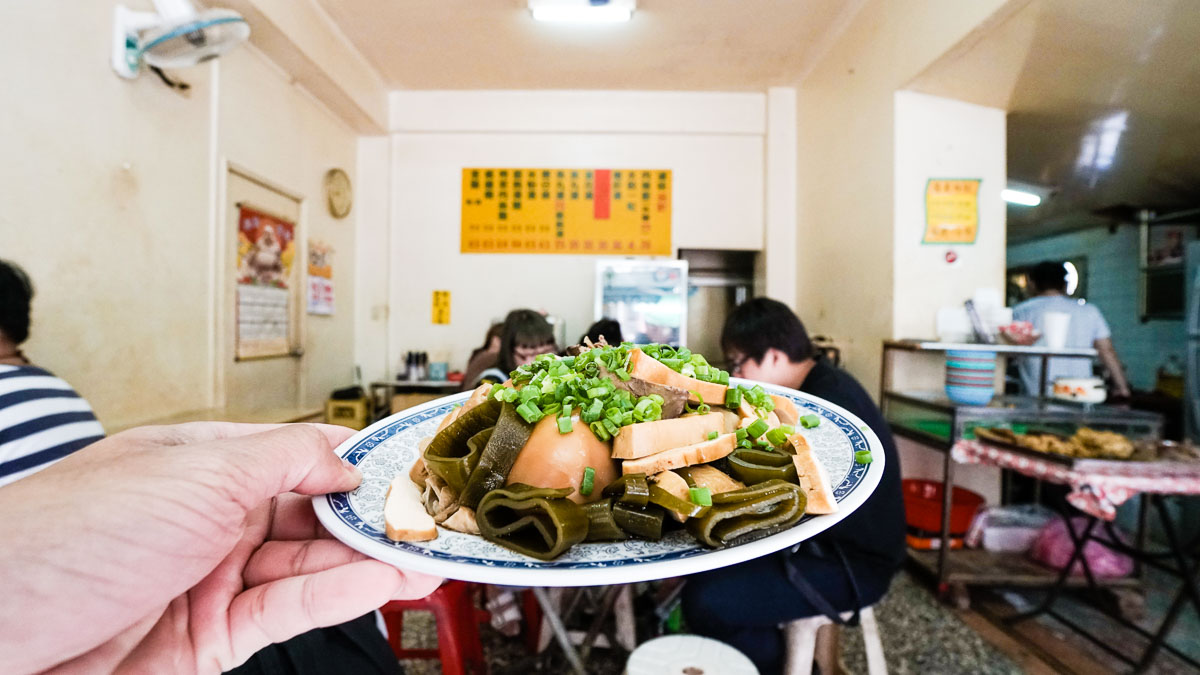
Dayou Xingyi Noodle Shop 大佑興意麵店 is an ordinary noodle stall selling what locals love, the “古早味” (gǔ zǎo wèi), or “tastes of yesteryears”. A bowl dry-tossed noodles with assorted braised meats make a simple yet hearty lunch.
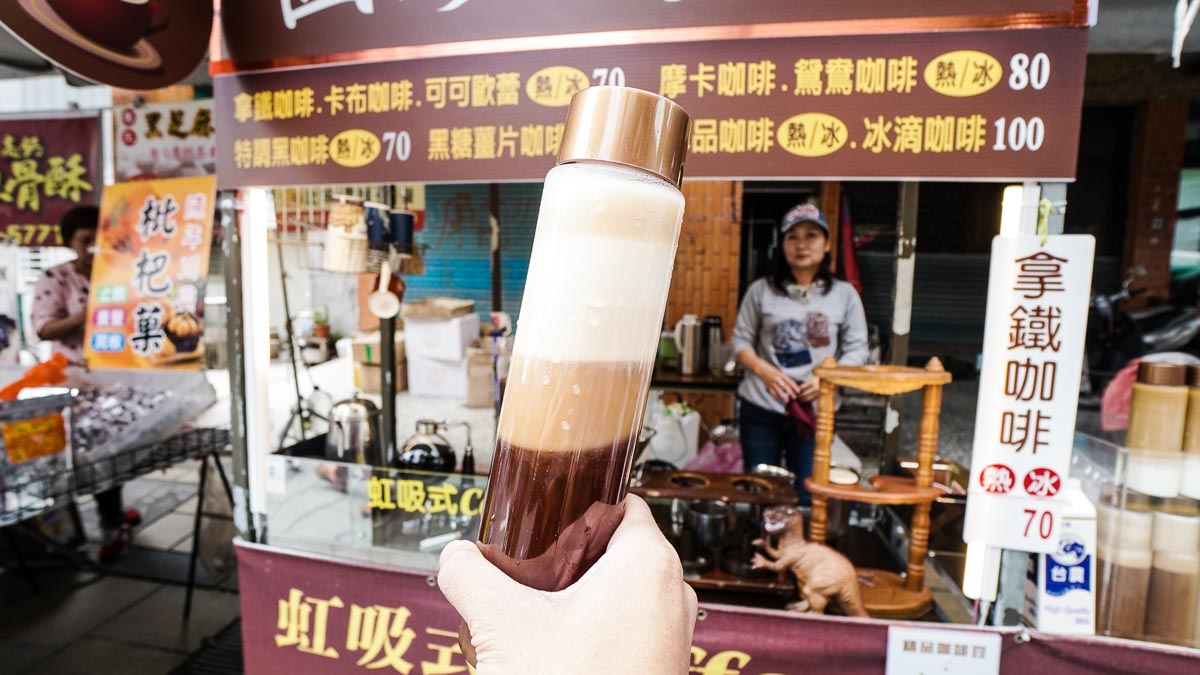
Along the crowded Old Street, we also spotted a small coffee pushcart stall that had a unique coffee-brewing apparatus. Upon asking, we learnt that it’s the Vacuum Coffee Maker 虹吸式咖啡 , also known as Syphon Coffee . We couldn’t resist and bought ourselves a bottle of coffee and milk tea.
Quan Mei Movie Theatre 全美戲院
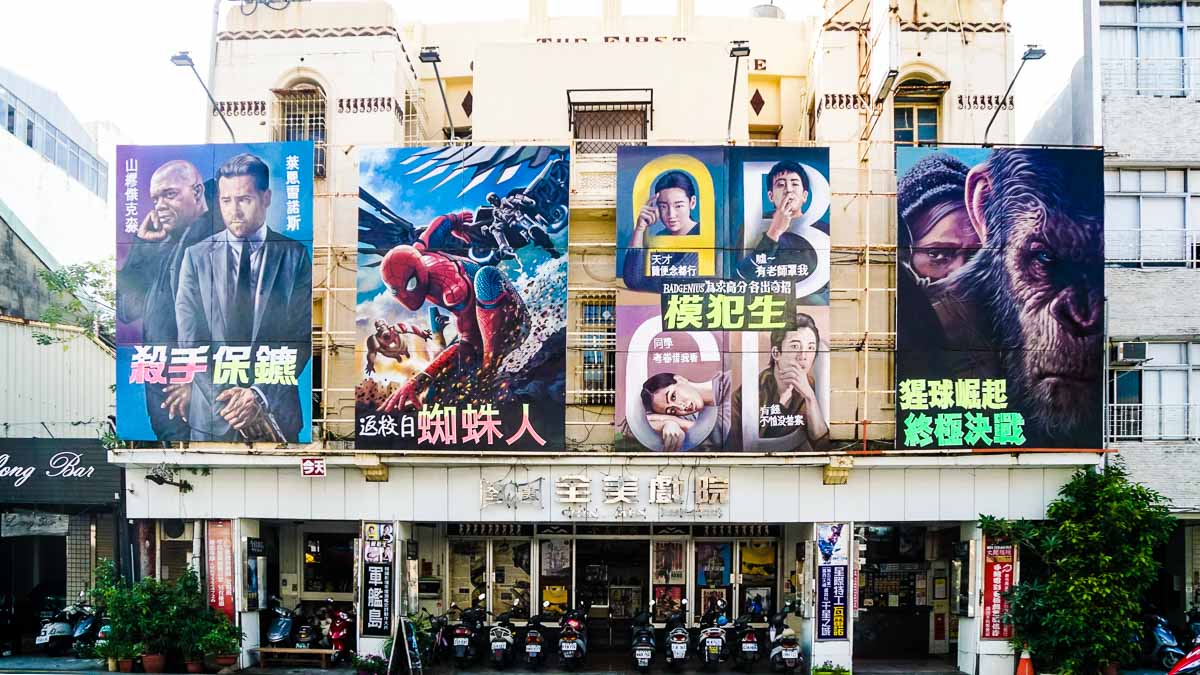
Check out the hand-painted movie posters!
Thereafter, we continued cycling eastwards towards the city centre where we chanced upon the coolest movie theatre. If Tainan is known for her vintagey vibes, then Quan Mei Movie Theatre 全美戲院 is the epitome of all things vintage. Large hand-painted movie posters decorate the building’s facade, and what’s particularly fascinating is that the posters are those of recent movies!
We understood from locals that the movie theatre only shows reruns. Check out Quan Mei’s website to see what’s showing!
Cost: NT$140/pax Opening Hours: 12:30PM – 11PM (weekdays), 10:30AM – 11PM (weekends) Address: No. 187, Section 2, Yongfu Road, West Central District, Tainan City, Taiwan 700 [台南市永福路二段187號]
When in Tainan, be sure to visit Blueprint Culture & Creative Park 藍晒圖文創園區 .
Blueprint Culture & Creative Park 藍晒圖文創園區
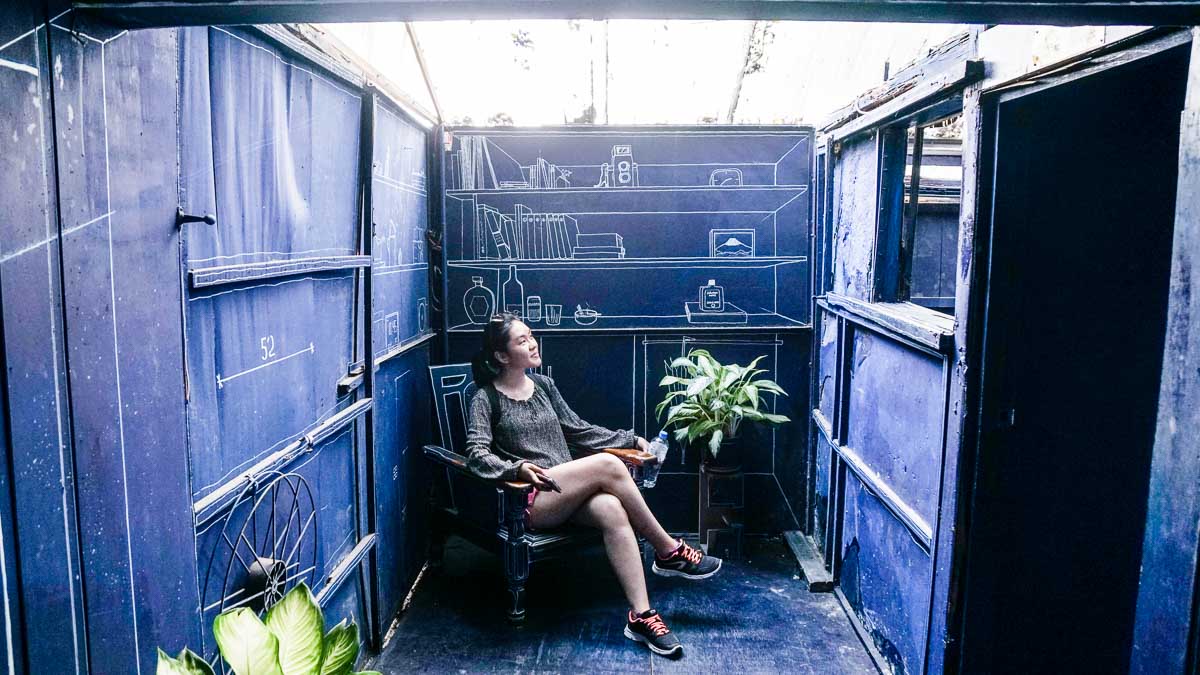
Formerly a Japanese Government Dormitory ( gasp , that’s how old it is!), it has been reimagined, refurbished, and re-introduced to visitors as the new cultural playground of Tainan.
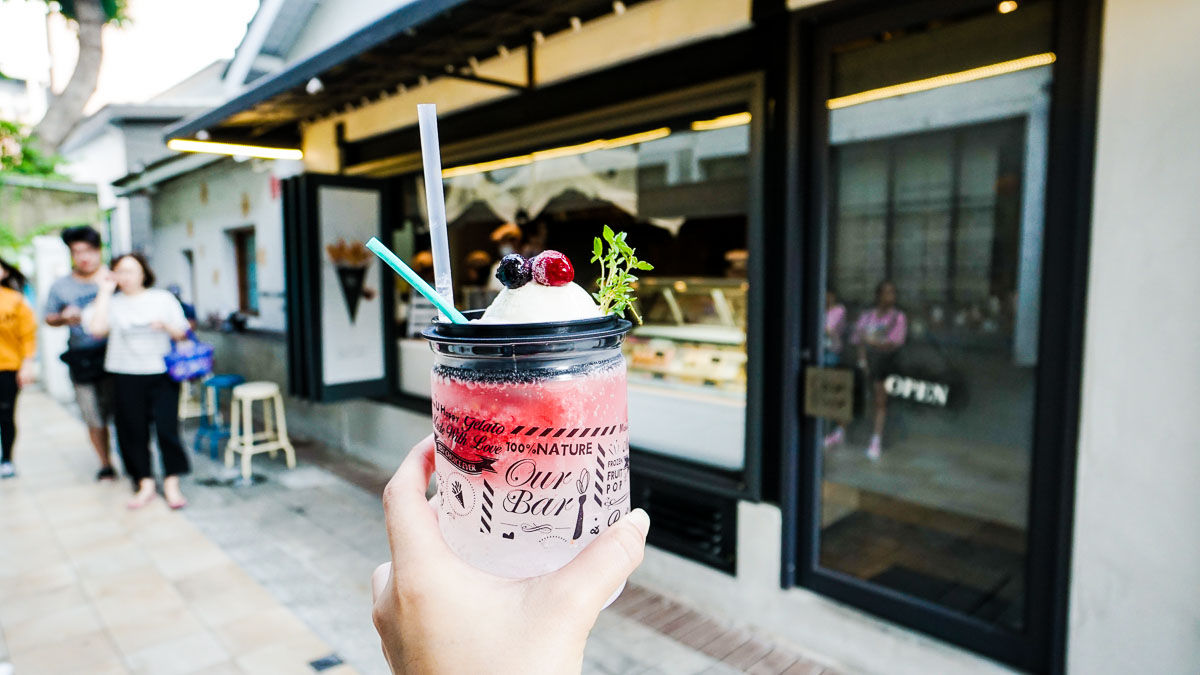
Ice cream smoothie from Our Bar at Blueprint Culture & Creative Park
Within the blue walls, there are indie shops and cafes started up by locals, displaying and selling local crafts and reinvented local delicacies.
Address: Ln. 689, Sec. 1, Ximen Rd., West Central District, Tainan City 700, Taiwan [台南市中西區西門路一段689巷] Opening hours: 2PM – 9PM (Closed on Tue) Entrance fee: Free
Read also: 7 Underrated Things to Do in Tainan
Tainan showed us a side of Taiwan that foreign visitors know less of: the cultural, rustic, yet homey and flavourful one. Before long, it’s time we left Tainan for the second-most populous city of Taiwan after Taipei: Kaohsiung.
Again, we took the Taiwan Railway for this leg of the journey utilising our rail pass . Within an hour, we found ourselves in Kaohsiung, with our growling stomachs calling out to be filled. From Kaohsiung Train Station, we took the local MRT to Kaohsiung Arena Station.
In Kaohsiung, there are a couple of night markets, but the one we decided to head to was Ruifeng Night Market . It’s only a 5-minute walk from the Kaohsiung Arena Train station. Do note that night markets in Kaohsiung do not open every night, unlike those in Taipei.
Ruifeng Night Market 瑞豐夜市

Bird’s eye view of Rui Feng Night Market, Kaohsiung
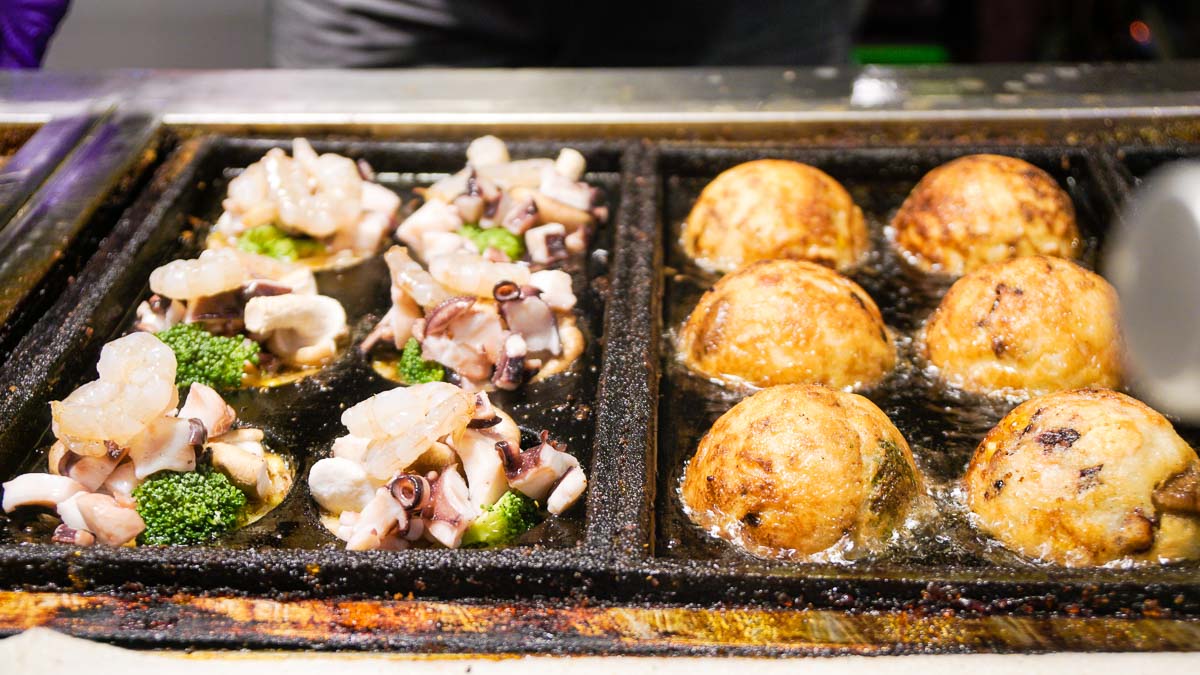
Giant Takoyaki balls at Rui Feng Night Market
That night, we checked in to the hostel we looked forward to the most, Single Inn because there’re hot tubs for guests!
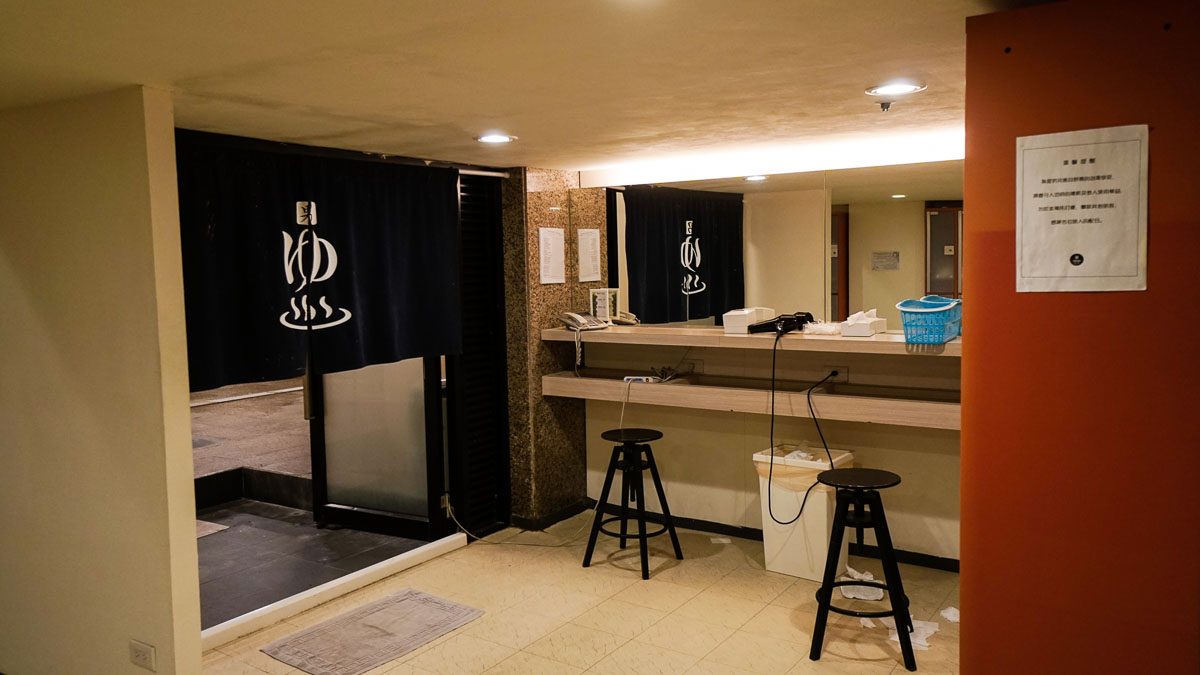
Communal (same-sex) bath area in Single Inn Hostel.
Accommodation: Single Inn from ~S$19 per night
D7: Finding the Artistic Side of Kaohsiung
We started our day with breakfast at a fast-food chain. And nope, before you diss us for not being adventurous eaters overseas, we’d like to introduce Dandan Hamburger 丹丹漢堡 to you.
Dandan Hamburger 丹丹漢堡
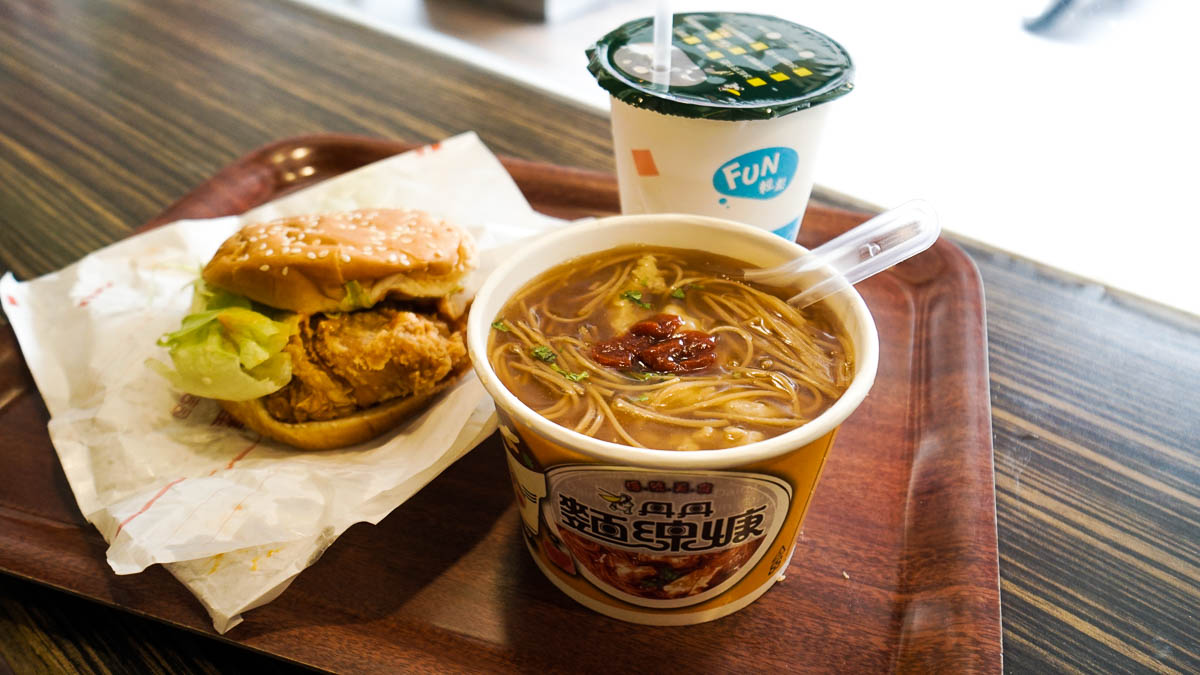
Western fast-food chain with a local Taiwanese twist .
Opened in 1984, Dandan Hamburger is the pride of Kaohsiung’s locals. This burger chain specialises in Western-Taiwanese fusion food and can only be found in the southern cities — Kaohsiung, Tainan, and Pingtung.
Address: No. 224, Qixian 2nd Road, Qianjin District, Kaohsiung City, Taiwan 801 [高雄市前金區七賢二路224號] Opening hours: 6AM – 9:30PM
Pier-2 Art Center 駁二藝術特區
Next, we explored a repurposed warehouse site that’s now used as an event venue for local artists to showcase their artworks, the Pier-2 Art Center .
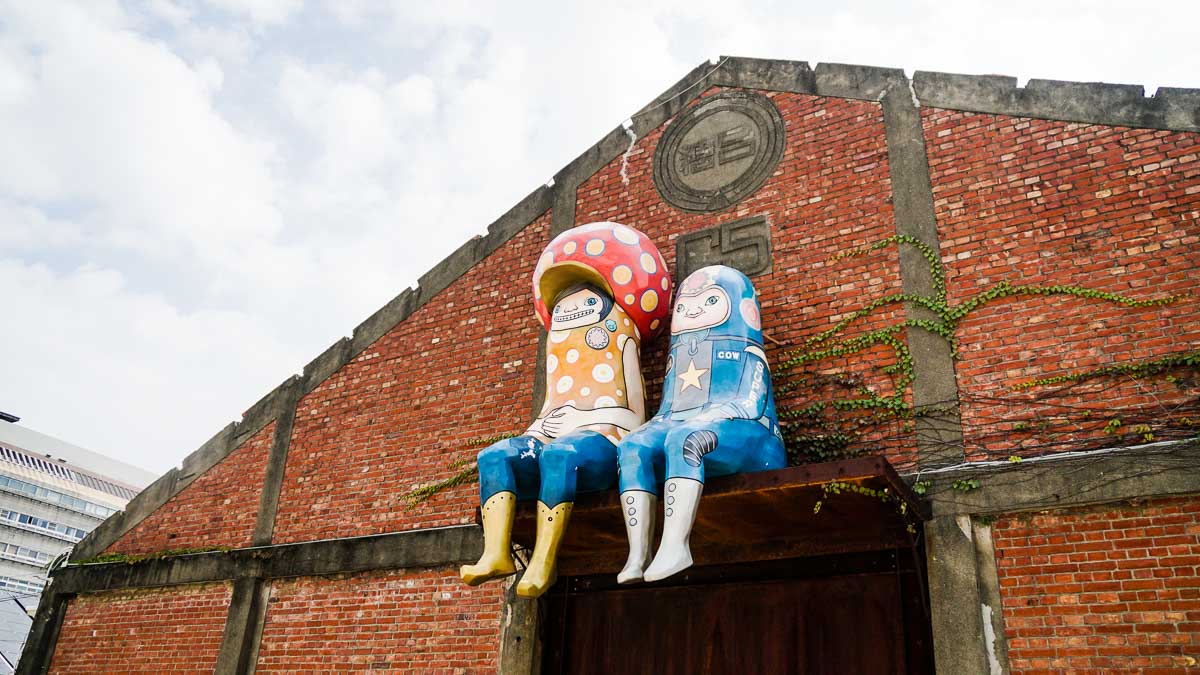
Kaohsiung surprised us with the vibrant arts scene it quietly harbours.
Address: No.1, Dayong Rd., Yancheng Dist., Kaohsiung City 803, Taiwan [鹽埕區大勇路1號] Opening Hours: 10AM c 6PM (Mon – Thu), 10AM – 8PM (Fri – Sun & PH)
Read more about Pier-2 Art Centre in our 7 Things to Do in Kaohsiung guide.
Dome of Light 光之穹頂
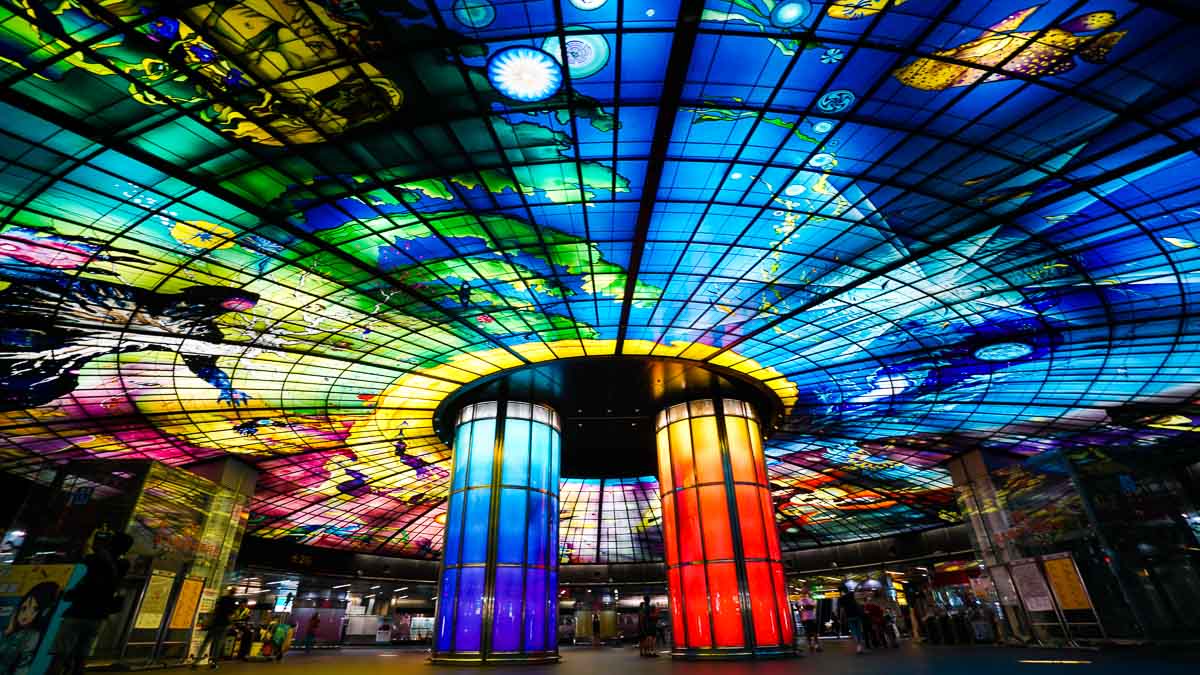
At the Formosa MRT station 捷運美麗島站 , there’s the Dome of Light 光之穹頂 , the largest glass work in the world, designed by Italian artist Narcissus Quagliata.
There are short light shows daily at 11AM, 3PM, and 8PM. As the Dome of Light is not within the paid premises of the train station, it’s literally free entertainment you should take note of in Kaohsiung 😉
Dragon and Tiger Pagodas 龍虎塔
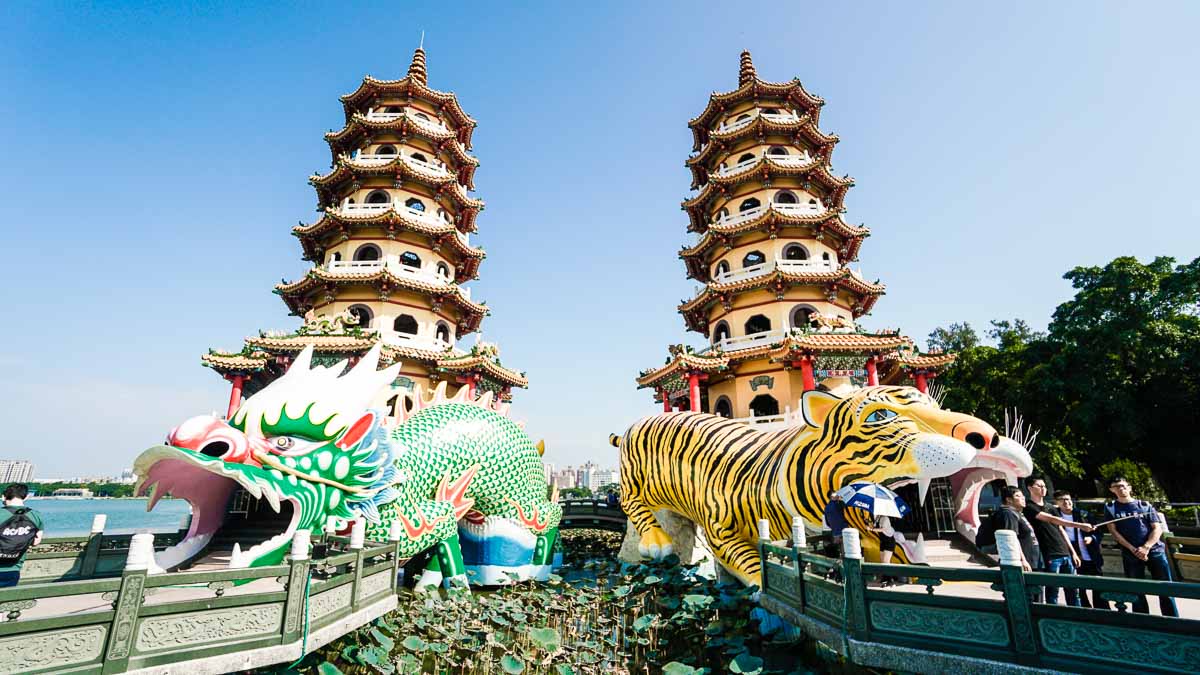
Next up, we headed to the Dragon and Tiger Pagodas 龍虎塔 . Folklore has it that walking through the dragon’s mouth and then exiting through the tiger’s will bring good luck and fortune.
Address: Liantan Rd., Zuoying Dist. , Kaohsiung, Taiwan [ 高雄市左營區蓮潭路與勝利路交叉口旁] Opening hours: 8AM – 6PM Entrance fee: Free (on a free-will donation basis)
Read also: Top 7 things to Do in and around Kaohsiung — Gateway to Taiwan’s laid back South
Before nightfall, we packed our belongings and boarded the Kaohsiung – Kenting Express Bus from Kaohsiung (Zuoying) HSR Station, towards our next destination — Pingtung 屏東 !
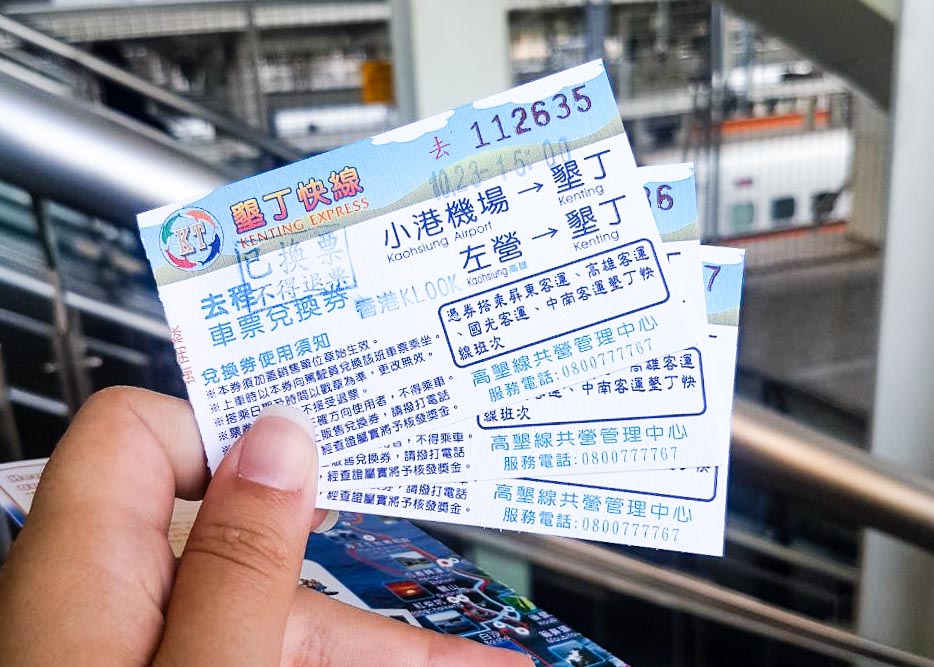
Kaohsiung – Kenting Express Bus Ticket
We booked our bus passes from Klook beforehand, and collected them from the bus pass counter at Kaohsiung (Zuoying) HSR. We recommend that you get both the Express Bus Return Pass and the Kenting Shuttle Bus Pass for convenience.
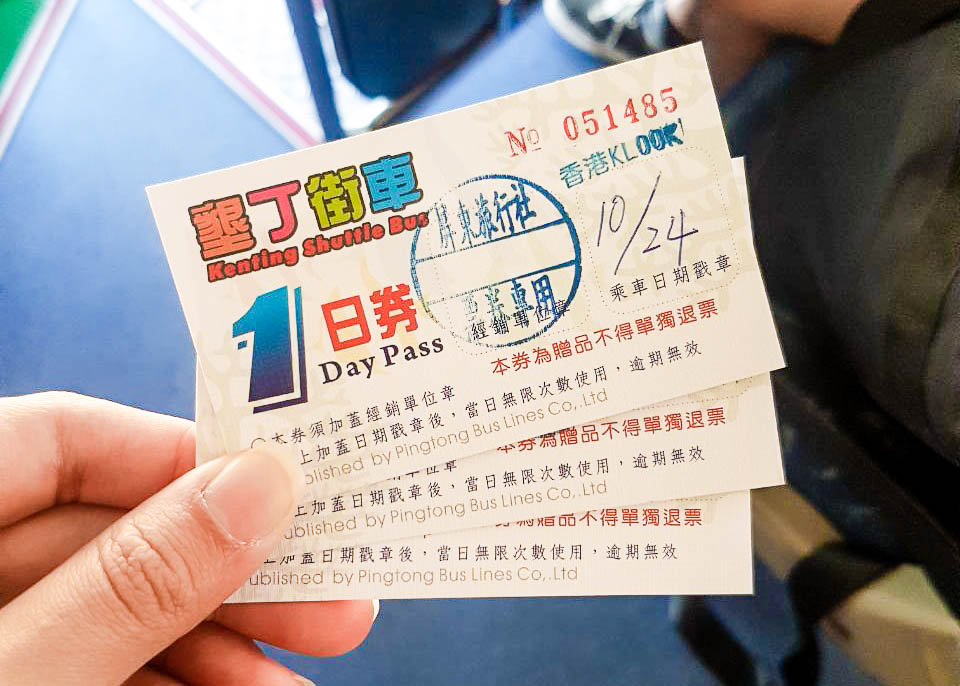
Kenting Shuttle Bus ticket
After a smooth and comfortable 1hr 35 min ride, followed by a hitch (’cause we missed the other transfer bus), we reached our accommodation for the night — National Museum of Marine Biology and Aquarium (NMMBA) 國立海洋生物博物館 .
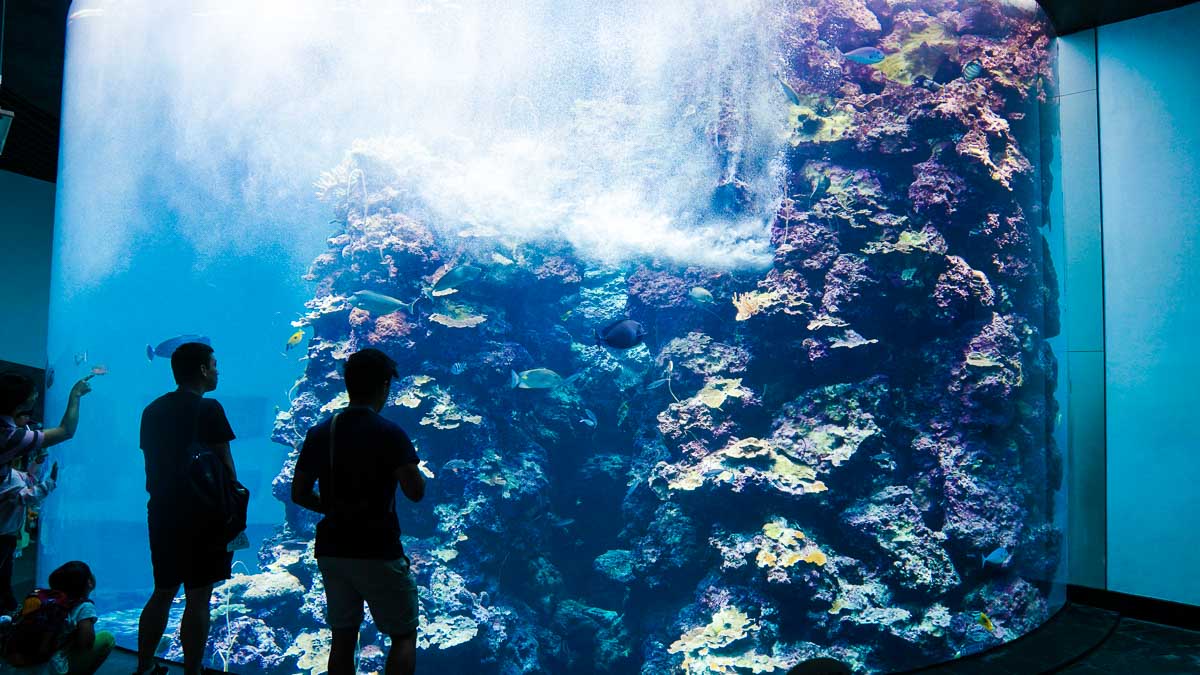
Yes, you read those two words right. Our “accommodation” for the night in Pingtung was an “aquarium”! 😁
First up, here’s how you can get to the aquarium if you are travelling via the Kaohsiung – Kenting Express Bus (without needing to hitch a ride like a hobo on the road):
Kaohsiung (Zuoying) HSR →(Kenting Express Bus)→ NMMBA Transfer Stn →(Kenting Shuttle Bus from across the road)→ Marine Biology Museum
Important timings to take note: – Kaohsiung – Kenting Express Bus from Kaohsiung (Zuoying) HSR: 8:30AM – 7:10PM (at 15–30min intervals. Refer to detailed timetable .) – Kenting Shuttle Bus from NMMBA Transfer Stn: 8:54AM to 3:54PM (at 30min intervals), with one last bus at 5:54PM (Refer to detailed timetable )
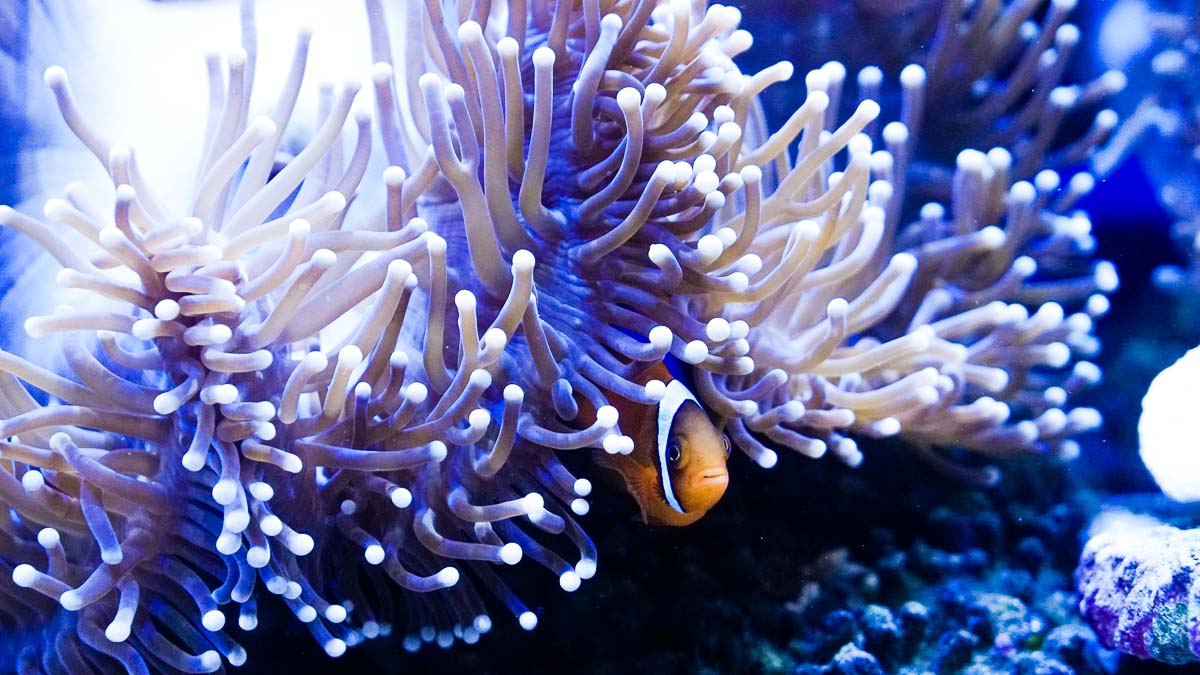
Upon arrival, visitors will be shown around the aquarium, staff areas, and out-of-bounds premises to day guests. Through this programme, we learnt more about how marine animals were being taken care of in aquariums, the different kinds of corals, anemones, and sea organisms. We even got to feed fish while we were here!
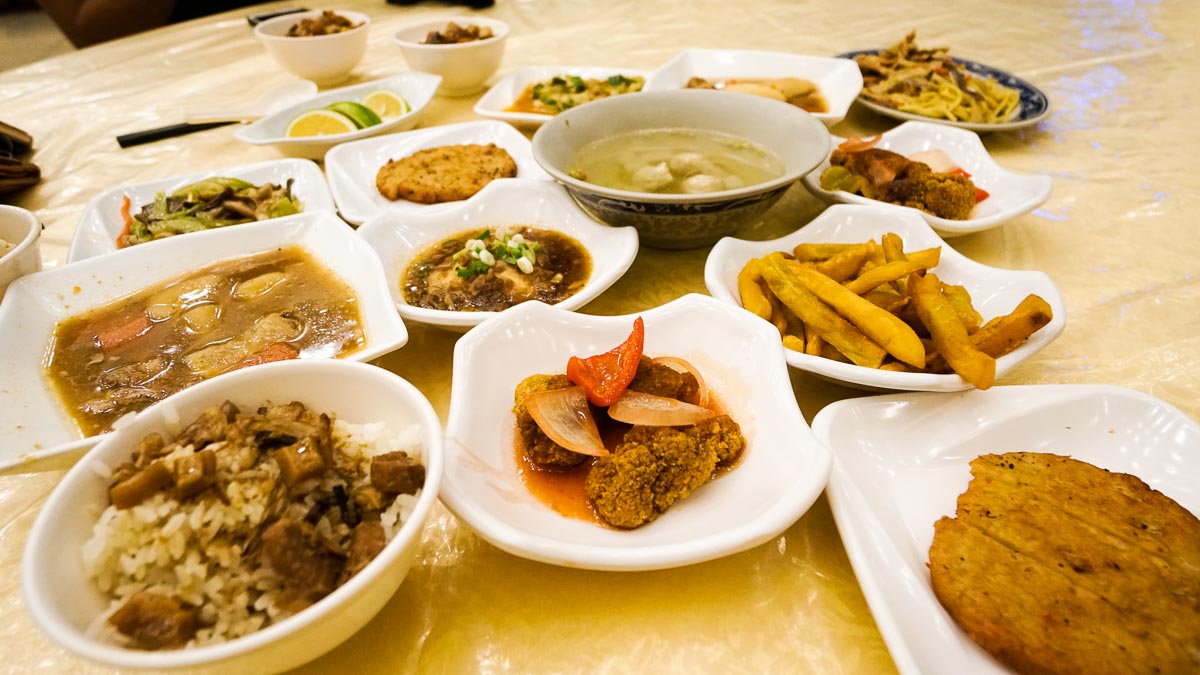
Dinner is provided in the aquarium sleepover package
Dinner, supper, and breakfast are also included in the sleepover package . The communal washrooms are clean and there are big lockers for guests to store their personal belongings.
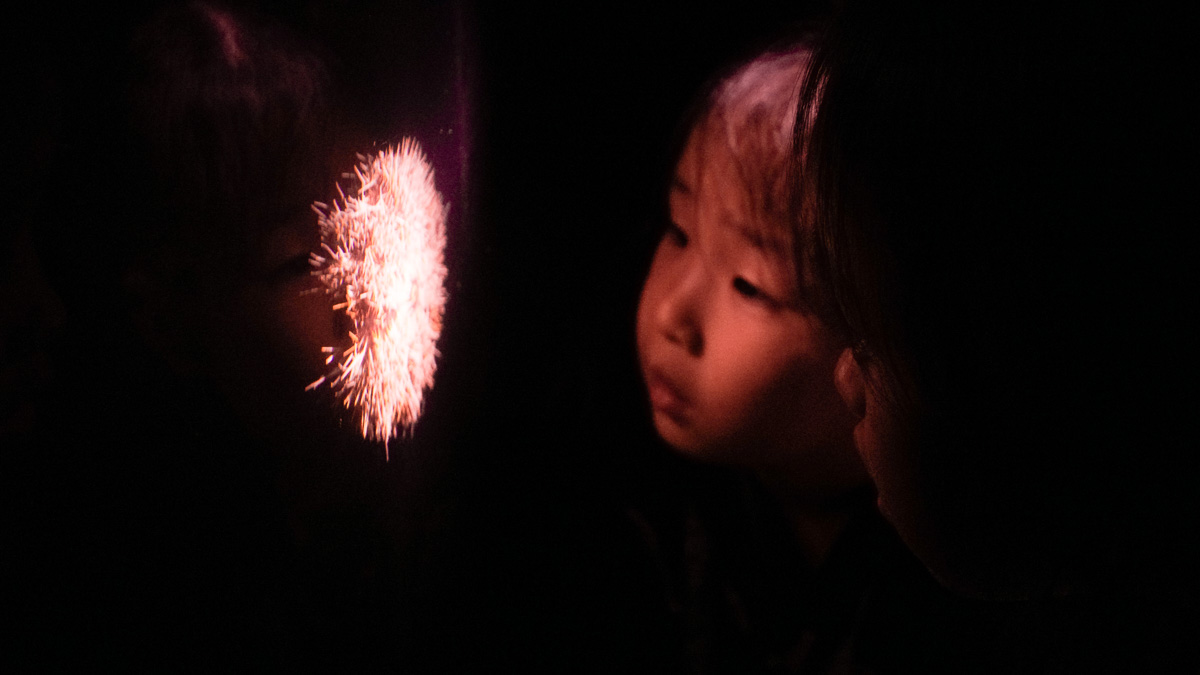
Although we thought that this programme suits younger children, you’ll definitely still enjoy this if you’re a marine lover as well!
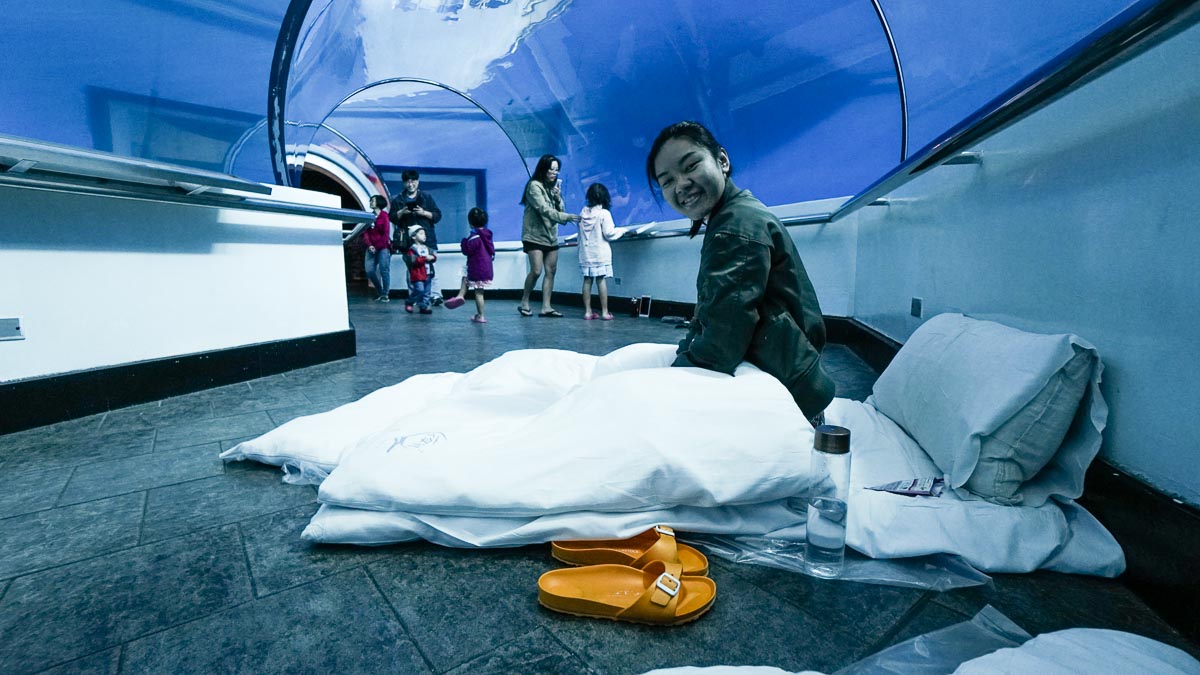
This extraordinary experience of sleeping amongst fish and other marine animals is probably the closest anyone can get to being a mermaid.
Address: 2 Houwan Rd. Checheng, Pingtung County, Taiwan [屏東縣車城鄉後灣村後灣路2號] Sleepover duration: 4PM – 10:30AM, the following day Regular opening hours: 9AM – 5:30PM daily Price: ~S$118/pax
*We did not include the aquarium sleepover in the budget as we feel that it’s an optional activity. Admission tickets are also available from ~S$18/pax for standard entry, or at a discounted rate with the Klook Pass Taipei (from ~S$23 for 2 attractions).
D8: Fun Under the Sun in Kenting
Watersports at nanwan.
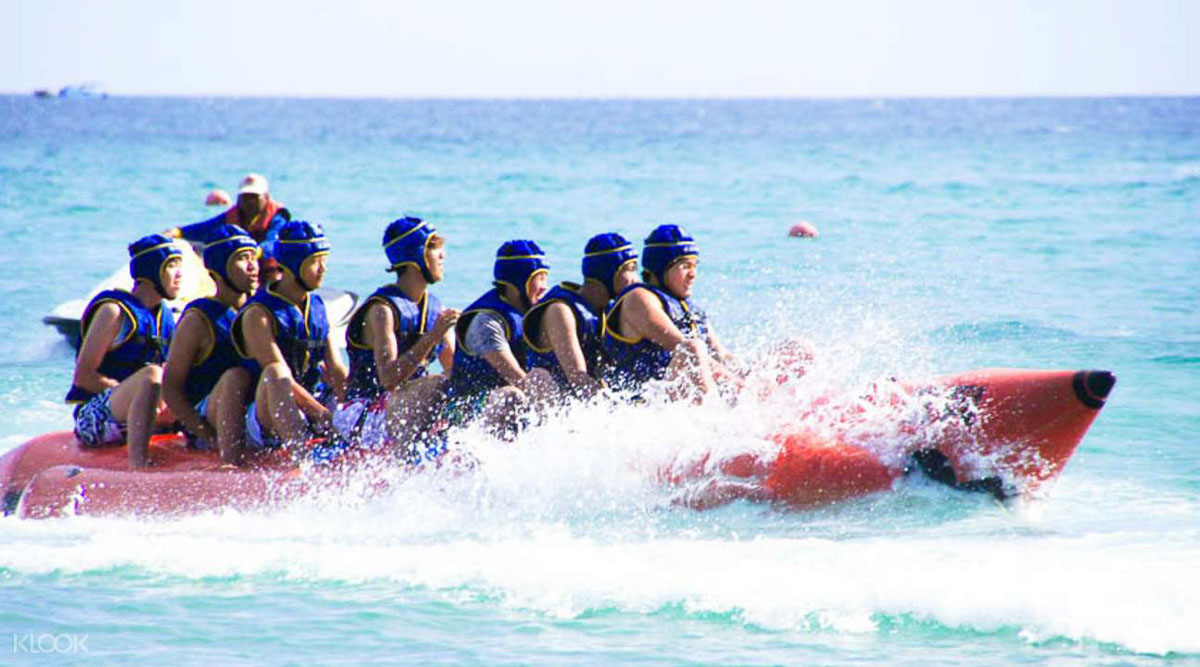
Photo credit: Klook
After our first ever aquarium sleepover, we continued our journey southwards to Kenting. We boarded the Kenting Shuttle Bus from Marine Biology Museum 海洋生物博物館 stop just outside the aquarium and alighted at the Nanwan 南灣 stop for some water sports at the beach .
There are up to eight watersports available at Nanwan. This includes the banana boat, the flying bed, and jetskiing.
Cost: ~S$17 for the 2-in-1 Watersports Package Address: 154 Nanwan Road, Nanwan (South Bay), Hengchun, Pingtung County [屏東縣恆春鎮南灣里南灣路154號] Operating hours: 8AM – 6PM (be there at 3PM latest)
Kenting National Park
As we chose only two activities from eight, we finished watersports relatively quickly. But that’s all good because that means we have more time to explore Kenting. After a quick rinse, we boarded the shuttle bus again to our next destination: Kenting National Park 墾丁國家公園 . Alight at Kenting stop.
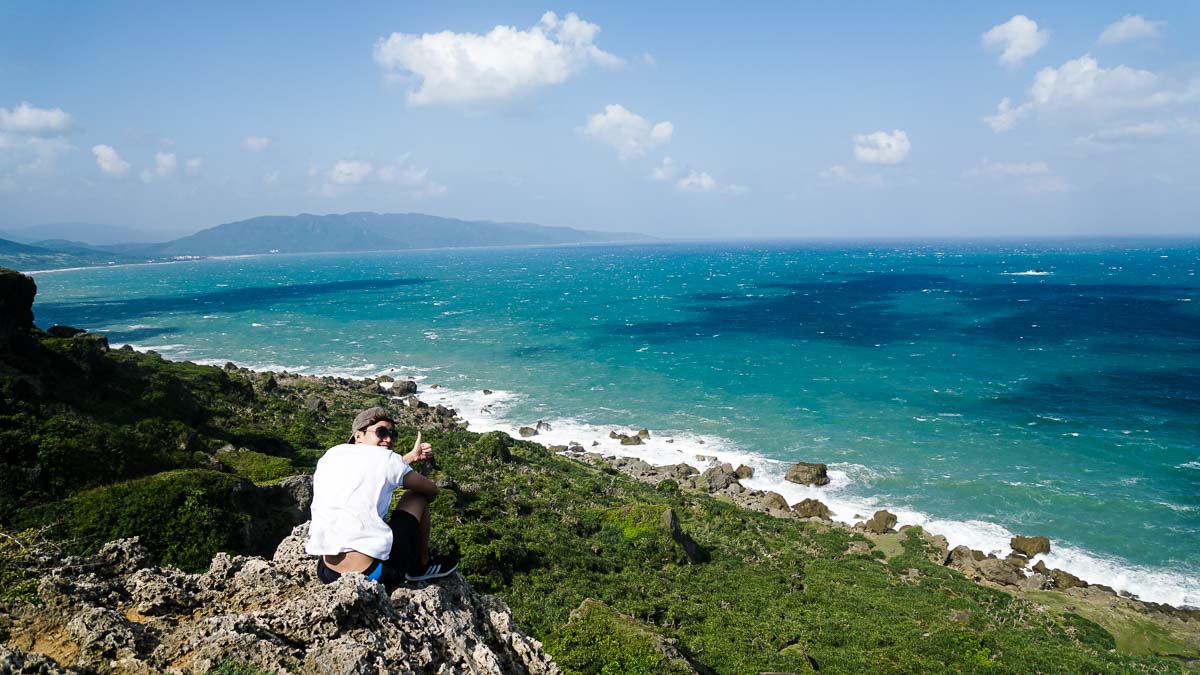
Long Keng Cliff at Kenting
Kenting National Park is situated at the southernmost tip of Taiwan, famous for her stunning coastlines. Travelling on a scooter bike is perhaps the easiest and most convenient way to explore Kenting if you are not staying overnight, like us. It’s not difficult to spot scooter bike rental shops here.
We rented our battery-operated scooter bikes from Kenting Starry Sky — Space Capsule Hotel for NT$700 per bike. We even managed to deposit our heavy baggage at Starry Night Capsule Hotel, a relief for us all as there are no luggage deposit areas or lockers available in the Kenting area 😅
From the starting point at Kenting stop, a bike ride upwards to Eluanbi Lighthouse will take approximately one hour.
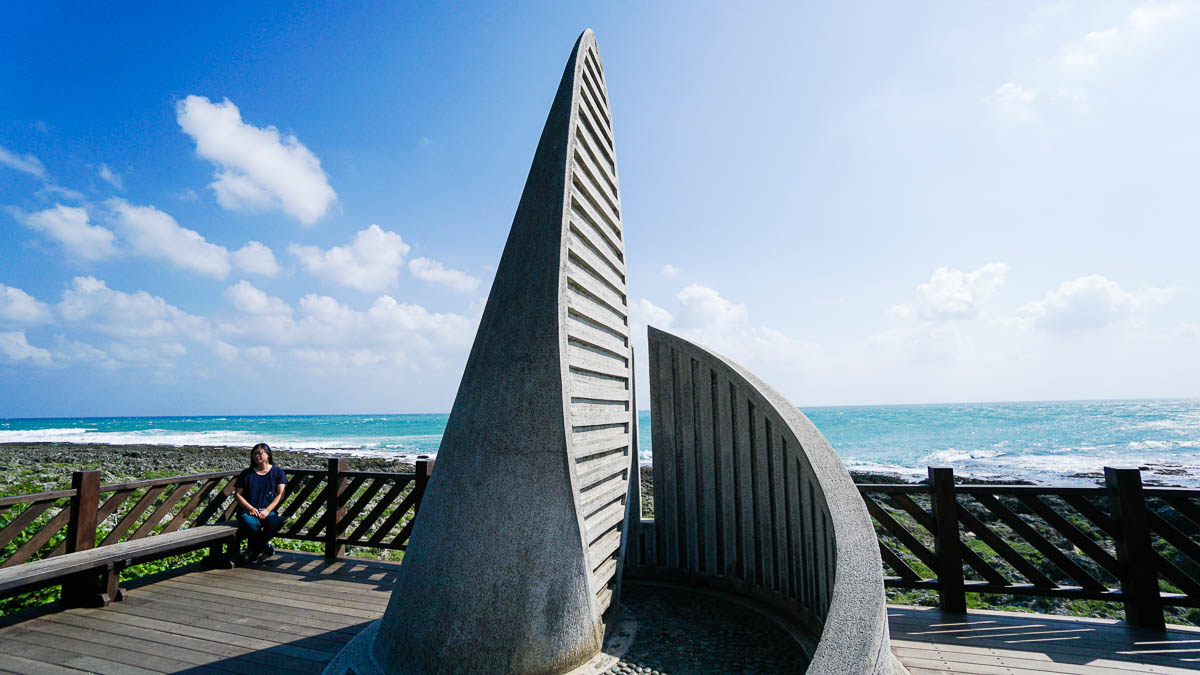
The southernmost point of Taiwan
Scenic spots along the way: – Sail Rock, or a.k.a “Richard Nixon’s Submerged Head” 船帆石 – Eluanbi Lighthouse 鵝鑾鼻燈塔 (Opening Hours: 8:30AM – 4PM; Admission: NT$40) – Taiwan Southernmost Point 台灣最南點 – Longpan Park 龍磐公園 – the southernmost point of Taiwan – Sail Rock, or a.k.a “Richard Nixon’s Submerged Head” 船帆石 – Eluanbi Lighthouse 鵝鑾鼻燈塔 (Opening Hours: 8:30AM – 4PM; Admission: NT$40) – Taiwan Southernmost Point 台灣最南點 – Longpan Park 龍磐公園
*Pro-tip: Do not be shy to ask shop owners if they allow bags storage for a couple of hours while you head out to explore Kenting National Park. Of course, it will be a lot easier if you ask the scooter rental shops you rent the bikes from.
Scooter bike rental/recommended accommodation: Kenting Starry Sky — Space Capsule Hotel , from S$44 per night
After the fun and carefree time we had biking around Kenting, it was time to get back to Kaohsiung then Taipei. First, we got onto the Express bus back to Kaohsiung (refer to bus timetable ). It’s a 2-hour bus ride back to Kaohsiung (Zuoying) HSR Station, the best time to take forty winks.
Then, take the northwards HSR from Zuoying to Taipei HSR Station.
And with that, we conclude our 8-day roundabout Taiwan trip. We hope we’ve shown that it’s not difficult nor expensive to travel and experience the lesser-known gems of Taiwan.
Budget Breakdown for 8 Days
Planning to visit many attractions? Get a Klook Pass to get a discount, up to 41%!
Transport: S$250 Accommodation: S$141 Activities: S$216 Food: $100 SIM Card: $13.50 Total: S$720.50 ( excl. flights )
*Pro-tip: Use code <THETRAVELINTERN> on Klook to get 5% off all items * with a min. spend of S$50 (discount cap at S$15). Apply the promo code at checkout. One-time use only. (* – see list of excluded activities )
Kickstart your adventures to Taiwan now! We’ve got what you need: – 4D3N Taipei Itinerary – Ultimate Food Guide: All Around Taiwan – Taipei Day Trip: Jiufen & Shifen – Underrated Things to do in Tainan – Food Guide: Shilin Night Market
Click here to check flights from Singapore to Taipei !
This article was brought to you by Klook .
Follow us on Facebook , Instagram , YouTube , and Telegram for more travel updates!
A post shared by The Travel Intern (@thetravelintern) on Nov 6, 2017 at 7:10pm PST
RELATED ARTICLES MORE FROM AUTHOR
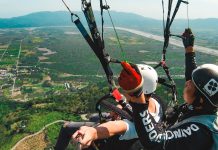
25 Unique Things to Do in Taiwan Besides Visiting Night Markets
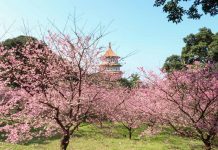
Ultimate Taiwan Spring Guide 2024 — Best Places to See Cherry Blossoms in Taiwan
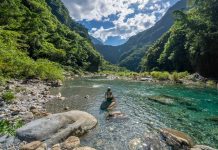
Most Scenic 5D4N Taiwan Itinerary from Taitung to Yilan — Vast Landscapes, Coastal Towns and Island Getaways

13 Land, Sky and Sea Adventures in Taiwan Most Travellers Don’t Know About
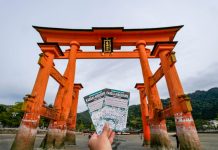
Ultimate JR Pass Singapore Guide — Step-by-Step Guide and New Updates (2024)
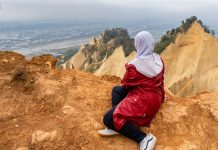
19 Unique Things to Do in Taiwan’s West Coast — Muslim-friendly Guide to Exploring Iconic Spots and Hidden Gems
26 comments.
Hi, may i know which paragliding operator did you use in Puli? Planning to try out in a few weeks time. Did you book in advance? Thanks!
Here’s the operator we used. Very professional! https://www.klook.com/activity/703-nantou-paragliding-taichung/?aid=312
Love all your useful tips. Thank you!
Hello, is it possible to travel around Taichung, Nantou, and GaoMei Wetland without renting a car? Perhaps through public transportation or cabs?
Hi Charles, you can but there are limited timings. We went with a car rental because we wanted to be at the stand up boarding place very early. No busses run at that time and we didn’t want to incur a hefty taxi charge.
Wow! What a trip you’ve got here in Taiwan.=) Though I am curious, what’s your favorite city out of all?
Love them all!
Hi dear! Do you know if we can get to Hua Lien easily from Nantou/Tai Chung? 🙂 Thank you!
Hi Audrey, I think most trains will have to go back towards Taipei area before looping over to Hua Lien due to the mountains in the centre of Taiwan. If you want to go direct, your best bet is to either self drive or take a very expensive private car/cab.
Thank you for the informative entry, I could use this next time <3 I'm also an aspiring travel blogger and I often read your blog.. Keep inspiring people like me. 🙂 Love lots! – http://www.annebelo.com
All the best!
Hi! I’ll be visiting Taiwan for 10 days somewhere around the end of November. I’m planning to go for Taipei, Taichung, Kaohsiung and Hualien. How do you think the flow should go? Should I visit from the northern side to the southern side? Or what else do you suggest? Other than that, how many days do you suggest on visiting each area I mentioned earlier (Taipei, Taichung, Kaohsiung and Hualien)? Sorry for asking so much; I’m not quite a planner. Thanks in advance.
P.S. There’ll be two of us, so I guess buses and MRT are the best options for transport since that we have a budget.
Hi Alexandra, why not follow our plan and route?
Sorry to ask, where does the kenting express bus from Zuoying to Kenting ends at?
The last stop of the Kenting Express Bus is near Little Bay Beach 小灣沙灘 of Kenting.
The Kenting Express Bus route is as follows: Zuoying HSR 高鐵左營站 → Dapeng Bay 大鵬灣 → Fangliao 臺鐵枋寮站 → Checheng 車城 → South Baoli 南保力 → Hengchun Transfer Stn 恆春轉運站 → Nanwan 南灣 → Kenting 小灣(墾丁)
Hope this helps! 🙂 -Edelyn
Hi, What camera did you use? Planning to visit Taiwan Next Year.
Hi Niko! We used various cameras during this trip, from semi-pros to GoPro to mobile phones! Taiwan is beautiful no matter which device you capture moments on. We hope you’ll have a great time in Taiwan! 🙂 -Edelyn
it so nice to see the introduction about Taiwan.
Hi i really like your itinerary in taichung. Could you advise which car rental you have engage? And anyone that drives you around to all the places?
Hi Khoon, we rented our car from Chailease Car Rental (you can make your rental online: https://www.rentalcar.com.tw/ ) and picked up the car from Taichung THSR Station. It’s just a car rental so you’ll need an international driving license to drive in Taiwan.
Alternatively, you can book a private car charter service online: https://www.klook.com/en-SG/activity/8325-private-sightseeing-car-charter-for-central-taiwan-taichung/?aid=312 Thank you!
HI, how easy it is to find parking for all those places of attractions? Like the markets etc. Thanks.
Hi Amelia, as far as we can remember, there are big open-space carparks near both Fengchia and Ruifeng night markets. The other attractions do have parking spaces nearby too, but you might have to walk around Tainan’s Anping Old Street as the alleys are tight and crowded!
Hi do you know of other operators for the stand up paddling activity in sun moon lake?
I follow your link to klook but they are unavailable for booking at all
Hi Audemars, Seems like the operator we went to is sold out for now! Here are other SUP activities around Taiwan if you don’t mind other areas other than Sun Moon Lake: Yilan Hualien 1 Hualien 2 Hualien 3 Taipei Taipei Shenao Taipei Fulong Beach Taipei Yehliu Thank you!
I am planning to Taiwan with kids in Dec. Any best itinerary for travelling with kids? What’s the accommodations would u recommend?
Hi Care! We do general itineraries that are suitable for older children to active adults. Unfortunately we don’t have any in Taiwan (so far) for young children!
LEAVE A REPLY Cancel reply
Save my name, email, and website in this browser for the next time I comment.

11 Things to do in Clark, Philippines — A Quiet Adventure...

20 Things to Eat-See-Do in Sabah’s Capital Besides Climbing Mount Kinabalu

Experience Macao Singapore Roadshow: Get Exclusive Deals, Experience the Macau Grand...

Ultimate 6-Day Adelaide Itinerary — The Best of South Australia’s Underrated...

31 New Deals and Attractions in Singapore this April 2024

- Terms Of Use
- Privacy Policy
Best Times to Visit Taiwan 2024: What to Do & Monthly Guide
Most of Taiwan has beautiful warm climate all year round. You can leave your winter coat behind but are advised to bring an umbrella.
The north part of Taiwan belongs to sub-tropical climate zone, while the south part belongs to the tropical climate zone. Winters are warm and summers are hot and wet, with typhoons and thunderstorms. Because Taiwan is a relatively small island, the ocean breezes have a cooling effect so it never feels too hot. Please note that the high alpine areas like Alishan do get cold.
The annual average temperature is a comfortable 22 °C, with lowest temperatures ranging from 12 to 17 °C (54-63 °F).
The average amount of rainfall is about 2,500 mm per year, most of which come in the form of typhoons. At least three to four typhoons hit Taiwan every year, providing much of the water supply, but also causing damage, flooding, and landslides. Generally, typhoons happen frequently from July to September.
Because Taiwan is in the tropical zone, it is subject to more rain than most other areas, but showers are short-lived and blue skies prevail on most days.
Spring: Best for Natural Scenery
Weather: Spring is from March to May. In Taipei, the average high temperatures average about 25 degrees Celsius or 78 degrees Fahrenheit.
Clothing: It generally feels warm during the day, and long-sleeve shirts are fine.
Special seasonal highlights: Hiking in Taiwan's high mountains (about 240 mountains over 3,000 meters) is an option before the summer typhoon season. You can also head down to the southern beaches to bask in the sun. You can climb Yangmingshan Hill to see the cherry blossoms.
Summer: Best for Families with School-Aged Children
Weather: Summer is from June to August. It is usually hot and humid, and there are occasional thunderstorms and typhoons. The average temperature in summer is about 30 °C (86 °F).
Things to do: Summer is a time to head for the beaches. When there are storms out at sea or after a typhoon, people can go and surf.
The Computex Taipei (Taipei International Information Technology Show) in June is a favorite tourist highlight. It is the world's second biggest IT show, and it is the largest in Asia.
Autumn: Best Season to Visit Taiwan
Weather: Autumn is from September to November. The weather is cooler but still warm and sunny, and October and November has relatively less rainfall, and it is still warm.
Special seasonal highlight: It is a fine time to head up to the mountains to see the fall foliage.
Winter: Enjoy a Mild Winter
Weather: Winter is from December to February. Winters mild and often foggy due to the northeasterly winds from Siberia.
Around Taipei , low temperatures can approach 8 °C (46 °F) at night, but there may be warm spells also.
Clothing: Prepare a coat and an umbrella. Wearing layers is a good idea.
Special seasonal highlight: The Chinese New Year usually falls in late January or early February. Streets will be colorfully decorated for the event.
Read where to travel in winter?
Popular Taiwan Tours
If you are planning a Taiwan tour, please see our popular tours below for inspiration:
- 1 Day Private Taipei City Tour with Michelin Star Lunch
- 4-Day Scenic Tour To Yilan and Hualien
- More Taiwan Tour Packages
Not interested in the above tours? You can just tell us your interests and requirements, and we will tailor-make a Taiwan tour for you.
Taiwan Climate Information by Month
- Taiwan Weather in January
- Taiwan Weather in February
- Taiwan Weather in March
- Taiwan Weather in April
- Taiwan Weather in May
- Taiwan Weather in June
- Taiwan Weather in July
- Taiwan Weather in August
- Taiwan Weather in September
- Taiwan Weather in October
- Taiwan Weather in November
- Taiwan Weather in December
Get Inspired with Some Popular Itineraries
More travel ideas and inspiration, sign up to our newsletter.
Be the first to receive exciting updates, exclusive promotions, and valuable travel tips from our team of experts.
Why China Highlights
Where can we take you today.
- Southeast Asia
- Japan, South Korea
- India, Nepal, Bhutan, and Sri lanka
- Central Asia
- Middle East
- African Safari
- Travel Agents
- Loyalty & Referral Program
- Privacy Policy
Address: Building 6, Chuangyi Business Park, 70 Qilidian Road, Guilin, Guangxi, 541004, China
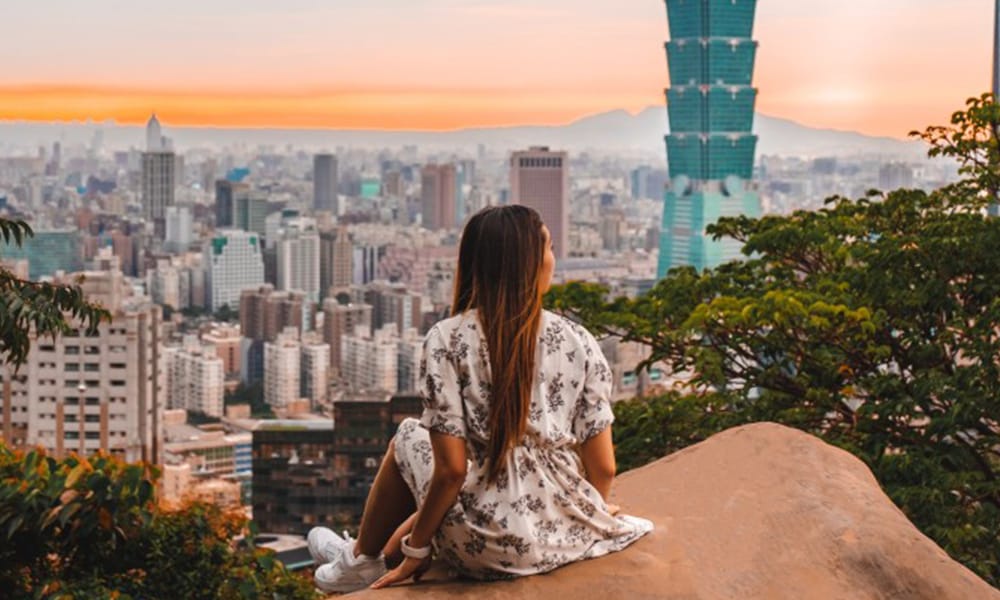
What to Wear in Taiwan
Here is your complete guide for what to wear in Taiwan. We will cover what to pack for each season, what shoes to pack and other travel essentials that you should bring along on your trip to Taiwan.
Top Taiwan style tips
- When deciding what to wear in Taiwan, our advice is to pack light.
- Pack casual, lightweight layers that aren't too revealing . Light cotton clothing that is easily washed and not too delicate is ideal.
- Taipei is very fashionable and Western fashion is very popular.
- It is perfectly acceptable to wear shorts, but keep in mind when visiting religious temples you will need to be more modest and cover up your legs.
- The local people appreciate it if you dress up when visiting restaurants and evening venues.
- You can also purchase almost any kind of clothing, although the sizes are far smaller than you may be used to in the West.
- Our advice would be to make sure you take enough underwear as even their large size is small by Western standards.
- Take your sunscreen (we love the Riemann P20 range for 10 hour protection).
- A travel umbrella is also recommended, it is perfect for protection from the rain and sun. Plus, it packs down to the size of your palm making it very easy to carry.
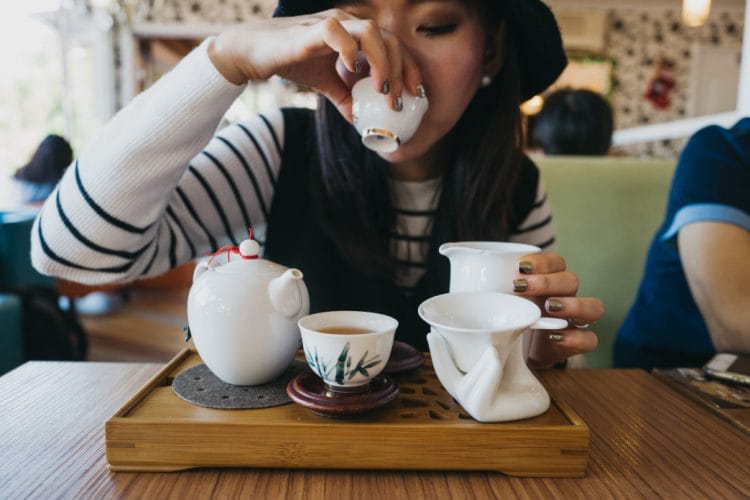
Make sure you visit some of the hip Taipei tea houses and experience the Taiwanese tea culture.
Shoes to pack for Taiwan
- Make sure you bring water-resistant and breathable footwear that can withstand the rainy and humid weather of Taiwan. Shoes in materials sensitive to water or humidity (like suede or delicate leather) should be avoided.
- A good pair of comfortable walking shoes and stylish flats are highly recommended. We love Hotter shoes , for total comfort and style.
- Ladies, save your high heels for the evenings. You will most likely be doing a lot of walking throughout the day and your feet with thank you for choosing comfortable and sturdy footwear.
- The average Taiwanese person has far smaller feet than the average Westerner, so keep this in mind if you are planning to buy shoes in Taiwan. If you wear above a size 8, bring all the shoes you think you will need as you won't easily find your size.
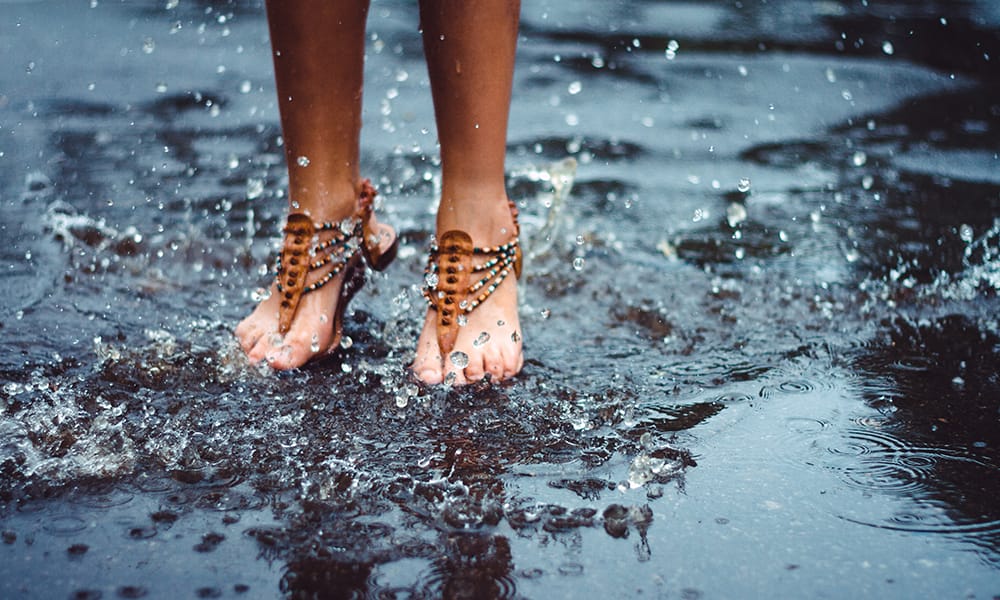
Wear shoes and sandals that can cope with rain and humidity (avoid delicate leather and suede).
Pack for the weather
- Taiwan has a tropical climate and is humid and warm all year round, although it is coolest in January, February and March, when warmer layers will be needed.
- The typhoon season is June, July, August, September and October – pack a lightweight raincoat.
- Dressing in layers will help you cope with any temperature changes.
- It is always a great idea to check the weather forecast very close to your departure date to get the latest weather predictions. This can help you add last-minute clothing items if necessary.
What to wear in Spring
March, april, and may.
- In April and early May, there is a chance of thunderstorms, particularly in the afternoons. While mid to late May usually brings the monsoon season and there will be significant rainfall. So be prepared and make sure you pack a lightweight waterproof jacket.
- Choosing a jacket that is packable and folds into a small pouch is a great idea, as you will be able to carry it with you without taking up much room.
- You could also purchase a small travel umbrella . They are only the size of your palm and don't take up a lot of room in your backpack.
- In March, you will need some layering options as the temperature can range from 59-68 degrees Fahrenheit (15-20 degrees C). Lightweight cardigans and sweaters should do the job and you can always layer them with your waterproof jacket.
- In April and May, the temperature will heat up a little and can range from 64-81 degrees Fahrenheit (18-27 C). Be sure to pack plenty of light breathable clothing in natural fibers.
What to wear in Summer
June, july, and august.
- Summer in Taiwan is normally hot, humid and rainy. On some days the heat can be harsh and sticky.
- Summer temperatures can range between 77-91 degrees Fahrenheit (25-33 degrees C). July and August usually being the hottest months of the year.
- Make sure you bring very light and breathable clothing. Focus on natural fibers like cotton, bamboo, and linen that will be much more breathable in the humid weather conditions.
- Try to choose loose-fitting clothing as it will be more breathable and comfortable in the harsh heat.
- A travel umbrella is always a good idea for Taiwan summers. It will protect you from both the harsh sun and the heavy rainfall and it is easy to pack.
What to wear in Fall
September, october, and november.
- September is still very hot and wet, with the average temperature ranging from 86-75 degrees F (30-24C). So make sure you follow the advice for the hot summer months. Natural fabrics, breathable water-resistant shoes, and a practical travel umbrella will serve you well.
- October and November cool down slightly and experience relatively less rain compared to the summer months. But overall the weather is still quite warm.
- You might like to pack some lightweight layers, like a light cotton cardigan, in case the temperature drops. This is particularly the case if you are traveling in November.
What to wear in Winter
December, january and february.
- The winter months in Taiwan are the coolest of the year, but can still be considered quite mild. Temperatures range between 55-66 degrees Fahrenheit (13-19 C).
- Ensure you bring a versatile, lightweight travel jacket. We love the SCOTTeVEST travel jacket because it has over 23 pockets, removable sleeves and RFID protection. You won't need a heavy winter coat unless you are planning to visit the mountainous regions.
- Bring plenty of lightweight layering options to prepare you for the changes in temperature.
Clothing tips for women
- Trousers are a must , since many temples will forbid entry to women wearing skirts.
- For travel at any time and anywhere a versatile pashmina will keep you warm, act as a modesty cover, or will ‘glam' up any outfit if you need it.
- The humidity can play havoc with your hair – so think about accessories or a scarf to keep it looking neat and tidy.
Clothing tips for men

- Linen is always a practical choice to combat the humid climate of Taiwan. Long-Sleeve Linen shirts are perfect to wear as they are breathable and protect from the harsh sun.
- Classic linen shorts will also serve you well. Choose neutral colors like navy, stone or beige, that will match with everything.
- If traveling in the cooler months (December, January, February and March), make sure you pack some chinos as they can be dressed up or down and will give you the added warmth if the temperature drops.
- The cooler months also call for some lightweight sweaters and a versatile travel jacket.
Taiwan travel essentials
- Now that you know what to wear in Taiwan, here are some crucial travel accessories to pack.
- The tap water in Taiwan is not safe to drink. So, make sure you avoid brushing your teeth or even swallowing tap water in the shower. Consider taking a LifeStraw Filtration Water Bottle , it will filter the tap water, making it safe to drink. Plus it will save you from constantly buying bottled water.
- A bag or soft-sided rucksack is a more practical option than hard cases when traveling around the country, and using packing cubes can help to keep your belongings tidy whilst compressing the volume too.
- Combine your main bag with a compact backpack or shoulder bag that will carry your sightseeing essentials .
- To use electrical gadgets you may need a travel adapter plug , and consider a voltage converter if your devices are not designed for the local voltage (110V) .
- Avoid paying unexpected baggage fees – use an accurate luggage scale to ensure you keep within the weight allowance. Don't forget to leave room for souvenirs on the way home! Pineapple cake is a popular buy, and you'll see various handicrafts to choose from.
Community photos of Taiwan
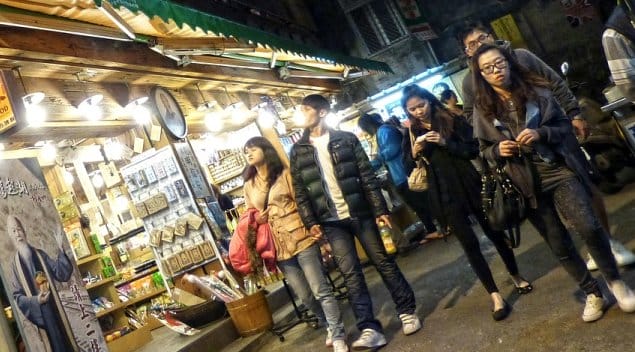
© Copyright 2019 | What To Wear On Vacation | All Rights Reserved

ALISHAN, TAIWAN: TRAVEL GUIDE with Sample Itinerary & Budget

It was supposed to be my birthday trip. Years ago, when I was planning a backpacking trip around Taiwan, I made sure that my birthday would coincide with the Alishan stop. As a guy who would totally trade a week on the beach even with just a day in the highlands, I’m always on the lookout for quaint mountain resort villages. Unfortunately, an injury cut that trip short, leaving Alishan an unticked box on my Asian bucket list.
When our team decided to cover Taiwan to create a series of travel guides this year, it came as no surprise to my teammates that I assigned myself the one place that has eluded me all these years — Alishan.
WHAT'S COVERED IN THIS GUIDE?
UNDERSTANDING ALISHAN
The name Alishan refers to a lot of things. If you look at the topographical map of Taiwan, you’ll find a cluster of mountain ranges sprawling from north to south and occupying the central and eastern regions of the island. A section of this feature’s western edge is the Alishan Mountain Range , much of which makes up the nature reserve called Alishan National Scenic Area .
The Alishan National Scenic Area is composed mainly of the northern half of Alishan Township along with a few other townships in Chiayi County including Zhuqi, Meishan, and Fanlu. Within the covered region of Alishan Township is a forest park called the Alishan National Forest Recreation Area , which is perhaps the most popular attraction within the scenic area.
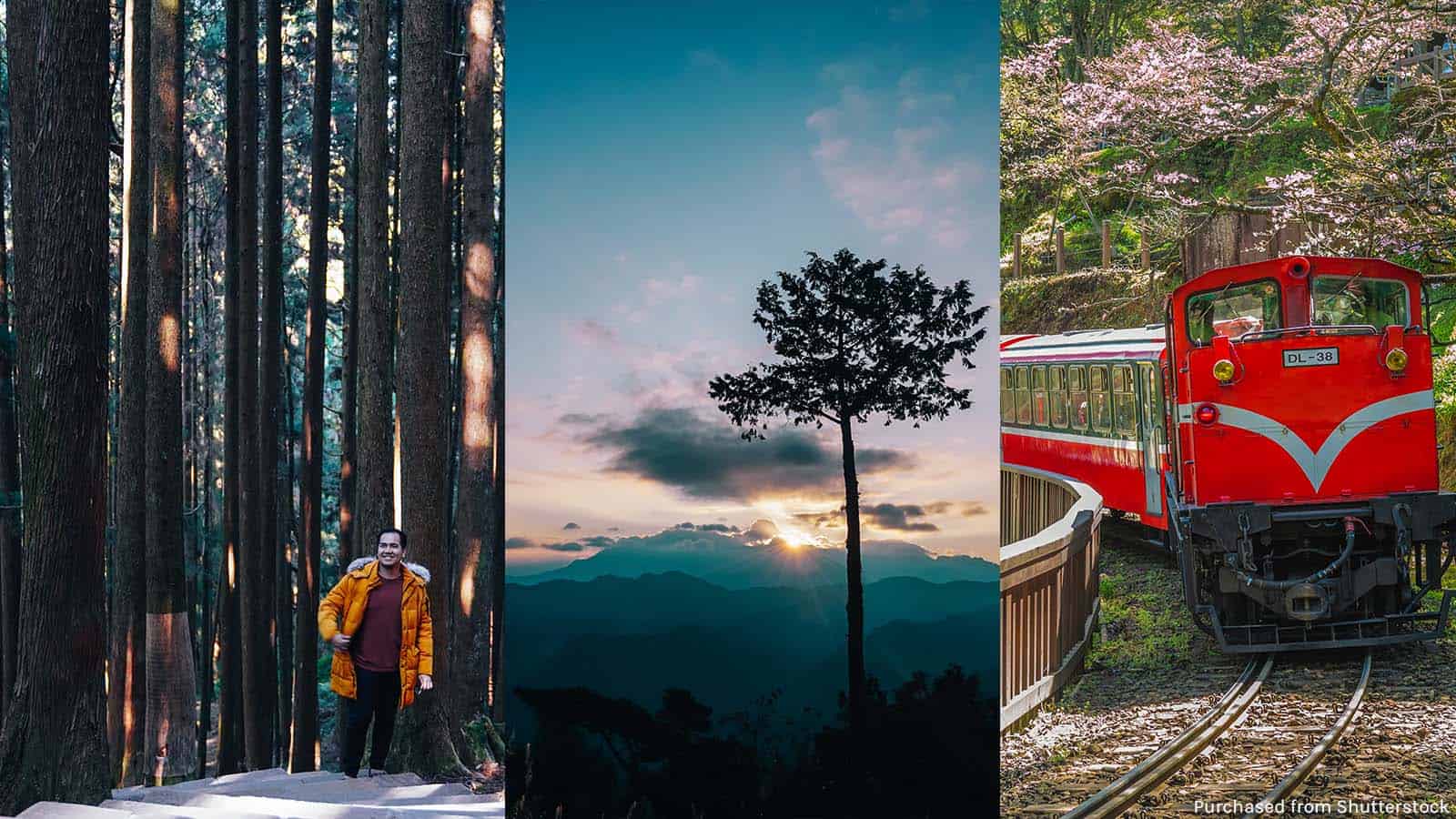
Confusing? Don’t worry, in this post, when we say Alishan per se, we’re referring only to the recreation area, unless otherwise stated.
The nearest major city is Chiayi City , which makes it the most usual jumpoff point to Alishan. Because of its elevation, Alishan enjoys a climate that is more temperate than tropical. It’s a favorite getaway even among locals who wish to cool down and relax a little.
Essential Information:
- Language: Mandarin Chinese, but Taiwanese Min-nan is also spoken. Many street signs are bilingual: written in Chinese characters with English translations.
- Time Zone: UTC+8 (Taiwan National Standard Time). Taiwan is in the same time zone as the Philippines, Singapore, and Malaysia; an hour behind Japan; and an hour ahead of Jakarta.
- Currency: New Taiwan Dollar (NT$, TWD). NT$ 100 is around USD 3.4, EUR 2.9, SGD 4.66, PHP 166.3 (as of August 2020).
- Modes of Payment: Most establishments prefer cash payment, but many of them also accept credit card transactions.
WHERE TO STAY IN ALISHAN
Best area to stay in alishan.
The Alishan National Forest Recreation Area spans 1400 hectares, but the best place to stay is definitely the main tourist hub , the area in front of the forest railway station (near the gate). From here, restaurants, shops, convenience stores, the train station, the bus station and information center are all within touching distance.
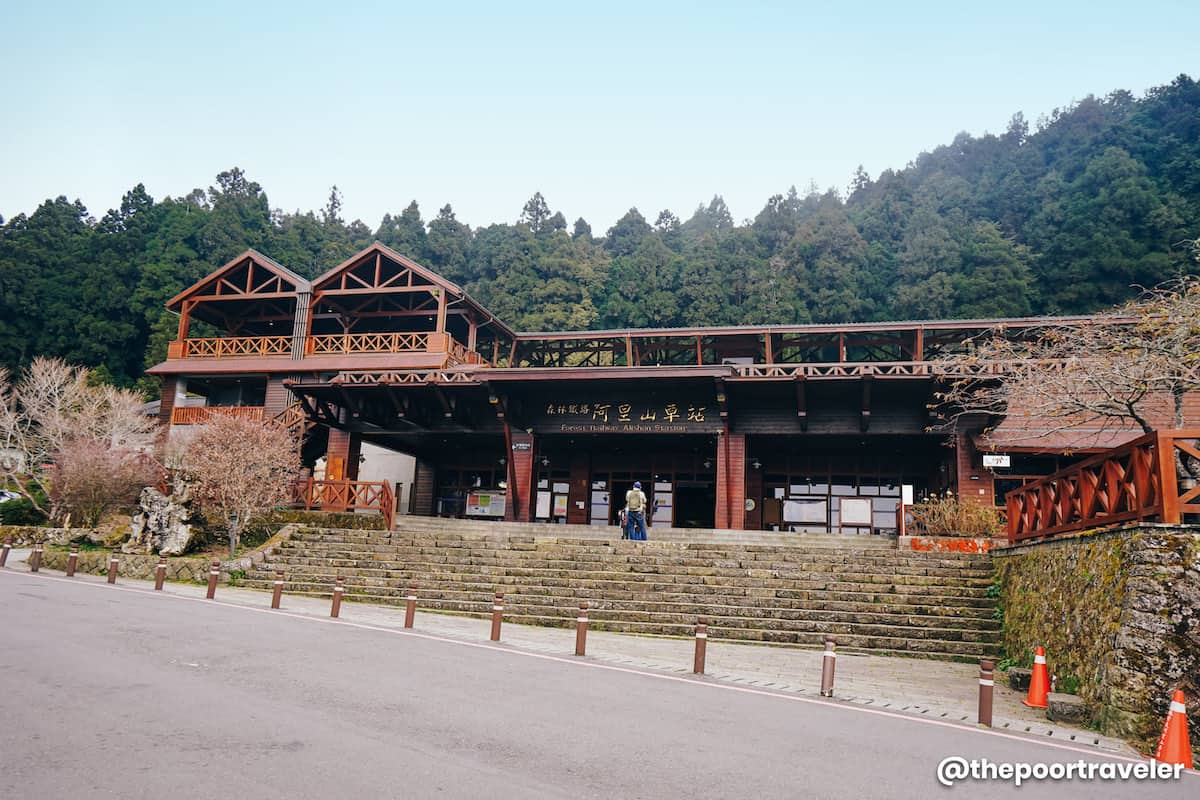
Lodging options in Alishan are quite limited. But down the hill is the Hotel Area , where you’ll find the highest concentration of accommodations including the following hotels:
- Alishan Shermuh Hotel
- Yingshan Hotel
- Wunsun Hotel
- Kaofeng Hotel
- Chingshan Villa
- Gaushanching Hotel
- Hofong Villa
- Wankou Hotel
- Dafong Hotel
- Dengshan Hotel
- Maria Hotel
Outside the main tourist area, you can also find other hotels. One of these is the Alishan House, perhaps the most well-known property in the area. If you’re after a more luxurious experience or celebrating a special occasion, this is something to consider. It’s a bit detached, but it offers transfers to and from the station.
Top Hotels in Alishan
Here are the top properties on Agoda, as scored by their customers.
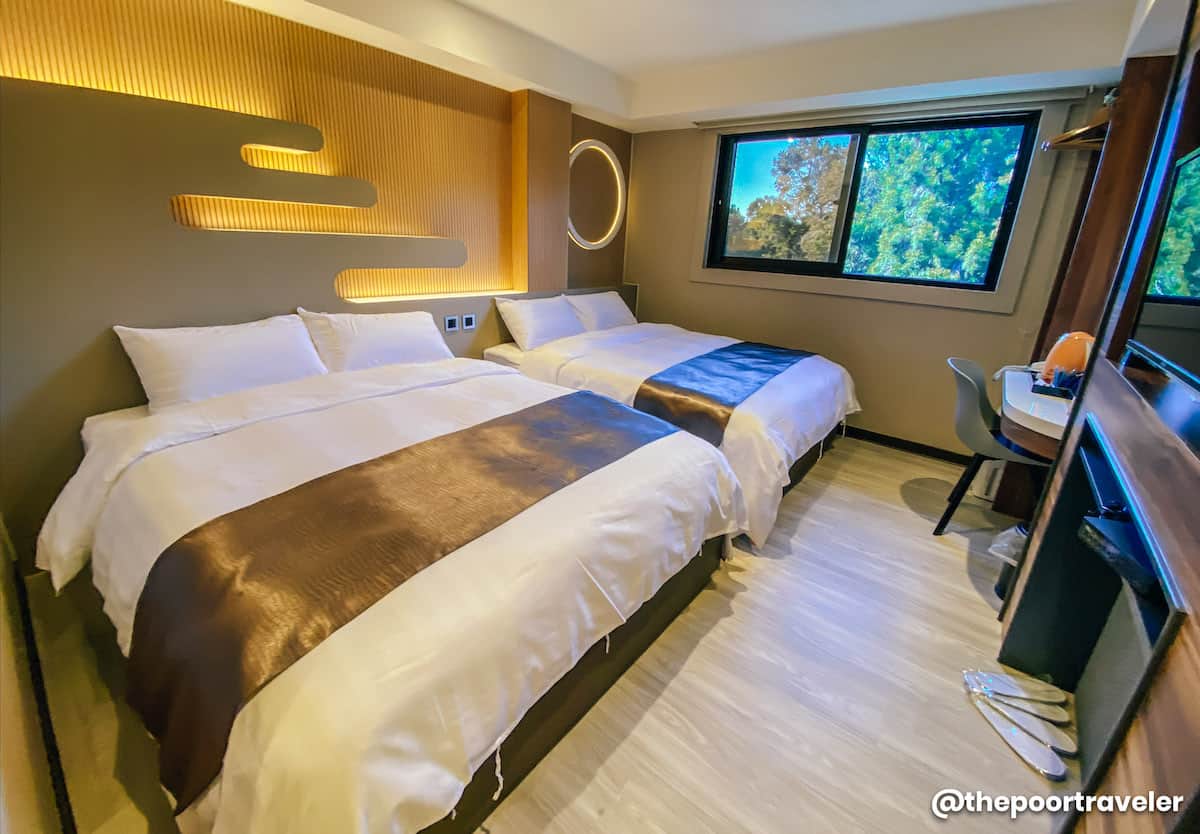
- Alishan House. Check Rates & Availability! ✅
- Alishan Shermuh Hotel. Check Rates & Availability! ✅
- Chinshan Hotel. Check Rates & Availability! ✅
- Wun Sun Hotel. Check Rates & Availability! ✅
- Ali-Shan Kaofeng Hotel. Check Rates & Availability! ✅
Things to Consider Before Booking Hotels
- Hotels in Alishan are generally much more expensive than in other parts of Taiwan most likely because of the limited options.
- The Hotel Area (at the main tourist hub) is situated downhill from the train station , so climbing back up can be a challenge if you’re not that fit. What we did: on our last day, we checked out early and deposited our bags in a locker at the train station before touring so we won’t need to go down and up again just to check out.
- Some hotels don’t have elevators , so make sure you express your preference for a lower level.
- Some hotels offer free transfers and sell sunrise tickets. Coordinate with hotel management before your trip.
- Check in time is usually between 3pm and 4pm.
- Most hotels offer free breakfast, served at a partner restaurant at the central area, a bit far from the actual hotel building. Breakfast time is usually between 7am to 9am.
POCKET WIFI RENTAL & LOCAL SIM
You can make your life easier during your trip by staying connected to the Internet. You have two options: rent a pocket wifi or purchase a local data SIM.
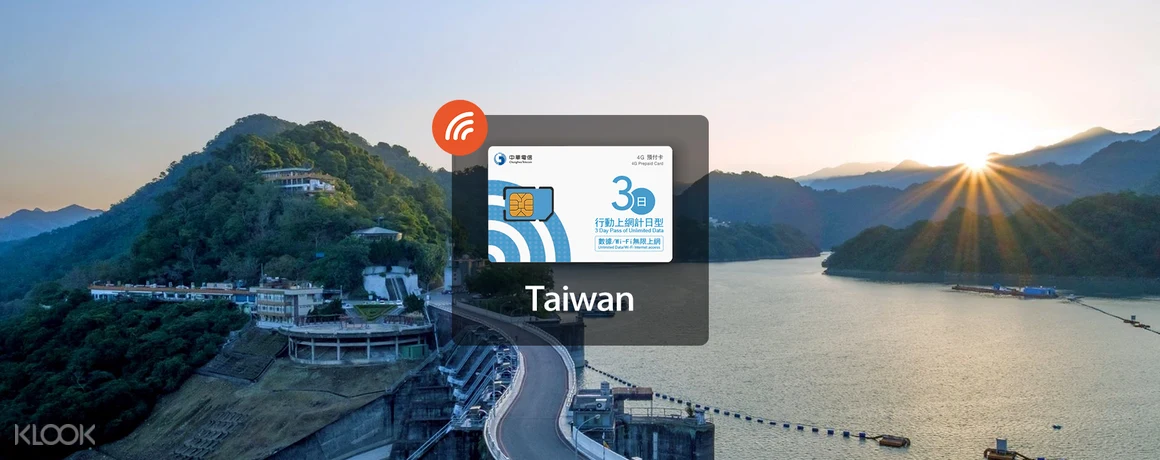
Pocket Wifi Rental is more convenient because you just need to connect to the device, which can accommodate up to 5 devices at once. Klook’s wifi rental service also provides unlimited 4G data with no decelaration to 3G.
You can also buy a 4G SIM Card that will give you unlimited data without worrying about roaming costs. This SIM card is from Chunghwa Telecom, the biggest telco in Taiwan. Available in 3, 5, 7, 10, 15, or 30-day validity.
Available units are limited so it’s best to reserve online. Whatever you choose, you can pick it up at Taiwan Taoyuan International Airport, Taipei Songshan Airport, Kaohsiung Airport or Taichung Airport when you arrive.
HOW TO GET TO ALISHAN
Because Taiwan is a small island with an efficient transportation network, it’s easy to get to Alishan from any of the major airports — Taiwan Taoyuan International Airport, Kaohsiung International Airport, and Taichung International Airport.
You can search for cheap flights here!
From any of these airports, all you need to do is make your way to the nearest TRA or THSR Station to catch a train to Chiayi City .
If Alishan is just a side trip, you can also easily reach Alishan from Taipei, Taichung, or Kaohsiung. Just proceed to the a TRA or THSR Station and board a train to Chiayi City.
We’ll create a separate, more detailed post about getting to Chiayi from other parts of Taiwan.
Chiayi to Alishan
The best way to reach Alishan is by taking the train from Chiayi City. It’s not the fastest option, but this route will allow you to experience the Alishan Express , a vintage train widely regarded as one of the wonders of Alishan.
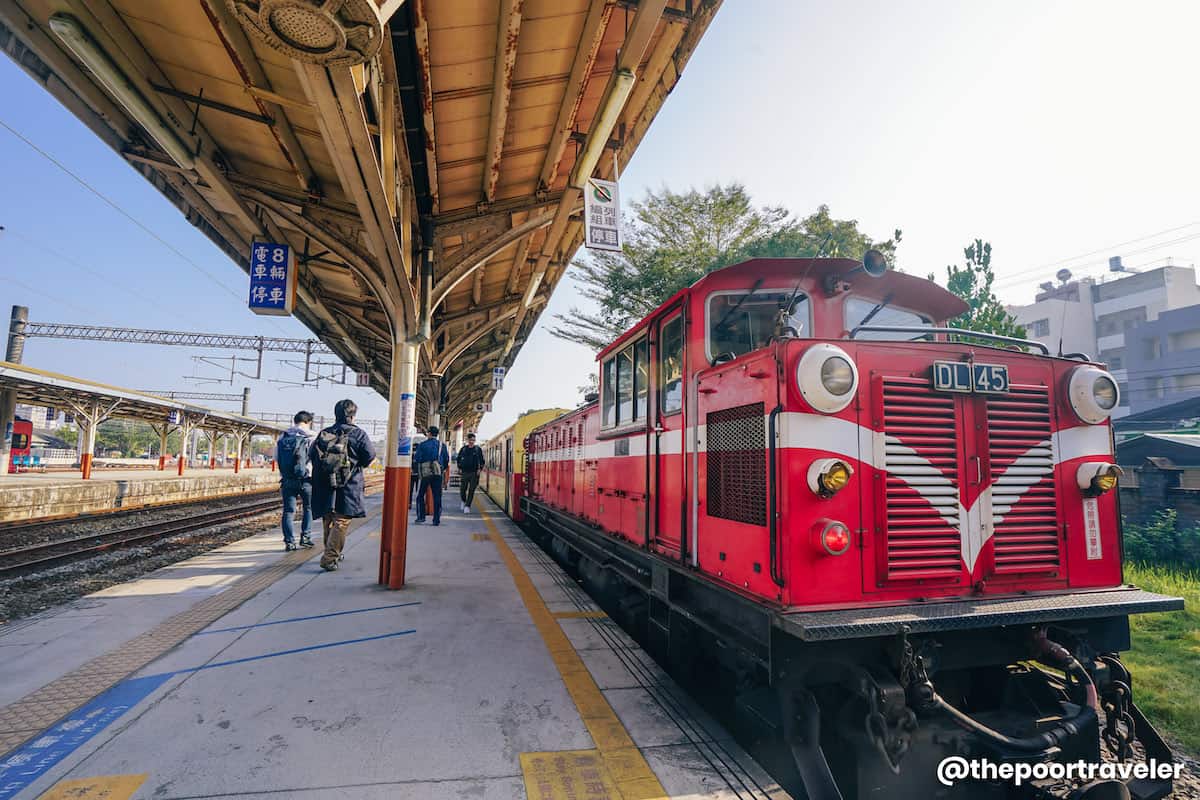
Alishan Express departs from Chiayi TRA Station (TRA, not THSR). If you’re arriving at THSR, you can simply catch a shuttle bus from Chiayi THSR Station to TRA Station.
Note that, as of now, Alishan Express doesn’t go directly to Alishan because the far end of the rails were damaged by typhoons and have yet to be repaired. Hence, you need to transfer to a bus when you reach Fenqihu Station .
Here’s how to get to Alishan from Chiayi.
- Book a train ticket to Fenqihu Station online. Fare: TWD 384, adult; TWD 192, child. Alishan Express makes only one trip on weekdays (scheduled at 9am) and two on weekends and holidays (9am and 9:30am), which means limited seats. It’s best to reserve online. We have a step-by-step guide here: How to book Alishan train tickets online!
- Claim your reserved tickets at Chiayi TRA Station. Note that it’s TRA Station, NOT THSR. Find the Alishan Express ticket window in front of the station, present your reservation number and the passport you used to book, and get your train tickets.
- Board the train. The platform is located at the far end of the first platform (if you’re facing the rails), past the Police Station. Travel time: 2 hours, 21 minutes.
- Alight at Fenqihu Station. You’ll arrive at around 11:30am, in time for lunch. While waiting for the bus, you can try Fenqihu’s well-known bento boxes. Several restaurants offer this meal, but the most popular is served by Fenchihu Hotel (Price: NT$ 160-180).
- Catch the bus to Alishan. The bus stop is on the other side of the railway (not on the side of the station and old street). There are only three buses scheduled at 11:30am, 12:50pm, 2:00pm. Travel time: 1 hour. Fare: NT$ TWD 98 (adult), TWD 49 (concession, child).
- Pay the entrance fee. At the Alishan Bus Terminal building, where you will be dropped off, find the ticket machines. Admission rate is NT$ 150.
- Drop by Alishan Train Station. Once you have the ticket, enter the park through the massive gate. Around 200 meters from the gate is the Alishan Train Station, where you can purchase tickets for tomorrow’s sunrise train journey.
If you’re staying at the Hotel Area, you can simply walk. From the train station, cross the road and go down the staircase. Cross the parking lot and you’ll find a small alley with another flight of stairs. Climb down and you’ll reach the Hotel Area.
If your hotel offers free transfer, you may be picked up here at the train station.
If you need more information about how to Alishan, we have a step-by-step guide here: CHIAYI TO ALISHAN!
HOW TO GET AROUND ALISHAN
Before that, let me explain something quickly. Within the Alishan National Forest Recreation Area are four main areas:
- Main tourist hub , the area surrounding Alishan Train Station and directly after the primary gate. This is where most hotels, restaurants and shops are located.
- Chushan , also spelled Zhushan, where you can catch the famous Alishan sunrise.
- Chaoping , also spelled Zhaoping, where you’ll find the Zhaoping Park (Cherry Blossoms trail) and the Sister Pond.
- Sacred Tree area, which is scribbled with walking trails that will lead you to the Shouzhen Temple, the Shun Bao Fu De Temple, the Three Generations Tree, the Big Tree, and of course, the Sacred Tree.
All these areas are connected by the scenic Alishan Forest Railway , with Alishan Station as the central point. You can simply ride the train to get from one station to another. Fare to and from Chaoping, Sacred Tree or Alishan Station is NT$ 100. Fare to or from Chushan is NT$ 150.
However, the more recommended option is by hiking. Every train stations is only 30 minutes to 1 hour on foot from the next station. The walking trails will take you to the points of interest in the area. It’s an easy hike, if you have no issues physically.
This map is a simplified illustration of the journeys, whether by train or by foot.
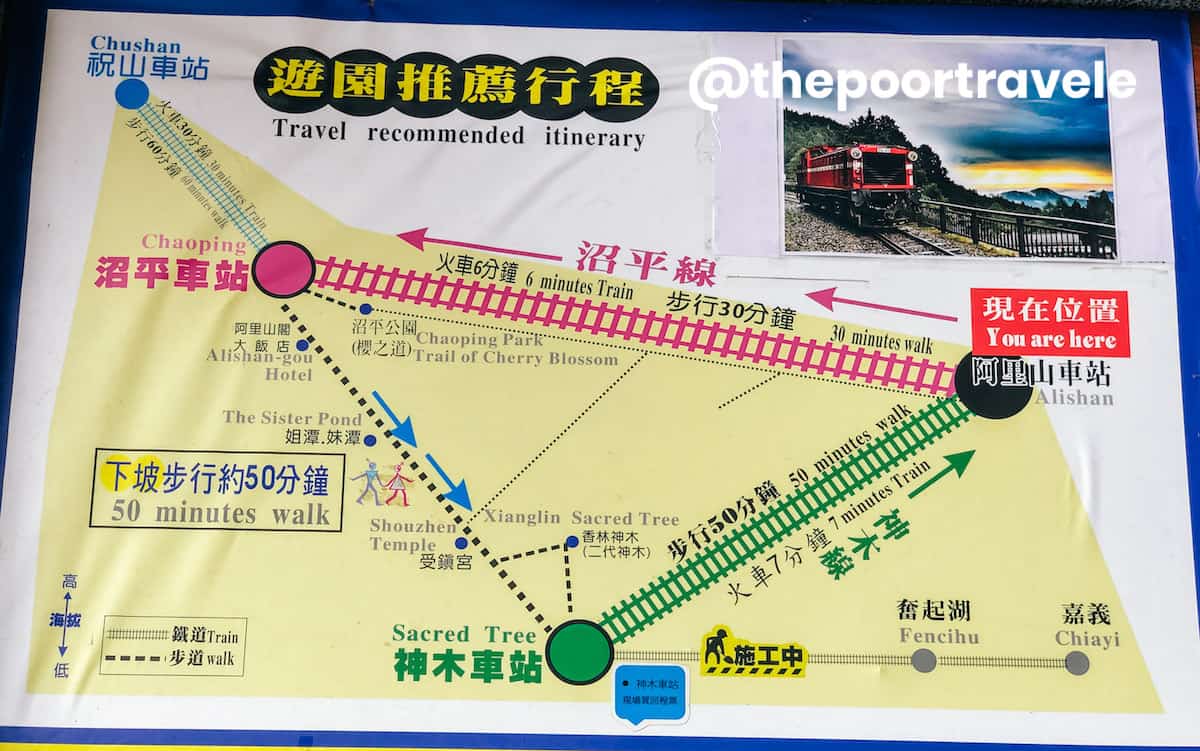
Our recommended route is this: First, take the train from Alishan to Chushan to catch the sunrise (since it may be too dark or too cold for an early morning walk). After dawn, they hop back into the train to Chaoping Station and walk all the way to Sacred Tree Station, stopping at key attractions along the way. Then, they catch another train back to Alishan.
THINGS TO DO IN ALISHAN
Chushan sunrise.
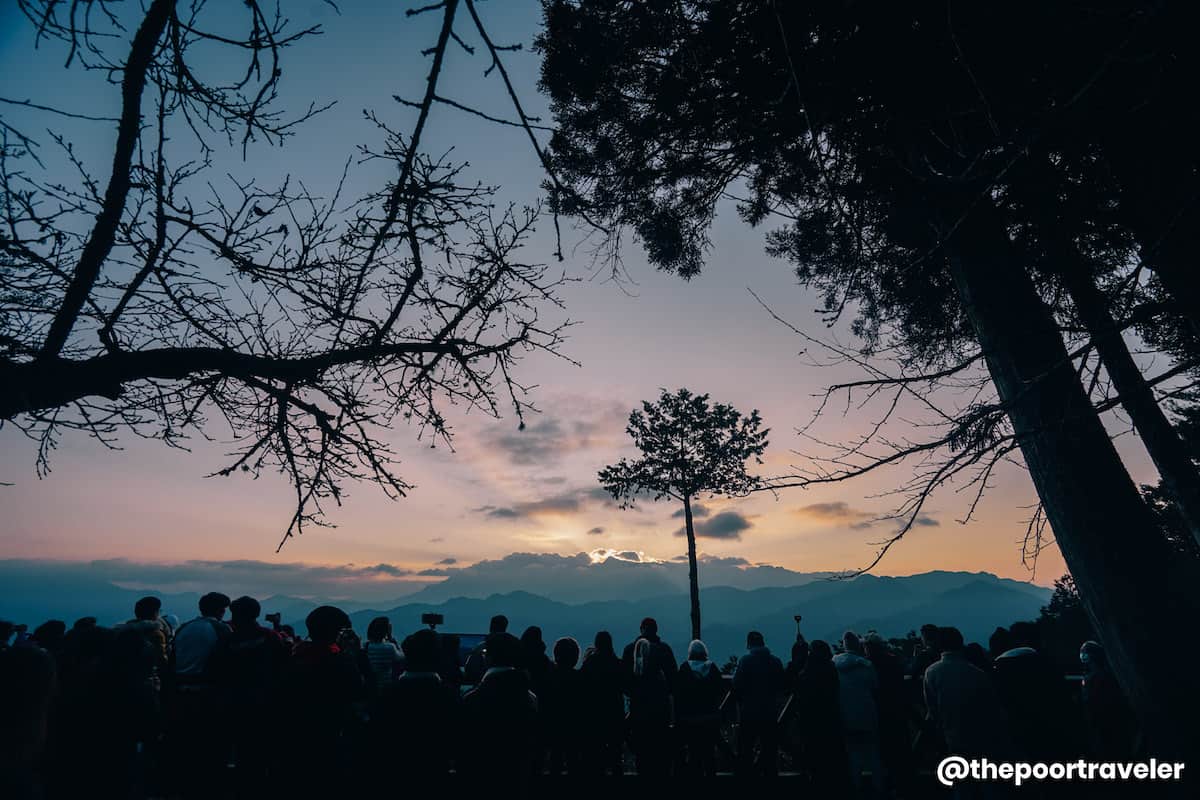
Perhaps the most popular attraction in Alishan. Hundreds of people watch the day break from a viewing platform in Chushan. It’s easy to be mesmerized by the first light of day seeping through the mountains above a sea of clouds.
Skipping hotel breakfast? You can grab a quick bite from the lane of food stalls at the viewing area. Local favorites like tea eggs to western staples like French toast are available.
How to get to Chushan: At Alishan Station, take the train to Chushan Station. One-way fare: NT$ 150 (adult), NT$ 75 (concession).
IMPORTANT! Purchase a ticket the afternoon before (1pm to 4:30pm). Because the sunrise time varies every day, the departure time of the Chushan train changes with it too. The final schedule is posted at the station and is shared with hotel receptions in the late afternoon. You can simply ask your hotel’s reception staff for the departure time and arrange a wakeup call for good measure.
On the day of sunrise viewing, wake up early and proceed to the Alishan Station. The train can get packed so to make sure you get seated, arrive at least 30 minutes ahead of time.
Chaoping Trails
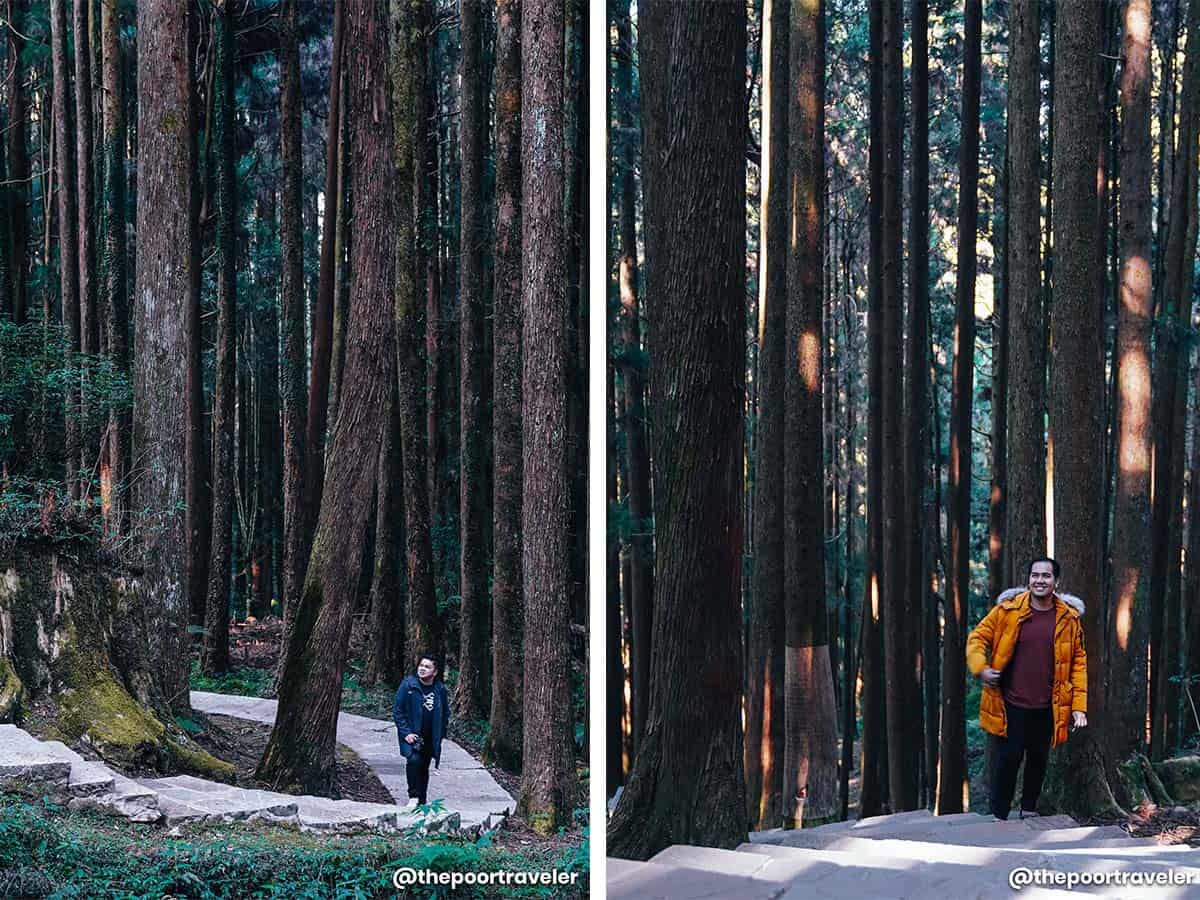
After sunrise viewing, head back to the station and catch the train to Chaoping. Upon exiting the station, you’ll be greeted by the Chaoping Park , next to the plum garden. From here, you can take one of the many walking trails that cut across the area including the following:
- Chaoping Skywalk Trail
- Alishan Sakura Trail (cherry blossoms!), if your timing is right
- Poetry Trail
But most visitors follow the main forest trail that leads to the Sacred Tree . Along the way, you’ll be passing by the Sister Pond , the Magnolia Garden, the Alishan Shouzhen Temple, and other picturesque spots.
How to get to Chaoping: From Chushan Station or Alishan Station, take the train to Chaoping Station. Fare from Chushan is NT$ 150, from Alishan NT$100.
Sacred Tree Trails and Boardwalks
Another place that is perfect for a leisurely walk in the forest is the Sacred Tree area, named after a giant red cypress tree that has been revered by the Tsou people. At over 50 meters, it was the tallest tree in the area for the longest time. However, in 1998, a lighting strike burned it, pushing the Forestry Bureau to lay it on the ground.
In 2007, the authorities launched a voting campaign about which tree should be hailed the next sacred tree. The giant tree that received the most votes is now called Alishan Sianglin Sacred Tree.
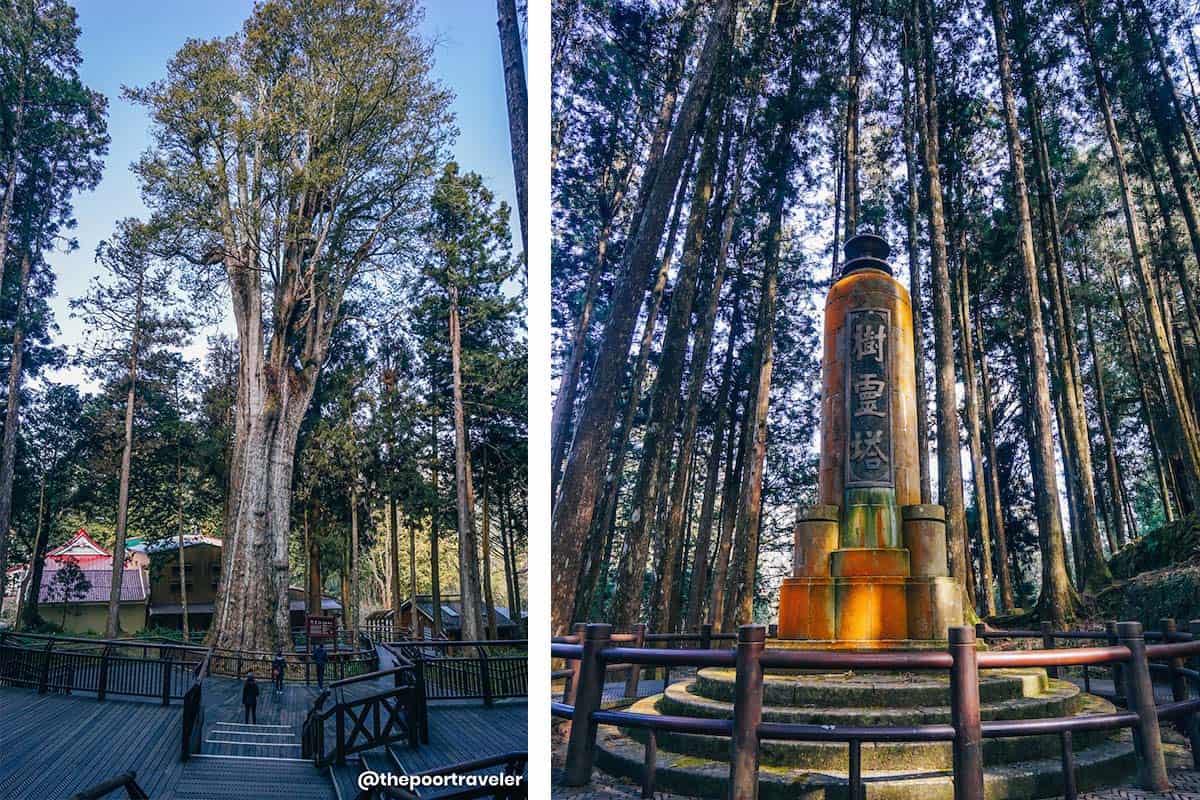
Aside from the Sacred Tree, several curious attractions are scattered along various hiking trails and boardwalks like the following:
- Three-generation tree
- Shun Bao Fu De Temple
- Scented Wood Bridge
- Elephant Trunk Tree
- Pagoda of the Tree Spirit
- Shenyi Bridge
How to get here to the Sacred Tree: The nearest station is Sacred Tree Station. From Alishan, fare is NT$ 100.
Other Places to Visit in Alishan
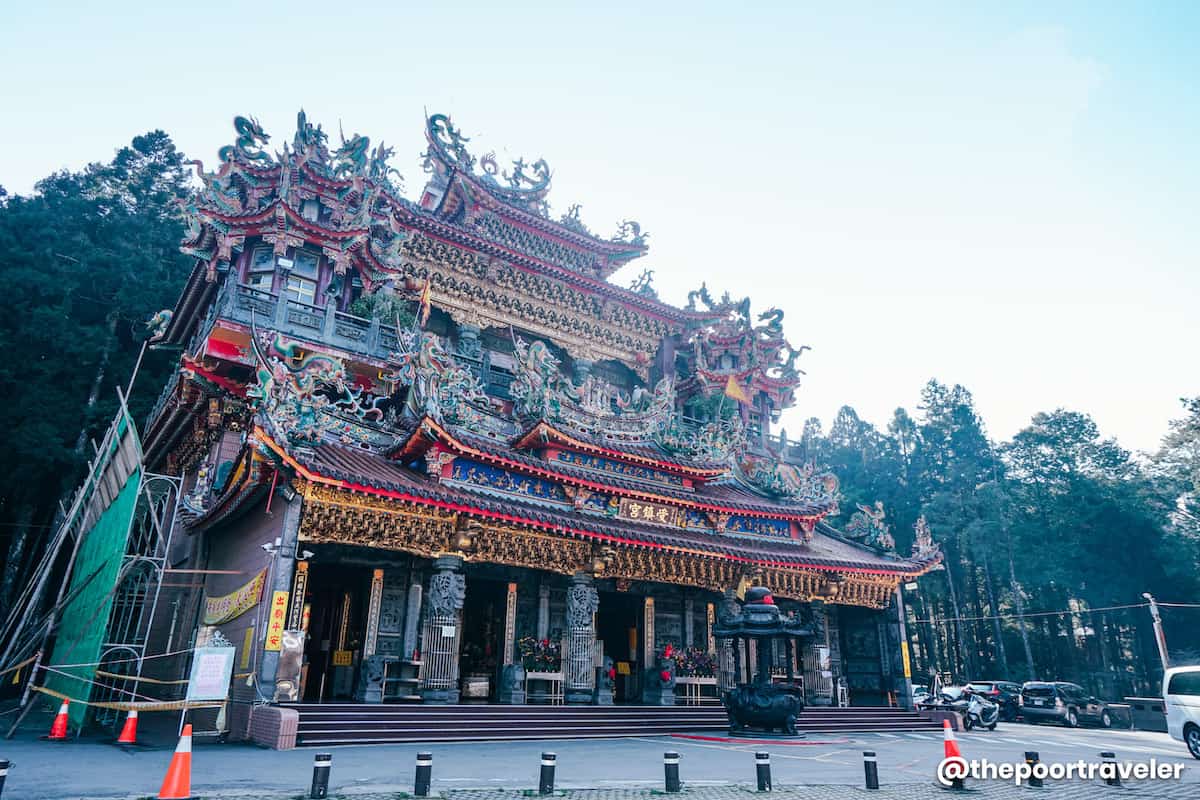
We’ll create a more detailed post about this soon. In the meantime, here’s a list of other attractions you might want to check out.
- Alishan Shouzhen Temple , which stands in between Chaoping and Sacred Tree areas. At 2150 meters, it is the highest temple in Taiwan. It was built as protection for lumbermen from bad fortune in the forest.
- Ciyun Temple , an ideal spot for watching sea of clouds and sunset. Close to Sacred Tree Station.
- Alishan Museum , built in 1935 and renovated in 2007, it showcases the forests, culture, and history of Alishan.
For more details about the activities above and more options, visit this dedicated page: THINGS TO DO IN ALISHAN!
SAMPLE ALISHAN ITINERARY
Below is a sample overnight Alishan itinerary with budget breakdown. Because Alishan is often just a side trip for visitors touring other parts of Taiwan — Taipei, Taichung, Kaohsiung — I’ll start this itinerary from the arrival at Chiayi TRA Train Station . How you get there is up to you, but make sure you reach Chiayi before 8:30 am in time for the 9am Alishan Express train.
This way, you can easily insert this side trip itinerary to your grander Taiwan itinerary.
Please note that the actual sunrise and sunset times vary according to the date of your visit. The itinerary below is just an example to serve as your guide. Feel free to make necessary adjustments to match the actual sunset and sunrise schedules when you visit, your bigger Taiwan plan, and your preferences.
Prices below are in New Taiwan dollars (NT$, TWD).
DAY 1 – ARRIVAL 08:00 am – Arrival at Chiayi TRA Station 08:15 am – Get Alishan Express tickets, $384 09:00 am – Board Alishan Express 11:21 am – Arrival at Fenqihu Station 11:40 am – Bento box lunch, $180 12:10 am – Walk around old street 12:50 am – Board bus to Alishan 02:00 pm – Buy Alishan entrance ticket, $150 02:30 pm – Buy Chushan train ticket, $150 02:40 pm – Walk to hotel 03:00 pm – Hotel checkin, freshen up 05:00 pm – Walk around, chill 06:00 pm – Watch sunset (time varies) 06:30 pm – Dinner, $200 08:00 pm – Back to hotel, sleep
DAY 2 – SUNRISE & FOREST TRAILS 04:00 am – Wake up call, early check out 04:30 am – Queue at train station 05:00 am – Train to Chushan 05:50 am – Chushan Sunrise (actual time varies) 07:00 am – Quick breakfast, $100 07:20 am – Train to Chaoping, $150 08:00 am – Start trek to Sacred Tree, explore 11:50 am – Sacred tree train to Alishan, $100 12:00 nn – Lunch, $200 01:40 pm – Direct bus to Chiayi, $240 03:40 pm – Arrival in Chiayi, catch train to your next city
If you follow the above itinerary, prepare to shell out at least NT$ 1900 (USD 64.6, EUR 55, SGD 88.8, PHP 3160) excluding accommodations.
To cover possible miscellaneous expenses, possible price movements, and other costs we might have missed, add plenty of allowance so you don’t run short of cash while you’re there.
MORE TIPS FOR THE POOR TRAVELER
- Build your itinerary according to the sunrise time. The sunrise is the biggest and most popular Alishan wonder, so it would be a shame to miss it.
- Consider skipping hotel breakfast. Hotels in Alishan offer free breakfast, served from 7am-9am. Many guests return to the tourist hub for breakfast after watching the sunrise and then head back to Chaoping or Sacred Tree to hike. Because I also treat time as currency, I decided to skip breakfast and go straight to the forest trails after sunrise. The forest feels more magical and less crowded in the early morning than towards noon. Also, I’m not a breakfast person so skipping it is natural for me. But if you are, you can grab a quick bite at one of the stalls at the sunrise viewing deck.
- Tight food budget? Visit 7-Eleven for cheap meals. We spotted two 7-Eleven stores in the area and they have ready-to-eat and microwavable items that are affordable and filling. But if you’re pretty loaded with cash, go ahead and dine at one of the restaurants!
- Check the weather before the trip. Most of the attractions in Alishan are in the great outdoors. Best to be prepared for the rain or the cold.
FREQUENTLY ASKED QUESTIONS ABOUT ALISHAN
How to book alishan express train tickets.
We created a separate step-by-step guide right here: HOW TO BOOK TRAIN TO ALISHAN!
Are there lockers at Chiayi Station?
YES, you can find it next to the Family Mart convenience store. Rate is TWD 50 per 3 hours .
If you have heavy luggage but you’re only staying overnight in Alishan, you might want to consider leaving your bags at the Baggage Room at the leftmost end of the terminal (if you’re facing the rails). Fee is TWD 70 per bag per 24 hours .
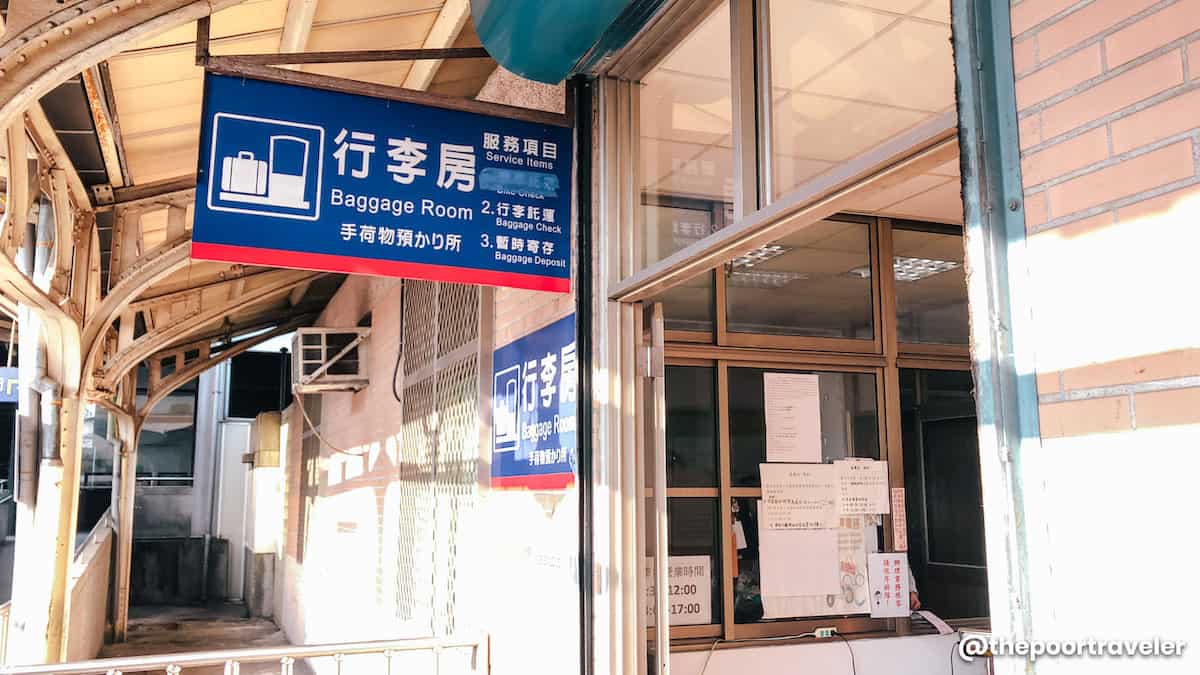
But make sure that it’ll be open when it’s time to claim your bags. Operating hours are from 8:30am-12pm, 1pm-5pm . Otherwise, you may use the more expensive lockers, tucked near Family Mart.
Are there lockers at Fenqihu Station?
YES. There are 48 lockers available at Fenqihu Station.
Rate is TWD 50 per 3 hours .
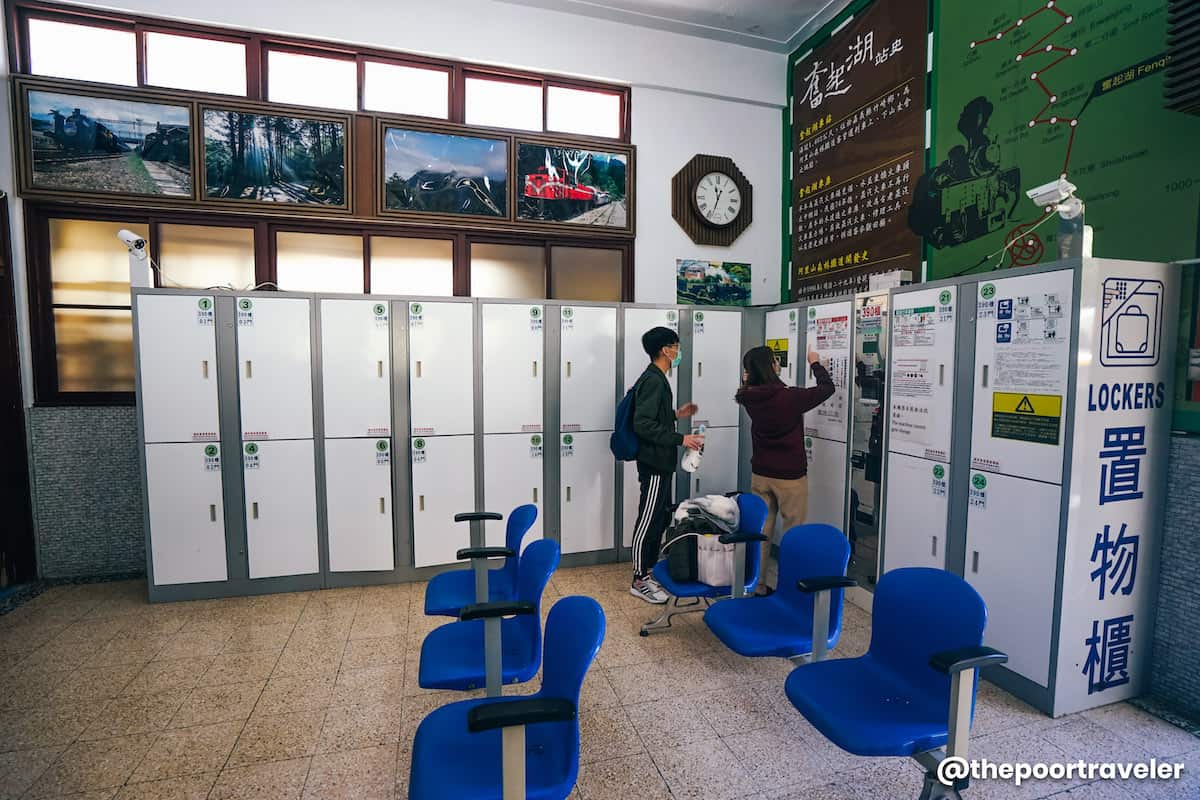
Are there lockers at Alishan Station?
Yes, you’ll find them on the upper floor facing the platforms.
Rate is TWD 50 per 3 hours . Make sure you have coins.
Should I tip in Taiwan?
Tipping is not expected in Alishan or Taiwan in general. Some restaurants add a 10% service charge to your bill.
Is Alishan safe for tourists?
Yes, it is generally safe in Alishan. But as in any other destination, be mindful of your surroundings and keep an eye on your belongings. Make sure you’re prepared for the cold or the rain. And don’t leave the designated walking trails!
Memorize these local service numbers in case of emergency:
Police : 110 Ambulance : 119
What power plug type is used in Alishan?
110V, 60Hz. Type A sockets are most common. Plugs have two flat pins.

2020 • 8 • 12
More Tips on YouTube ⬇️⬇️⬇️
Is this post helpful to you?

Related Posts:
- TAIPEI TAIWAN TRAVEL GUIDE with Budget Itinerary
- SUPERSTAR VIRGO: Cruise Guide for First-Timers (What to Expect)
- HUALIEN TAIWAN Travel Guide with Budget Itinerary
- TAROKO GORGE TRAVEL GUIDE: Bus Passes, Tours, Things to Do
- How to Book ALISHAN EXPRESS TRAIN TICKETS Online (Alishan Forest Railway)
- CHIAYI TO ALISHAN by Alishan Express Train & Bus: Schedule & Fare
- ALISHAN TO CHIAYI by DIRECT BUS & TRAIN: Schedule & Fares
- ALISHAN ITINERARY: 12 Best Things to Do & Places to Visit

- Recent Posts
- 2024 Resorts World One HONG KONG CRUISE Guide for First Timers - 13 April 2024
- FLIGHT RESERVATION for VISA • How to Get Dummy Ticket for Schengen, Canada, China and Other Visa Applications - 22 March 2024
- 2024 Cebu Pacific Promos & PISO SALE with List of Covered Destinations - 4 March 2024
Hi Vinz and Yosh, may I know the link from Taichung to Chiayi station pls? Did you ride thsr or tra? What is the estimate travel time too. Thanks!
Hi Val! Take TRA so you won’t need to switch stations sa Chiayi. We have more detailed instructions here: https://www.thepoortraveler.net/chiayi-to-alishan-train-bus/
Thanks for sharing this. It’s very useful.
Hello. Just got confused on the part where after blarding bus in fenqihu… we can then catch a bus to alishan. Is that free?
Also once in alishan, if i want to buy train ticket only for the sacred tree is that a 2 way ticket? How do i go back to alishan main entrance?
Hi Aileen, nope, bus from Fenqihu to Alishan is around NTD 100.
If I remember correctly, train ticket to Sacred Tree Stn is one-way. You’ll need to purchase another ticket to get back.
Featured On

We heard you!
Your comment is now queued for moderation! We’ll try to get back to you soonest. While waiting, follow us on these channels.
Subscribe on Youtube! Follow us on Instagram!

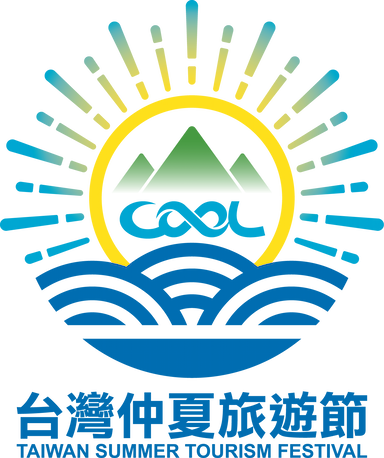
Link Activity
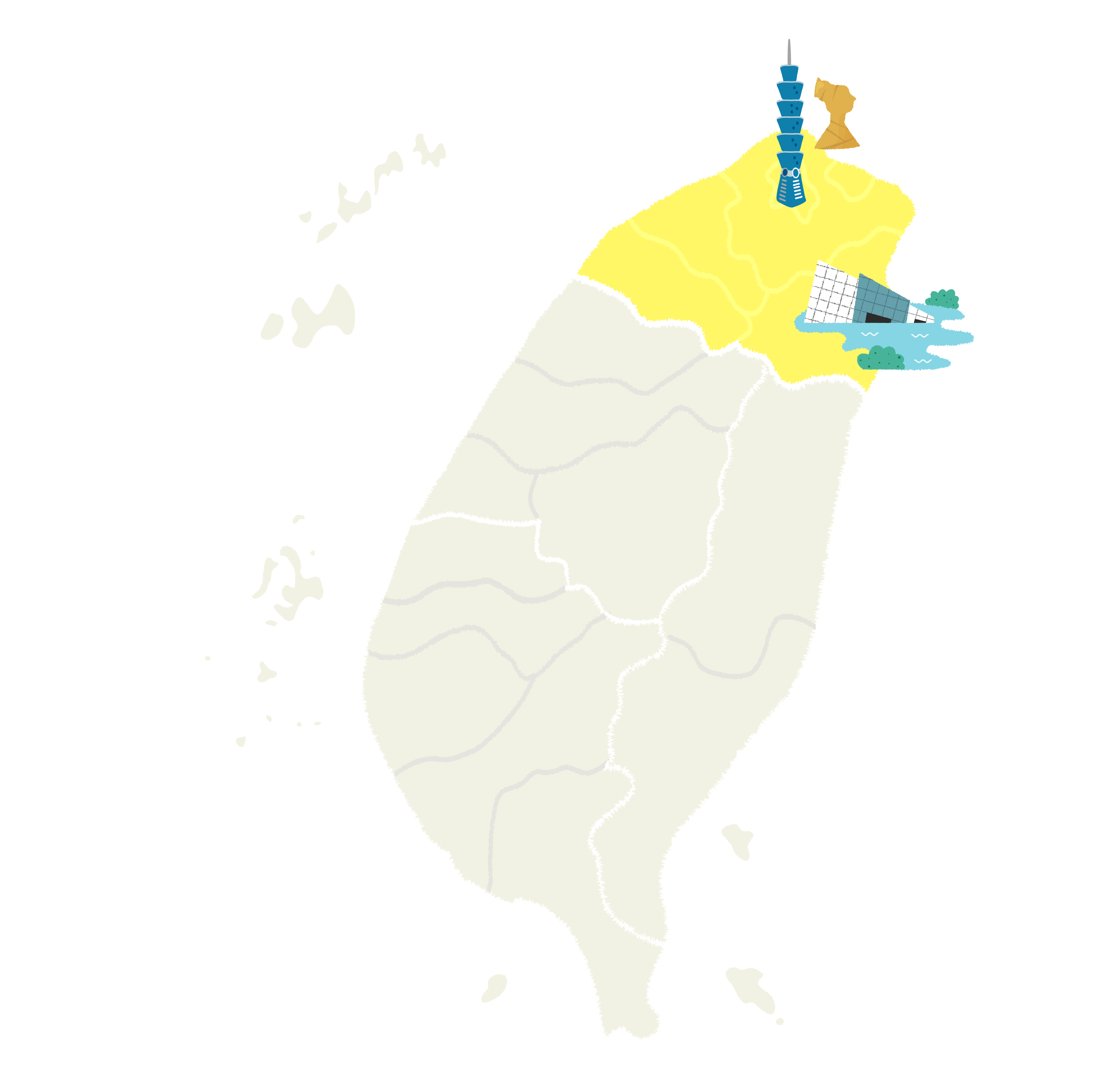
- 2023 Northeast Coast Fulong Life Festival
- 2023 Dadaocheng Summer Festival
- International Children's Folklore & Folkgame Festival, Yilan
- Sea You There
- New Taipei City River and Ocean Music Festival—Tamsui Fisherman Stage
- 2023 HAKKA EXPO
- Zhubei City Office Cultural Tourism Section, Hsinchu County
- 2023 Hsinchu City International Kite Festival
Main Activity
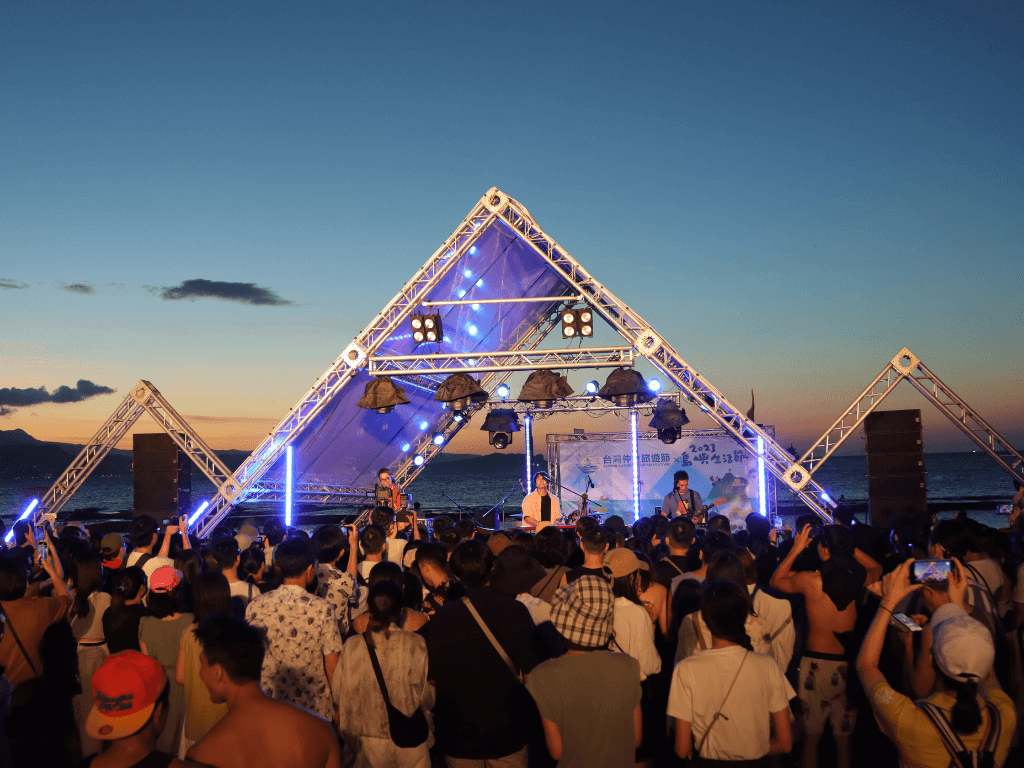
SEA you there
Have fun in maolin..
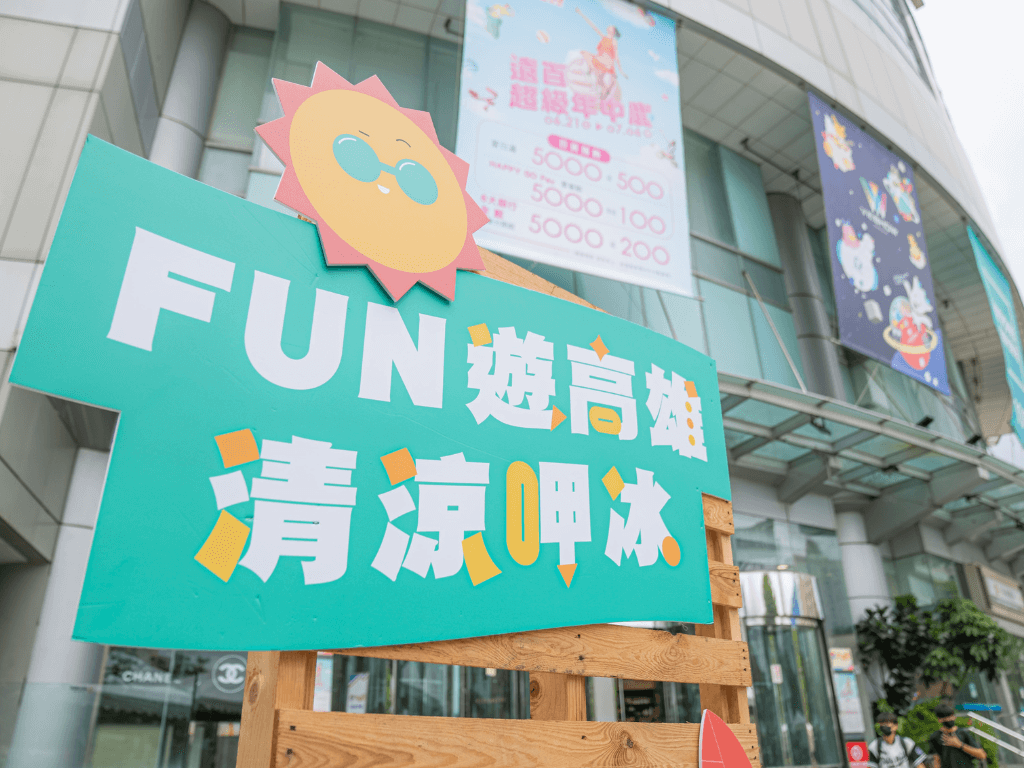
Alishan Tea Festival In Four Seasons—Summer Tea Festival
Taiwan east coast land arts festival & moonlight sea concert.
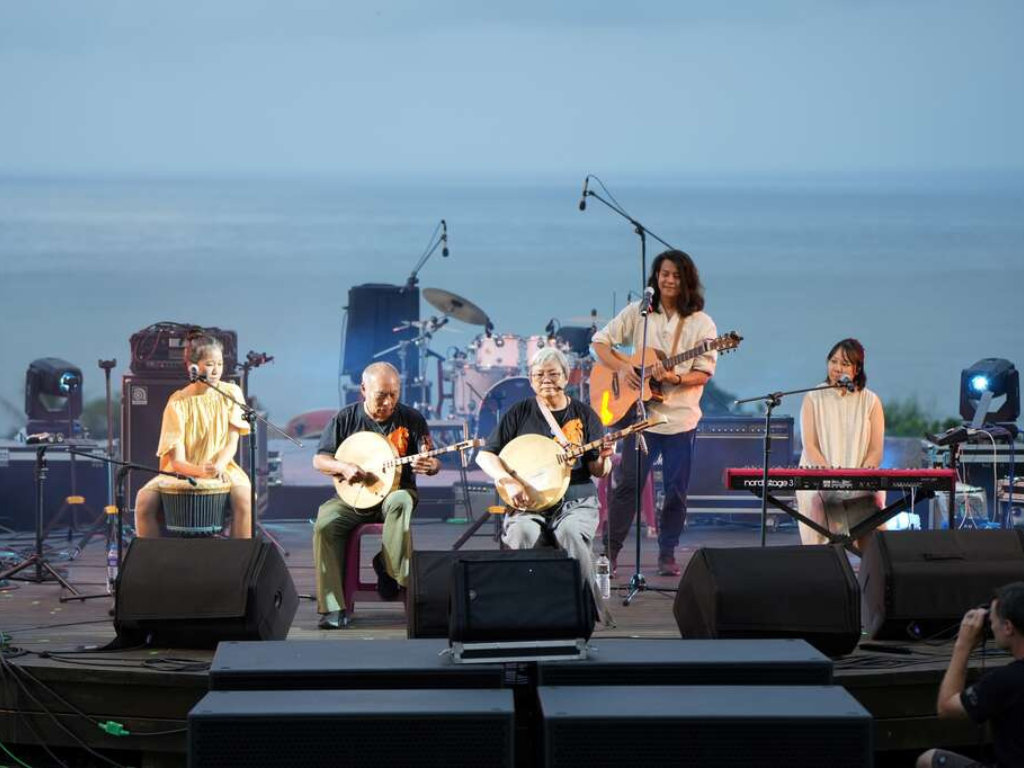
2023 Taiwan Midsummer Travel Festival: Midsummer Tour Project
Midsummer is a celebration of the summer solstice, and is an important holiday in Northern Europe. Since 2014, Taiwan has begun to promote summer tourism activities, from the 'Taiwan Summer Solstice 235' in 2014 to the 'Treasure Island Midsummer Festival' in 2019, the characteristics of summer tourism in Taiwan have gradually received attention.
In response to the changes in the concept and consumption habits of tourists after the epidemic, the Tourism Administration continues to promote the purpose of midsummer tourism, reorganize summer tourism resources across Taiwan, reshape the event brand as [Taiwan Midsummer Tourism Festival], and this year's event takes 'refreshing', 'summer heat', 'cooling products' as the event axis, and integrates more than 35 summer special tourism activities in Taiwan's 13 national scenic areas and 22 counties and cities, and cross-industry alliance cooperation.
2023 Taiwan Midsummer Tourism Festival: Midsummer Tour Program
The 2023 Taiwan Midsummer Travel Festival presents the special Midsummer Tour Bus that will travel across the northern, central, southern, and eastern regions of Taiwan. It is divided into sections highlighting refreshing coolness and cool products to promote. It connects various features such as family, music, ocean, cool food, art, and tourism, creating a unique impression of Taiwan's midsummer.
We select representative events characteristic of summer or those attracting crowds. Alongside these events, we create a unique midsummer activity zone to stimulate local industry development, ensuring surprises at every stop!
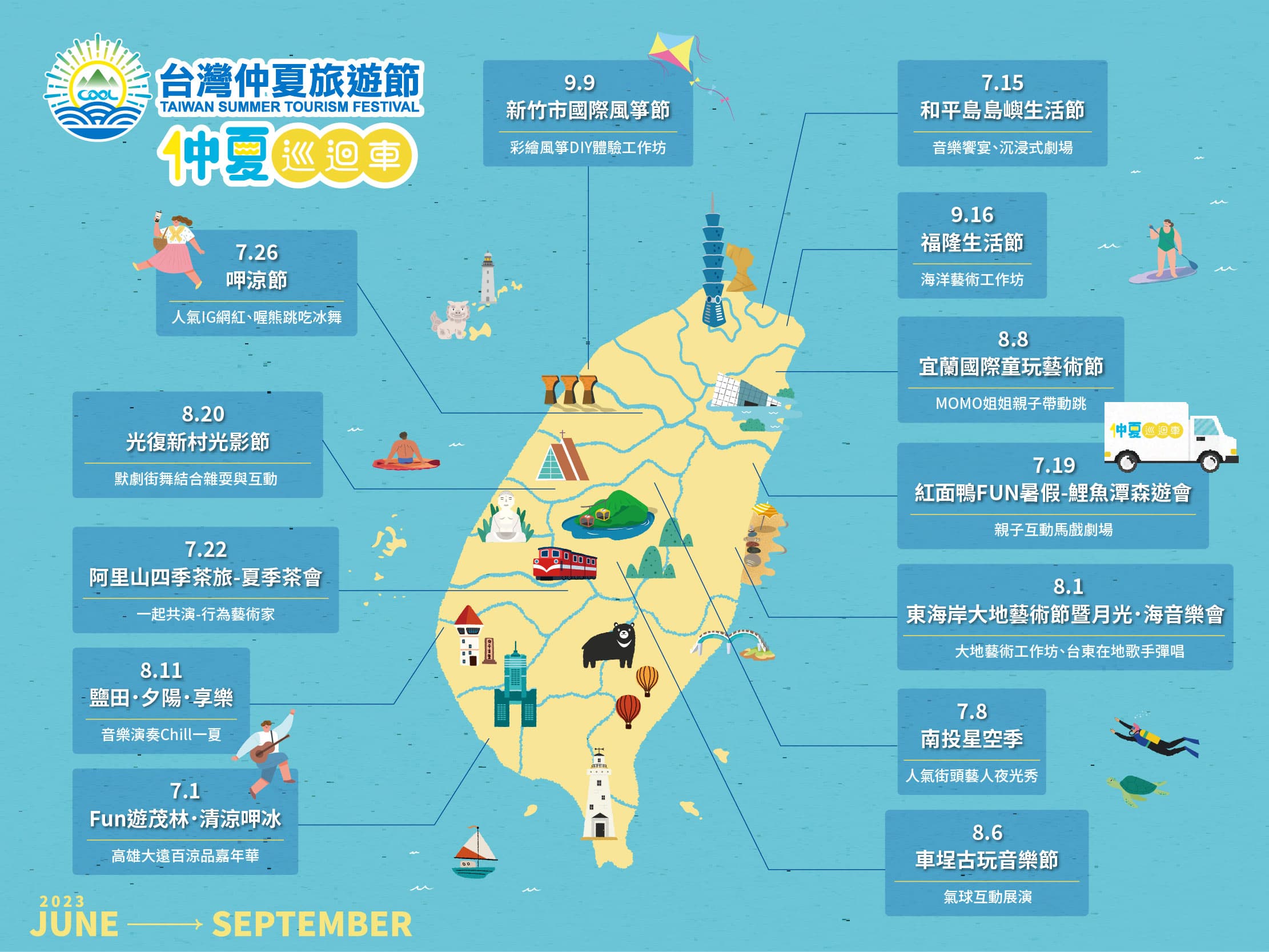
- WildChina’s Travelogue
- The China Travel Podcast
- Search All Journeys
- Expert-led Journeys
- Small Group Tours
- Mainland China
- Day Experiences
- Global Departures
- Beshan Website
- Education Programs
- Corporate Services
- Cultural Projects and Spaces
- How to Enter China in 2023
- WildChina Restaurant Guides
- A Guide to China’s Trains
- Travel Updates
- Booking Conditions
- Health and Safety
- Traveling to Tibet FAQ
- How Wild is WildChina?
- Award Winning Services
- Recognitions
- Our Leadership
- Our Designers
- Our Experts
- Work with Us
- Our Sustainability Position
- Plan your journey

Where to Travel in China in Summer
接天莲叶无穷碧,映日荷花别样红。杨万里
Green lotus leaves outspread as far as boundless sky; Pink lotus blossoms take from sunshine a new dye.
This verse from Yang Wanli, a renowned poet from the Southern Song dynasty (around the twelfth century), aptly captures how summer is typically imagined in the eastern part of China, but the country’s vast western provinces—Sichuan, Gansu, Yunnan, and Tibet—boast wildly varied and, temperature-wise, pleasantly cooler ways to spend your summer days.
That being said, the lotus bloom is surely a spectacle to behold, but Yang Wanli probably didn’t have the time or the vision to go to China’s wilder west where grasslands roll on for miles in each direction, dotted only by the occasional colorful Tibetan homes.
Imagine camping Tibetan-nomad style in Gansu, surrounded by green, expansive fields. Or, embarking on an expedition to Tibet, admiring Lhasa’s mighty Potala Palace against a blue summer sky on the roof of the world. For food lovers, why not set out on a culinary discovery in Yunnan, trying local ham, cheese, and summer mushrooms? For modern-day explorers, trek along ancient trade routes, tracing the steps of merchants and monks of the past in Yunnan and Gansu.
While summer is the busiest travel season in China, those who choose to travel during this period should expect company, but that doesn’t mean a wonderful journey in the Middle Kingdom isn’t still possible.
Thanks to the high altitude, June feels more like late spring than summer in western Sichuan , offering the perfect weather to hike through its many natural wonders: verdant grasslands, turquoise alpine lakes, and snow-capped mountains. Plus, for those who stay a bit longer, into late June/early July, the 300-year-old horse racing festival held on the Longdeng Grassland is also a wonderful experience to enjoy.
In Yunnan , June kicks off the main mushroom season, especially for the coveted varieties of matsutake (known as songrong in Chinese) and termite mushroom. Don’t worry, the latter is named such only because termite nests provide the optimal conditions for its growth. The firm texture and meaty taste of the termite mushroom make for a perfectly aromatic stir-fry. Elsewhere in the Dali area rose petals are ripe for picking, waiting to be turned into a local specialty cake. Or, for a more savory option, witness how Shaxi cheesemakers produce a local variety, a remnant of Mongolian influences.

July & August
During peak summer, while the rest of the country melts away in the sweltering heat, sanctuary awaits in the Tibetan areas of Yunnan, Gansu, and Tibet. Widely considered the inspiration for the mythical Shangri-la , Yunnan is incredibly diverse, with more than 20 different ethnic groups calling the province home. Options range from spending time with local monks and villagers, savoring the slow pace of their lives, to immersing in a journey along the Ancient Tea and Horse Caravan Road connecting Southern Yunnan to Tibet.
In northern China, two drastically different landscapes await. In southern Gansu on the Tibetan Plateau, verdant fields stretch endlessly, punctuated by blooming summer flowers and resident wildlife. Outdoor enthusiasts can even experience camping with a Tibetan twist, at a site operated by local nomads. The rest of Gansu to the north contains important stops on the famed Silk Road , now replete with temples, tombs and, most notably, mysterious grottoes filled with Buddhist art, thought by many experts to represent the pinnacle of the artform in Chinese history.
Summer is also a great time to visit Tibet, especially the region’s far west , which is largely inaccessible during wintertime. To escape the crowds in Lhasa, we recommend hiking along ancient pilgrim trails and camping in the Tibetan wilderness, admiring the overlay of snow-capped mountains and isolated monasteries. For those lucky enough to visit in August, Sho Dun Festival should definitely be on the agenda.

If any of the above summer escapes take your fancy, get in touch with our team to start planning!
By Yang Xiong
More interesting reads

We’re on hand to help you get the information you need about travel in China, whenever you need it. We’re not robots; we’re real people, travel designers here to help you.
As COVID-19 restrictions and regulations change, we want to make sure that you can travel in a safe and responsible way. Let us know your China travel questions and, within one business day, we’ll personally get in touch via email, phone call, or WeChat (whichever method you’d prefer) to help you answer it.
Beijing Address:
803 Oriental Place, 9 East Dongfang Rd, Chaoyang District, Beijing, 100027
Shanghai Address:
A12, 3rd Floor, SIP, No. 1318, North Sichuan Road, Hongkou District, Shanghai
Chengdu Address:
26th Floor, No. 1-2 Hangkong Road, Wuhou District, Chengdu, Sichuan
Yangshuo Address:
No. 26 Furong Road, Yangshuo, Guangxi
+86 10 6465 6602
+1 888 902 8808 (Toll Free)
Where to fly on a budget this summer
Airfare experts share their forecasts for summer vacation destinations that won’t break your budget.

This summer is shaping up to be another scorcher , and the demand for summer travel is piping hot, too. If early 2024 trends are any indication of what’s to come, “it’s looking to be busier than 2023,” said Katy Nastro, spokesperson for the flight booking site Going . Recent airport passenger volume numbers have regularly exceeded last year and pre-pandemic levels.
Jeff Klee, CEO of CheapAir.com , says airline capacity has rebounded from pandemic complications, but strong travel demand means summer flight prices can be high, depending on when you’re hoping to go. Flying in June, July or early August will be more expensive than later in the season, according to the company’s summer forecast .
“And it’s not just the airfare,” Klee said in an email. “Expensive hotel rates and crowds everywhere make Western Europe tricky for the summer.”
Despite the price tag, “people are going to go,” said Melanie Fish, the head of global public relations for all Expedia Brands, including Vrbo, Expedia and Hotels.com . “When we look at searches for destinations, they are definitely up year over year.”
For popular destinations like Europe , Klee and Fish say to push trips later into August, September or even October. Not only will prices soften, but you’ll alleviate some of the strain of overtourism .
“My number one tip is go ahead and take that summer vacation, but maybe hold on to take that big, big trip in September,” Fish said.
According to Expedia’s summer 2024 travel outlook , we’re currently in the sweet spot for shopping for early summer flights at the best rates, as Fish says lower fares tend to pop up 21 to 60 days out. It doesn’t hurt to start your search even earlier, setting up price alerts to flag when airfare drops. If you can swing it, look to fly on a Monday for international trips or a Tuesday for domestic trips to save up to 15 percent on fares, Fish added.
It’s not impossible to find good deals on airfare, whether you’re looking for a tropical beach trip , a mountain adventure or a vibrant city. Here are places that are trending cheaper — and the destinations you’ll want to avoid.
Go to Mexico
Sun, surf, culture, chilaquiles — Mexico is always a good idea , but particularly so this summer. With the opening of the new airport in Tulum , U.S. airlines have been adding gobs of new flights to Mexico, particularly to beach regions. “We’ve seen a healthy amount of deals down to Mexico resort areas like Cancún,” Nastro said.
Laura Lindsay, global travel trends expert at Skyscanner , says three Mexican cities — Cancún, San José del Cabo and Puerto Vallarta — are among the top 10 destinations offering travelers the best bang for their buck in 2024.
To escape the summer heat, Phyllis Stoller, president of the Women’s Travel Group , recommends high-altitude destinations like Mexico City or Ixtapan de la Sal, a town near Mexico City with thermal springs.
Avoid European port cities
If you’re considering a visit to a popular European city that’s also a cruise hub, beware. Not only will you be battling the usual summer crowds, you’ll be joined by thousands of day-trippers flooding into the ports — meaning Barcelona, Venice , Athens and Santorini.
Sandra Weinacht, who co-owns the tour company Inside Europe Travel Experiences , says you can avoid some of the madness in these hot spots by staying in neighborhoods away from the typical tourist zones. You can also visit top sites in the late afternoon or evening, after cruise travelers have returned to their ships.
Better yet, wait to visit until the shoulder season
Go to Colorado
Epic hiking, breathtaking nature and more craft beer than you could ever try in a lifetime: The Centennial State is a domestic gem. Ashlee Collins of Inspirato , a luxury travel and lifestyle subscription service, says Vail is popular among members this summer. Not only is the ski resort beautiful sans snow, it’s drivable for many, cutting a significant cost for travelers.
Airfare to Colorado is looking more reasonable than other domestic vacation hubs. Nastro recently spotted a Miami-to-Denver, round-trip fare over the July Fourth holiday for just $199. She says an average round trip from major U.S. cities is running between $173 and $250, but those prices are expected to climb upward of $350 the closer we get to summer.
Avoid places at risk for wildfires
Wildfires have become an unfortunate fixture of summers in the Northern Hemisphere. Last year’s fires in Europe — including those in Cyprus and Greece — were among the worst so far this century, the European Commission reported .
Stoller says fire risk has been a factor in her summer travel planning; she nixed a New England cruise after remembering how bad smoke was last year because of the fires in Canada . “None of us can predict everything, but that would be something I would be aware of,” she said.
Extreme heat is also an issue. Last July, Southern Europe experienced excessively high temperatures from a “heat dome.”
“There’s a concern about heat,” Stoller said. “Last summer was really painful.”
Go to the Caribbean
The Caribbean has its peak tourist season during the winter, when Americans flock to warmer waters. That means summer trips to the region tend to be quieter and cheaper.
“You can go under $300 to pretty much all of the islands: Puerto Rico, Jamaica, Aruba, Dominican Republic,” said Lindsay Schwimer, a consumer travel expert at Hopper . She’s seen similar price point flights to Colombia.
Lindsay of Skyscanner also said Puerto Rico and the Bahamas offer some of the most affordable flights from the United States this summer.
Avoid Paris
Unless you’re going for the Olympics , skip the French capital this summer.
“Paris is always a top destination in the summer, but this summer … it’s going to be on another level,” said Madison Pietrowski, head of U.S. brand at GetYourGuide .
Not only are hotel prices high, “we’re seeing that some of the top attractions like the Louvre have raised their ticket prices,” Pietrowski said.
Nastro says the crowds are going to be “bananas” during the Games, and not just in Paris. Olympic travelers are likely to add on other French destinations to their trip, like Nice — which will host soccer games — or the Côte d’Azur, which already gets popular in the summertime.
Even if you try to get ahead of the rush by visiting before the July 26 start date, you may still have some Olympics-related headaches in the French capital. As the city races to finish prep, “you might find that there’s going to be eyesores and scaffolding and loud noises early in the morning,” Nastro said.
Go to rural Europe
Interest in Western Europe has not slowed down, and Americans are expected to surge back en masse this summer. If you’d like to avoid them, put rural European destinations on your radar.
Weinacht is bullish on Spain’s Rioja region , the Basque countryside and the central Italian region of Umbria, which borders Tuscany but does not see the same levels of tourism. She’s also a fan of Carinthia, the least-populated state of Austria. “It is castle- and lake-dotted, doesn’t get too hot, and oh, the food and stories the cities and villages can tell,” Weinacht said in an email.
Weinacht says she’s been getting more requests from Americans for trips to her homeland, Germany. The country is easy to navigate with its high-speed trains, and offers a mix of small and big cities spread across powerhouse wine regions, UNESCO World Heritage sites and many food festivals . According to Skyscanner, airlines in the United States have been increasing their flights to Germany — namely, Frankfurt, an international business hub — meaning you may be able to find more deals.
Avoid Sicily and Amalfi
If your dream Italian destination has been featured on TV lately, that’s a red flag. The last season of “The White Lotus” spurred an interest in already popular Sicily ; the same is happening to the Amalfi Coast thanks to the new Netflix miniseries “Ripley.”
“They’re really going to be the most expensive and they’re going to be pretty crowded for the summer,” Schwimer said.
Where to go
Our favorite destinations: These 12 destinations are at the top of our wish list for where to go this year, without crowds. In 2023, we explored an Alaskan bear paradise, Brooklyn’s famous pizzerias and a hidden gem in Italy, among other highlights .
Travel like a local: Residents share their favorite places in our top city guides: New Orleans , Rome , Tokyo and Mexico City .
National parks: This comprehensive guide has details on all 63 U.S. national parks. For a deep dive into five of the most well-known, you can listen to the Field Trip podcast . Then explore tips from locals for visiting Yosemite , Glacier and Everglades .
Tales from the road: Dolly Parton has opened a new resort at her theme park complex in Tennessee, while “Fixer Upper” stars Chip and Joanna Gaines have a new hotel in Waco . Road-trippers may be just as excited to see the cartoon beaver at Buc-ee’s , and bargain-hunters should consider a stop at the Unclaimed Baggage store in Scottsboro, Ala.

What to know for booking summer travel: Expert tips on airfare, destinations and more
Where to score flight deals during the prime summer travel season.
As the surge of summer travel draws near, the race to book a great vacation is on.
"If you're looking to travel domestically within the U.S., I think you should be booking now for summer travel," Clint Henderson, travel expert and managing editor of The Points Guy, told "GMA."
Earlier this month while reporting quarterly earnings, Delta Airlines CEO Ed Bastian projected "record advance bookings for the summer," telling CNBC that the carrier's credit card data and bookings show customers are highly interested in air travel.
An increase in budget airline routes that has created more competition, paired with an easing of the post-pandemic revenge travel surge, means travelers could see more deals.
"Overall prices are down from where they were when we just had that boom out of the pandemic," Henderson said. "So things are more reasonable."
Hopper, the flight booking app, has shown predicted fares for flights to Europe will be down 10% in price from the same time last year.
Google recently announced its top 20 trending summer destinations , which saw a few newcomers on the list and Paris rose to the No. 2 spot.
With the Olympics taking place there from July 26 through Aug. 11, an uptick in airfare and hotel pricing is expected during the Games.
But those willing to wait out the Olympics could find big savings for flights to the host nation.
The Points Guy has featured deals from Atlanta, Dallas and Charlotte to Paris for as low as $515 from August through the fall.
Amsterdam, Prague, Spain and Iceland are among the most reasonably priced European destinations, as seen on Hopper.
Tips for booking summer travel
Don't forget to stay flexible with travel dates and keep midweek in mind for possibly lower fares.
There's also a time during the post-summer rush known as "shoulder season," between September and October, when fares could drop by as much as 30%.
When it comes to airfare purchase timing, the experts at The Points Guy have found prices dip eight to four weeks before the outbound flight, but after the one-month mark, prices will creep back up.
Top Stories

Secret Service prepares for if Trump is jailed for contempt in hush money case
- Apr 23, 4:16 PM

Airlines required to refund passengers for canceled, delayed flights
- 3 hours ago

Plastic bags from Walmart US recycling tracked to facilities in Southeast Asia
- Apr 23, 9:48 PM

Supreme Court to take up Trump claim of 'absolute immunity' from criminal prosecution
- Apr 24, 5:07 AM

Trump is unindicted co-conspirator in Michigan fake elector case, hearing reveals
Abc news live.
24/7 coverage of breaking news and live events
See which popular national parks are requiring reservations for summer 2024

Every year, it seems that more national parks are requiring timed-entry reservations . Sometimes, it’s just to drive into a park . Other times, it’s for specific, sought-after activities .
This summer is no different, with Mount Rainier and Yosemite joining the mix. The requirements add an extra step and expense for travelers, but they’re not meant to be a hurdle.
“The timed entry system reservation system is not to limit visitation but to spread it out more equitably throughout the day,” Mount Rainier National Park ranger Terry Wildly told USA TODAY in February.
In the past, she said visitors had to wait up to three hours just to enter the popular park, and some caused lasting damage to meadows when venturing off-trail to avoid crowds.
As Mount Rainier rolls out reservations this summer, here’s what other park visitors should know.
How many national parks have timed entry?
Only a fraction of America’s 63 national parks require timed-entry reservations or permits for particularly popular experiences. In most cases, they’re only for certain portions of the park during the busiest times of day.
◾ Acadia National Park will require timed-entry reservations for vehicle access to Cadillac Summit Road from May 24 through Oct. 22. There are two types of reservations, Sunrise and Daytime, with varying restrictions. Each reservation costs $6 per vehicle and may only be purchased online, not in the park. A separate $35 vehicle entry fee is also required for the park.
◾ Arches National Park requires timed-entry reservations for all vehicles entering the park between 7 a.m. and 4 p.m. through Oct. 31. Timed-entry tickets cost $2. A separate vehicle entry fee of $30 is also required.
◾ Glacier National Park will require timed-entry reservations for vehicles accessing North Fork and Going-to-the-Sun Road from the West Entrance between 6 a.m. and 3 p.m. from May 24 through Sept. 8. Reservations will not be required for vehicles entering Going-to-the-Sun Road from the St. Mary Entrance nor will they be required for Two Medicine, like they were last year. However, they will still be required for Many Glacier between 6 a.m. and 3 p.m from July 1 through Sept. 8. Each type of reservation costs $2. A separate $35 vehicle entry fee is also required for the park.
◾ Haleakalā National Park requires reservations year-round for visitors who want to watch sunrise from the summit. Summit sunrise reservations cost $1 and are required for every vehicle entering the park between 3 a.m. and 7 a.m. A separate $30 vehicle entry fee is also required for the park.
◾ Mount Rainier Natonal Park , for the first time, will require timed-entry reservations for two of its most popular areas: Paradise Corridor from May 24 through Sept. 2 and Sunrise Corridor between July 3 and Sept. 2. Reservations will only be needed between 7 a.m. and 3 p.m. Each type of reservation will cost $2. A separate $30 vehicle entry fee is also required for the park.
◾ Rocky Mountain National Park will require timed-entry reservations to access most roads between 9 a.m. and 2 p.m. from May 24 through Oct. 14. Visitors who also want to access the park’s busy Bear Lake Road will need a specific type of reservation, Timed Entry+, between 5 a.m. and 6 p.m. from May 24 through Oct. 20. Timed Entry+ covers all park roads. Both types of reservations cost $2.
◾ Shenandoah National Park requires day-use tickets to hike Old Rag Mountain through Nov. 30. Tickets cost $2 per person and can be reserved 30 to 5 days in advance. The day-use tickets are separate from the park’s $30 vehicle entry fee .
◾ Yosemite National Park now requires reservations for vehicles entering the park between 5 a.m. and 4 p.m. on certain days. Through June 30 and between Aug. 17 and Oct. 27, they’ll only be required on weekends and holidays. But they’ll be required every day from July 1 through Aug. 16. Peak hour reservations cost $2, on top of the $35 vehicle entry fee for the park.
◾ Zion National Park is continuing to pilot its permit system for its popular Angels Landing hiking trail. Permits can be obtained through a seasonal lottery or daily lottery on Recreation.gov. Lottery registrations costs $6 for up to 6 people for each lottery. Permits cost $3 per person. That’s on top of the $35 vehicle entry fee for the park.
When can I make park reservations?
Dates vary by park, but all national parks book reservations through Recreation.gov .
The great outdoors next door: Hot to find hiking, camping, more near you
Which national parks in Utah require reservations?
Of Utah’s “ Mighty 5 ” national parks, only Arches requires reservations for park entry.
Do you need reservations to get into Zion National Park?
No. Reservations are not required to enter Zion, just permits to hike Angels Landing.
Can I get into RMNP without a timed entry?
Yes. Rocky Mountain National Park’s timed-entry requirements don’t begin until May 24. Even after that, reservations will only be required during peak hours.
Are reservations required for Yellowstone?
No. Yellowstone does not require timed-entry reservations. However, permits are required for specific recreational activities , such as backcountry camping and boating.
Breeze adds new summer flight to Myrtle Beach from Akron-Canton Airport
- Published: Apr. 24, 2024, 10:10 a.m.

Breeze Airways will fly from Akron-Canton to Myrtle Beach starting in June.
- Susan Glaser, cleveland.com
GREEN, Ohio – Breeze Airways is adding a 10th destination from the Akron-Canton Airport, a summer-only flight to Myrtle Beach, South Carolina.
The new flight will operate twice a week, on Wednesdays and Saturdays, starting June 22.
One-way fares on the new route start at $39, if purchased by April 30.
Breeze will have some competition on the route, as Allegiant Air already flies from Akron-Canton to Myrtle Beach.
The new destination is Breeze’s 10th from the Akron-Canton Airport. Nonstop service to Los Angeles International Airport starts next month.
The carrier also flies from Akron-Canton to Charleston, South Carolina; Norfolk, Virginia; Las Vegas and several cities in Florida.
The new route departs CAK at 5 p.m., arriving in Myrtle Beach at 6:40 p.m. The return flight leaves Myrtle Beach at 2:40 p.m. and arrives at Akron-Canton at 4:25 p.m.
Earlier this month, the upstart carrier announced that it experienced its first profitable month , in March 2024.
Breeze, which started flying in 2021, was founded by David Neeleman, who also started JetBlue and several other airlines. “Starting an airline is not for the faint of heart but we have remained true to our purpose – to give millions of travelers in underserved markets access to efficient and affordable air travel,” Neeleman said in a statement earlier this month.
In addition to the new route, Breeze announced a summer sale, offering 35% off the base fare of round-trip flights between April 24 and October 10, if purchased by April 25 (use code “snapshot”). For more information: flybreeze.com
Start-up Breeze Airways, now a major player in Northeast Ohio market, will become Akron-Canton’s largest carrier this year
If you purchase a product or register for an account through a link on our site, we may receive compensation. By using this site, you consent to our User Agreement and agree that your clicks, interactions, and personal information may be collected, recorded, and/or stored by us and social media and other third-party partners in accordance with our Privacy Policy.
- Weird But True
- Sex & Relationships
- Viral Trends
- Human Interest
- Fashion & Beauty
- Food & Drink
trending now in Lifestyle

Dear Abby: I am attracted to my husband's married friend -- I'm...

I have a foot-long penis — it's so monstrous, I was barred from...

Move over! New Yorkers sound off on sidewalk etiquette — here's...

If you forget your phone charger, here's the easiest hack for any...

I'm a fitness coach — here are the 3 foods I eat every day

I'm the 'Girthmasterr' — my massive penis earns me $80K a month...

Popular snacks could be banned in certain states over cancer fears

People say us millennials have bad manners, but can we talk about...
The majority of us travelers plan to do a road trip this summer: survey.
- View Author Archive
- Get author RSS feed
Thanks for contacting us. We've received your submission.
Travel experts at The Vacationer released their 2024 summer travel survey results this week, giving an overview of what travelers can expect this summer season beginning on Memorial Day weekend.
The anonymous survey asked more than 1,000 American adults if and how they plan to travel this summer. Mathematics professor Eric Jones of Rowan College, South Jersey, analyzed the results.
According to the survey, nearly 82% of Americans plan to travel this summer, which could be more than 212 million adults throughout the season.
This number is down from summer 2023, with 3% fewer people intending to travel at least once this summer.
While nearly 52%, or 132 million Americans, said they would fly this summer, air travelers are down compared to last summer, when 54% intended to fly at least once.
According to The Points Guy, airline passengers could be in for another busy summer travel season in the U.S. and internationally. Experts also don’t expect fairs to drop significantly compared to last summer.

The average domestic airfare for June will cost about $303, with round-trip routes trending lower for July and August, according to The Points Guy.
According to The Vacationer survey, the most popular method of travel is by road. Seventy-five percent of Americans intend to take at least one road trip this summer, most driving somewhere within 100 miles of their home.
Keep up with today's most important news
Stay up on the very latest with Evening Update.
Thanks for signing up!
Please provide a valid email address.
By clicking above you agree to the Terms of Use and Privacy Policy .
Never miss a story.
Less than 21% will stick to a destination within 250 miles from home, and 5.8% will drive more than 1,000 miles from home.
How much road trip travelers pay at the gas pump this summer remains to be seen.
According to AAA, the increasing gas prices may be about to stall – at least for a little while. The national average for a gallon of gas is $3.67, about two months ahead of Memorial Day weekend, when the summer travel season begins.
“The situation overseas with war in both the Middle East and Ukraine has the oil market on edge,” AAA Andrew Gross spokesperson said. “But this is also the time of year we may see a bit of a lull in gasoline demand between the end of spring breaks and ahead of Memorial Day. So the national average for gas may waffle a bit with small increases, some flat days, and even some price dips.”
Share this article:
Advertisement
How the House Voted on Foreign Aid to Ukraine, Israel and Taiwan
By Catie Edmondson , Martín González Gómez , Kayla Guo , Robert Jimison , Albert Sun and Karen Yourish
Votes on the Foreign Aid Bills
Source: Office of the Clerk, U.S. House of Representatives
The House passed a long-stalled foreign aid package on Saturday that gives funding to Ukraine, Israel and Taiwan, with a majority of lawmakers backing money for American allies across the globe. The package, which now goes to the Senate, is almost certain to become law.
The Senate passed similar legislation in February. But in the face of distinct bases of opposition to different elements of the legislation, which threatened to tank the package as a whole, Speaker Mike Johnson advanced the foreign aid using a convoluted strategy: It split the package into three parts, each of which received its own vote, added a fourth bill with Republican priorities as a sweetener and melded it all together again once everything passed.
The plan, laid out in a rule that passed on Friday, was concocted to capitalize on the pools of support for each part of the $95 billion package, while preventing opposition to any one piece from taking down all of them.
How Different Factions Voted
Note: Progressive Democrats are members of the House Progressive Caucus. Hard-right Republicans include members who were supported by the House Freedom Fund during the 2022 midterms, opposed Kevin McCarthy’s election as speaker in January 2023, or voted to oust Mr. McCarthy from the speakership last October. The fund is the campaign arm of the House Freedom Caucus, a hard-right faction founded in 2015.
A majority of Republicans voted against Ukraine aid on Saturday, in a reflection of the stiff resistance within the G.O.P. to continuing to aid Ukraine against President Vladimir V. Putin of Russia’s invasion. The coalition that voted against the bill extended from right-wing members of the House Freedom Caucus to leadership, such as Representative Elise Stefanik of New York, the No. 3 House Republican. On Israel aid, on the other hand, most Republicans voted “yes.”
Thirty-four right-wing Republicans also opposed aid to American allies in the Indo-Pacific, while Representative Rashida Tlaib, Democrat of Michigan, declined to take a yes-or-no position and voted “present.” Representative Bob Good, Republican of Virginia and the chair of the House Freedom Caucus, was one of the 21 members of his party who voted against the Israel package. Echoing one of the many grievances shared by hard-right Republicans who opposed all of the aid measures, Mr. Good said his support for “Israel’s right to defend itself remains unshakeable” but that he disagreed with a measure that would add to the nation’s debt.
While all Democrats voted in favor of aid to Ukraine and all but Ms. Tlaib supported funding to Taiwan, 37 left-leaning Democrats defected to vote against the Israel aid bill. They said before the vote that they opposed unfettered aid to Israel that could be used in its offensive in Gaza. The opposition to the Israel aid represented a minority of Democrats, but reflected the deep resistance to unconditional aid and the divisions in the party on Gaza. Representative Jamie Raskin of Maryland represented a notable new “no” vote among Democrats, and other standouts included Representatives Donald S. Beyer Jr. of Virginia, Earl Blumenauer of Oregon and John Garamendi of California.
Still, 37 “no” votes, while a break from Washington’s ironclad support for the Jewish state, fell short of the opposition bloc progressives had hoped to muster. Thirty-nine Democrats had voted “no” on Friday on the rule to allow the foreign aid package to come to the House floor, a target that progressives just missed on Saturday on the Israel bill. Fourteen of those Democrats voted on Saturday in favor of aid to Israel, while 12 Democrats who voted to allow the package on the floor on Friday then cast votes against the funding itself.
Twenty-five Republicans voted against the fourth bill, which included measures that could lead to a ban on TikTok in the United States and that would redirect funds from seized Russian assets to help aid Ukraine. Democrats put up a big vote — 174 — in favor of this bill, which was intended to sweeten the overall package for conservatives.
How Every Member Voted
An earlier version of this article incorrectly identified the political party of a group of representatives who notably voted “no” on new aid for Israel. They are Democrats, not Republicans.
- Share full article
Our Coverage of the War in Ukraine
News and Analysis
For residents of Ukraine’s second-largest city, daily Russian attacks have escalated fears but have not brought life to a standstill. Here’s how a battered city carries on.
The authorities in Poland and Germany have arrested at least five of their citizens and accused them of spying for Russia or of offering to help Moscow commit violence on European soil, including a “possible attack” on the president of Ukraine, Volodymyr Zelensky.
The drone combat in Ukraine that is transforming modern warfare has begun taking a deadly toll on one of the most powerful symbols of American military might — the tank — and threatening to rewrite how it will be used in future conflicts.
Resuming U.S. Military Aid: Weapons from the support package, considered “a lifeline” for Ukraine’s military , could be arriving on the battlefield within days . But experts say it could take weeks before there is a direct impact on the war . What would $60 billion buy ?
World Military Spending: The world spent more on military costs and weapons in 2023 than it had in 35 years, driven in part by the war in Ukraine and the threat of an expanded Russian invasion, according to an independent analysis.
New American Technology: Project Maven was meant to revolutionize modern warfare. But the conflict in Ukraine has underscored how difficult it is to get 21st-century data into 19th-century trenches.
How We Verify Our Reporting
Our team of visual journalists analyzes satellite images, photographs , videos and radio transmissions to independently confirm troop movements and other details.
We monitor and authenticate reports on social media, corroborating these with eyewitness accounts and interviews. Read more about our reporting efforts .

IMAGES
VIDEO
COMMENTS
Go River Tracing on the East Coast. Taiwan's stunning east coast is a mecca for thrill-seekers, offering everything from paragliding and hiking in Taroko Gorge to river rafting, SUP, and gorgeous cycling routes for more adventurous travelers. However, one of the best outdoor activities here in summer is river tracing.
If you'd like to avoid the crowds, you can try heading to more secluded beaches such as Baisha Beach or Nanwan Beach. Do note that June to October is Taiwan's typhoon season, and the beaches might be closed when the waves are too strong. 2. Feast on summer fruits at a night market.
For a 7-day Taiwan itinerary, I'd suggest the following: Day 1-2: Taipei. Day 3: make a day trip from Taipei (such as Beitou, Tamsui, Wulai, Maokong or Thousand Island Lake and the Shiding tea township) Day 4: travel to Sun Moon Lake. Day 5: explore Sun Moon Lake and travel to Taichung ( book HSR tickets with a discount here) Day 6: Taichung.
One great thing about summer in Taiwan is the plethora of beaches, water-based activities, and summer-related festivals. If you enjoy tropical heat, you may love summer in Taiwan, but if you aren't used to the climate, traveling around in it can be exhausting. High mountain resorts like Alishan offer the perfect escape from the lowland heat.
Taiwan Travel Guide. Taiwan is one of the most underrated budget destinations in Asia. It offers a beautiful — and super affordable — mix of east and west, blending the culture and cuisines of mainland China, Japan, and Hong Kong. And all with a fraction of the crowds. I don't think enough people visit Taiwan.
Consider exploring Taiwan by bike - temperatures are cooler than in summer and the country's national parks explode with color. Spring is also a great time to visit Taiwan's tea plantations (oolong is the most common variety produced here), which are at their most lush. Top tea destinations in Taiwan include Chiayi, Miaoli and Taoyuan ...
Located on the north side of the pond is the Kaohsiung Confucius Temple - the largest Confucius temple in Taiwan, designed in the style of a Song Dynasty-era temple. After temple-hopping, visit the romantic Love River and indulge in street eats at the Rueifong Night Market. 6. Yilan. Best place for quiet.
Pre-Trip Guide. Itinerary. Day 1 - Hitting The Ground Running in Taipei. Day 2 - Spirited Away. Day 3 - Winding Up To Alishan. Day 4 - The Almost Sunrise. Day 5 - Artsy Urban Kaohsiung. Day 6 - The Surf Challenge. Day 7 - Fly With The Wind.
It's a real sight to see and if you're lucky (and brave enough) you can go for a ride in one yourself. Taiwan International Balloon Festival, Lane 42, Gaotai Road, Luye Township, Taitung County, Taiwan,+886 8 932 4902. 2. Fulong Sand Sculpting Art Festival. Share. Add to Plan.
A Comprehensive Taiwan Travel Guide and Itinerary for First Timers. Reading Time: 13 minutes. Taiwan is a compact but extremely rewarding travel destination. This East Asian island country will tempt you with its welcoming people, track record for safety, convenient transportation, unbeatable street food, stunning natural scenery, and outdoors ...
Summer is, according to most people, the worst time to visit Taiwan. Summer temperatures and humidity are oppressive, making it difficult to spend much time outside. Taiwan is known for its summer typhoons, which can disrupt your travel plans for a few days (always make sure to have travel insurance for Taiwan just in case!) Summers are also ...
The summer weather in Taiwan is at its most extreme, with crushing heat, humidity, and a sprinkling of typhoons that wreak death and destruction on the island nation. Yet enduring a summer in Taiwan, along with its associated rituals (hitting the beach, gorging on shaved ice, jumping into rivers, visiting Taiwan's many water parks, getting ...
A packable rain jacket, umbrella, or waterproof poncho are a must-have for Taiwan travel! Despite the rain, summer is beach time in Taiwan. The warm season is ideal for beach hopping trips and relaxing island holidays. And if you're into watersports, this is the best time to travel to Taiwan. Visiting Taiwan in June — August
A 2024 Taiwan Travel Guide for Planning Your Trip. Last updated on Apr. 10, 2024 by Nick Kembel. Taiwan is a small island nation that packs a serious punch. At only 36,193 km², it is about the size of Vancouver Island in my native Canada, but home to a staggering 23.9 million people. Do not be fooled by its compact size, however.
Summer vacation is right around the corner! As a foreign student in Taiwan, you must be planning for your summer vacation while wondering how people survive the heat during the summer. I am a local Taiwanese and I am here to help you. Summer in Taiwan can get extremely hot, with temperatures usually rising to 40°C (104°F). As a result, local Taiwanese often choose to go to the mountains ...
Note: If you don't have time to read this full itinerary or prefer that your trip be planned for you, consider booking this 5-day guided tour of Taiwan instead. The tour includes visits to top destinations like Sun Moon Lake, Tainan, Kaohsiung, Kenting, Taitung, the East Coast, Taroko, and more.
The southernmost point of Taiwan. Scenic spots along the way: - Sail Rock, or a.k.a "Richard Nixon's Submerged Head" 船帆石 - Eluanbi Lighthouse 鵝鑾鼻燈塔 (Opening Hours: 8:30AM - 4PM; Admission: NT$40) - Taiwan Southernmost Point 台灣最南點 - Longpan Park 龍磐公園 - the southernmost point of Taiwan
Outerwear. Rain Jacket: It's inevitable that even if you choose the best time to visit Taiwan, you'll end up getting rained on.I'd also recommend stuffing an emergency rain jacket into your daypack to combat the possibility. For the hot & humid Taiwanese summer, something lightweight like the Outdoor Research Men's Helium II or Outdoor Research Women's Helium II will be perfect.
Weather: Spring is from March to May. In Taipei, the average high temperatures average about 25 degrees Celsius or 78 degrees Fahrenheit. Clothing: It generally feels warm during the day, and long-sleeve shirts are fine. Special seasonal highlights: Hiking in Taiwan's high mountains (about 240 mountains over 3,000 meters) is an option before ...
What to wear in Summer June, July, and August. Summer in Taiwan is normally hot, humid and rainy. On some days the heat can be harsh and sticky. Summer temperatures can range between 77-91 degrees Fahrenheit (25-33 degrees C). July and August usually being the hottest months of the year. Make sure you bring very light and breathable clothing.
Catch the bus to Alishan. The bus stop is on the other side of the railway (not on the side of the station and old street). There are only three buses scheduled at 11:30am, 12:50pm, 2:00pm. Travel time: 1 hour. Fare: NT$ TWD 98 (adult), TWD 49 (concession, child).
The 2023 Taiwan Midsummer Travel Festival presents the special Midsummer Tour Bus that will travel across the northern, central, southern, and eastern regions of Taiwan. It is divided into sections highlighting refreshing coolness and cool products to promote. It connects various features such as family, music, ocean, cool food, art, and ...
Thanks to the high altitude, June feels more like late spring than summer in western Sichuan, offering the perfect weather to hike through its many natural wonders: verdant grasslands, turquoise alpine lakes, and snow-capped mountains. Plus, for those who stay a bit longer, into late June/early July, the 300-year-old horse racing festival held ...
That means summer trips to the region tend to be quieter and cheaper. "You can go under $300 to pretty much all of the islands: Puerto Rico, Jamaica, Aruba, Dominican Republic," said Lindsay ...
Tips for booking summer travel. Don't forget to stay flexible with travel dates and keep midweek in mind for possibly lower fares. There's also a time during the post-summer rush known as ...
The day-use tickets are separate from the park's $30 vehicle entry fee. Yosemite National Park now requires reservations for vehicles entering the park between 5 a.m. and 4 p.m. on certain days ...
Susan Glaser, cleveland.com. GREEN, Ohio - Breeze Airways is adding a 10th destination from the Akron-Canton Airport, a summer-only flight to Myrtle Beach, South Carolina. The new flight will ...
Seventy-five percent of Americans intend to take at least one road trip this summer, most driving somewhere within 100 miles of their home. Less than 21% will stick to a destination within 250 ...
The House passed a long-stalled foreign aid package on Saturday that gives funding to Ukraine, Israel and Taiwan, with a majority of lawmakers backing money for American allies across the globe.